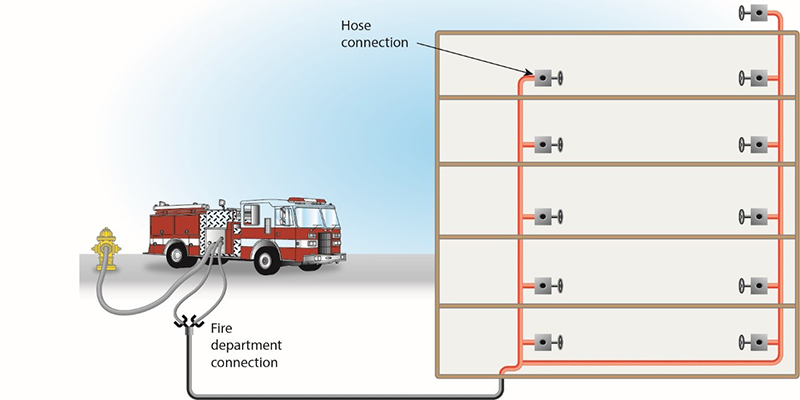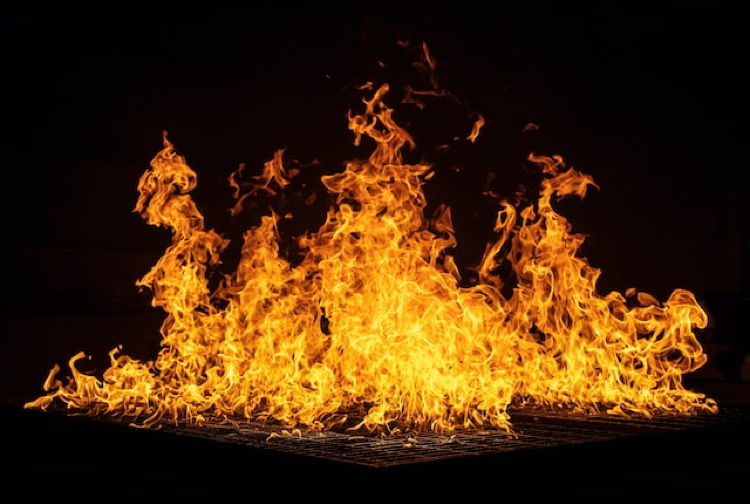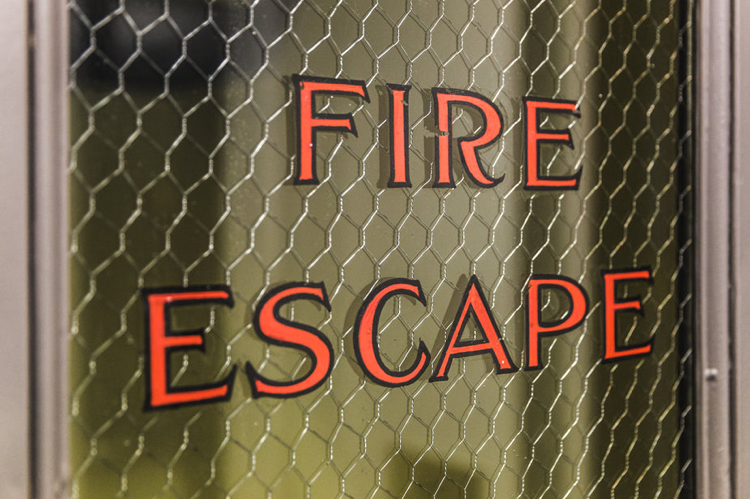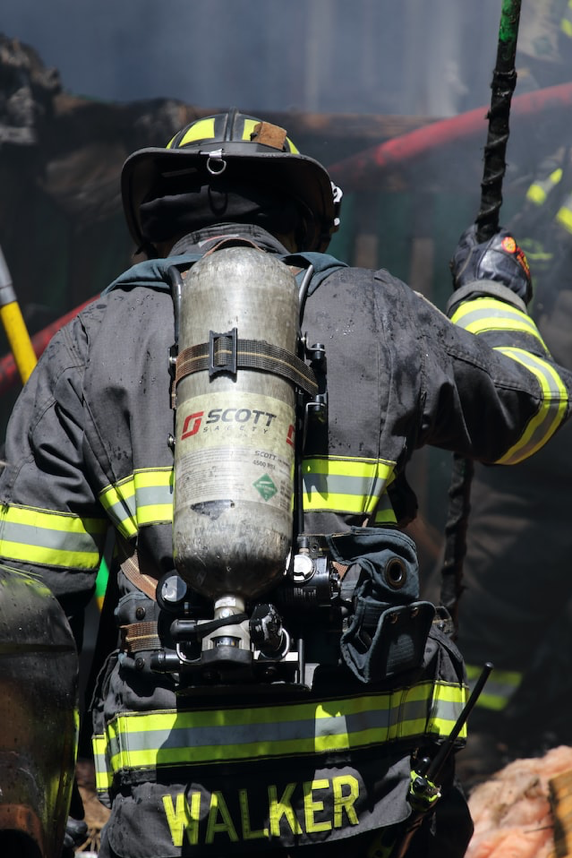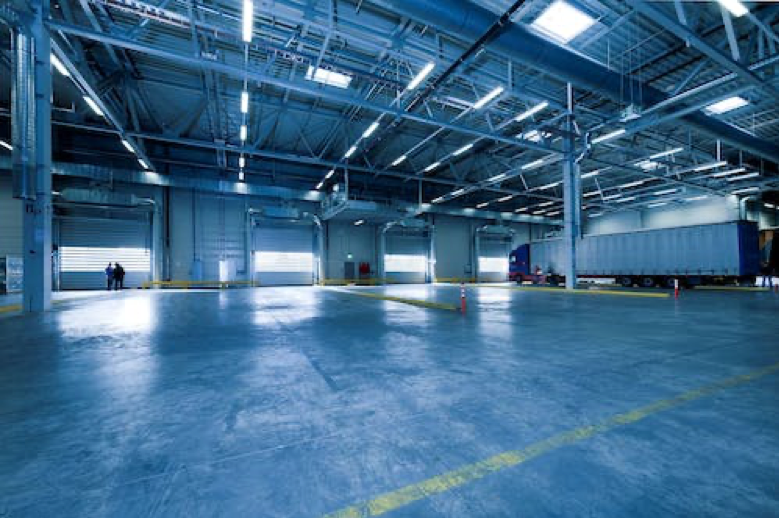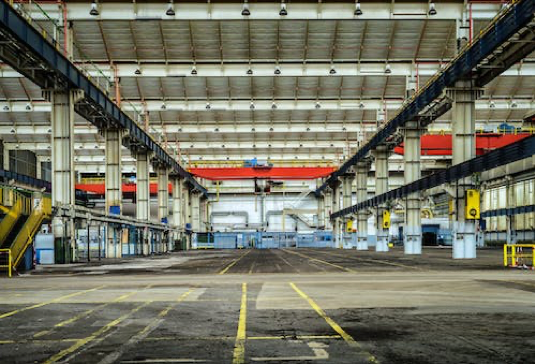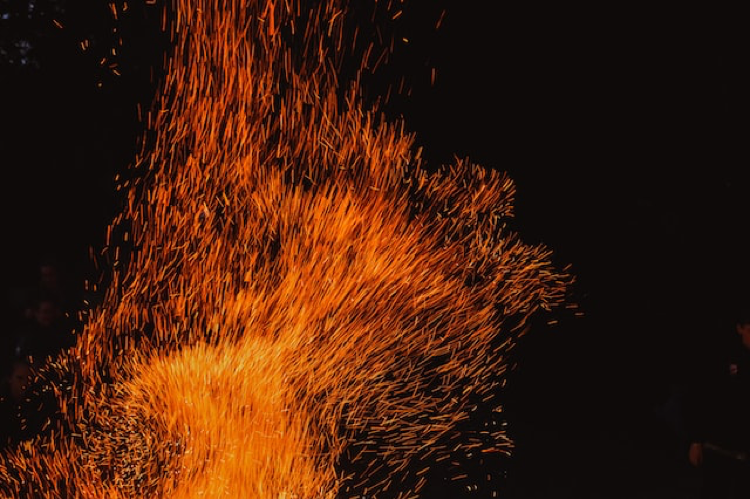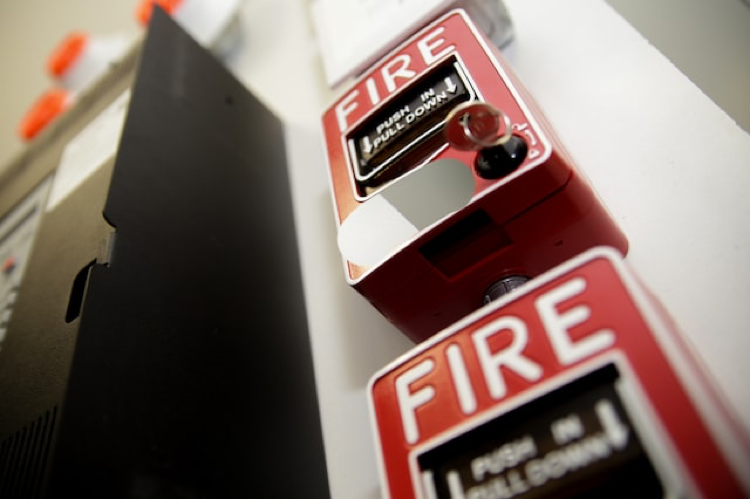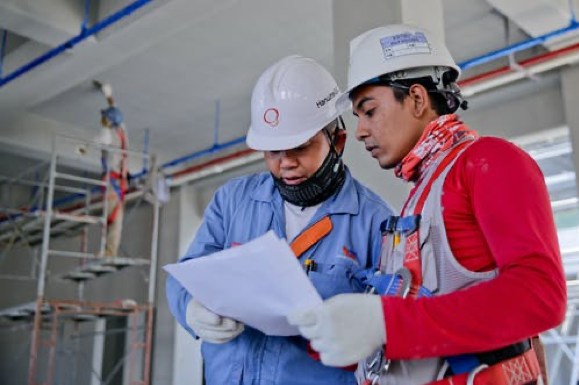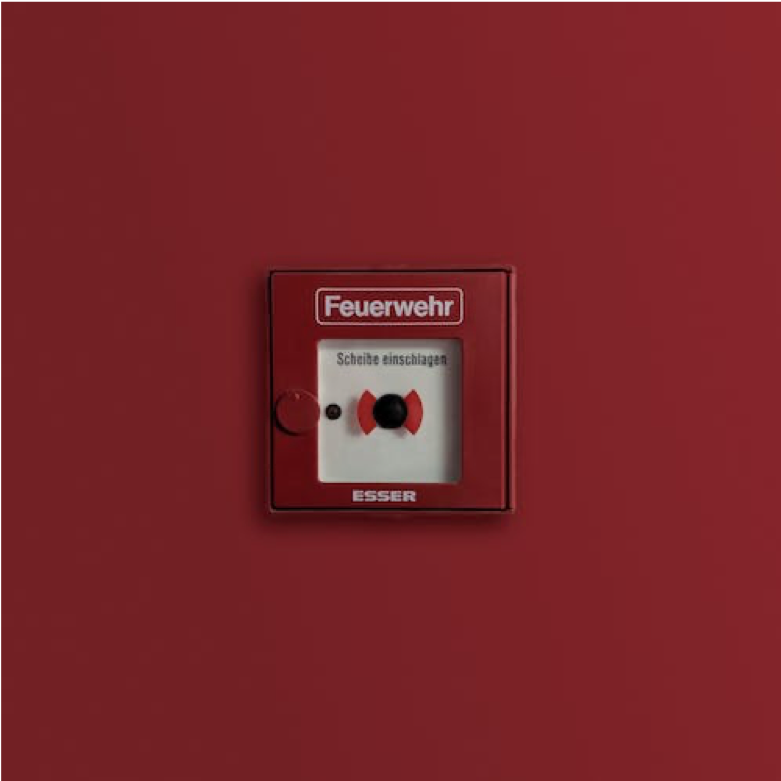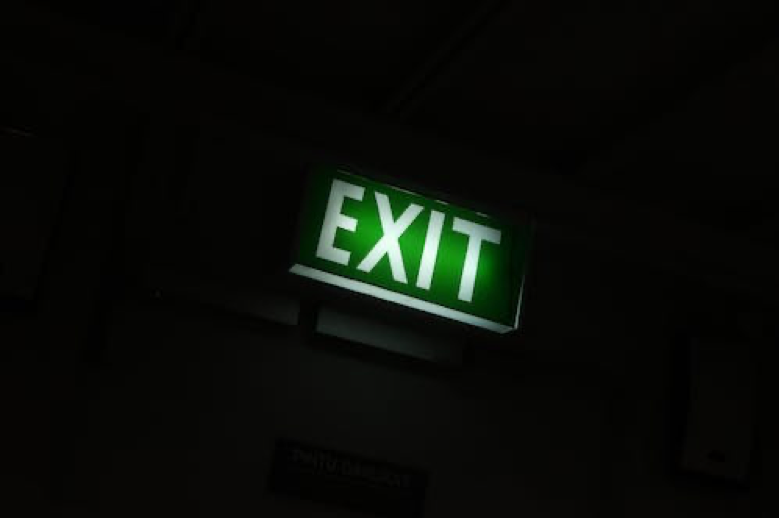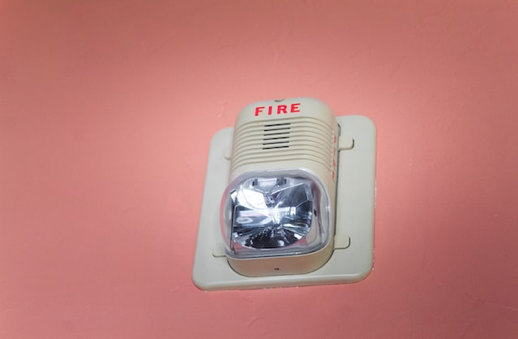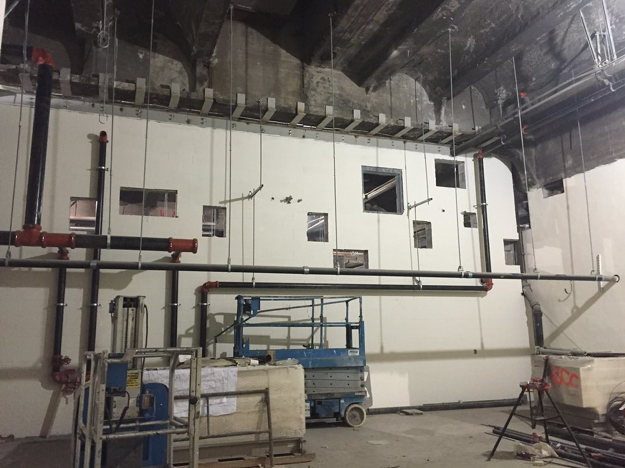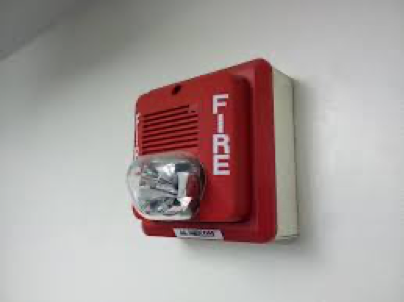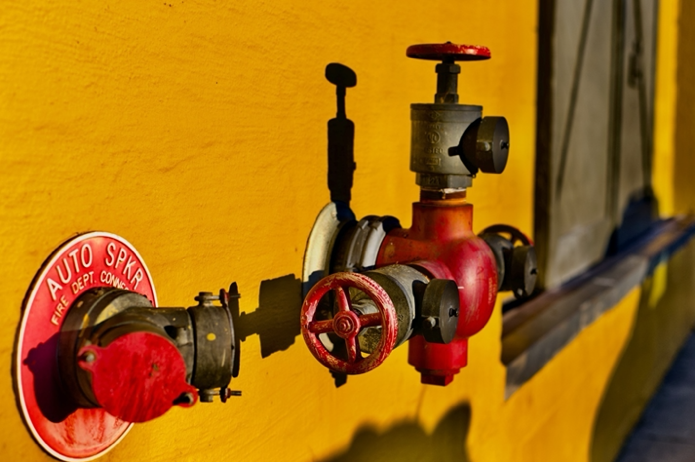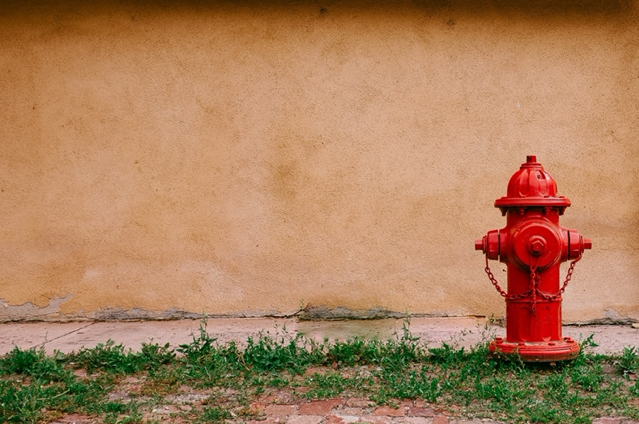Emerging Trends in Fire Safety Technology and Their Implications for System Design
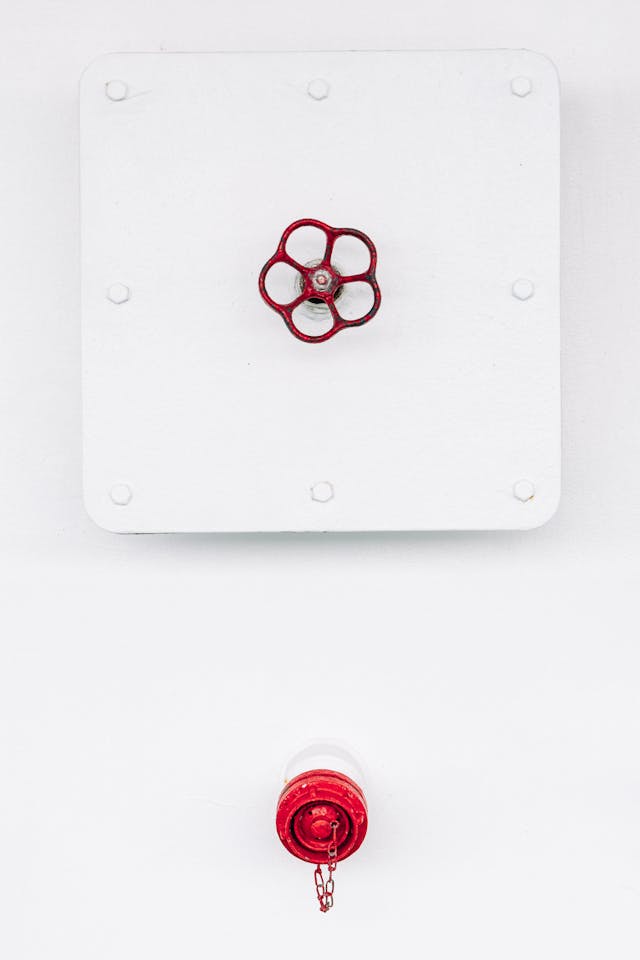
In this blog post, we will explore the latest trends in fire safety technology and discuss their implications for fire protection system design. Fire safety technology is continuously evolving, driven by advancements in science, engineering, and technology. These emerging trends are transforming how fire safety systems are designed, implemented, and managed.
Emerging Trends in Fire Safety Technology
Advanced Detection Systems
Smart Sensors
Smart sensors are revolutionizing fire detection by providing more accurate and timely alerts. Key features include:
- Ability to detect a range of fire indicators, including heat, smoke, and gases.
- Integration with building management systems for real-time monitoring and alerts.
- Reduction in false alarms, leading to more reliable fire response.
Multi-Criteria Detectors
Multi-criteria detectors combine multiple sensors to improve detection accuracy. Benefits include:
- Enhanced ability to distinguish between actual fires and non-threatening conditions.
- Improved response times by providing more detailed information about the fire.
- Integration with other building systems for a coordinated response.
Enhanced Suppression Technologies
Water Mist Systems
Water mist systems use fine droplets of water to suppress fires effectively. Advantages include:
- Efficient use of water, reducing water damage and consumption.
- Enhanced cooling effect, making them suitable for a variety of fire types.
- Safe for use around electrical equipment and sensitive areas.
Hybrid Fire Suppression Systems
Hybrid systems combine different suppression agents to provide comprehensive fire protection. Features include:
- Combining water mist with inert gases or foam for enhanced effectiveness.
- Tailored solutions for specific fire risks, such as data centers and industrial facilities.
- Improved adaptability to changing fire scenarios.
Integration with Smart Building Technology
IoT-Enabled Fire Safety Systems
The Internet of Things (IoT) is transforming fire safety by enabling interconnected devices and systems. Key benefits include:
- Real-time data collection and analysis for improved decision-making.
- Automated responses to fire incidents, such as shutting down HVAC systems and unlocking emergency exits.
- Remote monitoring and control of fire safety systems.
Building Management System Integration
Integrating fire safety systems with building management systems enhances overall safety and efficiency. Features include:
- Centralized control and monitoring of all building systems.
- Coordinated response to fire incidents, improving occupant safety.
- Energy efficiency improvements by optimizing system operations.
Eco-Friendly Fire Protection Solutions
Sustainable Materials
Using sustainable materials in fire protection systems helps reduce the environmental impact. Key considerations include:
- Choosing materials with a lower carbon footprint and longer lifespan.
- Utilizing recycled or recyclable components.
- Ensuring that materials do not release harmful substances during a fire.
Water and Energy Efficiency
Advancements in fire protection technology are focused on improving water and energy efficiency. Benefits include:
- Low-flow sprinkler heads that use less water while maintaining effectiveness.
- Energy-efficient fire pumps and control systems.
- Water recycling systems that reduce overall water consumption.
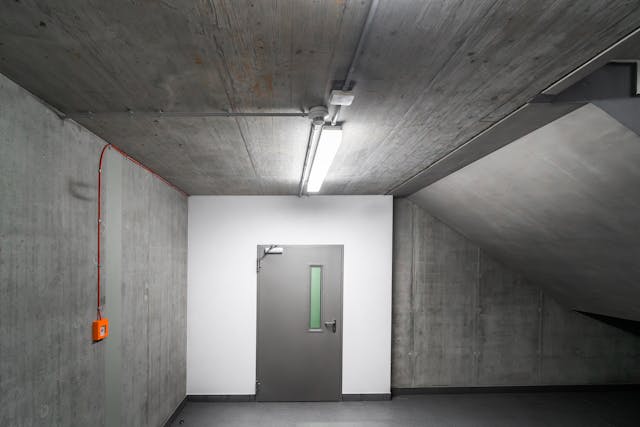
Implications for System Design
Customizable Solutions
The emergence of new technologies allows for more customizable fire protection solutions. Designers can now tailor systems to meet the specific needs of different environments. Benefits include:
- Enhanced protection for unique fire risks in various industries.
- Flexibility in system design to accommodate building-specific requirements.
- Improved scalability and adaptability to future changes.
Enhanced Reliability and Maintenance
Modern fire protection systems are designed with reliability and ease of maintenance in mind. Key advantages include:
- Reduced maintenance costs and downtime through advanced diagnostics and remote monitoring.
- Improved system reliability, ensuring optimal performance during emergencies.
- Proactive maintenance strategies enabled by real-time data and analytics.
Trends in Fire Safety Technology: Conclusion
The latest trends in fire safety technology are significantly enhancing the capabilities and effectiveness of fire protection systems. By embracing advanced detection systems, enhanced suppression technologies, integration with smart building technology, and eco-friendly solutions, fire protection system design is evolving to meet the demands of modern buildings and environments.
At F2M Fire & Drafting Designs Inc., we are at the forefront of these technological advancements, offering cutting-edge fire protection solutions tailored to your specific needs. Contact us today to learn how we can help you implement the latest fire safety technologies in your building.
F2M Fire & Drafting Designs Inc.
718-0928-3009
info@f2mfadds.com
Stay ahead of the curve with our expert fire protection system design and implementation services.
Fire Sprinkler Design & Maintenance Newsletter February 2025
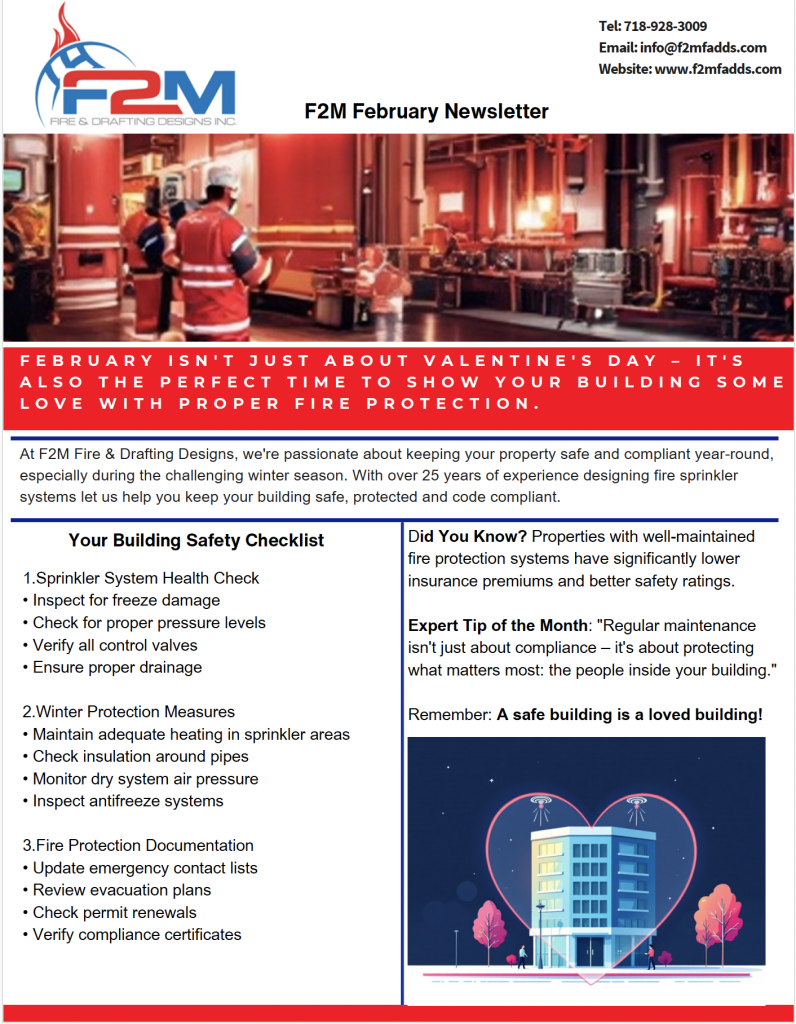
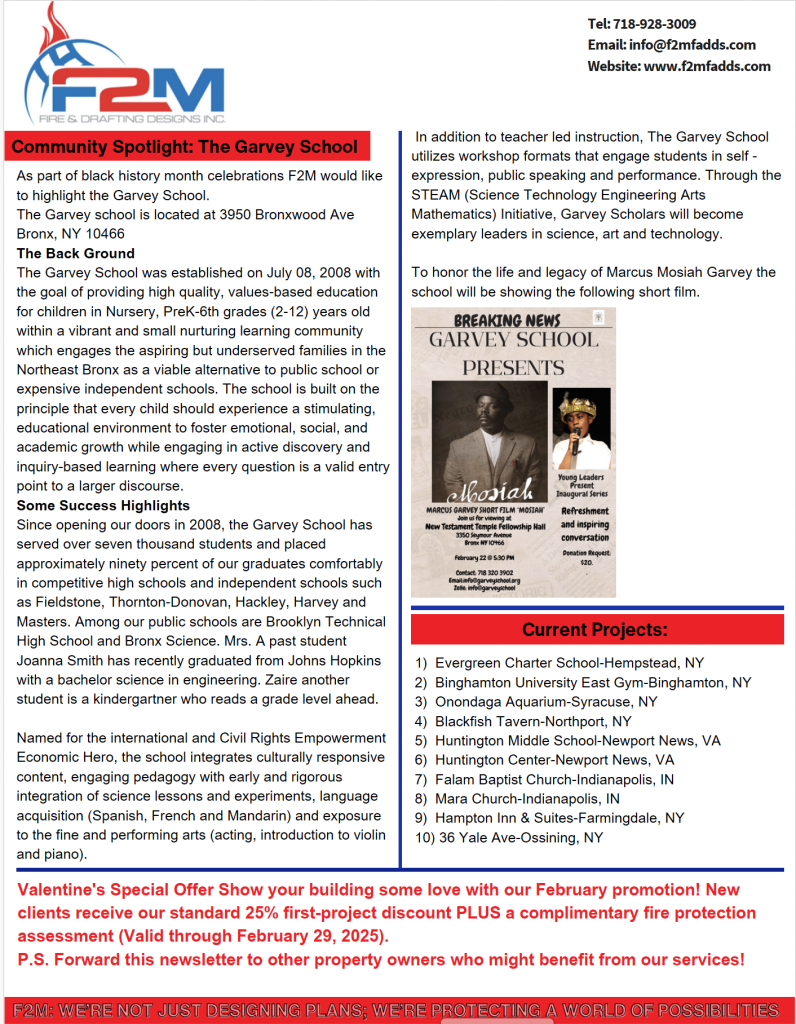
Download the PDF: F2M Fire Drafting Design February 2025 Newsletter
F2M Fire & Drafting Designs Inc.
31 South Street, Suite 3S-4
Mount Vernon, NY 10550
✆ (718) 928-3009
Email: info@f2mfadds.com
The Importance of Regular Fire Drills and Evacuation Planning
Regular fire drills and thorough evacuation planning are essential components of a comprehensive fire safety strategy. Ensuring the safety of occupants during a fire emergency requires more than just having fire suppression systems in place. In this blog post, we will discuss the importance of conducting regular fire drills and having a well-thought-out evacuation plan to ensure the safety of everyone in your building.
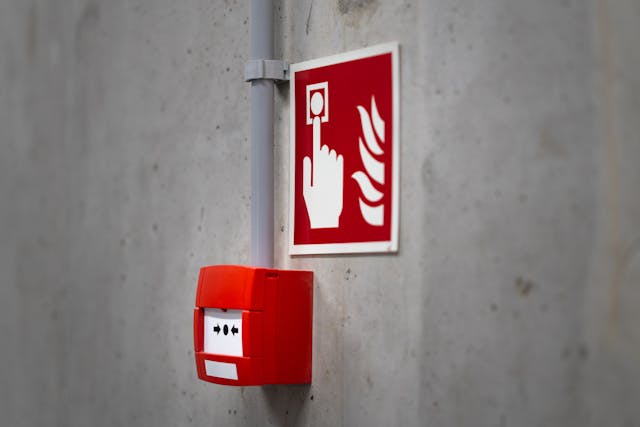
Benefits of Regular Fire Drills
Familiarization with Evacuation Routes
Regular fire drills help occupants become familiar with the designated evacuation routes and exits. Benefits include:
- Reducing confusion and panic during an actual fire emergency.
- Ensuring everyone knows the safest and quickest way to exit the building.
- Identifying any obstacles or issues with the evacuation routes.
Improving Response Times
Practicing fire drills helps improve the speed and efficiency of evacuations. Key advantages include:
- Reducing the time it takes for occupants to evacuate the building safely.
- Ensuring that everyone, including those with mobility challenges, can exit promptly.
- Allowing emergency response teams to refine their procedures and response times.
Testing Emergency Systems
Fire drills provide an opportunity to test and evaluate the functionality of emergency systems. Important aspects include:
- Ensuring that fire alarms and notification systems work correctly.
- Checking that emergency lighting and exit signs are operational.
- Verifying that fire doors and other safety features function as intended.
Key Elements of an Effective Evacuation Plan
Clear Evacuation Routes
A well-designed evacuation plan includes clearly marked evacuation routes. Key considerations include:
- Ensuring that routes are free of obstructions and easily accessible.
- Providing clear signage to guide occupants to the nearest exits.
- Designating primary and secondary evacuation routes in case of blockages.
Assembly Points
Designating safe assembly points outside the building is crucial for accounting for all occupants. Important factors include:
- Choosing assembly points that are a safe distance from the building.
- Ensuring that assembly points are easily accessible and not obstructed.
- Providing clear instructions on where occupants should go once they exit the building.
Roles and Responsibilities
An effective evacuation plan assigns specific roles and responsibilities to ensure an organized evacuation. Key roles include:
- Evacuation Coordinators: Individuals responsible for overseeing the evacuation and ensuring that all occupants are accounted for.
- Floor Wardens: Designated personnel on each floor to guide occupants to the exits and assist with evacuations.
- First Aid Responders: Trained individuals who can provide first aid to injured occupants.
Training and Education
Employee Training
Training employees on fire safety and evacuation procedures is essential for ensuring a safe and efficient response during an emergency. Training should cover:
- Recognizing the sound of the fire alarm and understanding its significance.
- Knowing the designated evacuation routes and assembly points.
- Understanding their roles and responsibilities during an evacuation.
Regular Fire Drills
Conducting regular fire drills reinforces the training and helps occupants become comfortable with the evacuation process. Best practices include:
- Scheduling fire drills at regular intervals to maintain preparedness.
- Evaluating the effectiveness of each drill and making necessary improvements.
- Incorporating feedback from employees to enhance the evacuation plan.
Compliance with Regulations
Meeting Safety Standards
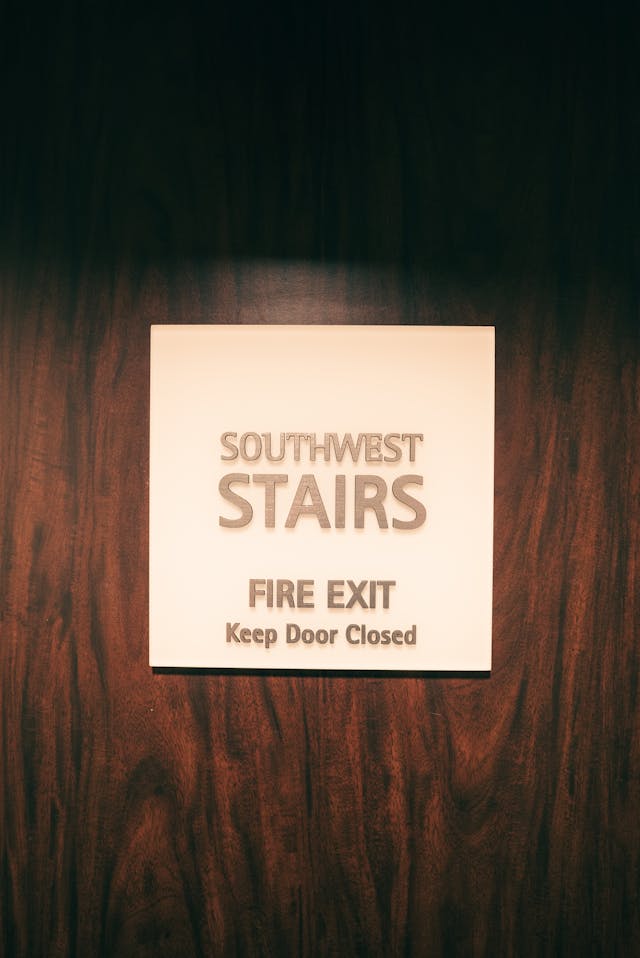 Regular fire drills and evacuation planning are often required by local fire safety codes and regulations. Compliance ensures:
Regular fire drills and evacuation planning are often required by local fire safety codes and regulations. Compliance ensures:
- Meeting legal requirements and avoiding fines or penalties.
- Ensuring that the building is prepared for a fire emergency.
- Providing peace of mind to occupants and building owners.
Documentation and Record Keeping
Maintaining records of fire drills and evacuation plans is essential for demonstrating compliance. Key steps include:
- Documenting the details of each fire drill, including the date, time, and any issues identified.
- Keeping records of employee training and education sessions.
- Ensuring that all documentation is easily accessible for regulatory inspections.
Fire Drills and Evacuation Planning: Conclusion
Regular fire drills and thorough evacuation planning are critical components of a comprehensive fire safety strategy. By ensuring that occupants are familiar with evacuation routes, improving response times, testing emergency systems, and complying with regulations, you can enhance the overall safety of your building.
At F2M Fire & Drafting Designs Inc., we specialize in helping businesses develop design fire sprinkler and emergency systems. Contact us today to schedule a consultation and ensure your building is prepared for any fire emergency.
F2M Fire & Drafting Designs Inc.
31 South Street, Suite 3S-4
Mount Vernon, NY 10550
718-928-3009
info@f2mfadds.com
Fire Sprinkler Design & Maintenance Newsletter January 2025
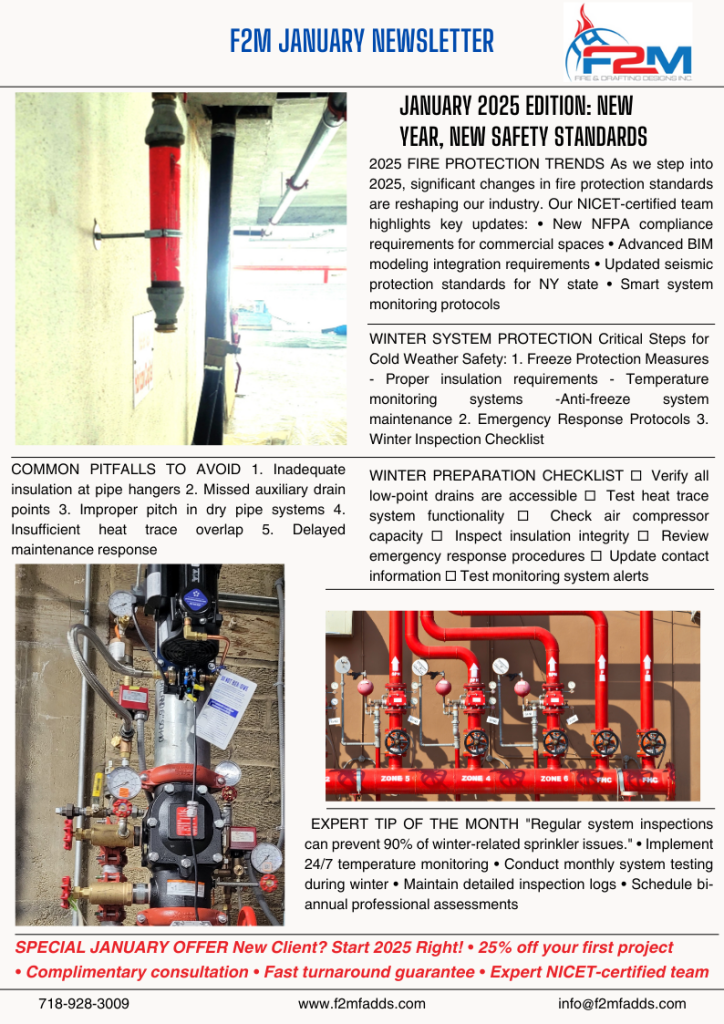
Inspections for Fire Sprinkler Systems in New York: Make Sure Your System is Up To Code
This blog post will guide you through the steps to prepare for inspections of fire sprinkler systems in New York. Fire inspections are crucial for ensuring that your fire sprinkler system is up to code and capable of protecting lives and property in the event of a fire. In New York, compliance with fire safety regulations is mandatory, and failing to meet these standards can result in fines, legal liabilities, and increased risk of fire-related incidents.
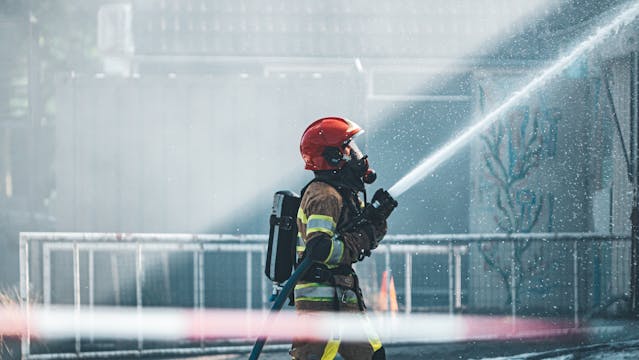
Fire Inspections for Fire Sprinkler Systems in New York: Understanding New York Fire Codes
New York City Fire Code
The New York City Fire Code sets forth the fire safety requirements for buildings and properties within the city. Key elements include:
- Specific requirements for the design, installation, and maintenance of fire sprinkler systems.
- Regular inspection and testing protocols to ensure system functionality.
- Compliance with the latest National Fire Protection Association (NFPA) standards.
New York State Fire Code
Outside of New York City, the New York State Fire Code provides guidelines for fire safety. Key points include:
- Adoption of NFPA standards for fire sprinkler system design and maintenance.
- Regular inspections and testing to ensure compliance with state regulations.
- Specific requirements for different types of properties, such as residential, commercial, and industrial buildings.
Preparing for a Fire Inspection
Regular Maintenance and Inspections
Routine maintenance and inspections are essential to ensure your fire sprinkler system is always ready for a fire inspection. Best practices include:
- Conducting monthly visual inspections to check for any visible damage or obstructions to sprinkler heads and piping.
- Performing quarterly system checks, including testing alarm valves, pressure gauges, and control valves.
- Scheduling annual professional inspections and testing of the entire system by certified professionals.
Testing the System
Regular testing ensures that your fire sprinkler system will function correctly during an emergency. Key tests include:
- Flow Testing: Verifying that the water pressure and flow rate are adequate for effective fire suppression.
- Alarm Testing: Ensuring that the fire alarm system activates correctly when the sprinkler system is triggered.
- Functional Testing: Checking the operation of control valves, switches, and other system components.
Documentation and Record Keeping
Maintaining Records
Detailed records of all inspections, tests, and maintenance activities are crucial for compliance and future reference. Key steps include:
- Documenting all inspections and maintenance activities, including the date, findings, and actions taken.
- Maintaining records of any repairs or replacements performed on the system.
- Ensuring that records are easily accessible for regulatory inspections and audits.
Compliance with Regulations
Ensure that your documentation complies with local and state regulations. This includes keeping records for a specified period and providing them to fire inspectors upon request.
Training and Preparedness
Employee Training
Training employees on fire safety practices is essential for ensuring a swift and effective response during an emergency. Training should cover:
- Proper use of fire extinguishers and other fire-fighting equipment.
- Evacuation procedures and emergency exits.
- Recognizing and reporting potential fire hazards.
Conducting Fire Drills
Regular fire drills help familiarize employees with evacuation procedures and ensure they can respond quickly in an emergency. Best practices include:
- Scheduling fire drills at regular intervals to maintain preparedness.
- Evaluating the effectiveness of each drill and making necessary improvements.
- Incorporating feedback from employees to enhance fire safety measures.
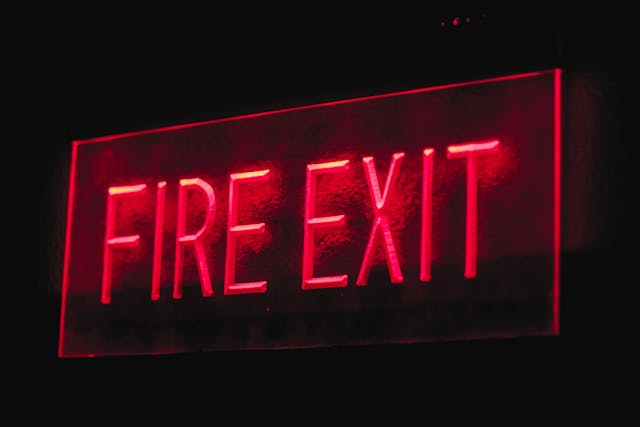
Working with Fire Safety Professionals
Hiring Certified Inspectors
Certified fire safety professionals have the expertise to conduct thorough inspections and ensure compliance with all relevant codes. Benefits include:
- Identifying and addressing potential issues before they become significant problems.
- Ensuring that all system components are in proper working condition.
- Providing detailed reports and recommendations for improvements.
Partnering with Fire Protection Companies
Partnering with a reputable fire protection company can help ensure that your fire sprinkler system remains compliant and functional. Services include:
- Regular maintenance and inspections by experienced professionals.
- Expert guidance on compliance with local and state fire codes.
- Access to advanced fire protection technology and solutions.
Fire Inspections for Fire Sprinkler Systems in New York: Conclusion
Preparing for fire inspections in New York requires a thorough understanding of local and state fire codes, regular maintenance and testing, proper documentation, and employee training. By following these steps and working with certified professionals, you can ensure that your fire sprinkler system remains up to code and provides reliable protection for your property and occupants.
At F2M Fire & Drafting Designs Inc., we specialize in helping businesses prepare for fire inspections and maintain compliant fire sprinkler systems. Contact us today to schedule an inspection or learn more about our maintenance programs.
F2M Fire & Drafting Designs Inc.
31 South Street, Suite 3S-4
Mount Vernon, NY 10550
718-928-3009
Email: info@f2mfadds.com
Ensure your fire sprinkler system is up to code with our expert services and support.
Fire Sprinkler System Design for High-Risk Environments: Key Considerations
Fire sprinkler systems design for high-risk environments requires careful planning and specialized knowledge. These environments, which include industrial facilities, chemical plants, and data centers, present unique challenges that demand robust and reliable fire protection solutions. In this blog post, we will explore the key considerations for designing fire sprinkler systems in high-risk environments.

Understanding the Unique Risks
Identify Fire Hazards
The first step in designing an effective fire sprinkler system is to identify the specific fire hazards present in the environment. Consider:
- The types of materials and substances that could ignite, such as flammable liquids, chemicals, or electronic equipment.
- The processes and activities that could potentially cause a fire.
- The historical data on fire incidents within similar environments.
Assess Fire Load
Understanding the fire load, or the amount of combustible material present, is crucial for selecting the appropriate fire suppression system. High fire loads require systems that can deliver sufficient water or suppression agents to control or extinguish fires effectively.
Choosing the Right Fire Suppression System
Water-Based Systems
Water-based fire sprinkler systems are a common choice for many high-risk environments due to their reliability and effectiveness. Key options include:
- Wet Pipe Systems: Ideal for environments where freezing is not a concern, providing quick response to fires.
- Dry Pipe Systems: Suitable for areas prone to freezing, with pipes filled with pressurized air until activated.
- Deluge Systems: Designed for high-hazard areas, providing rapid and extensive water coverage when activated.
Foam-Based Systems
Foam-based fire suppression systems are effective for environments with flammable liquids and chemicals. Options include:
- Foam Sprinkler Systems: Combines water with foam concentrate to create a foam blanket that smothers the fire and prevents re-ignition.
- High-Expansion Foam Systems: Generates large volumes of foam to fill an entire room or area, ideal for enclosed spaces.
Gas-Based Systems
Gas-based fire suppression systems are suitable for environments with sensitive equipment and electronics. Options include:
- Inert Gas Systems: Uses gases like nitrogen and argon to displace oxygen and suppress fires without damaging equipment.
- Chemical Gas Systems: Uses agents like FM-200 or Novec 1230 to extinguish fires quickly and safely.
System Design and Layout
Customizing the Design
High-risk environments often require customized fire sprinkler system designs to address specific risks. Considerations include:
- Coverage: Ensuring all areas of the environment are adequately covered by the sprinkler system.
- Spacing: Proper spacing of sprinkler heads to ensure uniform water or agent distribution.
- Accessibility: Ensuring that sprinkler system components are accessible for maintenance and inspection.
Hydraulic Calculations
Accurate hydraulic calculations are essential to ensure the fire sprinkler system can deliver the required flow and pressure to control or extinguish a fire. Key factors include:
- Determining the required water or agent flow rate for the specific fire risk.
- Calculating pressure losses in the piping system to ensure adequate pressure at the sprinkler heads.
Compliance with Regulations
Meeting Safety Codes
Compliance with local, state, and national fire safety codes is critical for the design and installation of fire sprinkler systems in high-risk environments. Key standards include:
- National Fire Protection Association (NFPA) standards, such as NFPA 13 for sprinkler systems and NFPA 16 for foam systems.
- Local building and fire codes specific to the environment and industry.
Regular Inspections and Maintenance
High-risk environments require regular inspections and maintenance to ensure the fire sprinkler system remains operational. Best practices include:
- Monthly visual inspections of system components.
- Quarterly checks of alarm systems and control valves.
- Annual professional inspections and testing of the entire system.
Fire Sprinkler System Design for High-Risk Environments: Conclusion
Designing fire sprinkler systems for high-risk environments requires a thorough understanding of the unique risks, careful selection of the appropriate suppression system, and meticulous planning of the system layout. By considering these key factors, you can ensure that your fire sprinkler system provides reliable and effective protection for your high-risk environment.
At F2M Fire & Drafting Designs Inc., we specialize in designing and installing fire sprinkler systems for high-risk environments. Contact us today to discuss your specific fire protection needs and find the best solution for your facility.
F2M Fire & Drafting Designs Inc.
31 South Street, Suite 3S-4
Mount Vernon, NY 10550
(718) 928-3009
Email: info@f2mfadds.com
https://www.f2mfadds.com/contact
Let our experts help you design a fire sprinkler system that provides robust and reliable protection for your high-risk environment.
Understanding the Different Types of Fire Suppression Systems
Fire suppression systems are critical for protecting lives, property, and assets from the devastating effects of fire. Various types of fire suppression systems are designed to address different fire risks and environments. In this blog post, we will explore the different types of fire suppression systems and their specific applications.
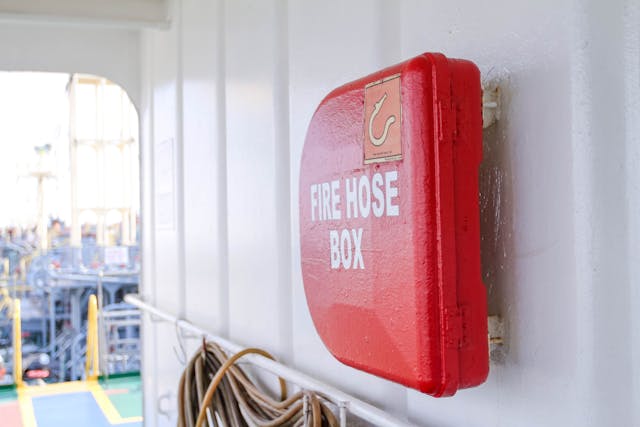
Water-Based Fire Suppression Systems
Sprinkler Systems
Sprinkler systems are the most common type of fire suppression system and are widely used in residential, commercial, and industrial settings. Key features include:
- Automatic activation in response to heat, ensuring quick response to fires.
- Various designs, including wet pipe, dry pipe, and pre-action systems, to suit different environments.
- Effective for controlling and extinguishing a wide range of fires.
Deluge Systems
Deluge systems are similar to sprinkler systems but are designed for high-hazard areas. Features include:
- All sprinkler heads are open and connected to a water supply through a valve that opens when a fire is detected.
- Provides rapid and extensive water coverage, ideal for industrial facilities and chemical storage areas.
Water Mist Systems
Water mist systems use fine water droplets to suppress fires. Advantages include:
- Efficient use of water, reducing water damage and consumption.
- Effective for protecting sensitive equipment and areas where water damage must be minimized.
Foam-Based Fire Suppression Systems
Foam Sprinkler Systems
Foam sprinkler systems are designed to combat fires involving flammable liquids. Key features include:
- Combining water with foam concentrate to create a foam blanket that smothers the fire and prevents re-ignition.
- Ideal for fuel storage facilities, aircraft hangars, and chemical plants.
High-Expansion Foam Systems
High-expansion foam systems generate large volumes of foam to fill an entire room or area. Benefits include:
- Effective for large, enclosed spaces such as warehouses and ship holds.
- Provides rapid fire suppression and cooling.
Gas-Based Fire Suppression Systems
Inert Gas Systems
Inert gas systems use gases like nitrogen, argon, and carbon dioxide to suppress fires by displacing oxygen. Features include:
- Safe for use in occupied spaces as they do not produce harmful byproducts.
- Effective for protecting valuable assets in data centers, server rooms, and archives.
Chemical Gas Systems
Chemical gas systems use agents like FM-200, Novec 1230, and Halon alternatives to extinguish fires. Advantages include:
- Rapid fire suppression without damaging sensitive equipment.
- Suitable for applications where water or foam cannot be used.
Powder-Based Fire Suppression Systems
Dry Chemical Systems
Dry chemical systems use powdered chemicals to extinguish fires. Key features include:
- Effective for a wide range of fire types, including Class A, B, and C fires.
- Commonly used in industrial settings, commercial kitchens, and automotive applications.
Specialized Powder Systems
Specialized powder systems are designed for specific fire risks, such as metal fires (Class D). Benefits include:
- Targeted fire suppression for unique hazards.
- Provides effective fire control for high-risk environments.
Hybrid Fire Suppression Systems
Water and Gas Systems
Hybrid systems combine the benefits of water and gas suppression. Features include:
- Using both water mist and inert gas to achieve rapid and effective fire suppression.
- Ideal for areas with a mix of fire risks, such as data centers and industrial facilities.
Dual-Agent Systems
Dual-agent systems use both foam and dry chemical agents. Advantages include:
- Comprehensive fire suppression for complex fire scenarios.
- Enhanced effectiveness for high-hazard environments.
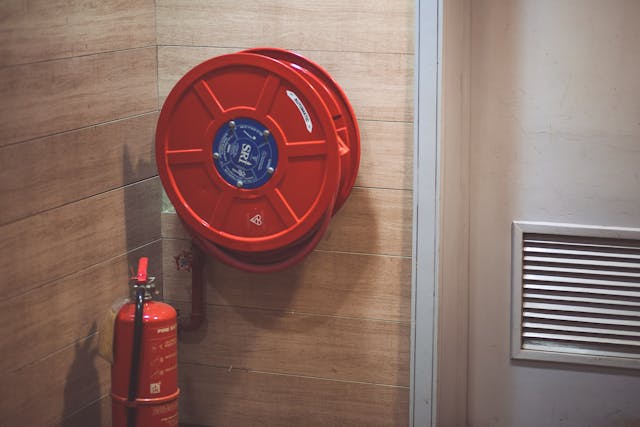
Types of Fire Suppression Systems: Conclusion
Understanding the different types of fire suppression systems is crucial for selecting the right solution for your specific fire protection needs. Each system offers unique benefits and is designed to address specific fire risks and environments.
At F2M Fire & Drafting Designs Inc., we specialize in designing and installing a wide range of fire suppression systems tailored to your needs. Contact us today to discuss your fire protection requirements and find the best solution for your business.
F2M Fire & Drafting Designs Inc.
31 South Street, Suite 3S-4
Mount Vernon, NY 10550
718-928-3009
info@f2mfadds.com
Let our experts help you choose the right fire suppression system to protect your property and ensure safety.
Happy Thanksgiving from F2M!
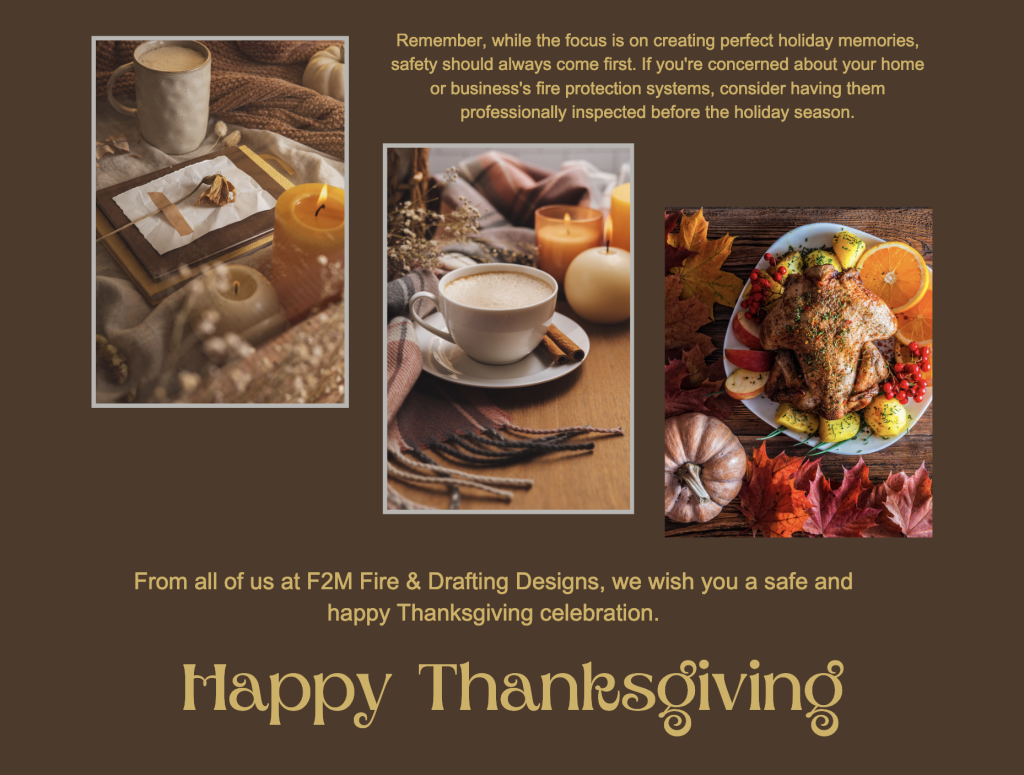
The Role of Fire Sprinkler Systems in Sustainable Building Design
Fire sprinkler systems, traditionally seen purely as safety mechanisms, are now being integrated into sustainable building practices. In this blog post, we explore the role of fire sprinkler systems in sustainable building design and how they contribute to green building goals.
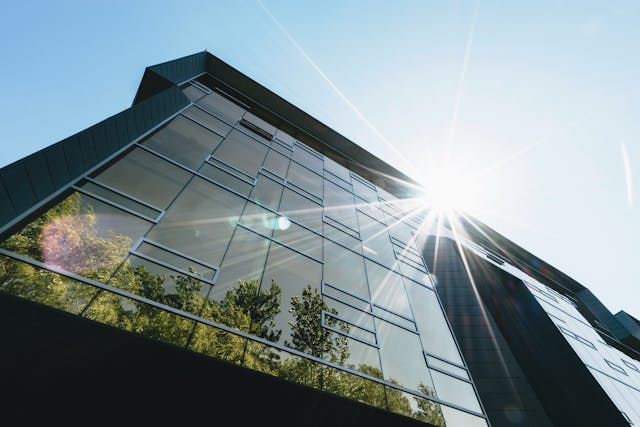
Water Efficiency
Low-Flow Sprinkler Heads
Modern fire sprinkler systems incorporate low-flow sprinkler heads that use water more efficiently. Benefits include:
- Reducing the amount of water used during fire suppression.
- Minimizing water damage to the building and contents.
- Lowering the environmental impact associated with water use.
Water Recycling Systems
Some fire sprinkler systems are designed to recycle water used during tests and fire events. Advantages of water recycling include:
- Conserving water resources by reusing water.
- Reducing the strain on local water supplies.
- Lowering costs associated with water usage.
Material Selection and Durability
Sustainable Materials
Using sustainable materials in fire sprinkler systems contributes to overall building sustainability. Examples include:
- Opting for pipes made from recycled or low-impact materials.
- Choosing corrosion-resistant materials that extend system life and reduce maintenance needs.
- Selecting components that have a lower environmental footprint.
Longevity and Durability
Durable fire sprinkler systems require fewer replacements and repairs, which reduces waste and resource consumption. Benefits include:
- Extending the life of the fire protection system.
- Minimizing the environmental impact of manufacturing and installing new components.
- Reducing the frequency of system overhauls.
Energy Efficiency
Integrated Building Management Systems
Fire sprinkler systems that integrate with smart building management systems can enhance energy efficiency. Features include:
- Automated control of HVAC systems to reduce energy use during fire events.
- Real-time monitoring and diagnostics to optimize system performance.
- Coordinated responses to fire alarms that minimize disruption and energy waste.
Efficient Design and Installation
Efficiently designed and installed fire sprinkler systems contribute to overall building energy efficiency by:
- Reducing the energy required for system maintenance and operation.
- Optimizing water distribution to prevent unnecessary water and energy use.
- Minimizing the need for additional cooling or heating during fire events.
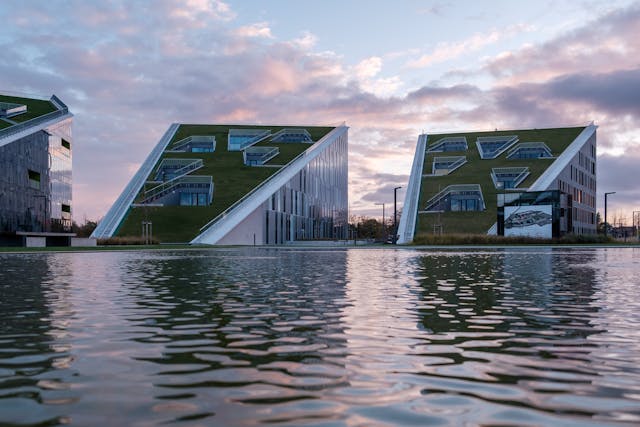
Compliance with Green Building Standards
LEED Certification
Fire sprinkler systems can contribute to achieving Leadership in Energy and Environmental Design (LEED) certification by:
- Supporting water use reduction credits through efficient design.
- Contributing to indoor environmental quality by minimizing smoke and pollutants during a fire.
- Enhancing overall building safety and sustainability.
Other Green Building Certifications
Fire sprinkler systems also play a role in other green building certification programs, such as:
- Building Research Establishment Environmental Assessment Method (BREEAM).
- Green Building Initiative’s Green Globes.
- International WELL Building Institute (IWBI) standards.
Fire Sprinkler Systems in Sustainable Building Design: Conclusion
Integrating fire sprinkler systems into sustainable building design enhances both safety and environmental responsibility. By focusing on water efficiency, sustainable materials, energy efficiency, and compliance with green building standards, fire sprinkler systems play a vital role in the creation of sustainable, resilient buildings.
At F2M Fire & Drafting Designs Inc., we specialize in designing fire sprinkler systems that align with sustainable building practices. Contact us today to learn how we can help you achieve your green building goals while ensuring the highest standards of fire safety.
F2M Fire & Drafting Designs Inc.
31 South Street, Suite 3S-4
Mount Vernon, NY 10550
718-928-3009
Email: info@f2mfadds.com
Partner with us to integrate efficient and sustainable fire protection solutions into your building design.
Cost-Effective Fire Protection Solutions for Small Businesses
A robust fire protection solution is a critical aspect of business safety, regardless of the size of the enterprise. For small businesses, finding cost-effective fire protection solutions that don’t compromise on safety is essential. In this blog post, we’ll explore practical and budget-friendly fire protection strategies tailored to small businesses.
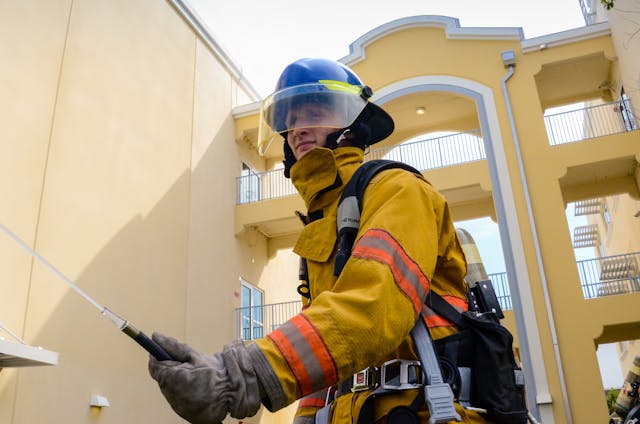
Assessing Fire Risks
Identify Potential Hazards
The first step in creating an effective fire protection plan is to identify potential fire hazards specific to your business. Consider:
- The types of materials and equipment present.
- Processes and activities that could lead to a fire.
- Historical data on fire incidents in similar businesses.
Evaluate Fire Load
Understanding the fire load, or the amount of combustible material present, helps in selecting appropriate fire protection measures.
Basic Fire Protection Measures
Smoke Detectors and Alarms
Smoke detectors and alarms are fundamental components of any fire protection strategy. They provide early warning, allowing for timely evacuation and response. Best practices include:
- Installing smoke detectors in key areas such as offices, storage rooms, and near electrical equipment.
- Regularly testing and maintaining detectors to ensure they are functional.
- Considering interconnected smoke alarms for comprehensive coverage.
Fire Extinguishers
Fire extinguishers are a cost-effective way to combat small fires before they escalate. Ensure that:
- Extinguishers are appropriately rated for different types of fires (e.g., Class A, B, C).
- Employees are trained on how to use them effectively.
- Extinguishers are regularly inspected and maintained.
Sprinkler Systems
Choosing the Right System
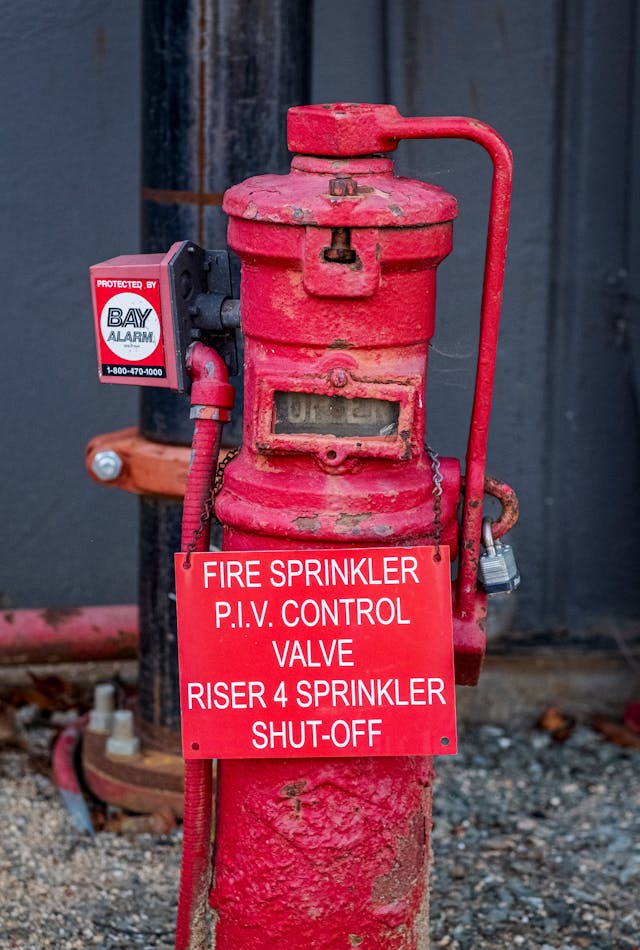 While sprinkler systems are a more significant investment, they provide reliable fire protection. For small businesses, consider:
While sprinkler systems are a more significant investment, they provide reliable fire protection. For small businesses, consider:
- Wet pipe systems for areas where freezing is not a concern.
- Dry pipe systems for environments where temperatures may drop below freezing.
- Pre-action systems for areas with sensitive equipment that require additional protection.
Cost-Effective Installation
To manage costs, work with experienced professionals to design and install a system that meets your specific needs without unnecessary expenses.
Regular Maintenance and Testing
Scheduled Inspections
Regular maintenance is crucial for ensuring that fire protection systems remain functional. Best practices include:
- Monthly visual inspections of fire extinguishers and smoke detectors.
- Quarterly checks of sprinkler systems and alarm systems.
- Annual professional inspections and testing of all fire protection systems.
Documentation
Maintain detailed records of all inspections, maintenance activities, and any issues identified. This helps in compliance with regulations and can be useful for insurance purposes.
Employee Training and Preparedness
Fire Safety Training
Training employees on fire safety practices is a cost-effective way to enhance your fire protection strategy. Training should cover:
- Proper use of fire extinguishers.
- Evacuation procedures and emergency exits.
- Recognizing and reporting potential fire hazards.
Regular Fire Drills
Conducting regular fire drills ensures that employees are familiar with evacuation procedures and can respond quickly in an emergency.
Leveraging Technology
Smart Fire Protection Systems
Investing in smart fire protection systems can be cost-effective in the long run. These systems offer:
- Real-time monitoring and alerts.
- Automated responses to fire incidents.
- Remote access and control, allowing for efficient management.
Integration with Building Management Systems
Integrating fire protection systems with building management systems can streamline operations and enhance overall safety.
Fire Protection Solutions for Small Businesses: Conclusion
Cost-effective fire protection solutions are essential for small businesses to ensure the safety of employees and property. By assessing fire risks, implementing basic protection measures, investing in appropriate sprinkler systems, and maintaining regular inspections and training, small businesses can achieve robust fire protection without breaking the bank.
At F2M Fire & Drafting Designs Inc., we specialize in providing customized and cost-effective fire protection solutions for small businesses. Contact us today to discuss your specific fire safety needs and find the best solutions to protect your business.
Contact us:
F2M Fire & Drafting Designs Inc.
31 South Street, Suite 3S-4
Mount Vernon, NY 10550
✆ (718) 928-3009
Email: info@f2mfadds.com
Protect your small business with our expert fire protection services tailored to your budget and needs.
The Evolution of Fire Safety Codes For Sprinkler Design
Fire safety codes for sprinkler design have undergone significant changes over the years, influenced by advancements in technology, increased understanding of fire behavior, and lessons learned from past fire incidents. These evolving codes have had a profound impact on fire sprinkler system design, ensuring that buildings are better equipped to protect lives and property. In this blog post, we will explore the evolution of fire safety codes and how they have shaped modern sprinkler design.
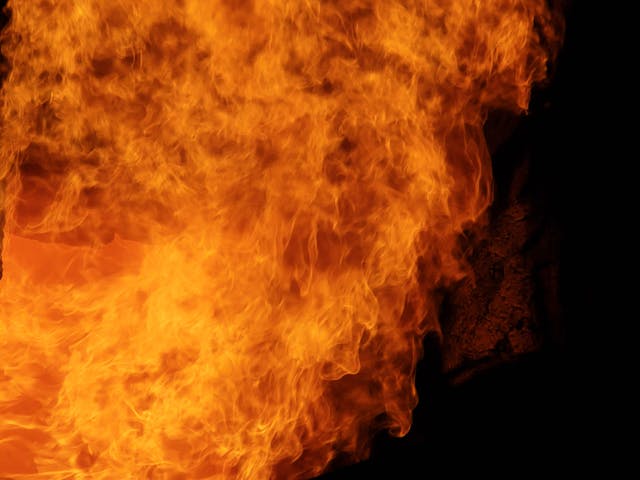
Early Fire Safety Regulations
In the early days, fire safety regulations were minimal and often inconsistent. The lack of standardized codes led to varied practices and, in many cases, inadequate fire protection measures. Early fire safety efforts were primarily focused on simple measures like fire escapes and manual fire extinguishers.
Introduction of Standardized Codes
The introduction of standardized fire safety codes marked a significant milestone in fire protection. Organizations such as the National Fire Protection Association (NFPA) in the United States played a pivotal role in developing comprehensive fire safety standards. Key developments included:
- NFPA 13: The standard for the installation of sprinkler systems, first published in 1896, provided detailed guidelines for designing and installing sprinkler systems.
- Building Codes: Integration of fire safety requirements into building codes ensured that fire protection was considered in the overall building design process.
Advancements in Technology
Advancements in technology have continually influenced fire safety codes and sprinkler design. Technological innovations have led to more efficient and effective fire suppression systems. Notable advancements include:
- Automatic Sprinklers: The development of automatic sprinkler systems revolutionized fire protection by providing an immediate response to fire outbreaks.
- Smoke Detectors and Alarms: Integration of smoke detectors and alarms with sprinkler systems enhanced early detection and response capabilities.
- Smart Systems: Modern fire safety codes now incorporate requirements for smart building technology, enabling real-time monitoring and automated responses.
Lessons Learned from Fire Incidents
Significant fire incidents have often prompted revisions to fire safety codes. Tragic events have underscored the importance of stringent fire protection measures and led to the adoption of more robust standards. Examples include:
- The Triangle Shirtwaist Factory Fire (1911): This disaster highlighted the need for improved fire exits and fire escape plans, leading to changes in building and fire codes.
- The MGM Grand Fire (1980): This incident emphasized the importance of automatic sprinkler systems in hotels and casinos, resulting in stricter fire safety regulations for such establishments.
Modern Fire Safety Codes
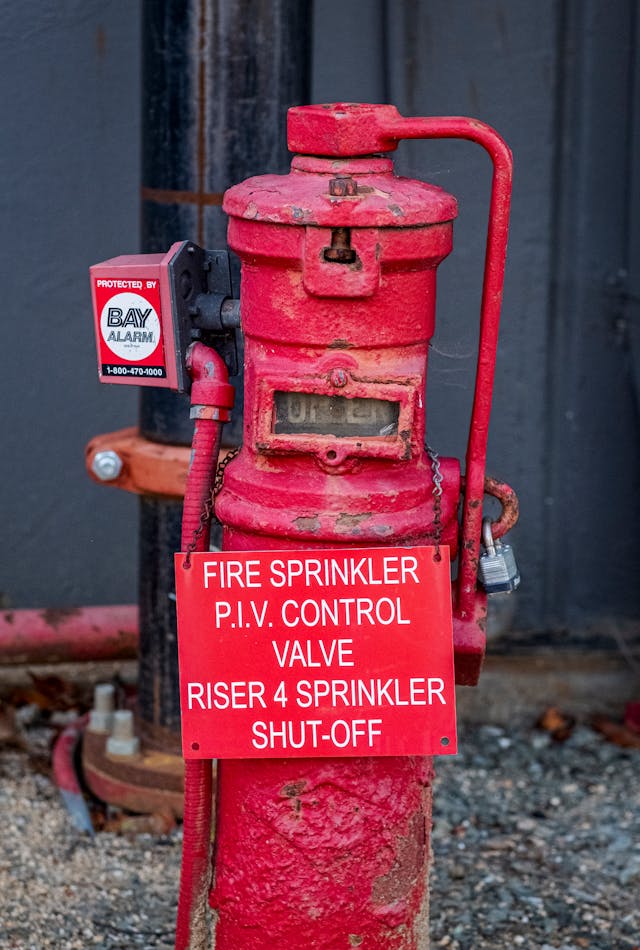 Today’s fire safety codes are comprehensive and continuously evolving to address emerging risks and technologies. Key elements of modern codes include:
Today’s fire safety codes are comprehensive and continuously evolving to address emerging risks and technologies. Key elements of modern codes include:
- Performance-Based Design: Modern codes allow for performance-based design approaches, providing flexibility in achieving fire safety objectives.
- Sustainability Considerations: Fire safety codes now include provisions for environmentally friendly fire protection solutions, such as water-efficient sprinkler systems.
- Integration with Building Management Systems: Requirements for integration with smart building management systems ensure coordinated fire safety responses.
Impact on Sprinkler Design
The evolution of fire safety codes has had a profound impact on sprinkler design, resulting in systems that are more reliable, efficient, and tailored to specific risks. Key impacts include:
- Enhanced Coverage: Modern codes require comprehensive coverage, ensuring that sprinkler systems protect all areas of a building effectively.
- Improved Materials: Advances in materials and technology have led to the use of more durable and efficient components in sprinkler systems.
- Customization: Fire safety codes now allow for customized sprinkler designs to address the unique fire risks of different industries and building types.
Fire Safety Codes For Sprinkler Design: Conclusion
The evolution of fire safety codes has significantly improved the effectiveness of fire sprinkler systems, enhancing their ability to protect lives and property. As fire safety codes continue to evolve, it is essential for building owners and designers to stay informed and ensure compliance with the latest standards.
Call F2M Fire & Drafting for Fire Sprinkler Sprinkler System Consultation
At F2M Fire & Drafting Designs Inc., we stay at the forefront of fire safety code developments to provide you with the most advanced and compliant fire sprinkler system designs. Contact us today to ensure your building meets the highest standards of fire protection.
F2M Fire & Drafting Designs Inc.
31 South Street, Suite 3S-4
Mount Vernon, NY 10550
✆ (718) 928-3009
Email: info@f2mfadds.com
Stay ahead of the curve with our expert fire sprinkler design services, ensuring safety and compliance for your property.
Fire Sprinkler Systems and Maintenance: Best Practices and Common Pitfalls
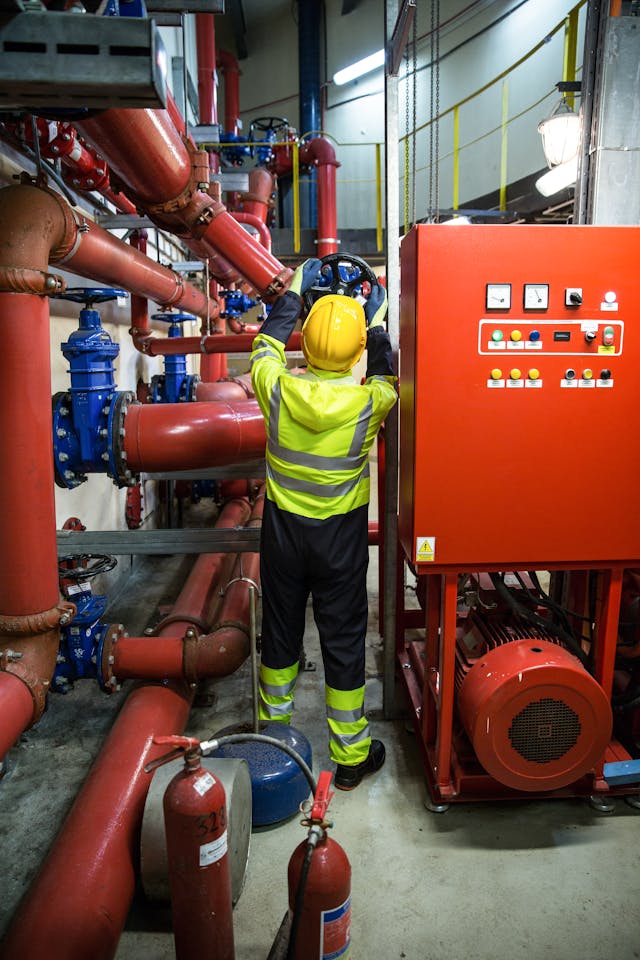 Staying on top of your fire sprinkler systems maintenance is crucial to ensure it functions correctly in the event of a fire. Regular maintenance not only helps in complying with safety regulations but also ensures the longevity and reliability of the system. This blog post will cover best practices for maintaining fire sprinkler systems and highlight common pitfalls to avoid.
Staying on top of your fire sprinkler systems maintenance is crucial to ensure it functions correctly in the event of a fire. Regular maintenance not only helps in complying with safety regulations but also ensures the longevity and reliability of the system. This blog post will cover best practices for maintaining fire sprinkler systems and highlight common pitfalls to avoid.
Best Practices for Fire Sprinkler Systems and Maintenance
Regular Inspections
Conducting regular inspections is vital to identify any issues before they become significant problems. Best practices include:
- Monthly Visual Inspections: Check for any visible damage or obstructions to the sprinkler heads and piping.
- Quarterly System Checks: Inspect the alarm valves, pressure gauges, and control valves to ensure they are in proper working condition.
- Annual Professional Inspections: Hire certified professionals to perform a thorough inspection and testing of the entire system.
Testing and Drills
Regular testing and fire drills are essential to ensure that the fire sprinkler system will function correctly during an emergency. Key practices include:
- Flow Testing: Conduct flow tests to verify the water pressure and flow rate are adequate.
- Alarm Testing: Test the fire alarm system to ensure it activates correctly when the sprinkler system is triggered.
- Fire Drills: Perform regular fire drills to familiarize occupants with evacuation procedures and ensure the system’s effectiveness.
Maintenance of Components
Maintaining the individual components of the fire sprinkler system is crucial for its overall functionality. Best practices include:
- Cleaning Sprinkler Heads: Regularly clean sprinkler heads to remove dust and debris that could obstruct water flow.
- Checking for Leaks: Inspect the piping for any leaks or corrosion and repair them promptly.
- Maintaining Valves: Ensure that control valves are in the correct position and free from any obstructions.
Documentation and Record Keeping
Keeping detailed records of all inspections, tests, and maintenance activities is essential for compliance and future reference. Important steps include:
- Documenting all inspections and maintenance activities, including the date, findings, and actions taken.
- Maintaining records of any repairs or replacements performed on the system.
- Ensuring that records are easily accessible for regulatory inspections.
Common Pitfalls to Avoid
Neglecting Regular Inspections
One of the most common mistakes is failing to conduct regular inspections. This oversight can lead to undetected issues that compromise the system’s effectiveness.
Ignoring Minor Issues
Small problems, such as minor leaks or slightly misaligned sprinkler heads, can escalate into significant issues if left unaddressed. Promptly addressing minor issues is crucial.
Improper Testing Procedures
Conducting tests incorrectly or failing to follow proper procedures can result in inaccurate assessments of the system’s condition. Ensure that all tests are performed by trained professionals following established guidelines.
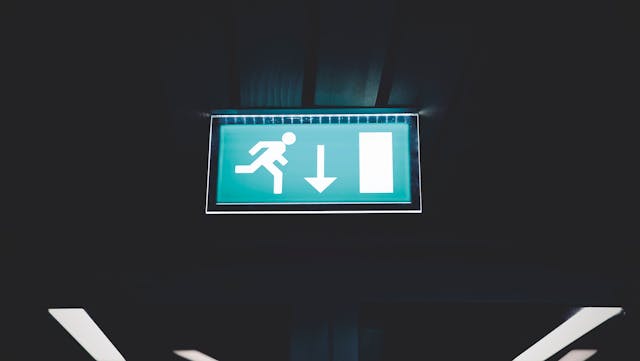
Inadequate Training
Building occupants and maintenance personnel should be adequately trained on the fire sprinkler system’s operation and maintenance. Lack of training can lead to improper handling and maintenance.
Poor Record Keeping
Failing to maintain detailed records of inspections, tests, and maintenance activities can lead to non-compliance with regulations and difficulties in diagnosing issues.
Fire Sprinkler Systems and Maintenance: Conclusion
Regular maintenance of fire sprinkler systems is essential to ensure their reliability and effectiveness in protecting lives and property. By following best practices and avoiding common pitfalls, you can maintain your fire sprinkler system in optimal condition and ensure compliance with safety regulations.
Do You Need A New Fire Sprinkler System Designed?
At F2M Fire & Drafting Designs Inc., we offer comprehensive fire sprinkler system design services. Contact us today to learn more.
F2M Fire & Drafting Designs Inc.
31 South Street, Suite 3S-4
Mount Vernon, NY 10550
✆ (718) 928-3009
Email: info@f2mfadds.com
The Benefits of Integrating Fire Sprinkler Systems with Smart Building Technology
What are the benefits of integrating fire sprinkler systems with smart building technology? In today’s digital age, smart building technology is transforming the way we manage and maintain buildings. One of the most significant advancements in this field is the integration of fire sprinkler systems with this new technology. This integration not only enhances fire safety but also offers numerous benefits for building management and occupant safety.
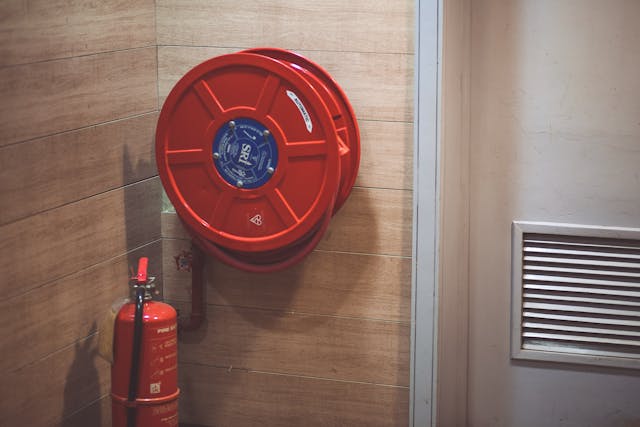
Fire Sprinkler Systems with Smart Building Technology
Enhanced Detection and Response
Real-Time Monitoring
Smart building technology enables real-time monitoring of fire sprinkler systems. This allows for:
- Immediate detection of fire incidents.
- Instant alerts to building management and emergency services.
- Continuous monitoring of system performance and status.
Automated Responses
Integration with smart building systems facilitates automated responses to fire incidents, such as:
- Activating fire alarms and evacuation protocols.
- Automatically unlocking emergency exits.
- Shutting down HVAC systems to prevent the spread of smoke.
Improved Maintenance and Diagnostics
Predictive Maintenance
Smart technology can predict when maintenance is needed, based on data analytics and usage patterns. Benefits include:
- Preventing system failures through proactive maintenance.
- Reducing downtime and repair costs.
- Extending the lifespan of fire sprinkler systems.
Remote Diagnostics
Remote access to system diagnostics allows for:
- Identifying and addressing issues quickly.
- Minimizing the need for on-site inspections.
- Enhancing the efficiency of maintenance operations.
Energy and Cost Efficiency
Optimized Water Usage
Smart fire sprinkler systems can optimize water usage by:
- Delivering water only where and when it’s needed.
- Reducing water damage and waste.
- Lowering water-related costs.
Cost Savings
The integration of smart technology can lead to significant cost savings through:
- Reduced maintenance and repair expenses.
- Lower insurance premiums due to enhanced safety measures.
- Improved energy efficiency in building operations.
Enhanced Occupant Safety and Comfort
 Comprehensive Safety Measures
Comprehensive Safety Measures
Integrating fire sprinkler systems with smart building technology ensures comprehensive safety measures, including:
- Coordinated evacuation procedures.
- Enhanced communication with occupants during emergencies.
- Real-time updates on safety status.
Increased Comfort
Smart technology contributes to a comfortable living and working environment by:
- Maintaining optimal indoor conditions during emergencies.
- Ensuring quick resolution of fire incidents with minimal disruption.
- Providing peace of mind for building occupants.
Integrating Fire Sprinkler Systems with Smart Building Technology: Conclusion
The integration of fire sprinkler systems with smart building technology offers numerous benefits, from enhanced detection and response to improved maintenance, cost efficiency, and occupant safety. As buildings become smarter, integrating these technologies is not just a trend but a necessity for modern building management and safety.
Contact F2M Fire & Drafting Designs Inc. In New York for your Fire Sprinkler System Design Needs
At F2M Fire & Drafting Designs Inc., we specialize in integrating fire sprinkler systems with smart building technology to provide comprehensive fire protection solutions.
Contact us today to learn how our advanced integration services can enhance the safety and efficiency of your building.
F2M Fire & Drafting Designs Inc.
31 South Street, Suite 3S-4
Mount Vernon, NY 10550
✆ (718) 928-3009
Email: info@f2mfadds.com
Embrace the future of building safety with our innovative fire protection solutions.
Innovative Fire Sprinkler Design Techniques for Modern Buildings
Let’s explore some of the cutting-edge fire sprinkler design techniques that are being implemented in modern buildings. In the ever-evolving landscape of modern architecture, ensuring fire safety remains a critical priority. Fire sprinkler systems are a cornerstone of building safety, and innovative design techniques are continuously being developed to enhance their effectiveness.
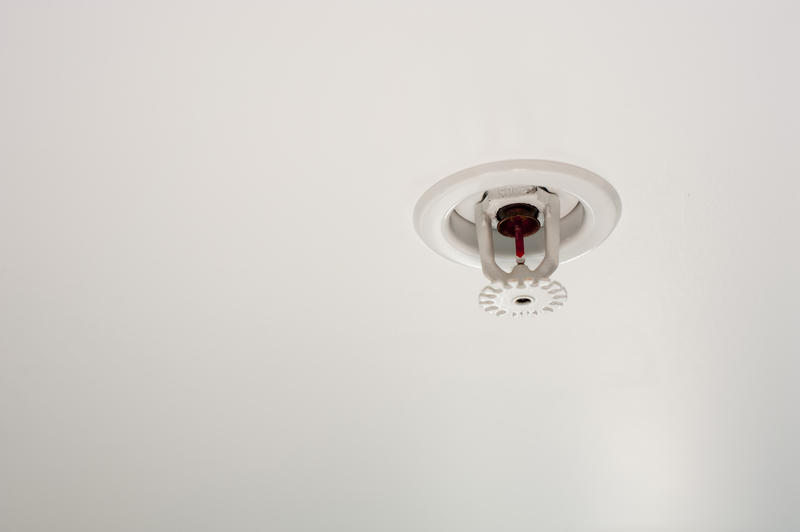
Fire Sprinkler Design Techniques for Modern Buildings
Advanced Detection Systems
Smart Sensors
Modern fire sprinkler systems are now incorporating smart sensors that can detect various fire indicators such as heat, smoke, and even gases. These sensors offer several advantages:
- Early detection of fires, allowing for quicker response times.
- Reduction in false alarms, minimizing disruptions.
- Integration with building management systems for automated responses.
Artificial Intelligence (AI)
AI-driven fire detection systems analyze data in real-time to differentiate between actual fire threats and false alarms. Benefits include:
- Improved accuracy in fire detection.
- Reduced number of false alarms.
- Enhanced decision-making during emergencies.
Enhanced Suppression Technologies
Water Mist Systems
Water mist systems are an innovative approach to fire suppression, using fine droplets of water to control fires. These systems offer:
- Effective fire suppression with minimal water damage.
- Enhanced safety for occupants and property.
- Eco-friendly water usage.
High-Pressure Systems
High-pressure fire sprinkler systems deliver water with greater force, making them suitable for high-hazard areas. Advantages include:
- Increased reach and coverage in large spaces.
- Effective suppression of intense fires.
- Enhanced protection for high-value assets.
Integration with Building Management Systems
Seamless Communication
Modern fire sprinkler systems are designed to integrate seamlessly with building management systems. This integration allows for:
- Centralized control and monitoring of fire safety systems.
- Automated responses to fire events, such as activating alarms and initiating evacuations.
- Real-time data analysis and reporting.
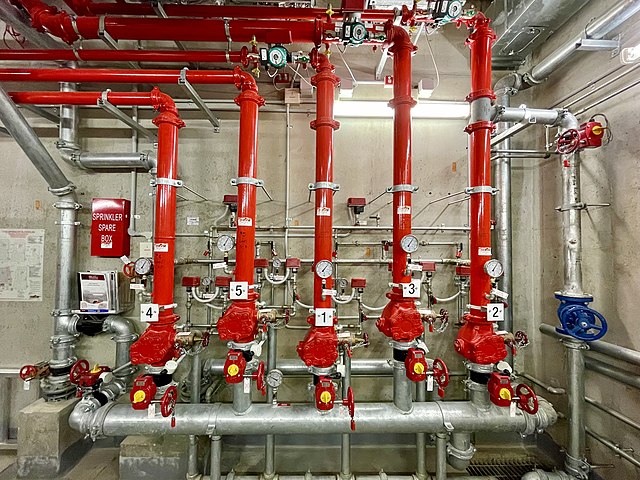
Remote Monitoring
Remote monitoring capabilities enable facility managers to oversee the status of fire sprinkler systems from off-site locations. Benefits include:
- Continuous monitoring and quick response to issues.
- Reduced need for on-site personnel.
- Enhanced maintenance and troubleshooting capabilities.
Eco-Friendly Solutions
Water Recycling
Innovative fire sprinkler systems now incorporate water recycling features, reducing water waste. These systems offer:
- Conservation of water resources.
- Reduced environmental impact.
- Cost savings on water usage.
Low-Flow Sprinklers
Low-flow sprinkler heads are designed to minimize water consumption while effectively controlling fires. Advantages include:
- Efficient use of water resources.
- Reduced water damage to property.
- Enhanced sustainability of fire protection systems.
Fire Sprinkler Design Techniques for Modern Buildings: Conclusion
The integration of innovative fire sprinkler design techniques in modern buildings is revolutionizing fire safety. From advanced detection systems and enhanced suppression technologies to eco-friendly solutions and seamless integration with building management systems, these advancements are setting new standards in fire protection.
F2M Fire & Drafting Designs Inc.
At F2M Fire & Drafting Designs Inc., we are at the forefront of these innovations, providing cutting-edge fire sprinkler system designs tailored to your building’s unique needs.
Contact us today to learn how our advanced solutions can elevate your fire safety measures.
F2M Fire & Drafting Designs Inc.
718-928-3009
Email: info@f2mfadds.com
Let us help you protect your property and occupants with the latest in fire sprinkler technology.
How to Choose the Right Fire Suppression System for Your Industry
How do you go about choosing the right fire suppression system for your industry type? Fire suppression systems are crucial in protecting property, equipment, and lives from the devastating effects of fire. However, choosing the right system for your industry can be a complex decision. Here we will guide you through important considerations and options to ensure you select the most effective fire suppression system for your industry.
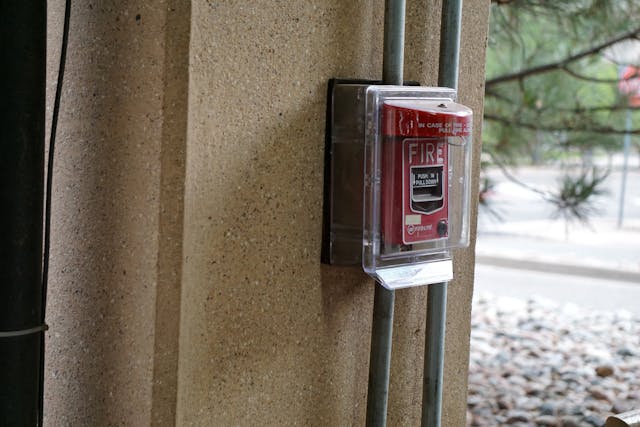
Fire Suppression System for Your Industry: How to Choose the Right One?
Assessing Fire Risks
Identify Potential Hazards
Understanding the specific fire risks associated with your industry is the first step in selecting the right fire suppression system. Consider the following:
- Types of materials and substances present (flammable liquids, electrical equipment, etc.).
- Processes and operations that could potentially ignite a fire.
- Historical data on fire incidents in similar settings.
Evaluate Fire Load
Fire load refers to the amount of combustible material present in the environment. High fire loads require robust suppression systems capable of handling large fires.
Types of Fire Suppression Systems
Water-Based Systems
Water-based fire suppression systems are the most common and include:
- Sprinkler Systems: These systems are suitable for a wide range of applications, including offices, warehouses, and residential buildings.
- Deluge Systems: Ideal for high-hazard areas such as chemical plants and power stations, where rapid fire suppression is critical.
Foam Systems
Foam suppression systems are effective in controlling fires involving flammable liquids. They work by forming a blanket over the fuel, preventing oxygen from reaching the fire.
- Applications: Aircraft hangars, fuel storage facilities, and industrial plants.
Gas-Based Systems
Gas-based fire suppression systems use inert or chemical gases to extinguish fires without causing damage to sensitive equipment.
- Inert Gas Systems: Use gases like nitrogen and argon. Suitable for data centers, server rooms, and telecommunication facilities.
- Chemical Gas Systems: Use agents like FM-200 or Novec 1230. Ideal for protecting valuable electronics and archival storage.
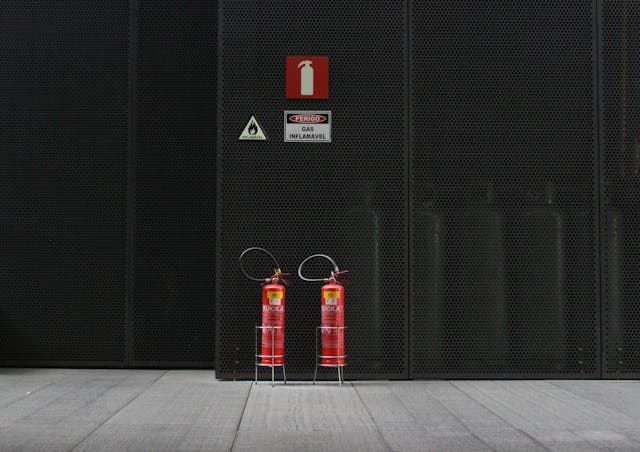
Specialized Systems
Certain industries may require specialized fire suppression systems tailored to specific risks.
- Kitchen Fire Suppression Systems: Designed to handle grease fires in commercial kitchens.
- Vehicle Fire Suppression Systems: Protect heavy machinery and vehicles in mining, forestry, and transportation sectors.
Compliance and Regulations
Industry Standards
Ensure that the fire suppression system you choose complies with industry-specific standards and regulations. Familiarize yourself with codes from organizations such as:
- National Fire Protection Association (NFPA).
- Occupational Safety and Health Administration (OSHA).
- Local fire safety authorities.
Insurance Requirements
Check with your insurance provider to understand any specific requirements they may have regarding fire suppression systems.
Installation and Maintenance
Professional Installation
Proper installation is critical to the effectiveness of your fire suppression system. Ensure that the system is installed by certified professionals who understand the unique needs of your industry.
Regular Maintenance
Routine maintenance and inspections are essential to keep your fire suppression system in optimal condition. Schedule regular checks and servicing to ensure the system functions correctly when needed.
Cost Considerations
Initial Investment
Consider the initial cost of purchasing and installing the fire suppression system. While some systems may have higher upfront costs, they may offer better protection and lower long-term expenses.
Long-Term Costs
Evaluate the long-term costs associated with maintenance, inspections, and potential system upgrades. Investing in a reliable system upfront can save money in the long run by preventing fire-related damages and downtime.
Choosing the Right Fire Suppression System for Your Industry: Conclusion
Choosing the right fire suppression system for your industry is a critical decision that requires careful consideration of fire risks, regulatory requirements, and cost factors. By understanding the unique needs of your industry and working with experienced professionals in fire suppression system design and installation, you can ensure that your fire suppression system provides optimal protection.
Call Fernandez at F2M Inc. for Fire Sprinkler System Design
At F2M Fire & Drafting Designs Inc., we specialize in designing fire suppression systems for a wide range of industries. Contact us today to discuss your specific fire protection needs and find the best solution for your business.
F2M Fire & Drafting Designs Inc.
Fernandez McKenly
31 South Street, Suite 3S-4
Mount Vernon, NY 10550
(718) 928-3009
info@f2mfadds.com
Protect your industry with the right fire suppression system—let us guide you through the process.
Compliance and Codes in Fire Sprinkler System Design: Navigating the Regulatory Landscape
Here we will explore the vital importance of compliance and codes in fire sprinkler system design. Fire safety is a paramount concern in building design and construction, and adherence to safety codes and regulations is crucial.
Fire sprinkler systems are a cornerstone of fire protection, and their design must align with a complex web of local, state, and national fire safety codes. It’s important to get safety regulations and the regulatory landscape correct when designing fire sprinkler systems, so let’s discuss these crucial elements further…
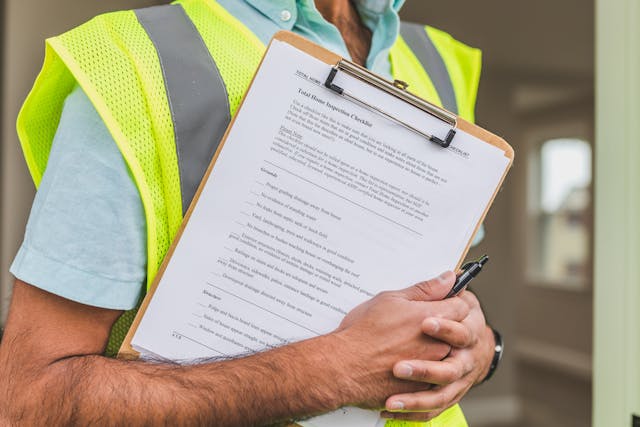
Compliance and Codes in Fire Sprinkler Design:The Foundation of Safety
Legal Obligations
Compliance with fire safety codes is not optional—it’s a legal obligation. Failure to meet these requirements can result in fines, legal liabilities, and endangering lives and property.
Protecting Lives
Fire sprinkler systems designed in compliance with codes play a pivotal role in saving lives by suppressing or controlling fires until first responders arrive.
Understanding the Regulatory Landscape
Local Codes
Local jurisdictions often have their own specific fire safety codes. Designers must be intimately familiar with these codes to ensure that fire sprinkler systems meet local requirements.
State Regulations
States may also impose additional regulations on fire safety. Understanding and adhering to state codes is essential, especially for projects that span multiple local jurisdictions.
National Standards
National standards, such as those set by the National Fire Protection Association (NFPA), provide guidelines for fire sprinkler system design. These standards are widely adopted and form the basis for many local codes.
The Role of Professional Designers
Expertise and Experience
Professional fire sprinkler system designers are well-versed in the intricate details of fire safety codes. Their expertise ensures that systems are designed to meet all applicable regulations.
Code Compliance
Designers play a pivotal role in ensuring that every aspect of a fire sprinkler system, from the layout to materials used, complies with the relevant codes and standards.
The Importance of Inspections and Testing
Ensuring Compliance
Regular inspections and testing are necessary to ensure that fire sprinkler systems remain in compliance with codes throughout their operational life.
System Reliability
Routine maintenance and testing not only maintain compliance but also enhance the reliability of the system, ensuring it functions correctly during emergencies
Compliance and Codes in Fire Sprinkler Design: Navigate the Regulatory Maze with Expert Guidance
At F2M Fire & Drafting Designs Inc., we understand the complexities of the regulatory landscape in fire sprinkler system design. Our experienced team is dedicated to ensuring that your fire protection systems meet all relevant codes and standards.
Contact us today for expert guidance and compliance with fire safety regulations.
F2M Fire & Drafting Designs Inc.
718-928-3009
Email: info@f2mfadds.com
Don’t compromise on safety or compliance—let us help you navigate the regulatory maze and ensure your fire sprinkler systems meet the highest standards of fire safety.
Fire Sprinkler System Design for Historic Buildings: Challenges and Solutions
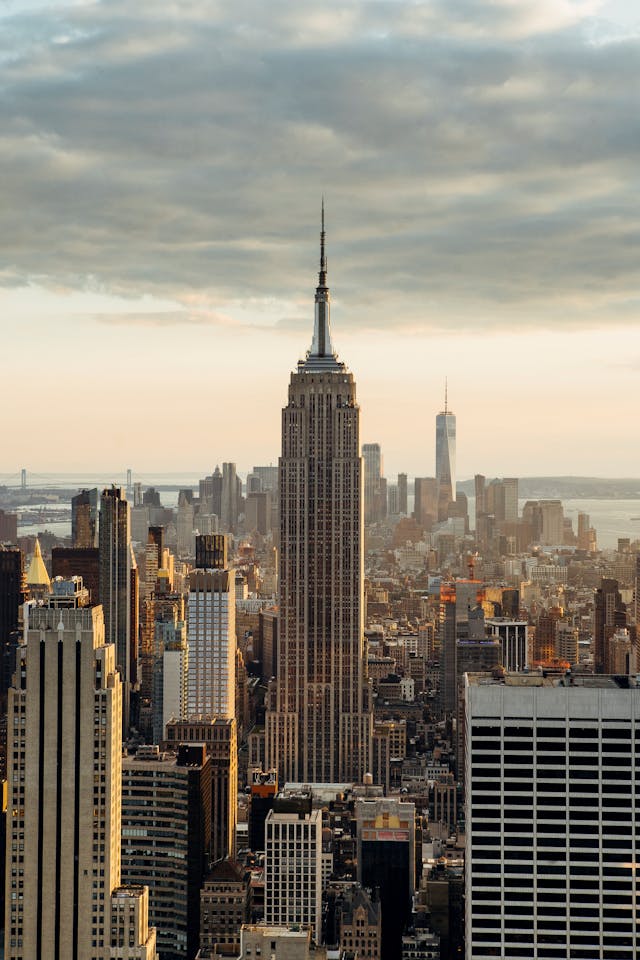 Let’s delve into the complexities and challenges of fire sprinkler system design for historic buildings and explore the innovative solutions available. Historic buildings are architectural treasures that offer a glimpse into the past. Their ornate facades, intricate details, and timeless charm make them an integral part of our cultural heritage.
Let’s delve into the complexities and challenges of fire sprinkler system design for historic buildings and explore the innovative solutions available. Historic buildings are architectural treasures that offer a glimpse into the past. Their ornate facades, intricate details, and timeless charm make them an integral part of our cultural heritage.
Preserving these structures is a top priority, but it’s equally important to ensure the safety of occupants and protect these invaluable pieces of history from the devastating effects of fires. Designing fire sprinkler systems for historic buildings is a unique and complex task that involves striking a delicate balance between preservation and modern safety standards.
Fire Sprinkler System Design for Historic Buildings
The Preservation Dilemma
Concealed Systems
One of the primary challenges in designing fire sprinkler systems for historic buildings is preserving the architectural integrity of these structures.
Traditional sprinkler heads and piping can be obtrusive and clash with the aesthetics of historical interiors. To address this, concealed sprinkler systems with discreet heads and piping are often utilized. These systems can be custom-designed to blend seamlessly with the building’s décor, minimizing their visual impact.
Retrofit Solutions
In many cases, retrofitting fire sprinkler systems into existing historic buildings is necessary to meet modern safety standards. However, this process must be approached with utmost care.
Specialized brackets, supports, and mounting techniques can be employed to minimize the impact on historical features such as decorative ceilings, ornate moldings, and period-specific finishes.
Structural Challenges
Limited Space
Historic buildings often have limited available space for the installation of fire sprinkler infrastructure. Traditional sprinkler systems may require significant room for pipes and equipment, which can be challenging to accommodate within the confines of historical structures. Compact and flexible system designs are essential to overcome space limitations while ensuring adequate coverage.
Preserving Structural Integrity
Preserving the structural integrity of historic buildings is of paramount importance. The weight of water-filled pipes and equipment can strain old structures. Therefore, thorough structural assessments and engineering solutions are required to ensure that the installation of sprinkler systems does not compromise the building’s stability or historical features.
Navigating Fire Safety Codes
Striking a Balance
Meeting modern fire safety codes and standards while respecting the historical significance of the building is a delicate balance. Collaborating with code officials, preservationists, and experienced fire sprinkler system designers is crucial to find solutions that satisfy safety requirements without detracting from the building’s historical value.
Alternative Suppression Methods
In some cases, traditional water-based sprinkler systems may not be the best fit for historic buildings. Alternative fire suppression methods, such as water mist or gas systems, can be considered to address unique challenges while minimizing alterations to the building’s structure and aesthetics.
Fire Sprinkler System Design for Historic Buildings: Preserve History, Protect Lives with Expert Solutions
At F2M Fire & Drafting Designs Inc., we specialize in the intricate task of designing fire sprinkler systems for historic buildings. We understand the delicate balance required to preserve architectural integrity while ensuring the safety of occupants and the protection of valuable historical artifacts.
Contact us today to discuss how our expert solutions can safeguard these historic treasures with minimal impact on their aesthetics.
F2M Fire & Drafting Designs Inc.
718-928-3009
Email: info@f2mfadds.com
Preserve the past and protect the future—let us help you navigate the complexities of fire sprinkler system design for historic buildings and ensure their enduring legacy.
The Latest Innovations in Fire Sprinkler System Technology
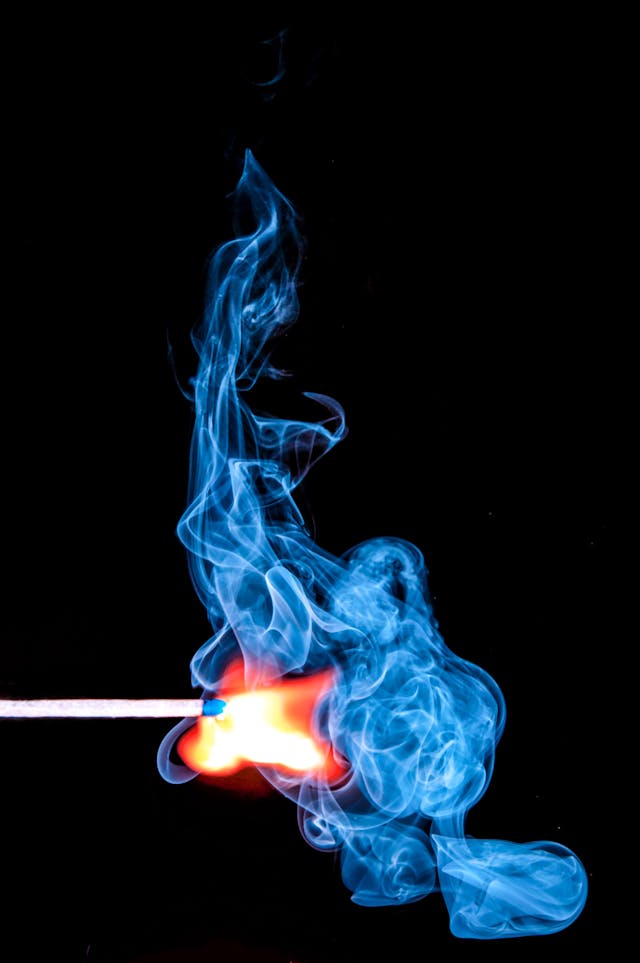 In this blog post, we’ll explore the cutting-edge innovations in fire sprinkler system technology that are shaping the future of fire safety. In the realm of fire safety, innovation is a driving force behind the development of more efficient and effective fire sprinkler systems. Staying up-to-date with the latest advancements in technology can significantly enhance the fire protection measures in your building.
In this blog post, we’ll explore the cutting-edge innovations in fire sprinkler system technology that are shaping the future of fire safety. In the realm of fire safety, innovation is a driving force behind the development of more efficient and effective fire sprinkler systems. Staying up-to-date with the latest advancements in technology can significantly enhance the fire protection measures in your building.
Advanced Detection Systems
Smart Sensors
Modern fire sprinkler systems incorporate smart sensors that can detect not only smoke and heat but also gases and particulate matter. These sensors provide early warnings, reducing false alarms and improving response times.
Artificial Intelligence (AI)
AI-driven detection systems can analyze data in real-time to differentiate between genuine threats and false alarms, minimizing disruptions and ensuring rapid response when needed.
Enhanced Suppression Technologies
Water Mist Systems
Water mist systems use fine droplets of water to suppress fires. They are highly effective in controlling fires while minimizing water damage to the building.
High-Pressure Systems
High-pressure fire sprinkler systems can deliver water with greater force, making them ideal for protecting high-hazard areas.
Integration with Building Management Systems
Seamless Communication
Fire sprinkler systems are now designed to seamlessly integrate with building management systems, allowing for centralized control, monitoring, and automatic responses to fire events.
Remote Monitoring
Remote monitoring capabilities enable facility managers to keep an eye on the status of the fire sprinkler system in real-time, even from off-site locations.
Eco-Friendly Solutions
Water Recycling
Innovative systems are designed to recycle water used in fire suppression, reducing water waste and environmental impact.
Low-Flow Sprinklers
Low-flow sprinklers are designed to minimize water consumption while effectively controlling fires.
Innovations in Fire Sprinkler System Technology: Stay Ahead with the Latest in Fire Safety Technology
At F2M Fire & Drafting Designs Inc., we are committed to providing the most advanced fire sprinkler system technology to ensure your building’s safety. Contact us today to learn how our innovative solutions can elevate your fire protection measures and keep you at the forefront of fire safety technology.
F2M Fire & Drafting Designs Inc.
718-928-3009
Email: info@f2mfadds.com
Don’t wait to embrace the future of fire safety—partner with us to harness the power of the latest innovations in fire sprinkler system technology.
Sustainability and Fire Sprinkler System Design: Green Solutions
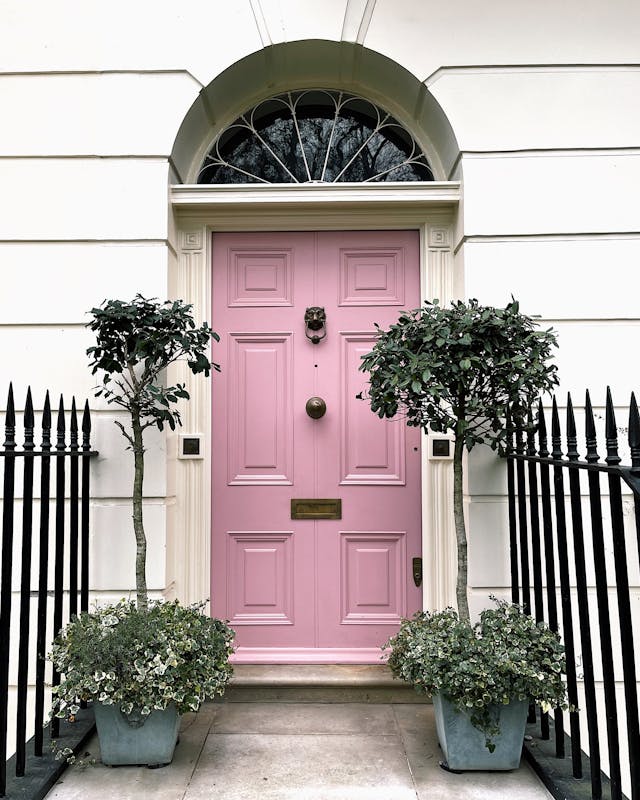 This blog post explores the intersection of sustainability and fire sprinkler system design, highlighting green solutions that contribute to both fire safety and environmental well-being. In an era where sustainability and environmental responsibility are paramount, every aspect of building design and operation must align with these values. Fire sprinkler system design is no exception.
This blog post explores the intersection of sustainability and fire sprinkler system design, highlighting green solutions that contribute to both fire safety and environmental well-being. In an era where sustainability and environmental responsibility are paramount, every aspect of building design and operation must align with these values. Fire sprinkler system design is no exception.
Sustainable Fire Sprinkler Systems
Water Efficiency: Sustainable fire sprinkler systems prioritize water efficiency. Modern designs minimize water wastage by delivering precisely the required amount to control or suppress fires.
Advanced Technology: Incorporating cutting-edge technology, such as smart monitoring and controls, enhances the efficiency of fire sprinkler systems. These systems can detect fires quickly and activate sprinklers only when necessary.
Sustainability Benefits
Reduced Water Consumption: Efficient sprinkler systems consume less water, reducing the overall demand on water resources.
Minimal Environmental Impact: Sustainable systems produce fewer environmental pollutants, such as runoff contaminated with firefighting chemicals.
Green Materials and Practices
Eco-Friendly Components: Using environmentally friendly materials and components in sprinkler systems reduces their ecological footprint.
Sustainable Manufacturing: Selecting products manufactured using sustainable practices contributes to a greener approach.
Compliance with Sustainability Standards
LEED Certification: Sustainable fire sprinkler systems can contribute to achieving Leadership in Energy and Environmental Design (LEED) certification for buildings.
Environmental Compliance: Adhering to environmental regulations ensures that fire sprinkler systems align with sustainability goals.
Conclusion: Sustainability and Fire Sprinkler System Design: Green Solutions
At F2M Fire & Drafting Designs Inc., we believe in the power of sustainable fire sprinkler system design. Our expert team specializes in creating eco-friendly fire protection solutions that prioritize both safety and environmental responsibility. Contact us today to discuss how our green solutions can enhance your building’s fire safety while contributing to a more sustainable future.
Choose sustainability without compromising on safety—let us help you design fire sprinkler systems that protect lives and the environment.
F2M Fire & Drafting Designs Inc.
718-928-3009
Email: info@f2mfadds.com
Emergency Planning: Integrating Fire Sprinkler Systems with Evacuation Plans
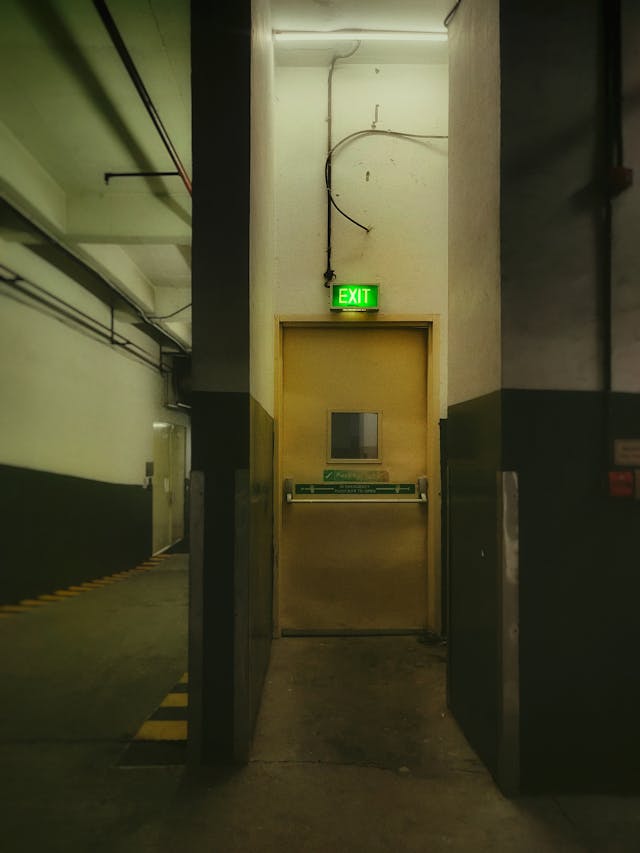 In this blog post, we explore the importance of integrating fire sprinkler systems with evacuation plans to enhance overall safety during emergencies. Effective emergency planning involves a harmonious integration of fire safety measures and evacuation plans. Fire sprinkler systems play a pivotal role in fire protection, but they are most effective when seamlessly integrated with well-thought-out evacuation strategies.
In this blog post, we explore the importance of integrating fire sprinkler systems with evacuation plans to enhance overall safety during emergencies. Effective emergency planning involves a harmonious integration of fire safety measures and evacuation plans. Fire sprinkler systems play a pivotal role in fire protection, but they are most effective when seamlessly integrated with well-thought-out evacuation strategies.
The Role of Fire Sprinkler Systems
- Rapid Fire Control: Fire sprinkler systems respond to fires swiftly, containing or extinguishing them before they can escalate. This immediate response buys precious time for evacuation.
- Smoke and Heat Control: Sprinklers also help manage smoke and heat, making it easier for occupants to navigate escape routes during a fire.
The Importance of Evacuation Plans
- Efficient Evacuation Routes: Evacuation plans define clear and efficient escape routes, ensuring that occupants can exit the building safely.
- Safe Gathering Points: Designated assembly areas are crucial for accounting for all occupants and ensuring their safety outside the building.
Integration for Enhanced Safety
- Coordination: Fire sprinkler systems and evacuation plans should be coordinated to work together seamlessly. Sprinklers can provide safe paths for evacuation by suppressing flames and reducing smoke.
- Communication: Effective communication systems, such as fire alarms and emergency notifications, are essential for alerting occupants and guiding them to safety.
Regular Drills and Training
- Practicing Evacuations: Regular fire drills and evacuation training help occupants become familiar with evacuation routes and procedures.
- Testing Sprinkler Systems: Routine testing and maintenance of fire sprinkler systems ensure they function correctly when needed.
Compliance with Regulations
Meeting Safety Codes:
Integrating fire sprinkler systems with evacuation plans is often mandated by safety codes and regulations. Compliance ensures the highest level of safety for building occupants.
Safeguard Lives with Integrated Fire Safety
Integrated fire safety goes beyond just smoke detectors and extinguishers. It’s a comprehensive approach that combines interconnected systems, clear evacuation plans, and regular maintenance. This ensures a swift response to fire emergencies, maximizing the chances of safe escape for everyone in the building.
Don’t compromise on safety—create a comprehensive emergency plan that combines the power of fire sprinkler systems with effective evacuation strategies.
F2M Fire & Drafting Designs Inc.: https://www.f2mfadds.com/contact
Standpipe Systems: Ensuring Firefighter Access and Safety
In this blog post, we will increase our understanding of standpipe systems in ensuring firefighter access and safety. In the event of a fire emergency, rapid access to a reliable water supply is critical for firefighters. Standpipe systems are designed to provide just that—easy access to water on multiple floors of a building, facilitating fire suppression efforts.
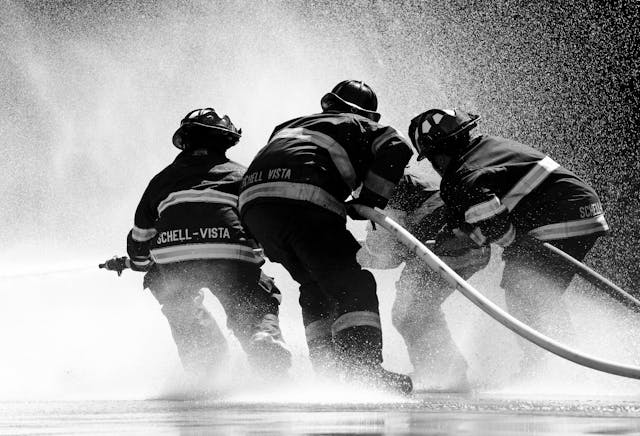
Understanding Standpipe Systems
What Are Standpipe Systems?
Standpipe systems consist of a network of pipes and outlets installed in buildings, allowing firefighters to connect hoses and access water on various floors. These systems are essential in high-rise buildings where reaching fires quickly is challenging.
Types of Standpipe Systems
There are two primary types of standpipe systems: wet and dry. Wet standpipes are filled with water at all times, while dry standpipes are only pressurized with water when needed, preventing freezing in cold climates.
The Role of Standpipe Systems
Quick Access to Water
Standpipe systems ensure that firefighters have immediate access to water sources, reducing response times and enhancing fire control.
High-Rise Building Support
In tall buildings, carrying hoses and equipment up multiple flights of stairs is impractical. Standpipes simplify firefighting efforts by eliminating the need to transport heavy gear.
Versatility in Firefighting
Standpipe systems are adaptable and can accommodate various firefighting techniques, such as hose streams, master streams, or specialized nozzles.
Standpipe System Design Considerations
Building Layout
The layout of standpipe systems is carefully planned to cover all areas of a building effectively. Proper placement of outlets ensures comprehensive coverage.
Water Supply
The capacity of the water supply and the size of pipes are calculated to meet firefighting demands, even on the highest floors.
Regular Maintenance
Routine inspections and maintenance are essential to ensure that standpipe systems remain operational and reliable.
Compliance with Regulations
Meeting Safety Codes
Standpipe systems are subject to specific safety codes and regulations. Compliance ensures that these systems function as intended during emergencies.
Enhance Firefighter Access with Expert Standpipe Design
F2M Fire & Drafting Designs Inc. specializes in designing standpipe systems that enhance firefighter access and safety. Protect your building and the lives within it by ensuring that firefighters have the tools they need to combat fires effectively.
Trust us to design standpipe systems that are ready to support firefighting efforts when it matters most.
F2M Fire & Drafting Designs Inc. 718-928-3009
The Role of Hydraulic Calculations in Fire Sprinkler System Design
In this blog post, we delve into the critical role that hydraulic calculations play in ensuring the reliability of fire sprinkler systems. The effectiveness of a fire sprinkler system depends on its ability to deliver the right amount of water at the right pressure to control or extinguish a fire. This precision is achieved through hydraulic calculations, a fundamental aspect of fire sprinkler system design.

Understanding Hydraulic Calculations
Flow Rate Calculation
Hydraulic calculations begin with determining the required flow rate of water to control a fire in a specific area. Factors such as the size of the hazard, occupancy type, and fire hazard classification are considered.
Pressure Loss Analysis
Engineers calculate the pressure loss as water travels through pipes, fittings, and sprinkler heads. This ensures that the system can maintain adequate pressure at all points, even in the farthest reaches of the system.
Pipe Sizing
The size of pipes in the system is carefully selected to minimize friction loss and maintain the required flow and pressure. Proper pipe sizing is essential for efficient water distribution.
Ensuring Uniform Water Distribution
Sprinkler Head Spacing
Hydraulic calculations dictate the spacing and layout of sprinkler heads to guarantee uniform water distribution. This is critical for consistent fire control and suppression.
Identifying Flow Demands
Hydraulic calculations identify peak flow demands, ensuring that the system can handle simultaneous activations of multiple sprinkler heads.
Accounting for System Components
Valves and Fire Pumps
Hydraulic calculations consider the capacity and performance of valves and fire pumps to ensure that they can deliver water as needed during a fire event.
Compliance and Safety
Meeting Codes and Regulations
Hydraulic calculations are an integral part of fire sprinkler system design to ensure compliance with local fire codes and safety regulations.
The Role of Hydraulic Calculations in Fire Sprinkler System Design: Conclusion
At F2M Fire & Drafting Designs Inc., we understand the critical role that hydraulic calculations play in designing reliable fire sprinkler systems. Our experienced team specializes in creating systems that meet the highest standards of safety and efficiency.
Contact us today at (718) 928-3009 or email us at info@f2mfadds.com to discuss your fire protection needs and experience the precision of our designs.
Choosing the Right Fire Sprinkler System Design for Your Business
Choosing the right fire sprinkler system design for your business is a crucial decision. Your choice can impact the safety of your employees, the protection of your assets, and your overall peace of mind. In this blog post, we’ll guide you through the considerations involved in choosing the right fire sprinkler system design to safeguard your business.
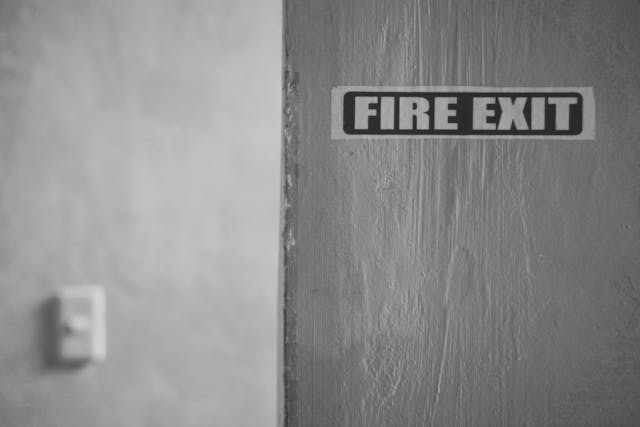
Choosing the Right Fire Sprinkler System Design
Understand Your Business Needs
Assessing Fire Risks:
Start by identifying the specific fire risks associated with your business. Consider factors such as the type of industry, materials used, occupancy load, and the layout of your facility.
Compliance with Regulations:
Ensure that your chosen design complies with local fire safety codes and regulations. Non-compliance can result in fines and legal consequences.
Types of Fire Sprinkler Systems
Wet Pipe Systems:
Commonly used in office buildings and retail spaces, wet pipe systems have water-filled pipes connected to sprinkler heads. They are quick to respond but may not be suitable for environments where freezing temperatures are a concern.
Dry Pipe Systems:
Ideal for spaces prone to freezing, dry pipe systems contain pressurized air or nitrogen in the pipes, which prevents water from entering until a sprinkler head activates.
Deluge Systems:
These systems release water from all sprinkler heads simultaneously, typically found in high-hazard areas where rapid fire control is crucial.
Pre-Action Systems:
Pre-action systems require two triggers to activate: a fire detection device and a sprinkler head opening. They are suitable for environments where false alarms could be costly.
Customized Design
Tailored to Your Business:
Work with a professional fire sprinkler system design company, like F2M Fire & Drafting Designs Inc., to create a custom solution that meets your unique business needs.
Flow and Pressure Calculations:
Professional designers will perform hydraulic calculations to ensure the system provides adequate water flow and pressure for effective fire control.
Choosing the Right Fire Sprinkler System Design: Call a Professional
Selecting a fire sprinkler system design is a critical step in safeguarding your business. At F2M Fire & Drafting Designs Inc., we specialize in tailoring fire protection solutions to match your business’s specific requirements. Contact us today to schedule a consultation and ensure your business is equipped with the ideal fire sprinkler system.
Contact us:
F2M Fire & Drafting Designs Inc.
31 South Street, Suite 3S-4
Mount Vernon, NY 10550
✆ (718) 928-3009
Email: info@f2mfadds.com
Why Regular Maintenance is Vital for Fire Sprinkler System Longevity
How important is it to regularly perform fire sprinkler system maintenance? Fire sprinkler systems are a critical component of fire protection in any building, whether it’s a residential home, commercial space, or industrial facility. These systems, however, require more than just installation; they demand regular maintenance to ensure their longevity and reliability. In this blog, we’ll explore why routine maintenance is vital for the continued effectiveness of fire sprinkler systems.
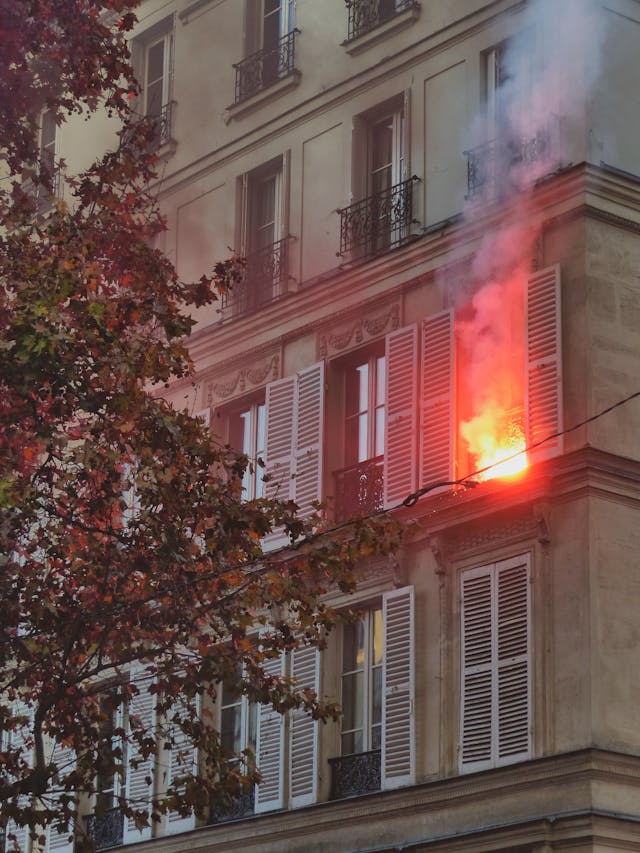
Why Perform Fire Sprinkler System Maintenance?
Ensuring Functionality
Preventing Blockages:
Over time, debris, rust, or mineral buildup can clog sprinkler heads or pipes, obstructing water flow. Regular maintenance includes inspections and cleaning to prevent blockages that could hinder the system’s operation during a fire.
Valve Checks:
Valves control the flow of water to the sprinkler system. Periodic valve testing and maintenance ensure they open as intended when activated, allowing water to reach the sprinklers.
Addressing Wear and Tear
Corrosion Control:
Water can cause corrosion in metal components of the system. Maintenance includes corrosion control measures, such as replacing corroded parts and applying protective coatings.
Replacing Damaged Components:
Over time, components like gaskets, seals, and o-rings may degrade. Routine inspections identify worn or damaged parts that need replacement to maintain system integrity.
Compliance with Regulations
Meeting Legal Requirements:
Many jurisdictions mandate regular inspections and maintenance for fire sprinkler systems to comply with safety codes and regulations. Failing to adhere to these requirements can result in penalties and legal liabilities.
Extending System Lifespan
Cost-Effective Solution:
Regular maintenance is an investment in the longevity of your fire sprinkler system. It extends the system’s lifespan, reducing the need for costly replacements or extensive repairs.
Enhancing Reliability
Peace of Mind:
Knowing that your fire sprinkler system is well-maintained provides peace of mind. In the event of a fire, you can trust that the system will function as intended, protecting lives and property.
Fire Sprinkler System Maintenance
Regular maintenance is not an option but a necessity when it comes to fire sprinkler systems. At F2M Fire & Drafting Designs Inc., we can refer you to an expert who will provide you with comprehensive fire system maintenance services. Don’t compromise on safety—take action today to secure your investment and ensure the reliability of your fire sprinkler system.
F2M Fire & Drafting Designs Inc.
31 South Street, Suite 3S-4
Mount Vernon, NY 10550
✆ (718) 928-3009
Email: info@f2mfadds.com
Commercial vs. Residential Fire Sprinkler System Design: Key Differences
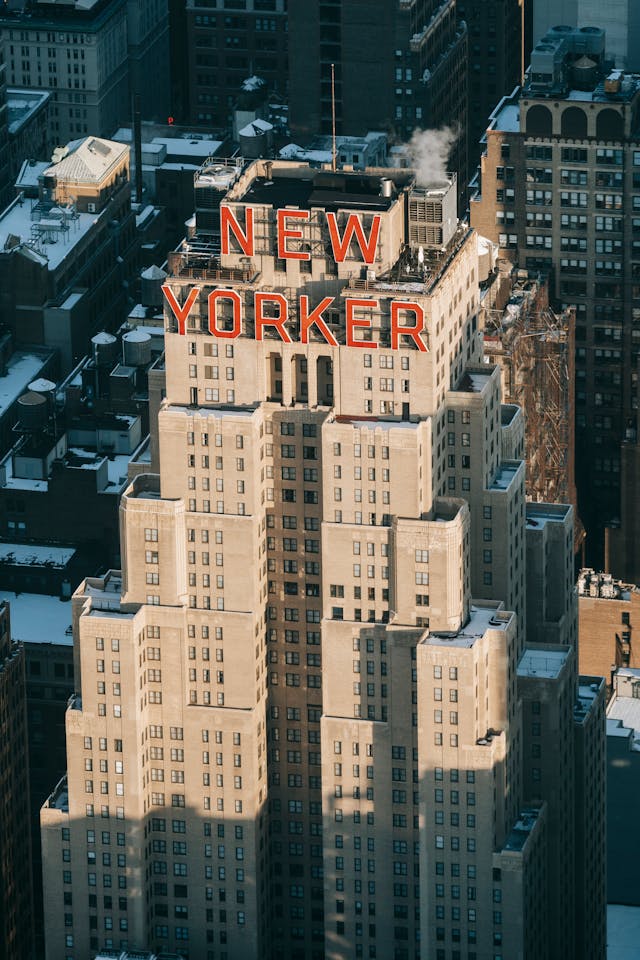 What are the main differences in commercial vs. residential fire sprinkler system design? Fire sprinkler systems are indispensable for both commercial and residential properties, but their designs differ significantly due to varying purposes and requirements. In this blog post, we’ll explore the key distinctions between commercial and residential fire sprinkler system designs and why tailoring these systems is essential.
What are the main differences in commercial vs. residential fire sprinkler system design? Fire sprinkler systems are indispensable for both commercial and residential properties, but their designs differ significantly due to varying purposes and requirements. In this blog post, we’ll explore the key distinctions between commercial and residential fire sprinkler system designs and why tailoring these systems is essential.
Commercial vs. Residential Fire Sprinkler System Design
Purpose and Occupancy
Commercial:
Commercial properties often host diverse activities, such as offices, retail spaces, and manufacturing units. Fire sprinkler systems in these settings must account for a variety of fire risks, varying occupancy loads, and the need to protect valuable assets.
Residential:
Residential fire sprinkler systems primarily focus on protecting the occupants and their belongings. They’re designed to respond quickly to household fires, ensuring safe evacuation and minimal property damage.
Water Supply
Commercial:
Commercial buildings usually have dedicated fire pumps and substantial water reserves to meet the demands of their larger, complex systems. This ensures sufficient water flow for multiple sprinkler heads simultaneously.
Residential:
Residential systems typically rely on the building’s standard water supply. They’re designed to use less water compared to commercial systems, as the goal is containment rather than full-scale fire suppression.
Complexity of Design
Commercial:
Commercial fire sprinkler systems tend to be more intricate due to the complexity of the building layout, numerous occupancy types, and specific fire hazards. Customized designs are essential for effective protection.
Residential:
Residential systems are generally simpler in design, with a focus on quick response and ease of maintenance. Standardized designs are more common in this context.
Codes and Regulations
Commercial:
Commercial properties must adhere to stringent fire codes and regulations, often requiring consultation with fire protection engineers to ensure compliance.
Residential:
Residential systems follow local building codes but generally have less stringent requirements compared to commercial installations.
Evacuation Considerations
Commercial:
Commercial buildings often require more extensive fire alarm and evacuation systems to manage large numbers of occupants. Sprinkler systems play a role in aiding safe evacuation.
Residential:
In residential settings, fire sprinkler systems complement existing smoke detectors and are primarily designed to contain fires, allowing residents to evacuate without delay.
Commercial vs. Residential Fire Sprinkler System Design: Consult an Expert
Whether you need a commercial or residential fire sprinkler system, F2M Fire & Drafting Designs Inc. has the expertise to create a tailored solution. Protect your property and loved ones—contact us today for a personalized fire protection plan.
Contact us:
F2M Fire & Drafting Designs Inc.
31 South Street, Suite 3S-4
Mount Vernon, NY 10550
✆ (718) 928-3009
Fire Sprinkler Systems: A Crucial Element of Building Safety
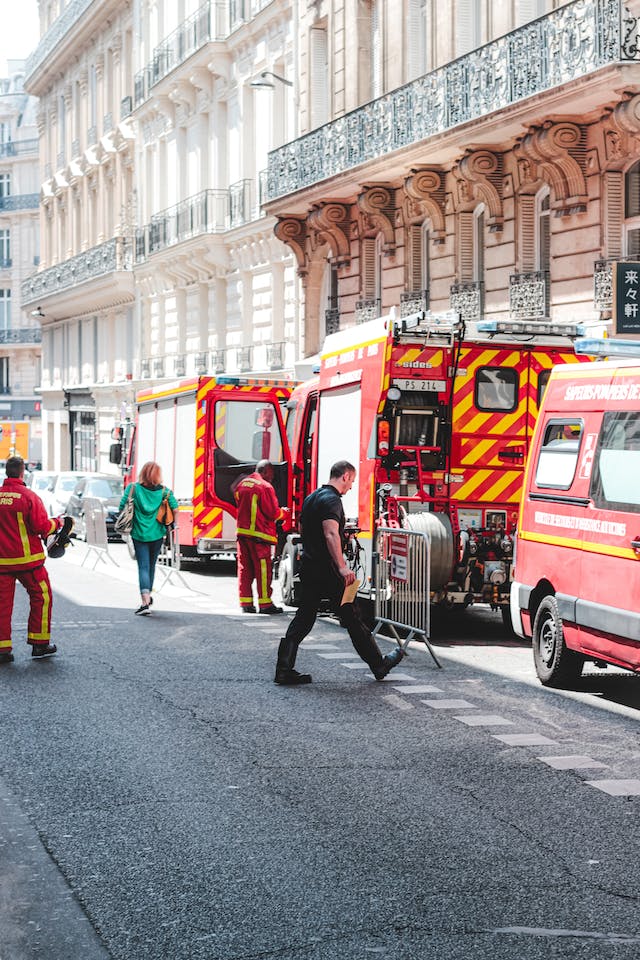 In the realm of building safety, few elements are as crucial as well-designed fire sprinkler systems. These systems stand as silent guardians, ready to respond when the unthinkable happens – a fire outbreak. In this blog post, we explore the significance of fire sprinkler systems and their integral role in safeguarding lives and property.
In the realm of building safety, few elements are as crucial as well-designed fire sprinkler systems. These systems stand as silent guardians, ready to respond when the unthinkable happens – a fire outbreak. In this blog post, we explore the significance of fire sprinkler systems and their integral role in safeguarding lives and property.
The Fire Threat
Fires are unpredictable and can escalate rapidly. Without effective fire suppression measures, the consequences can be devastating. Fire sprinkler systems are engineered to address this threat efficiently and swiftly.
How Fire Sprinkler Systems Work
Fire sprinkler systems operate on a simple yet effective principle: when a fire is detected, a sprinkler head in the vicinity activates, releasing water to control or extinguish the flames. This immediate response is vital, as it limits the fire’s growth and buys precious time for evacuation.
Comprehensive Fire Protection
One of the key advantages of fire sprinkler systems is their ability to provide comprehensive protection. These systems can be tailored to various settings, including residential, commercial, and industrial spaces. They adapt to the unique requirements of each environment, ensuring optimal safety.
Complying with Regulations
Building codes and regulations mandate the installation of fire sprinkler systems in many structures. Compliance with these standards is not only a legal requirement but also a responsible choice. Failing to meet these requirements can have severe consequences in terms of safety and potential legal liabilities.
Preventing Property Damage
Beyond saving lives, fire sprinkler systems play a crucial role in preventing extensive property damage. Swift suppression of fires reduces the destruction caused by flames, smoke, and heat, minimizing repair and reconstruction costs.
The Importance of Maintenance
To ensure the reliability of fire sprinkler systems, regular maintenance is essential. Routine inspections, testing, and upkeep activities are vital in keeping these systems in optimal working condition.
Building Safety: Choose F2M Fire & Drafting Designs Inc. for Your Fire Sprinkler System Design
At F2M Fire & Drafting Designs Inc., we understand the paramount importance of fire sprinkler systems in building safety. Our expertise lies in designing and implementing these systems to perfection, tailored to your specific needs.
F2M Fire & Drafting Designs Inc.
31 South Street, Suite 3S-4
Mount Vernon, NY 10550
✆ (718) 928-3009
Let us be your partner in ensuring the safety of your building and the well-being of its occupants.
The Science Behind the Best Fire Sprinkler System Design
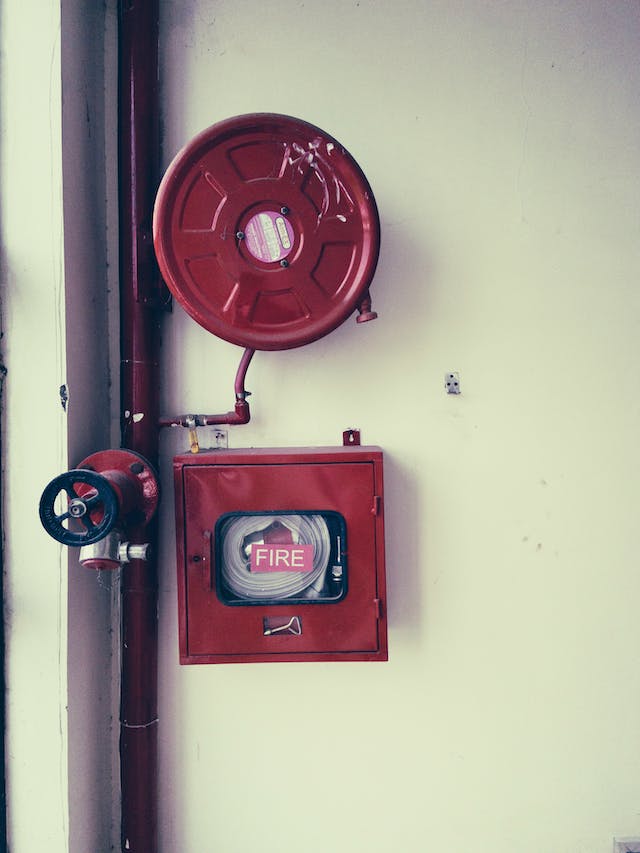 In this blog post, we will delve into the intricate science behind the creation of the best fire sprinkler system design. When it comes to fire safety, having a properly designed and installed fire sprinkler system is essential. Fire sprinkler systems can help control and even extinguish fires, saving lives and preventing property damage. However, designing a fire sprnkler system is a complex process that requires specialized knowledge ad expertise.
In this blog post, we will delve into the intricate science behind the creation of the best fire sprinkler system design. When it comes to fire safety, having a properly designed and installed fire sprinkler system is essential. Fire sprinkler systems can help control and even extinguish fires, saving lives and preventing property damage. However, designing a fire sprnkler system is a complex process that requires specialized knowledge ad expertise.
The Best Fire Sprinkler System Design: Important Factors
Understand Fire Dynamics
To design an effective fire sprinkler system, it’s crucial to comprehend the science of fire itself. Fires are chemical reactions involving three key components: heat, fuel, and oxygen. Fire sprinklers work by disrupting this triangle of combustion. The heat from the fire activates the sprinkler, releasing water to cool the surrounding area and remove heat. This interrupts the fire’s ability to sustain itself.
Hydraulic Calculations
Hydraulic calculations form the backbone of fire sprinkler system design. These calculations determine the flow rate and pressure required to control or extinguish a fire in a given area. Factors like pipe size, water supply, and hazard classification are meticulously considered to ensure the system’s effectiveness. Engineers use specialized software and mathematical equations to perform these calculations accurately.
Sprinkler Head Selection
Selecting the right type of sprinkler head is a critical aspect of fire sprinkler system design. Various sprinkler heads are designed for specific applications, such as high-temperature environments or areas with low ceilings. The choice of sprinkler head must align with the anticipated fire hazards and the unique characteristics of the building.
Spacing and Layout
The layout and spacing of sprinkler heads are determined by factors like the type of occupancy, ceiling height, and obstructions within the space. Engineers strive to create a design that ensures uniform water distribution, maximizing the system’s effectiveness in controlling fires.
Standpipe Systems
In many buildings, standpipe systems are incorporated alongside fire sprinklers to provide firefighters with a readily available water supply. The science behind standpipe systems involves designing a network of pipes and outlets that can deliver water to multiple floors and locations swiftly.
Material Selection and Corrosion Control
The materials used in the construction of fire sprinkler systems must be carefully selected to withstand the corrosive nature of water over time. Corrosion can compromise the system’s functionality, emphasizing the importance of selecting corrosion-resistant materials and implementing effective corrosion control measures.
Compliance with Codes and Regulations
The science of fire sprinkler system design also involves an in-depth knowledge of local building codes and regulations. Designers must ensure that their systems meet or exceed these requirements to guarantee the safety of building occupants and compliance with the law.
Regular Maintenance and Testing
The science doesn’t stop after installation. Ongoing maintenance and testing are essential to ensure that the system remains fully operational. Regular inspections, testing, and maintenance activities are all based on scientific principles and industry best practices.
The Science Behind the Best Fire Sprinkler System Design: Conclusion
Effective fire sprinkler system design is a meticulous and scientifically driven process. Engineers and designers rely on their understanding of fire dynamics, hydraulic calculations, material science, and compliance with regulations to create systems that safeguard lives and property. As technology advances, so does the science behind fire sprinkler systems, leading to more efficient and reliable designs that continue to save lives and protect buildings from the devastating effects of fire.
Contact us today
F2M Fire & Drafting Designs Inc.
31 South Street, Suite 3S-4
Mount Vernon, NY 10550
✆ (718) 928-3009
Email: info@f2mfadds.com
Ensuring Code Compliance for a Commercial Fire Protection System
Are you in code compliance for your commercial fire protection system? Fire protection systems are an essential safety feature for any commercial property. Not only do they help protect your employees and customers, but they can also prevent extensive property damage in the event of a fire. It’s crucial to ensure that your fire protection system is up to code to avoid costly fines and legal issues.
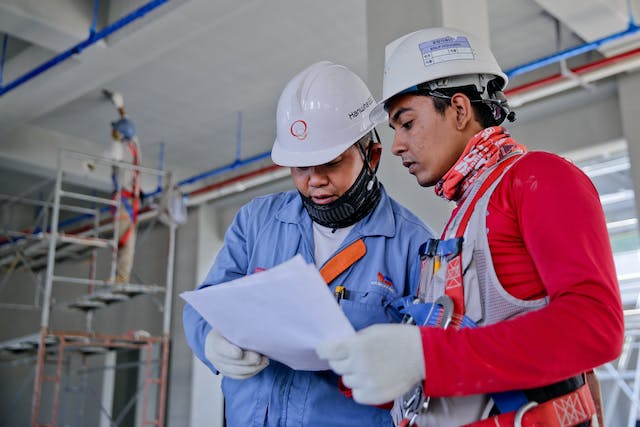
Code Compliance for Commercial Fire Protection System
Here are 4 tips to ensure code compliance for your commercial fire protection system:
1) Stay Up to Date on Local Regulations
Fire protection regulations can vary depending on the state, city, and county where your business is located. It’s essential to stay up to date on the latest regulations and codes in your area to ensure that your fire protection system meets the requirements. Ignoring these regulations can lead to costly fines and legal issues.
2) Regular Inspections and Maintenance
Routine inspections and maintenance are critical to ensuring that your fire protection system is functioning properly and up to code. Schedule regular inspections with a qualified fire protection professional to identify any potential issues and make necessary repairs. Proper maintenance can help extend the life of your system and ensure that it’s ready to perform in the event of an emergency.
3) Use Certified Products and Installers
It’s important to use certified fire protection products and installers to ensure that your system meets the required codes and regulations. Using uncertified products or installers can result in an inadequate system that doesn’t meet code requirements, putting your property and people at risk.
4) Have a Plan in Place
In addition to having a code-compliant fire protection system in place, it’s also essential to have a fire safety plan for your business. This includes having functioning smoke alarms and fire extinguishers, as well as an evacuation plan in case of an emergency. Train your employees on fire safety procedures and ensure that they know what to do in the event of a fire.
Contact F2M Fire and Drafting Designs to Ensure Code Compliance for a Commercial Fire Protection System
At F2M Fire and Drafting Designs in New York, we specialize in designing code-compliant fire protection systems for commercial properties. Our team of experts stays up to date on the latest regulations and codes to ensure that your system meets the necessary requirements. We offer a range of services, including fire sprinkler system design and installation, hydraulic calculations, standpipe layout design, and fire pump and valve room design.
Contact us today to ensure that your commercial property is protected by a code-compliant fire protection system.
F2M Fire & Drafting Designs Inc.
31 South Street, Suite 3S-4
Mount Vernon, NY 10550
✆ (718) 928-3009
Why F2M Fire and Drafting Designs is the Go-To Choice for Retail Fire System Design
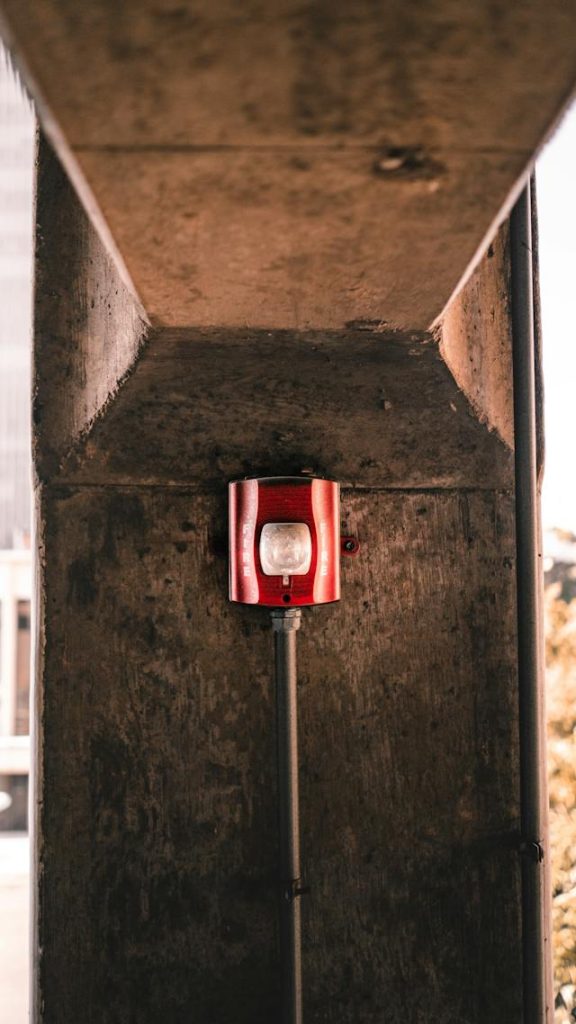 When it comes to protecting your retail business from fires, a reliable and effective fire protection system design is crucial. At F2M Fire and Drafting Designs Inc, we specialize in designing custom fire protection systems for retail properties. Here are some reasons why we are the go-to choice for retail fire system design:
When it comes to protecting your retail business from fires, a reliable and effective fire protection system design is crucial. At F2M Fire and Drafting Designs Inc, we specialize in designing custom fire protection systems for retail properties. Here are some reasons why we are the go-to choice for retail fire system design:
Retail Fire System Design Experts
Experience and Expertise
Our designers and engineers have years of experience in the industry and a deep understanding of retail fire protection needs. We stay up to date with the latest technologies and regulations to ensure that your fire protection system is up to code and functioning properly.
Customized Design Solutions
At F2M Fire and Drafting Designs, we understand that every retail property has unique fire protection needs. That’s why we offer customized design solutions tailored to the specific needs of your retail property. We take into account factors such as the size and layout of your property, the types of materials being used in your property, and the potential sources of ignition when designing your fire protection system.
Comprehensive Services
We offer a wide range of services to meet all of your retail fire protection needs. Our services include fire sprinkler system design and installation, hydraulic calculations, standpipe layout design, fire pump and valve room design, cost estimating and quantities takeoff, and fire sprinkler seismic design, calculation, and analysis. We can design and install a comprehensive fire protection system for your retail property from start to finish.
Exceptional Customer Service
At F2M Fire and Drafting Designs, we are committed to providing exceptional customer service. We work closely with our clients throughout the entire design and installation process to ensure that their needs are met and their questions are answered. We also offer ongoing support and maintenance to ensure that your fire protection system continues to function properly.
Contact F2M Fire and Drafting Designs for Your Retail Fire Protection Needs
If you’re in need of a custom fire protection system for your retail property, contact F2M Fire and Drafting Designs. Our team of experts has the experience and knowledge to design and install a system that meets your specific needs. We stay up to date with the latest technologies and regulations to ensure that your fire protection system is up to code and functioning properly.
Contact us today to learn more about our fire protection system design services.
F2M Fire & Drafting Designs Inc.
31 South Street, Suite 3S-4
Mount Vernon, NY 10550
✆ (718) 928-3009
Email: info@f2mfadds.com
Designing a Custom Fire Sprinkler System for Your Residential Property
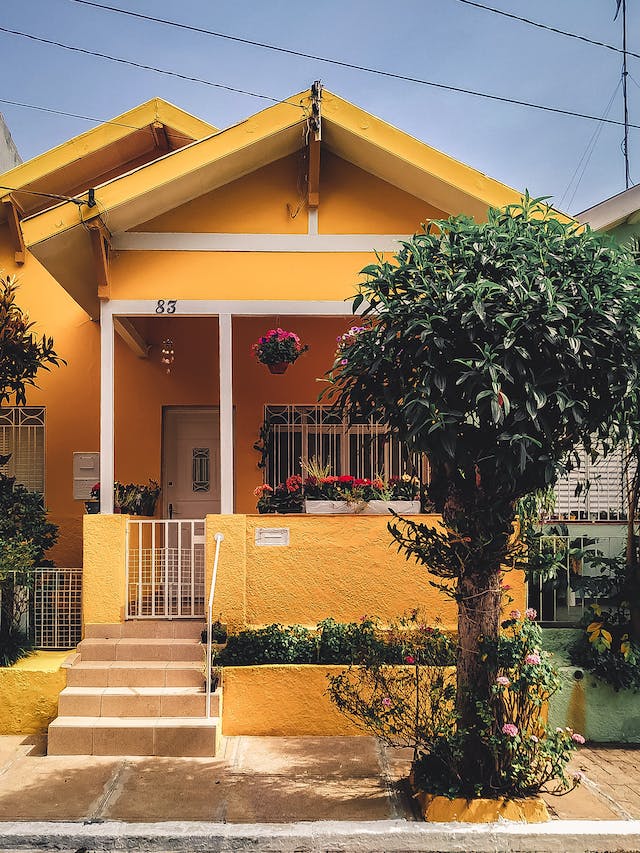 In this blog post, we will explore the process of designing a custom fire sprinkler system for your residential property. When it comes to protecting your home and family from fires, a fire sprinkler system is one of the most effective tools you can have. While many people think of fire sprinkler systems as only being for commercial properties, they can also be installed in residential properties.
In this blog post, we will explore the process of designing a custom fire sprinkler system for your residential property. When it comes to protecting your home and family from fires, a fire sprinkler system is one of the most effective tools you can have. While many people think of fire sprinkler systems as only being for commercial properties, they can also be installed in residential properties.
Assess Your Property’s Unique Needs
Every residential property is unique, and the fire sprinkler system should reflect those unique needs. Take the time to assess your property’s layout, size, and potential fire hazards to determine the type of fire sprinkler system that will best suit your needs. Consider factors such as the number of rooms in your home, the types of materials being used in your home, and the potential sources of ignition.
Work with Experienced Professionals
Designing and installing a fire sprinkler system requires specialized knowledge and expertise. Work with experienced professionals who understand the unique needs of residential properties and can design a system that meets those needs. Experienced professionals can also help ensure that your fire sprinkler system meets all relevant codes and regulations.
Choose the Right Type of Fire Sprinkler System
There are several types of fire sprinkler systems that can be installed in residential properties, including wet pipe systems, dry pipe systems, and pre-action systems. Each type of system has its own unique advantages and disadvantages. Work with your fire sprinkler system designer to determine which type of system is right for your residential property.
Proper Placement of Sprinkler Heads
Proper placement of fire sprinkler heads is crucial for ensuring maximum effectiveness. Work with your fire sprinkler system designer to ensure that sprinkler heads are placed in the right locations to provide maximum coverage. Consider factors such as the size and layout of your home and the potential sources of ignition when determining sprinkler head placement.
Regular Maintenance and Testing
Regular maintenance and testing are crucial for ensuring that your fire sprinkler system is working properly. Make sure to schedule regular maintenance and testing to identify any issues and ensure that your system is in top working order. Regular maintenance and testing can also help ensure that your system meets all relevant codes and regulations.
Contact F2M Fire and Drafting Designs for Fire Sprinkler System for Residential Property
If you’re in need of a custom fire sprinkler system for your residential property, contact F2M Fire and Drafting Designs. Our team of experts has the experience and knowledge to design and install a system that meets your specific needs. We stay up to date with the latest technologies and regulations to ensure that your fire sprinkler system is up to code and functioning properly.
Contact us today to learn more about our fire protection system design services.
F2M Fire & Drafting Designs Inc.
31 South Street, Suite 3S-4
Mount Vernon, NY 10550
(718) 928-3009
info@f2mfadds.com
Exploring the Latest Trends in Commercial Fire Protection Design
In this blog post, we will explore some of the latest trends in commercial fire protection design. As technology continues to advance, so does the technology in fire protection systems. It’s important to stay up to date with the latest trends to ensure that your property is protected against fire damage and that occupants are safe in the event of a fire.
Trends in Commercial Fire Protection Design
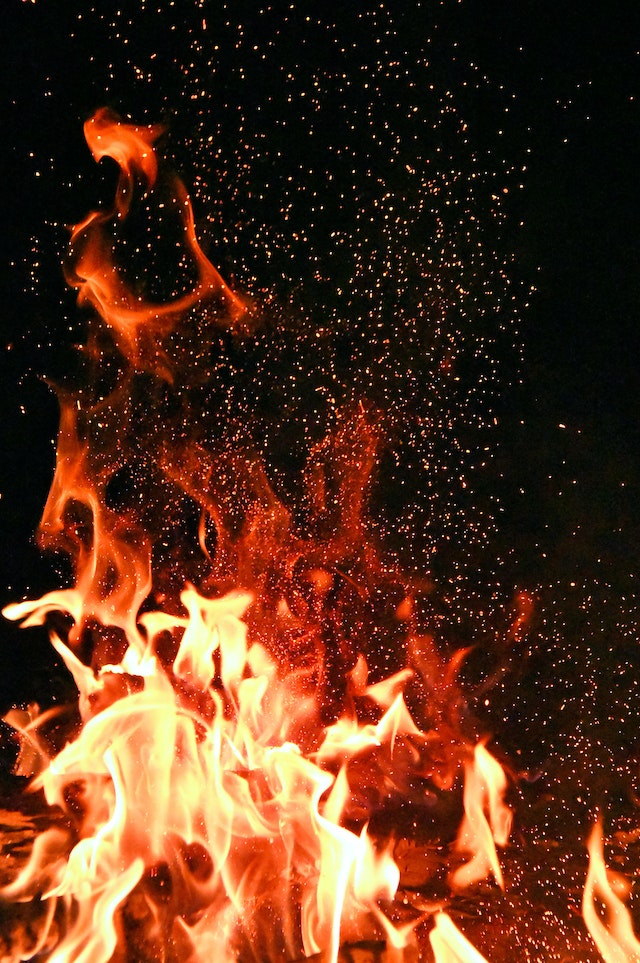
Addressable Fire Alarm Systems
One of the latest trends in commercial fire protection design is the use of addressable fire alarm systems. These systems can quickly identify the exact location of a fire within a building, making it easier for occupants to evacuate safely and for firefighters to locate and extinguish the fire. Addressable fire alarm systems can also provide detailed information about the fire, such as its size and temperature, allowing firefighters to respond more effectively.
Early Warning Fire Detection
Another trend in commercial fire protection design is the use of early warning fire detection systems. These systems use advanced technology to detect smoke or heat before a fire has even started, allowing for a faster response and potentially preventing a fire from starting altogether. Early warning fire detection systems can be particularly useful in areas where fires are more likely to occur, such as kitchens and industrial spaces.
Smart Fire Suppression Systems
Smart fire suppression systems are also becoming increasingly popular in commercial fire protection design. These systems use advanced sensors and algorithms to detect and respond to fires quickly and efficiently. Smart fire suppression systems can also be integrated with other building systems, such as HVAC and security systems, to provide a comprehensive approach to building safety.
Cost-Effective Solutions
While the latest commercial fire protection systems are exciting, it’s also important to consider cost-effective solutions for your building. At F2M Fire and Drafting Designs, we work with you to identify the best fire protection solutions for your budget while still ensuring that your building and occupants are protected against fire damage.
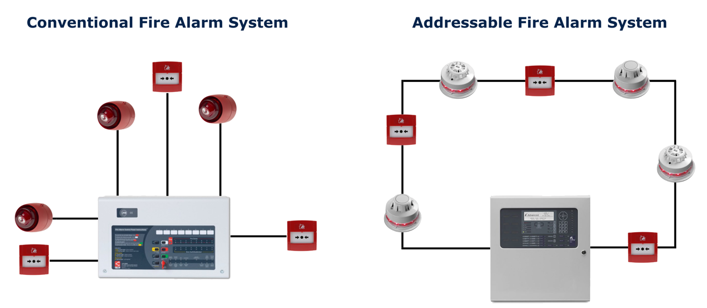
Trends in Commercial Fire Protection Design: Contact F2M Fire and Drafting Designs
If you’re interested in exploring the latest trends in commercial fire protection design, contact F2M Fire and Drafting Designs Inc. Our team of experienced professionals can work with you to identify the best fire protection solutions for your building, whether that includes addressable fire alarm systems, early warning fire detection, smart fire suppression systems, or other cutting-edge technologies.
Contact us today to learn more about our fire protection system design services.
F2M Fire & Drafting Designs Inc.
31 South Street, Suite 3S-4
Mount Vernon, NY 10550
✆ (718) 928-3009
Email: info@f2mfadds.com
Top Tips for Designing the Right Fire Protection System for Your Industrial Facility
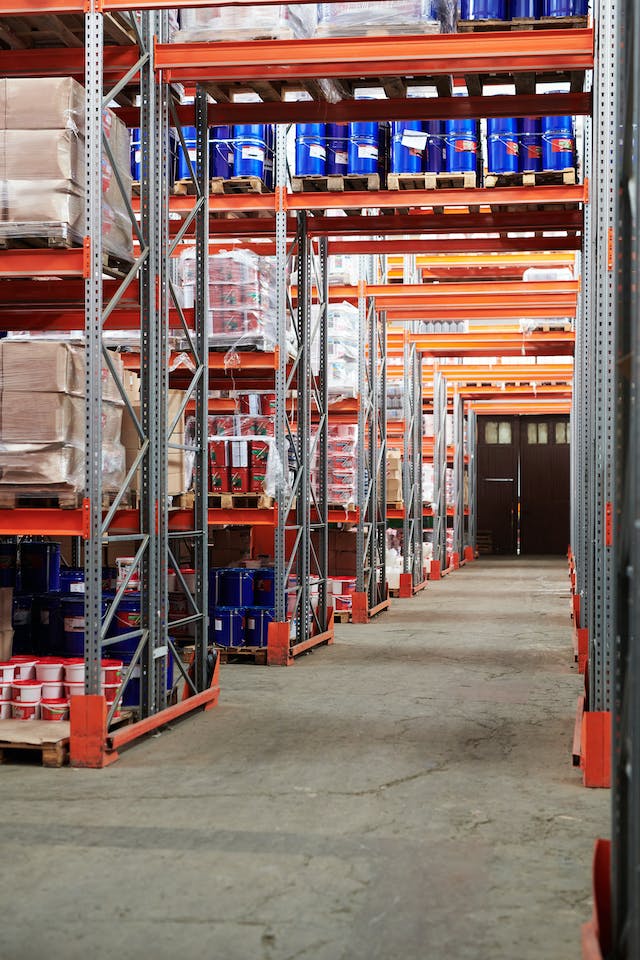 In this blog post, we will explore the top tips for industrial fire protection system design. When it comes to industrial facilities, fire protection is crucial. Proper fire protection systems can help prevent fires and minimize damage in the event of a fire. However, designing the right fire protection system for an industrial facility can be a complex task.
In this blog post, we will explore the top tips for industrial fire protection system design. When it comes to industrial facilities, fire protection is crucial. Proper fire protection systems can help prevent fires and minimize damage in the event of a fire. However, designing the right fire protection system for an industrial facility can be a complex task.
Industrial Fire Protection System Design Tips
Assess Your Facility’s Unique Needs
Every industrial facility is unique, and the fire protection system should reflect those unique needs. Take the time to assess your facility’s layout, operations, and equipment to determine the type of fire protection system that will best suit your needs. Consider factors such as the types of materials being used, the size and layout of the facility, and the types of equipment being used.
Work with Experienced Professionals
Designing and installing a fire protection system requires specialized knowledge and expertise. Work with experienced professionals who understand the unique needs of industrial facilities and can design a system that meets those needs. Experienced professionals can also help ensure that your fire protection system meets all relevant codes and regulations.
Consider the Latest Technologies
The field of fire protection is constantly evolving, and new technologies are being developed all the time. Consider the latest technologies when designing your fire protection system. For example, there are new types of fire suppression systems that use less water and can help minimize water damage in the event of a fire.
Ensure Proper Placement of Equipment
Proper placement of fire protection equipment is crucial for ensuring maximum effectiveness. Work with your fire protection system designer to ensure that equipment is placed in the right locations to provide maximum coverage. Consider factors such as the size and layout of the facility and the types of materials being used when determining equipment placement.
Regular Maintenance and Testing
Regular maintenance and testing are crucial for ensuring that your fire protection system is working properly. Make sure to schedule regular maintenance and testing to identify any issues and ensure that your system is in top working order. Regular maintenance and testing can also help ensure that your system meets all relevant codes and regulations.
Industrial Fire Protection System Design: Contact F2M Fire and Drafting Designs
If you’re in need of a fire protection system for your industrial facility, contact F2M Fire and Drafting Designs. Our team of experts has the experience and knowledge to design and install a system that meets your specific needs. We stay up to date with the latest technologies and regulations to ensure that your fire protection system is up to code and functioning properly.
F2M Fire & Drafting Designs Inc.
31 South Street, Suite 3S-4
Mount Vernon, NY 10550
✆ (718) 928-3009
Email: info@f2mfadds.com
How to Get Your Fire Protection System Up to Code with F2M Fire and Drafting Designs
In this blog post, we will discuss how F2M Fire and Drafting Designs can help you get your fire protection system up to code and provide peace of mind. Maintaining a fire protection system that is up to code is an essential part of keeping your commercial, industrial, or retail property safe. A fire protection system that meets all necessary codes and regulations can help protect against property damage and save lives in the event of a fire.
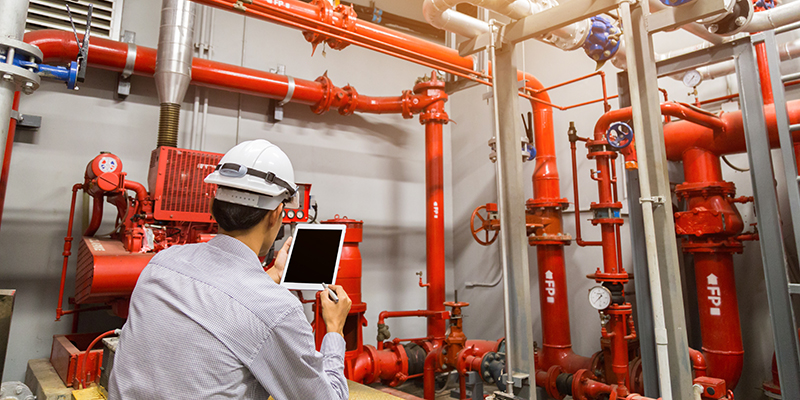
Identify Code Compliance Issues
The first step in getting your fire protection system up to code is identifying any compliance issues. Our team of experts can conduct a thorough assessment of your system and identify any issues that need to be addressed to bring your system up to code. This may include issues with sprinkler heads, pipes, valves, and other components of your fire protection system.
Develop a Plan for Compliance
Once we have identified any compliance issues, we will work with you to develop a plan to bring your fire protection system up to code. Our team has years of experience designing and installing fire protection systems, and we will develop a plan that meets all necessary codes and regulations while also ensuring the safety of your occupants and protecting your property.
Implement the Plan
After we have developed a plan for compliance, we will begin implementing the necessary changes to your fire protection system. This may include repairing or replacing sprinkler heads, pipes, valves, or other components of your system. Our team will work efficiently and effectively to minimize disruption to your business operations while ensuring that your system is brought up to code as quickly as possible.
Maximize Your Investment
At F2M Fire and Drafting Designs, we understand that maintaining a fire protection system that is up to code can be costly. That’s why we work with you to maximize your investment by identifying cost-effective solutions for bringing your system up to code. We will never cut corners or compromise on quality, but we will work diligently to ensure that you get the most out of your investment.
Ensure Ongoing Compliance
Once your fire protection system is up to code, it’s essential to ensure ongoing compliance. Our team can provide regular maintenance services to ensure that your system continues to meet all necessary codes and regulations and provide optimal protection for your building and its occupants.
Contact F2M Fire and Drafting Designs to Design Your Fire Protection System
If you need to bring your fire protection system up to code, contact F2M Fire and Drafting Designs Inc. Our team of experienced professionals can work with you to identify compliance issues, develop a plan for compliance, and implement the necessary changes to ensure that your fire protection system meets all necessary codes and regulations.
Contact us today to learn more about our fire protection system design services.
F2M Fire & Drafting Designs Inc.
31 South Street, Suite 3S-4
Mount Vernon, NY 10550
✆ (718) 928-3009
Email: info@f2mfadds.com
All About Fire Sprinkler Seismic Calculation & Analysis
Fire sprinkler seismic calculation and analysis is a critical step in the design and installation process, and it’s essential to work with experienced professionals to ensure that your fire protection system is up to code. In areas prone to earthquakes, it’s crucial to ensure that fire sprinkler systems are designed and installed to withstand seismic activity.
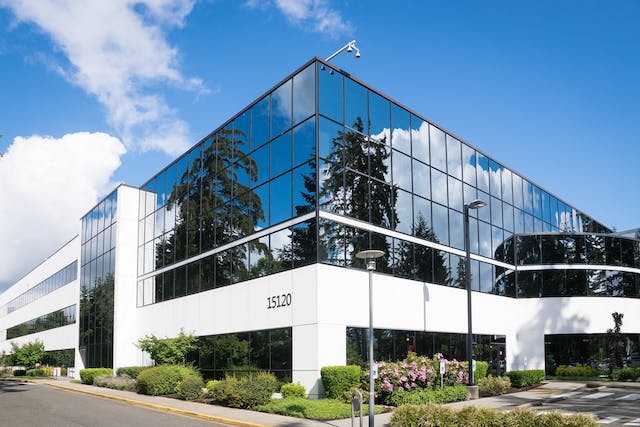
What is Fire Sprinkler Seismic Calculation & Analysis?
Fire sprinkler seismic calculation and analysis is the process of designing and installing fire sprinkler systems to withstand seismic activity. Seismic activity can cause significant damage to buildings, and it’s essential to ensure that fire protection systems are designed and installed to withstand this type of event. The calculation and analysis process involves assessing the risk of seismic activity in a given area, designing fire sprinkler systems to withstand that risk, and testing the system to ensure that it will function properly during an earthquake.
Why is it Important?
Fire sprinkler seismic calculation and analysis is important for a few reasons. First, seismic activity can cause significant damage to buildings, and fire sprinkler systems that are not designed and installed to withstand seismic activity may fail during an earthquake, leaving occupants and property at risk. Additionally, building codes and regulations require fire sprinkler systems to be designed and installed to withstand seismic activity in areas prone to earthquakes. Failure to comply with these regulations can result in fines, legal issues, and increased risk of damage in the event of an earthquake.
How is it Done?
Fire sprinkler seismic calculation and analysis involves several steps. The first step is to assess the risk of seismic activity in a given area. This involves analyzing historical data, assessing the likelihood of future seismic activity, and determining the expected intensity of an earthquake. Once the risk has been assessed, fire sprinkler systems are designed to withstand the expected seismic activity. This involves designing systems with flexible pipes, bracing systems to prevent damage from movement, and designing the system to prevent water from leaking during an earthquake. Finally, the system is tested to ensure that it will function properly during an earthquake.
Why Work with F2M Fire and Drafting Designs for Seismic Calculation & Analysis?
At F2M Fire and Drafting Designs, we have extensive experience in fire sprinkler seismic calculation and analysis. Our team of experts stays up to date with the latest codes and regulations to ensure that your fire protection system is up to code and capable of withstanding seismic activity. We work closely with you to assess the risk of seismic activity in your area and design a fire sprinkler system that will protect your building and occupants in the event of an earthquake.
Contact F2M Fire and Drafting Designs
If you’re in an area prone to earthquakes, it’s essential to ensure that your fire sprinkler system is designed and installed to withstand seismic activity.
Contact F2M Fire and Drafting Designs today to learn more about our fire sprinkler seismic calculation and analysis services.Our team of experts will work with you to design a fire protection system that meets your specific needs and keeps your building and occupants safe in the event of an earthquake.
F2M Fire & Drafting Designs Inc.
31 South Street, Suite 3S-4
Mount Vernon, NY 10550
✆ (718) 928-3009
Email: info@f2mfadds.com
The Importance of Regular Fire Sprinkler System Maintenance
In this blog post, we will discuss the importance of regular fire sprinkler system maintenance and the potential consequences of neglecting this critical aspect of fire protection. A fire sprinkler system is a critical component of any commercial, industrial, or retail property’s fire protection system. A well-designed and properly installed fire sprinkler system can quickly detect and extinguish a fire, helping to prevent damage to your building and potential harm to its occupants. However, a fire sprinkler system that is not properly maintained can be ineffective and even dangerous.
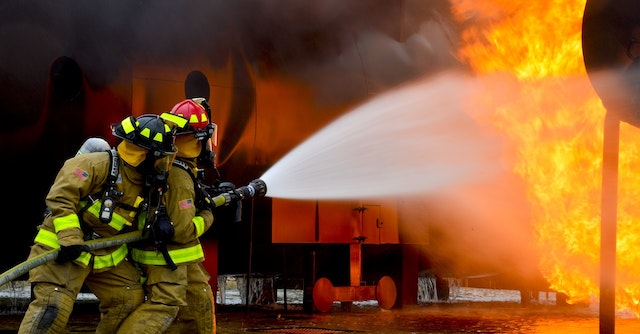
Preventing Malfunction and Failure
Regular maintenance of your fire system is critical for preventing malfunction and failure. Over time, sprinkler heads can become damaged or corroded, and pipes can become clogged or damaged, which can impair the system’s ability to function effectively in the event of a fire. Maintenance will also help ensure that sprinkler heads and pipes are in good working order and that any issues are addressed before they can cause a failure or malfunction.
Complying with Codes and Regulations
Fire sprinkler systems are subject to a variety of codes and regulations, and failure to comply with these requirements can result in fines, penalties, and legal liability. Regular maintenance of your fire sprinkler system can help ensure that your system is in compliance with all necessary codes and regulations, and that you are doing everything possible to protect your building and its occupants from the risk of fire.
Extending the Life of Your Fire Sprinkler System
Maintaining your fire sprinkler system can also help extend the life of the system. By addressing issues early and preventing malfunctions and failures, you can help ensure that your fire sprinkler system functions effectively for years to come, providing optimal protection for your building and its occupants.
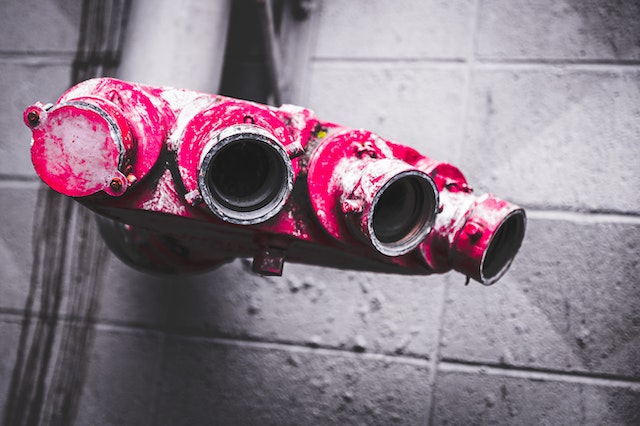
Protecting Your Investment
A fire sprinkler system is a significant investment, and regular maintenance is essential for protecting this investment. Neglecting maintenance can lead to costly repairs, replacements, or even the need to install an entirely new system. By investing in upkeep, you can help protect your investment and ensure that your fire system provides optimal protection for your building and its occupants.
Fire Sprinkler System Maintenance: Contact F2M Fire and Drafting Designs Inc.
At F2M Fire and Drafting Designs Inc., we understand the importance of regular fire sprinkler system maintenance. Consider us when choosing a contractor to design your new fire sprinkler system. Our comprehensive experience in the field of fire protection design help protect your property and tenants from fire related accidents.
Contact us today to learn more about our fire protection system design services.
F2M Fire & Drafting Designs Inc.
31 South Street, Suite 3S-4
Mount Vernon, NY 10550
✆ (718) 928-3009
Email: info@f2mfadds.com
https://www.f2mfadds.com/contact
The Benefits of Choosing F2M Fire and Drafting Designs Inc. for Your Fire Protection System Design
When it comes to fire protection system design for your commercial, industrial, or retail property, it’s important to choose a company with the experience, knowledge, and expertise to ensure that your system is designed to meet all necessary codes and regulations and provide optimal protection for your building and its occupants. F2M Fire and Drafting Designs Inc. is a leading provider of fire system design services in New York, with experienced designers who will work with you to create a comprehensive and effective fire sprinkler system.
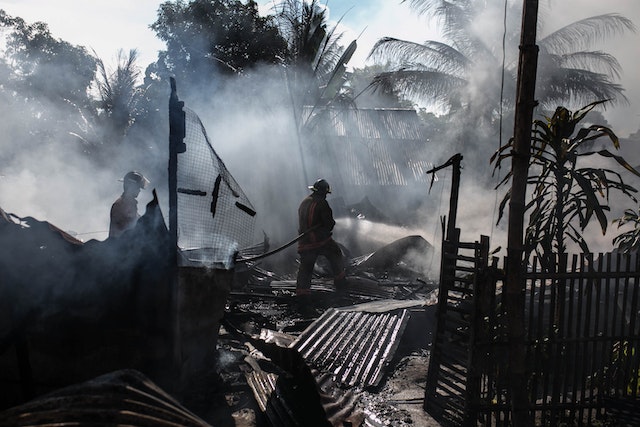
What are the Benefits of Using F2M Inc. for Your Fire Protection System Design?
1) Expertise and Experience
F2M Fire and Drafting Designs has years of experience in designing fire protection systems for a wide range of properties, from small retail stores to large industrial complexes. Our designers have the knowledge and expertise to ensure that your fire protection system is designed to meet all necessary codes and regulations, and that it provides supreme protection for your building and its occupants.
2) Comprehensive Services
F2M Fire and Drafting Designs offers a comprehensive range of fire protection system design services, including fire sprinkler system layout design, hydraulic calculations, standpipe layout design, fire pump and valve room design, cost estimating and quantities takeoff, and fire sprinkler seismic design. Our designers can work with you to create a customized design that meets the specific needs of your property and provides the best possible protection against fires.
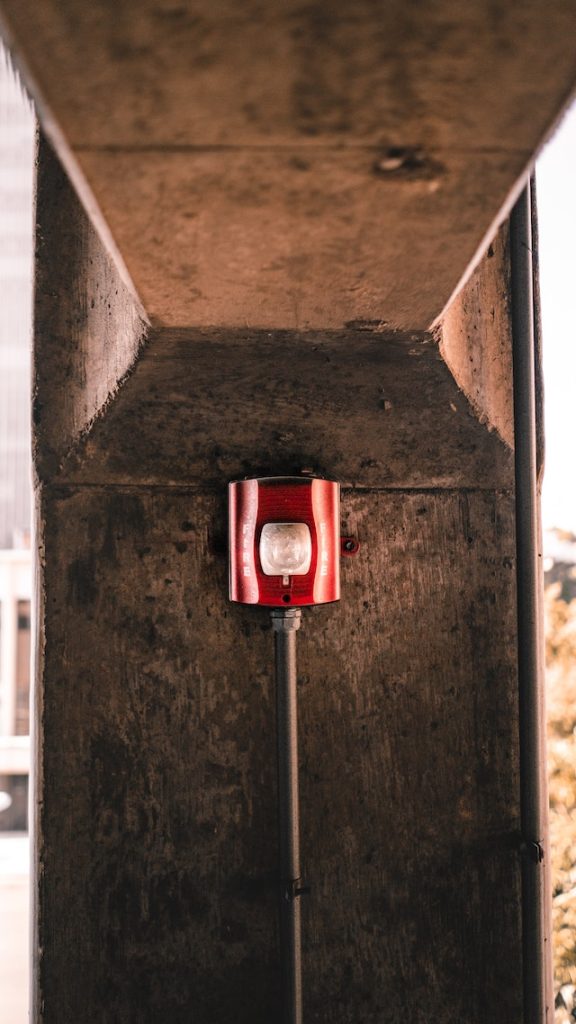 3) Quick Turnaround Times
3) Quick Turnaround Times
We understand that time is of the essence when it comes to designing a fire protection system for your property. That’s why F2M Fire and Drafting Designs is committed to providing quick turnaround times on all of our design services. Our designers work efficiently and effectively to ensure that your fire protection system design is completed on time and to your satisfaction.
4) Cost-Effective Solutions
At F2M Fire and Drafting Designs, we believe that a comprehensive and effective fire protection system doesn’t have to break the bank. We offer cost-effective solutions that provide optimal protection for your building and its occupants, without sacrificing quality or safety.
5) Personalized Service
F2M understands that every property is unique, and that’s why we offer personalized service to ensure that your fire protection system design meets the specific needs of your property. Our designers will work closely with you to understand your requirements and provide a customized solution that provides optimal protection for your building and its occupants.
Contact F2M Fire and Drafting Designs for Your Fire Protection System Design
If you are in need of fire protection system design services, contact F2M Fire and Drafting Designs Inc. Our expert designers will create a comprehensive and effective sprinkler system that meets all necessary codes and regulations.
Call or email us today for a free consultation.
F2M Fire & Drafting Designs Inc.
31 South Street, Suite 3S-4
Mount Vernon, NY 10550
✆ (718) 928-3009
Email: info@f2mfadds.com
Maximizing Efficiency in Valve Room Design for Fire Protection Systems
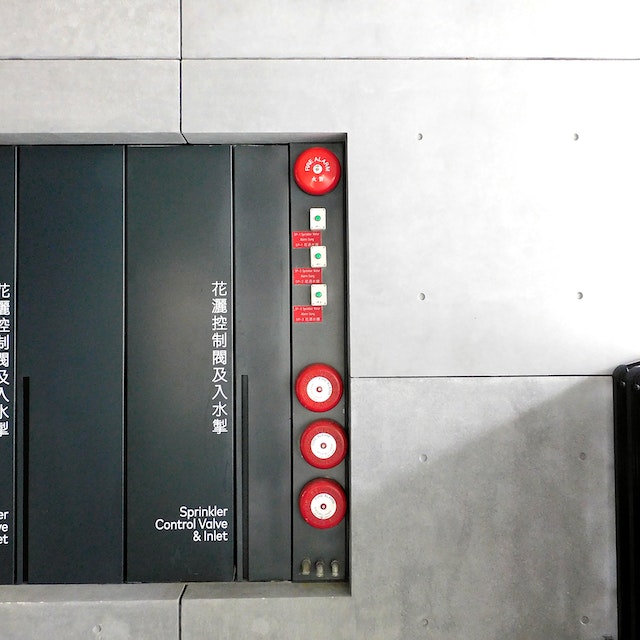 In this blog post, we will discuss how to maximize efficiency in valve room design for fire protection systems. Valve rooms are a critical component of fire protection systems in commercial, industrial, and retail properties. These rooms house the valves and control devices that regulate the flow of water to sprinkler heads and standpipes. This allows firefighters to control and extinguish fires. Designing an efficient valve room can help ensure that your fire protection system functions optimally, and that you can respond quickly and effectively in the event of a fire emergency.
In this blog post, we will discuss how to maximize efficiency in valve room design for fire protection systems. Valve rooms are a critical component of fire protection systems in commercial, industrial, and retail properties. These rooms house the valves and control devices that regulate the flow of water to sprinkler heads and standpipes. This allows firefighters to control and extinguish fires. Designing an efficient valve room can help ensure that your fire protection system functions optimally, and that you can respond quickly and effectively in the event of a fire emergency.
Consider the Layout of the Valve Room
The first step in maximizing efficiency in valve room design is to consider the layout of the room itself. The valve room should be designed to provide easy access to all valves and control devices, and to ensure that firefighters can quickly and easily locate and operate these devices in the event of a fire.
Choose the Right Valves and Control Devices
Choosing the right valves and control devices is another important consideration when designing a valve room for fire protection systems. Valves and control devices should be selected based on their reliability, durability, and ease of use. They should also be designed to meet all necessary codes and regulations.
Ensure Proper Labeling and Identification
Proper labeling and identification of valves and control devices is essential for ensuring that firefighters can quickly and easily locate and operate these devices in the event of a fire. Valves and control devices should be clearly labeled with their function, location, and any other relevant information.
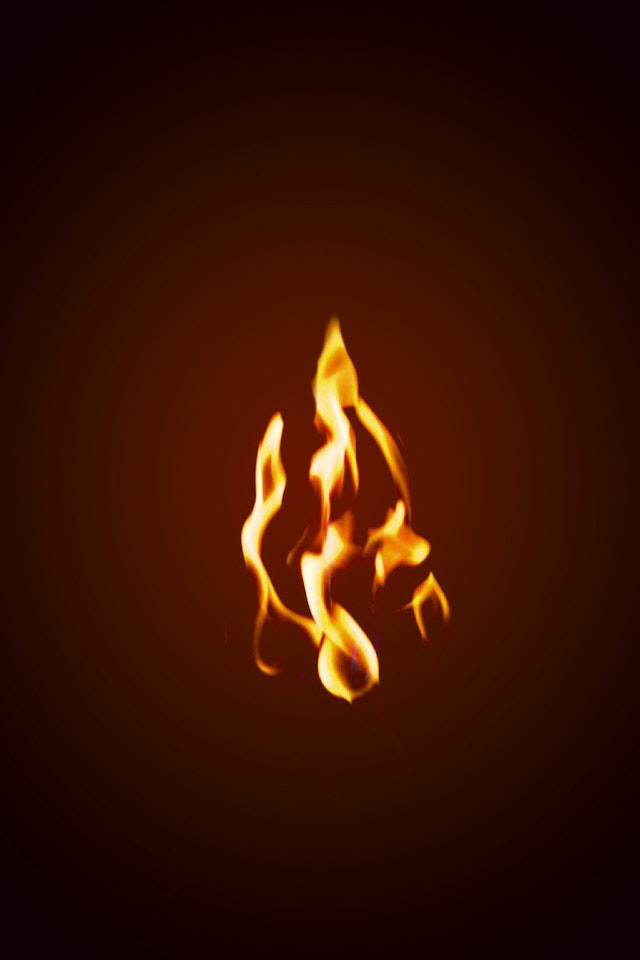 Consider the Space Requirements
Consider the Space Requirements
Valve rooms should be designed to provide adequate space for storing equipment and for firefighters to move around and operate valves and control devices. Space requirements will vary depending on the size and complexity of the fire protection system, as well as the specific needs of your building.
Plan for Maintenance and Inspection
Maintenance and inspection are critical components of any fire protection system, and valve rooms are no exception. When designing a valve room, it’s important to plan for maintenance and inspection to ensure that valves and control devices are in good working order and that any issues are addressed quickly and effectively.
Valve Room Design for Fire Protection Systems: Contact F2M Fire & Drafting Designs Inc.
If you are in need of valve room design services for your fire protection system, contact F2M Fire & Drafting Designs Inc. Our experienced designers will work with you to create a comprehensive valve room design that maximizes efficiency and ensures optimal performance of your fire protection system.
F2M Fire & Drafting Designs Inc.
31 South Street, Suite 3S-4
Mount Vernon, NY 10550
✆ (718) 928-3009
Email: info@f2mfadds.com
How to Choose the Right Standpipe Layout for Your Building
In this blog post, we will discuss how to choose the right standpipe layout for your building. A standpipe system is an essential component of any fire protection system for high-rise buildings. It is a network of pipes that supply water to fire hoses, allowing firefighters to fight fires on upper floors of a building. When it comes to designing a standpipe system, it’s important to choose the right layout to ensure that it meets all necessary codes and regulations, and provides adequate protection for your building.
Consider the Building’s Height and Floor Plan
The first step in choosing the right standpipe layout for your building is to consider its height and floor plan. The layout of the standpipe system should be designed to provide adequate water flow to all floors of the building, and to ensure that firefighters can access water quickly and easily in the event of a fire.
Consult with a Professional Standpipe Design Company
Designing a standpipe system is a complex process that requires specialized knowledge and expertise. Working with a professional standpipe design company can help ensure that your standpipe system is designed to meet all necessary codes and regulations, and that it is tailored to the specific needs of your building.
Choose the Right Standpipe Material
Standpipe systems can be made from a variety of materials, including steel, copper, and plastic. The choice of material will depend on a variety of factors, including the building’s height, the location of the standpipe system, and the local building codes and regulations.
Consider the Water Supply
The water supply for your standpipe system is another important factor to consider when choosing the right standpipe layout. You will need to ensure that your standpipe system has access to an adequate and reliable water supply, and that it is designed to provide adequate water flow to all floors of the building.
Choose the Right Standpipe Valves and Connections
The valves and connections used in your standpipe system are also important considerations when choosing the right standpipe layout. The valves and connections should be designed to provide easy access to water, and to allow firefighters to control the flow of water to specific areas of the building.
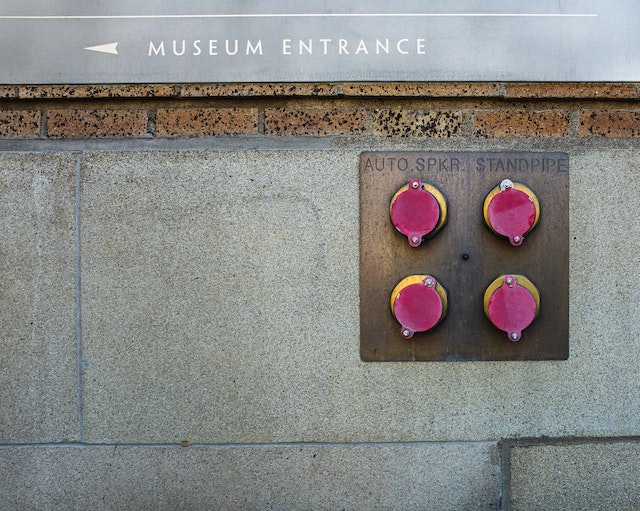
Ensure Proper Maintenance and Inspection
Once your standpipe system is installed, it’s important to ensure proper maintenance and inspection to ensure that it remains in good working order. Regular inspections and maintenance can help identify and address potential issues before they become serious problems.
Standpipe Layout for Your Building? Contact F2M Fire & Drafting Designs Inc.
If you are in need of standpipe layout design services, contact F2M Fire & Drafting Designs Inc. Our team of experienced designers can work with you to create a comprehensive standpipe layout design that provides optimal protection for your building and its occupants.
F2M Fire & Drafting Designs Inc.
31 South Street, Suite 3S-4
Mount Vernon, NY 10550
✆ (718) 928-3009
Email: info@f2mfadds.com
10 Reasons Why Every Business Needs a Professional Fire Sprinkler System
As a business owner, you have many responsibilities to ensure the safety of your employees, customers, and property. One of the most important measures you can take is to install a professional fire sprinkler system. In this blog post, we will discuss 10 reasons why every business needs a professional fire sprinkler system.
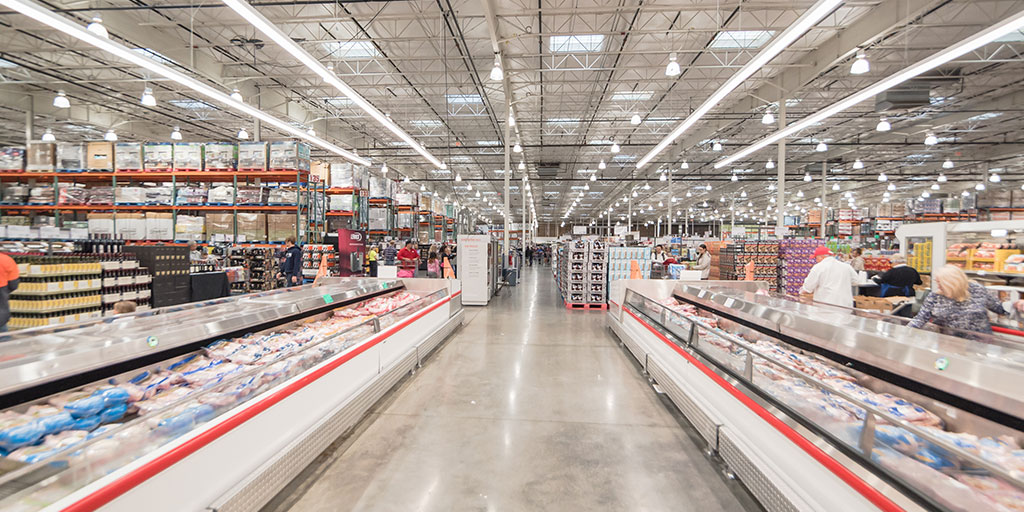
1. Protects Lives
A professional fire sprinkler system can help control and even extinguish fires, which can save lives in the event of a fire emergency.
2. Prevents Property Damage
A fire sprinkler system can also prevent or minimize property damage, saving you from costly repairs and replacements.
3. Meets Legal Requirements
Many building codes and regulations require businesses to have fire sprinkler systems installed. Failure to comply with these requirements can result in fines and legal penalties.
4. Lowers Insurance Costs
Having a professional fire sprinkler system installed can lower your insurance costs, as insurance companies view them as a valuable safety feature that can help reduce the risk of fire damage.
5. Increases Property Value
A professionally installed fire sprinkler system can increase the value of your property, making it more attractive to potential buyers or renters.
6. Provides Early Detection
Fire sprinkler systems can provide early detection of fires, alerting you and your employees to evacuate the building before the fire spreads.
7. Requires Minimal Maintenance
Professional fire sprinkler systems require minimal maintenance, making them a cost-effective and convenient solution for fire safety.
8. Can Be Tailored to Your Business Needs
Fire sprinkler systems can be tailored to meet the unique needs of your business, ensuring that your property is protected in the most effective way possible.
9. Works Even When You’re Not There
A fire sprinkler system can provide 24/7 protection, working even when you’re not there to respond to an emergency.
10. Provides Peace of Mind
Finally, having a professional fire sprinkler system installed can provide peace of mind, knowing that you have taken an important step to protect your business, employees, and customers.
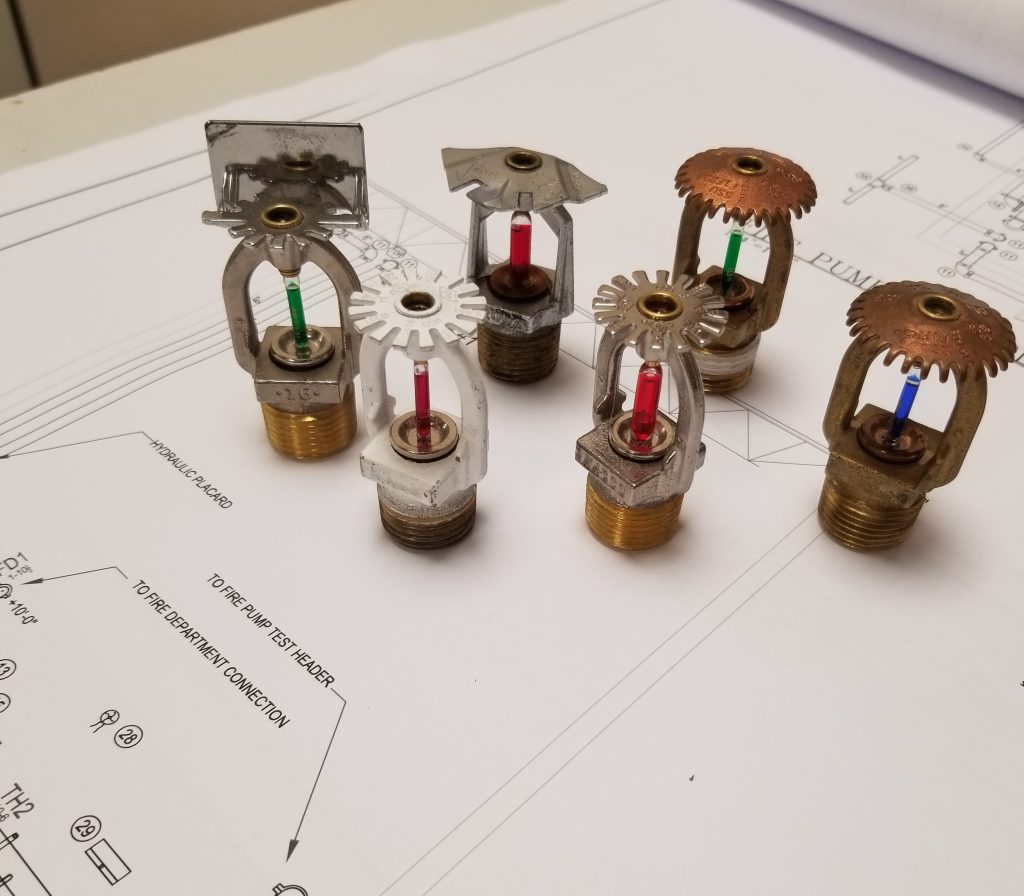
Why Every Business Needs a Professional Fire Sprinkler System: Contact F2M Fire & Drafting Designs Inc.
If you are interested in installing a professional fire sprinkler system for your business, contact F2M Fire & Drafting Designs Inc. Our team of experienced designers can work with you to create a comprehensive fire sprinkler system design that meets all necessary codes and regulations and provides optimal protection for your property and its occupants.
F2M Fire & Drafting Designs Inc.
31 South Street, Suite 3S-4
Mount Vernon, NY 10550
✆ (718) 928-3009
Email: info@f2mfadds.com
Fire Sprinkler System Designs: Why You Need Professional Help
When it comes to fire safety, having a properly designed and installed fire sprinkler system is essential. Fire sprinkler systems can help control and even extinguish fires, saving lives and preventing property damage. However, designing a fire sprinkler system is a complex process that requires specialized knowledge and expertise. In this blog post, we will discuss why you need professional help for fire sprinkler system design, and how F2M Fire & Drafting Designs Inc. can help.
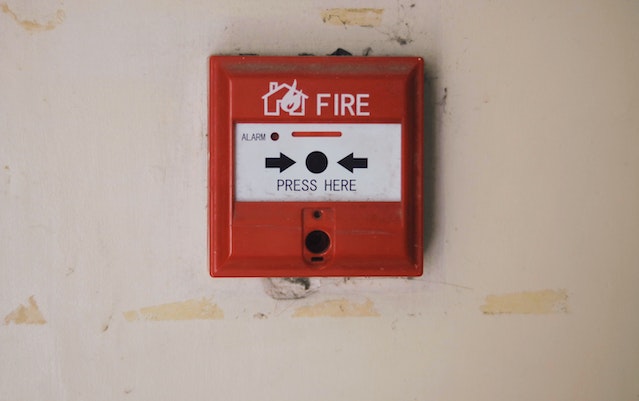
Why You Need Professional Help for Fire Sprinkler System Designs
Fire sprinkler system design involves much more than just installing a few sprinkler heads. It requires a detailed understanding of building codes and regulations, hydraulic calculations, and the unique needs of each property. Without this expertise, a poorly designed fire sprinkler system may not provide adequate protection in the event of a fire.
Working with a professional fire sprinkler system design company like F2M Fire & Drafting Designs Inc. can ensure that your fire sprinkler system is designed to meet all codes and regulations. The system will be tailored to the specific needs of your property. Our team of experienced designers can work with you to create a comprehensive fire sprinkler system layout that provides optimal protection for your property and its occupants.
Typical Fire Sprinkler System Design Services
Any professional fire system designer will offer a range of services to help ensure that your fire sprinkler system is designed to meet all necessary codes and regulations. Typical services include:
Fire Sprinkler System Design and Layout
Our team of experienced designers can create a comprehensive fire sprinkler system layout for your commercial, industrial, or retail property. We use the latest technology and software to ensure that our designs are accurate and optimized for your property’s unique needs.
Hydraulic Calculations
We can perform hydraulic calculations to ensure that your fire sprinkler system provides adequate water flow to control or extinguish fires.
Standpipe Layout Design
We can design standpipe systems to provide firefighters with quick and easy access to water in the event of a fire.
Fire Pump and Valve Room Design
We can design fire pump and valve rooms to ensure that your fire sprinkler system is properly maintained and easily accessible in the event of an emergency.
Cost Estimating and Quantities Takeoff
We can provide accurate cost estimating and quantities takeoff services to help you plan and budget for your fire sprinkler system installation.
Fire Sprinkler Seismic Design, Calculation, and Analysis
We can perform seismic design, calculation, and analysis services to ensure that your fire sprinkler system is able to withstand seismic activity and remain operational in the event of an earthquake.
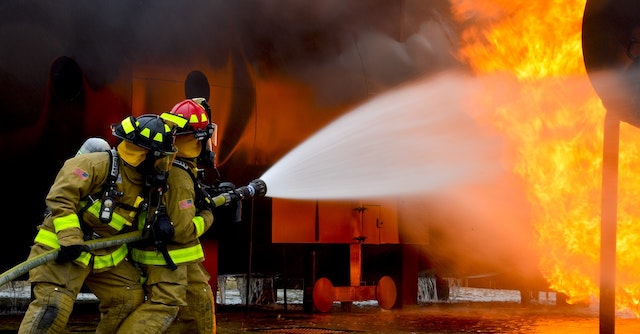
Contact F2M Fire & Drafting Designs Inc.
If you are in need of professional fire sprinkler system design services, contact F2M Fire & Drafting Designs Inc. today. Our team of experienced designers can work with you to create a comprehensive fire sprinkler system design that meets all necessary codes and regulations and provides optimal protection for your property and its occupants.
F2M Fire & Drafting Designs Inc.
31 South Street, Suite 3S-4
Mount Vernon, NY 10550
✆ (718) 928-3009
Email: info@f2mfadds.com
What is a Fire Sprinkler System Engineer?
What is a fire sprinkler system engineer? According to various reports, commercial fires can cost companies up to $2.4 billion annually. The worst part about these findings is that the likelihood of a damaging fire occurring rises significantly among companies that do not have effective fire protection services.
You will likely interact with a fire sprinkler system engineer if you get fire protection services for your commercial property. They usually take on the responsibility of an entire project and see that clients can get what they are looking for.
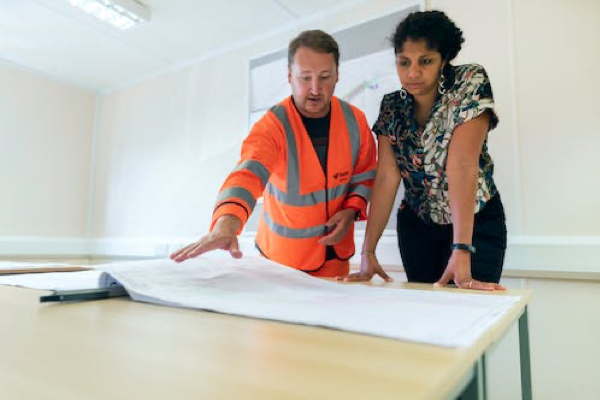
Source: Pexels
Of course, those are not the only responsibilities a fire sprinkler engineer will take on. Their job puts a lot of responsibility on their shoulders, as they must ensure that the system they install can effectively suppress and eliminate a fire.
What are the Responsibilities of a Fire Sprinkler System Engineer?
While it would not be inaccurate to say that a fire protection engineer saves people from fires, that is an overgeneralized way of looking at things. Furthermore, since firefighters also save people from destructive fires, the definition leaves out many crucial details.
Fire protection engineers, per the Society of Fire Protection Engineers, use engineering and science principles to protect people and property from fires. And in the case of commercial fire sprinkler systems, engineers focus mainly on controlling fires in businesses.
Their responsibilities will usually include the following:
Investigating the Cause of Fire Outbreak
As a fire protection engineer, the engineer must be able to learn from other incidents of fires breaking out. Therefore, they will usually investigate other company fires to see how the fire protection system failed.
Therefore, when you hire a fire sprinkler system engineer to help with your specific business, they will be able to protect your business by implementing solutions they came up with through their investigations.
Designing, Installing and Maintaining Fire Protection Systems
A fire protection engineer will start looking into your business and inspect the best installation of the necessary fire protection systems. Once they can understand the business’s layout and find all the relevant places to set up the sprinkler heads, they will move on to installing the system.
While they will have help during installation, they will be overseeing the entire process. Throughout the installation, they will check to see if there are some vulnerabilities they were unable to see during their initial inspection.
Finally, they also take up the responsibility of maintaining the different fire suppressant systems they have in place for their clients. Maintenance for a fire sprinkler system is essential, as it will dictate how long the system will last.
Mitigating Fires
Along with ensuring that the system they install can properly extinguish or suppress fires, engineers will also take on the responsibility of informing business managers or owners about vulnerabilities. More specifically, they will also be teaching them about how a fire could break out and how they can be careful to avoid such situations.
They could inform managers about how to improve their overall design and where they should keep certain flammable objects.

Source: Pexels
What is a Fire Sprinkler System Engineer: Conclusion
A fire sprinkler system engineer has a lot of responsibility on their shoulders. They have to make sure that the system they designed works and can effectively suppress a fire. Understanding what they do lets you know what to expect when hiring one.
If you’re looking for a firm to help install the necessary fire protection services, allow our Fire sprinkler system engineers at F2M Fire & Drafting Designs Inc. to help. With over 20 years of experience in the field, we offer code compliant and accurate sprinkler designs.
F2M Fire & Drafting Designs Inc.
31 South Street, Suite 3S-4
Mount Vernon, NY 10550
(718) 928-3009
info@f2mfadds.com
https://www.f2mfadds.com/contact
Qualities of the Best Fire Protection System Designers
What are some qualities to look for in the best fire protection system designers? According to information that the National Fire Protection Association found, the fire department responded to an emergency on average once every 23 seconds.
Fire hazards can always be very severe and can start spreading throughout a business relatively quickly. And one of the best ways that businesses can prepare for a possible fire hazard is by enlisting the services of a fire protection system designer.

Source: Pexels
Their responsibilities often boil down to designing and installing a fire sprinkler or suppression system that can minimize damage to your business. Furthermore, the systems that they install will also allow them to save the lives of your employees or customers. Therefore, you must find the best fire protection designer for your business.
But if this is your first time making this decision, you might need to figure out what to look for in a fire protection designer. So, here is a list of everything you need to look out for when choosing a fire protection system designer.
Qualities of Great Fire Protection System Designers
A fire protection system designer has to ensure that the system they put together can save lives and effectively suppress dangerous fires. To perform their duties effectively, they need to have the following skills.
Excellent Communication Skills
One of the most important assets that any good fire protection system designer has is excellent communication skills. Designers will always work with a team of builders to install the necessary parts for the system. So even though they can usually work alone during the initial inspection, they need to be able to communicate their goals effectively to their team.
Their communication skills also extend to their clients, as they need to understand their demands better to make a good fire protection system. They should also have the skills to water down their explanations about the systems to clients who likely understand nothing about fire protection systems.
Excellent Understanding of Industry Codes and Legal Standards
A designer must keep various building codes and regulations in mind when creating a fire protection system. Not only do they want to avoid any possible legal trouble, but following these codes is a sign of a good designer.
Excellent Observational Skills
Once the designer implements the plans they have prepared, they need to be careful that everything is going according to plan. They need to keep a keen eye on their team and see if any faults or vulnerabilities could prove problematic later.
Whether it is a crack in the pipes they are using or a loose bolt, they need to be able to find that small problem. Another important thing to consider is that they should also notice any issues with their plans and if there are any inconsistencies that they should address.
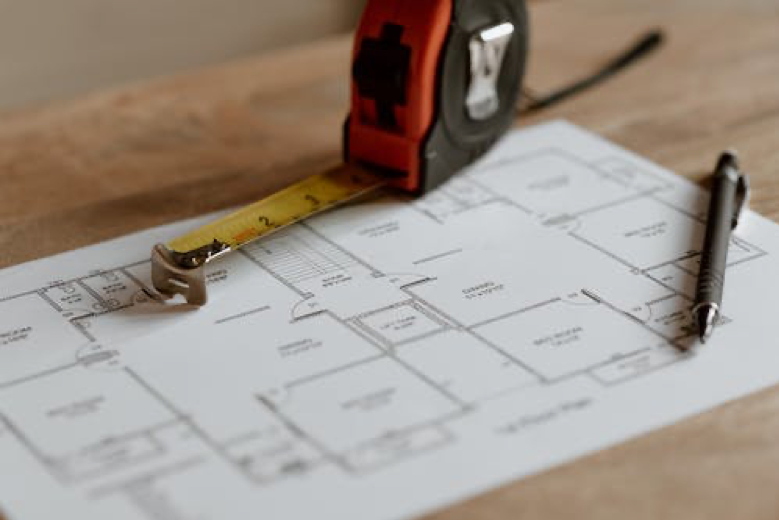
Source: Pexels
Should Solve Problems Effectively
As we mentioned earlier, there are small hiccups that can come with implementing a plan for a fire protection system. Therefore, a designer needs to be excellent at solving problems to address these small issues on the fly. Furthermore, there can also be structural challenges with the building that they need to work around to make the system.
Qualities of the Best Fire Protection System Designers: Conclusion
A good designer is essential to ensuring your firm’s safety in the long run. And when working with designers who have these qualities, you can ensure that your fire protection system will be good.
If you’re looking for a firm to help install the necessary fire protection systems, allow our experts at F2M Fire & Drafting Designs Inc. to help. With over 20 years of experience in the field, we offer code compliant and accurate sprinkler designs.
F2M Fire & Drafting Designs Inc.
31 South Street, Suite 3S-4
Mount Vernon, NY 10550
(718) 928-3009
info@f2mfadds.com
https://www.f2mfadds.com/contact
Professional Fire Sprinkler System Design
Professional fire sprinkler system design is vital for any property that is at risk for fire as they help protect them. Since fire related accidents are rare, your system will mostly remain inactive. However, you must still install it to mitigate fire risk, ensuring you can extinguish it quickly. While you will come across a wide range of fire sprinkler systems, only some options may suit you because each system is made with a particular area in mind.
So, before installing a professional fire sprinkler system, ensure you are familiar with its design and whether it suits your location. As the names suggest, wet pipe sprinkler systems contain water, and dry systems have water and air. The water in dry sprinkler systems is held back with the help of a valve.
Sprinkler systems with wet pipes are usually the go to option for most business and residential settings. Meanwhile, sprinkler systems with dry pipes are suitable for places where water based piping would not be practical. Depending on your particular building’s characteristics, installing a sprinkler system could be mandatory. Now, let us talk about the designs of different fire sprinkler systems.
A Look at Fire Sprinkler System Designs
It must be clear that wet and dry fire sprinkler systems have vastly different designs and features. Let us discuss them to see what makes them unique:
Wet Fire Sprinkler Systems
Sprinkler systems with wet pipes contain pressurized water. The primary purpose of adding this water to the pipe is to ensure that the system can extinguish the fire immediately. Once the sprinkler system’s head opens after responding to heat, it releases water at a high pressure to put off the fire.
Because of this, wet pipe systems respond more rapidly than other sprinkler systems. It is also worth keeping in mind that the response time is independent of the water supply and the sprinkler head.
Wet pipe systems do not cost much, and their response time is quite fast, making them the go to option for most properties. Additionally, these systems do not require much maintenance either. The only downside of this system’s design is that since its pipes store water, they can freeze during the winter and possibly crack or break.
Plus, there are certain situations where properties contain flammable substances, and the system may need to release water immediately. It may not be possible if the property uses a wet pipe system, as every sprinkler head releases water individually after spotting heat. So, activating the heads all at once is not possible.
Fire Sprinkler Systems with Dry Pipes
Dry pipe fire sprinkler systems are quite similar to wet pipe systems in that their sprinkler heads become active in response to heat. The main difference between the two is that dry pipes contain nitrogen or compressed air rather than water. They also contain a valve, which controls the water entrance. Once a sprinkler head becomes active, it releases the air, opening the valve because of the pressure and letting water enter the system.
While dry pipe fire systems are quite effective and serve their purpose efficiently, their response time is slower than wet pipe sprinkler systems.
Professional Fire Sprinkler System Design: Final Thoughts
Do you want to safeguard your property from potential fire accidents? If so, you will need experts familiar with fire sprinkler system designs. That is where F2M Fire & Drafting Designs Inc. can help you. Contact us to explain your fire safety needs, and one of our experts will be right there to provide you with a swift and effective solution.
F2M Fire & Drafting Designs Inc.
31 South Street, Suite 3S-4
Mount Vernon, NY 10550
(718) 928-3009
info@f2mfadds.com
https://www.f2mfadds.com/contact
Fire System: Standpipe System Design
 When constructing a building, contractors often manage the building and design of standpipe systems as part of the fire sprinkler system. However, it’s usually best to contract with a professional standpipe system design company for the fire suppression system of your property. Surprisingly, most building owners need to become more familiar with the nuances related to standpipe system design. Because of this, they often compromise on cost and efficiency.
When constructing a building, contractors often manage the building and design of standpipe systems as part of the fire sprinkler system. However, it’s usually best to contract with a professional standpipe system design company for the fire suppression system of your property. Surprisingly, most building owners need to become more familiar with the nuances related to standpipe system design. Because of this, they often compromise on cost and efficiency.
Therefore, it would be best to learn about standpipe system design when creating and incorporating your fire sprinkler system design. Mentioned below is a list of important questions you should consider asking yourself when comprehending the design:
- Which standpipe would be suitable for your property?
- How does the installation process work?
- When does installing a standpipe system become a must?
- What is the ideal place to install hose outlets?
- How much pressure do hose outlets offer?
- What’s the best flow rate?
What are Standpipes?
According to the National Fire Protection Association, standpipes consist of a piping network, hose connections, valves, and several other items for protecting your property from fire. It is important to install each outlet in a fashion that allows the water to flow through nozzles and hoses in spray or stream patterns.
Standpipes have a complex structure that helps extinguish fires on any property. Besides a property’s interior, standpipe systems also safeguard building structures. A standard standpipe system has a vertical hose that creates high water pressure with the help of a pump. In most cases, standpipe systems are attached to sprinkler systems. Firefighters can utilize these systems to manage fires strategically.
Therefore, it’s vital to install each outlet properly. Better yet, consider getting an expert for the installation to avoid any hassle in the future.
Different Standpipe System Classes
Standpipes are available in different classes, and each class is helpful during different conditions. So, it is vital to choose the right standpipe variant. Mentioned below is a close look at the three most common classes of standpipes:
Class One
The class 1 standpipe has a connection of two and a half inches, and only experts use it. Installing this standpipe variant without sufficient knowledge and experience can be quite dangerous. Since the water pressure in class one standpipes is quite high, it would be best to consult a pro to take care of tasks like these. It is also worth keeping in mind that class one standpipes do not come in a hose, which is why firefighters need to bring one along.
Class Two
Class two standpipes have hoses that measure around 1.5 inches. Usually placed in hallways, class two standpipes are ideal for emergencies, which is why you should consider placing them in hallways and similar locations.
Operators must know how to use this type of standpipe because using the hose is risky for unskilled individuals. The class two standpipes have almost become obsolete because of how unsafe they are, and even older buildings are replacing them with new variants.
Class Three
These standpipes are suitable for almost any condition and contain class one and two standpipe features. Since class three standpipes exert water with pressure, experts advise that only experts should operate this system. So, whenever there is an emergency, consider enlisting help from trained individuals or firefighters.
Standpipe System Design: Final Thoughts
The standpipe design you include in your property is vital. Since these systems can be quite complex, getting an expert to choose the best one for your property and install it is vital.
Get in touch with F2M Fire & Drafting Designs Inc. to learn which standpipe class would suit your property. With our professionals by your side, you can breathe a sigh of relief knowing that you will get the best fire suppression solution for your building.
F2M Fire & Drafting Designs Inc.
31 South Street, Suite 3S-4
Mount Vernon, NY 10550
(718) 928-3009
info@f2mfadds.com
https://www.f2mfadds.com/contact
Fire Sprinkler System Design for Industrial Properties
How do you go about fire sprinkler system design for industrial properties? Fire sprinklers are one of the oldest and safest fire protection systems companies still use today. They continue to be reliable in all sorts of businesses and companies, especially where the chances of a fire erupting are high.
These systems do not just suppress or extinguish the fire, but they can also give people inside the area more time to escape. Sprinklers can release water or other substances to help douse the flames and save people inside. Sometimes, water is not enough to extinguish or suppress a fire.
The business could be colder, so the water is more likely to freeze before it reaches the fires. In these situations, they could use different vapors to extinguish the fire.
Fire protection systems are essential for any commercial property, especially if your firm focuses on industrial operations. But before installing a fire suppressant system on your property, you must learn about its different types to choose which one is right for you.
Types of Sprinkler Systems
Sprinklers come in different types to meet the needs of specific individuals and their businesses. By understanding the types of sprinkler systems available, you can make a better decision for your business.
Reaction Sprinkler Systems
Reaction sprinkler systems are the most complex type of sprinkler system since it makes use of various technologies to control a fire effectively. Each sprinkler head in the system activates individually, making them great in places with products susceptible to water damage.
The first sensor detects a sudden change in temperature or smoke in the environment. This trigger will open the valve to let the water flow into the sprinklers. From there, individual sprinklers will have their sensors to control which places are doused with water.
This system is especially useful in warehouses with different types of products or in museums with art pieces.
Dry Pipe Systems
Dry pipe sprinkler systems are fundamentally similar to wet pipe systems, with the only difference being that they use vapors or gas instead of water. Once the sensor on the sprinkler head triggers because of the heat, it will start to release the smoke that will suppress or extinguish the fire.
People must evacuate quickly from the premises when these sprinklers go off since the vapors can harm health. These sprinklers can also work with different systems, such as Reaction sprinkler systems.
Deluge Sprinkler System
The deluge sprinkler system works completely opposite of a reaction system. Instead of having two authentications before letting go of the sprinklers, the deluge system makes water flow from all sprinkler heads at once.
So as soon as the sensors pick up a major change in the temperature, they will release all of the sprinkler heads at once. This sprinkler system is especially effective in smaller industrial spaces, where a fire could spread quickly. Therefore, flooding the area ensures that the fire does not spread.
Wet Pipe System
The wet pipe system is the most common type of sprinkler system, as it flows water through the sprinklers. This water will eventually make its way out of the sprinkler heads and douse the flames.
Fire Sprinkler System Design for Industrial Properties: Conclusion
Fire sprinkler systems for industrial locations are similar to those in every other workplace. The differences often lie in how much water they release and the type of liquid they use.
If you’re looking for a firm to design and help install necessary fire protection systems, allow our experts at F2M to help. With over 20 years of experience in the field, we offer code compliant and accurate sprinkler designs.
F2M Fire & Drafting Designs Inc.
31 South Street, Suite 3S-4
Mount Vernon, NY 10550
(718) 928-3009
info@f2mfadds.com
https://www.f2mfadds.com/contact
Commonly Used Fire Sprinkler System Design Programs
Using the best programs for fire sprinkler system design is vital for any property. With technology advancing at an unprecedented rate, you can now find tools capable of performing automatic calculations, irrespective of the condition. Accurate, three dimensional designs are vital to ensure you can gauge the status of the fire sprinkler system on your property.
How to Choose Fire Sprinkler System Design Software?
With a wide range of fire sprinkler computer programs, selecting one that meets your particular requirements can take time and effort. Nevertheless, here are some tips to help you choose the best sprinkler system computer program.
Accuracy
It is vital to get a program that considers different 3D environment variables. You may be surprised to learn that there are even programs that consider pipe elevations when performing calculations. An accurate three dimensional representation can also help people see their system’s fittings, pumps, and pipes most realistically, helping them evaluate their system effectively.
Evaluate System Requirements and Compatibility
Most fire sprinkler programs are resource hungry and have particular requirements for working properly. Therefore, before choosing software, check your system thoroughly to determine whether it is compatible. Try checking the software on your system. Doing so will help you see if it can run the program smoothly. Try looking for another program if the one you tested doesn’t work properly.
Check the Program’s Ability to Perform Automatic Calculations
Double checking your data is vital for fire sprinkler design programs. However, if the software’s automatic calculations are inaccurate, you may face many issues. Therefore, check every program’s calculation accuracy before choosing it for your property’s sprinkler system design.
Common Fire Sprinkler System Design Computer Programs
Mentioned below is a list of common computer programs people use for their fire sprinkler system design:
Auto Sprink
This program is the industry leader as far as fire sprinkler programs go. What’s most impressive about Auto Sprink is that it offers users a test demo, helping them gauge whether the program would suit them. Commercial construction projects often use this software to perform hydraulic calculations, drawings, stock listing, etc.
You can use this computer program to design sprinkler systems in a three dimensional space. Auto Sprink offers users a highly accurate design environment, allowing them to create a precise design for their sprinkler system’s pipes. Here are some of the best features of this program:
- It provides a precise environment for 3D design
- The software provides access to a vast database
- Suitable for massive commercial construction projects
- It can only work on Windows systems
FireACad
The FireACad sprinkler design program allows users to create pipe networks and perform precise automatic calculations. Additionally, this software provides drawing errors, ensuring you can adjust your fire sprinkler system design immediately. Using this software is relatively straightforward because of its excellent, polished interface. The only downside of this program is that it does not support the mac operating system. Mentioned below are some of this tool’s most important features:
- The price tag is quite competitive.
- You can perform automatic hydraulic calculations with this program
- Users can produce calculation reports according to the NFPA Code
Fire Sprinkler System Design Programs: Final Thoughts
Fire sprinkler system programs are vital to ensure your property’s fire suppression system works effectively. If you need help deciding which option to choose and how to best design a new fire system, get in touch with F2M Fire & Drafting Designs.
Contact us today and our experts will check your property thoroughly to determine the best software to use to design the best fire sprinkler system for your property. They will also use their expertise to calibrate and operate the software, ensuring your fire sprinkler system works seamlessly.
F2M Fire & Drafting Designs Inc.
31 South Street, Suite 3S-4
Mount Vernon, NY 10550
(718) 928-3009
info@f2mfadds.com
https://www.f2mfadds.com/contact
Differences Between Fire Sprinkler System Designers and Installers
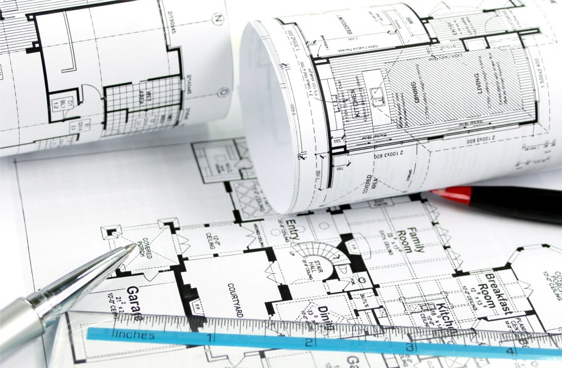 What are some differences between fire sprinkler system designers and installers? Fire sprinkler systems are a simple yet vital component of any commercial or domestic building’s fire protection system. In most cases, installers attach this system to side walls or ceilings. These systems have a water supply, sprinkler heads, and a piping system to distribute water. Sprinklers discharge water automatically whenever they detect a fire.
What are some differences between fire sprinkler system designers and installers? Fire sprinkler systems are a simple yet vital component of any commercial or domestic building’s fire protection system. In most cases, installers attach this system to side walls or ceilings. These systems have a water supply, sprinkler heads, and a piping system to distribute water. Sprinklers discharge water automatically whenever they detect a fire.
Contrary to popular belief, however, they do not have any smoke triggers. Since these systems extinguish or control fires, they are fire suppression and detection systems. Hiram Stevens Maxim was the pioneer behind sprinkler systems and founded them during the latter part of the 19th century. Now, countries across the globe use these systems with commercial and residential buildings utilizing their ability to extinguish the fire.
What is a Fire Sprinkler System Designer
People often mix up fire sprinkler installers and designers. The two are vastly different and have varying responsibilities. Let us start by talking about the designers. Fire sprinkler designers are in charge of developing and designing sprinkler systems for aiding or preventing fire.
Fire sprinkler system designers’ main responsibilities include performing in depth analysis and research, gaining feedback from experts and customers and working on it, producing samples or prototypes, and collaborating with technicians and engineers.
Furthermore, fire sprinkler system designers sometimes work on design enhancements and upgrades, establish testing structures, repair and install systems, conduct maintenance checks, etc., to ensure the systems remain efficient.
Main Responsibilities of Fire Sprinkler System Designers
Mentioned below is a list of the main responsibilities of fire sprinkler system designers and the tasks their roles typically require to perform.
- Instructing and coordinating public CPR educational sessions.
- Collaborating with skilled professionals like HVAC and mechanical installers, electricians, etc.
- Following every OSHA law and standard.
- Submitting design ideas to the AHJ for approval.
- Conducting in depth field surveys.
- Designing site water supplies, as built drawings, and plumbing drawings, and testing them.
- Reading and interpreting structural and architectural MEP drawings.
What is a Fire Sprinkler System Installer?
Fire sprinkler installers play a massive role in ensuring homes and buildings remain safe. These professionals are responsible for implementing a wide range of sprinkler systems, which include pre action, deluge, wet, dry and automatic sprinkler systems. Installers must understand blueprints and diagrams and know how to construct valves and protection piping.
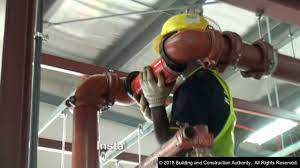 Additionally, installers must meet certain safety regulations to ensure the system works efficiently and doesn’t harm anyone. An installer’s work often requires them to use power and hand tools. Their job requires them to use lift equipment and climb ladders for work in high places. Common skills of almost every fire sprinkler system installer include troubleshooting, mechanical, and communication skills.
Additionally, installers must meet certain safety regulations to ensure the system works efficiently and doesn’t harm anyone. An installer’s work often requires them to use power and hand tools. Their job requires them to use lift equipment and climb ladders for work in high places. Common skills of almost every fire sprinkler system installer include troubleshooting, mechanical, and communication skills.
What Makes Installers and Designers Different?
As their respective names suggest, fire sprinkler installers are responsible for connecting or attaching the system to a commercial or public building. On the other hand, designers focus on creating well thought out sprinkler designs to ensure they are safe and work efficiently.
Differences between Fire Sprinkler System Designers and Installers: Final Thoughts
Almost every area requires a different fire sprinkler system design, and the last thing you need to do is use one that wasn’t made for your building. For this reason, it is vital to collaborate with an experienced fire sprinkler designer. Doing so will help you get a sprinkler system specifically made for your place. Contact F2M Fire & Drafting Designs Inc. to get your sprinkler design solution.
Once you contact us, we will discuss your project and needs. We will design a professional code compliant fire sprinkler system design suited for your particular particular project.
F2M Fire & Drafting Designs Inc.
31 South Street, Suite 3S-4
Mount Vernon, NY 10550
(718) 928-3009
info@f2mfadds.com
https://www.f2mfadds.com/contact
Cost Estimation & Quantities Take Off For Fire Systems
Do you want to know more about cost estimation & quantities take off for fire systems? Getting ready to start your business can feel liberating since you no longer have to answer to anyone. However, starting your own business also means you have a lot more responsibility, which is why you need to take the right steps to install a fire suppressant system.
Fire suppressant systems can easily become one of the biggest expenses of setting up your business, especially if you have yet to experience budgeting for it. Luckily, when working with a fire protection system designer, they can help with the budget estimation process.
However, by understanding cost estimation, you can play a more active role in setting your business up. Because remember, according to the National Fire Protection Association, companies without effective fire suppression systems are more likely to suffer from a fire.
Cost Estimation with a Fire Protection System Engineer
According to the Society of Fire Protection Engineers, these engineers take on the responsibilities of designing and preparing the necessary custom fire protection system. Therefore, when working on the cost estimation process, here are a few things you should consider:
Think About the Project as a Whole
The first thing you should consider during cost estimation is the team your designer is working with. Remember, working with less experienced individuals can often be more expensive than if you hired professionals. Due to their lack of experience, they might need to choose the right materials for the job or install the parts properly.
Furthermore, the likelihood of injury can also skyrocket when working with an inexperienced team, causing delays and various other issues. Therefore, you should consider the project’s scope and see if the team has the relevant experience to perform the task.
Go Over the Spec Sheet
Before the fire suppression designer can implement the necessary plans, you should ask them to run you through everything they are using. The materials you ask them to get should have their relevant prices mentioned.
But other than trying to check the prices of the materials, you also want to see if there are any changes to the plan or if they have everything they need. Doing a final headcount before starting the project is essential since it can prevent a situation where they have already started installing the system only to find that they are missing something.
Starting takes off
Once you have checked that everything is ready, you can give the designer the green light to start takeoff. It’s the most difficult part of cost estimation since the designer will have to track the materials they have brought and how many of them have been used.
Keeping track of these materials can ensure that the installation goes smoothly. You should regularly check in with our engineer about if they have the necessary equipment or how much is left.
Labor costs
Another important thing worth considering is the overall labor cost of the team. Your commercial space could be on a higher floor. Therefore, extra costs like inefficiencies due to travel and additional costs are all things that you and your designer will have to consider in advance.
Cost Estimation & Quantities Take Off For Fire Systems: Conclusion
Cost estimation is necessary for installing a fire suppression system, and you should take it seriously.
If you’re looking for a firm to help install the necessary fire protection services, allow our experts at F2M to help. With over 20 years of experience in the field, we offer code compliant and accurate sprinkler designs.
F2M Fire & Drafting Designs Inc.
31 South Street, Suite 3S-4
Mount Vernon, NY 10550
(718) 928-3009
info@f2mfadds.com
https://www.f2mfadds.com/contact
Common Parts Used in Fire Sprinkler Systems
What are the different parts used in fire sprinkler systems? As a business owner, you must be able to keep your property, employees, and customers safe while they remain on the premises. And one of the most important things you have to keep your assets safe from is a possible fire hazard.
The risk of a fire hazard is always looking over a company, especially one that deals in flammable materials. Without an effective fire protection system, employees will not feel safe working in the company, and other assets will not be safe.
But before you can install an effective fire protection system throughout your business, you must first know about all the components that go into it. Learning about all of the components that go into fire protection systems can make it easier to set one up in your business. Although they will usually come in different types, fundamentally speaking, these protection systems work the same way.
So even though a system might have slightly different features, it will always consist of the following components.
The Most Common Parts of a Fire Sprinkler System
A fire sprinkler system doesn’t just allow you to suppress or extinguish the fire, but it can also give your employees a few extra seconds to escape the premises. The major components of these types of systems include:
Automatic Fire Sprinklers
 The first common component in nearly every fire protection system available in the market is fire sprinklers. These devices spread water that reaches out in a radius. These sprinklers are intended to cover as much area as possible when spreading water through the premises.
The first common component in nearly every fire protection system available in the market is fire sprinklers. These devices spread water that reaches out in a radius. These sprinklers are intended to cover as much area as possible when spreading water through the premises.
There are two distinct ways that fire sprinklers operate. The first one is that the sprinklers will turn on individually, with one often being enough to suppress a fire. The second type of sprinkler will open all valves at once, flooding the room to prevent a fire. This system becomes especially important in smaller workplaces where the fire is likely to spread much faster.
Fire Alarm Sensors and Triggers
The next major part of a fire protection system is the many sensors and alarms that alert individuals about a fire. Sensors play a vital role in detecting a fire on the premises, and the alarms will notify people of a fire.
The alarms will often have a manual switch, which people can turn on to notify about an alarm. While most fire protection systems will come with alarms, sensors, and sprinklers, you can get them separately.
The Primary Power Supply
Fire alarms often require a power connection to operate effectively, which is why they depend on a wired connection. Some alarms can also run on batteries but are liable to shut down during crucial moments.
Most automatic fire sprinkler systems don’t need a sensor to start spreading water. Often, these sprinklers will come with an individual sensor that triggers the water flow as soon as the temperature reaches 135°F.
Exit Lights
Another common part of any fire protection system is the exit lights, which help people know where to run during a fire. These will often connect to the overall fire protection system.
Parts Used in Fire Sprinkler Systems: Conclusion
These major components make up your average fire protection system. While some might have other features or sensors, such as a carbon monoxide sensor, these are the fundamentals that every system needs.
If you’re looking for a licensed expert to design a code compliant fire sprinkler system, allow our experts at F2M to help. We have over 20 years of expertise in the field and have worked all over the USA.
Call today for a consultation.
F2M Fire & Drafting Designs Inc.
31 South Street, Suite 3S-4
Mount Vernon, NY 10550
(718) 928-3009
info@f2mfadds.com
https://www.f2mfadds.com/contact
All About Fire Sprinkler Wet Systems
What are fire sprinkler wet systems? A properly functioning fire sprinkler system is vital for preventing fire related accidents and protecting your property. According to a study, the National Fire Protection Association learned that properties with high quality sprinklers installed had lower death rates compared to buildings that didn’t have these systems.
That said, plenty of people need help choosing the right fire sprinkler system for their property. That’s because of the wide range of these systems. Essentially, there are two main types of fire sprinkler systems: wet and dry. These types have their sub variants, which have different features and purposes.
In this piece, we will discuss fire sprinkler wet systems, their uses, advantages, and what makes them different from their dry fire sprinkler system counterparts.
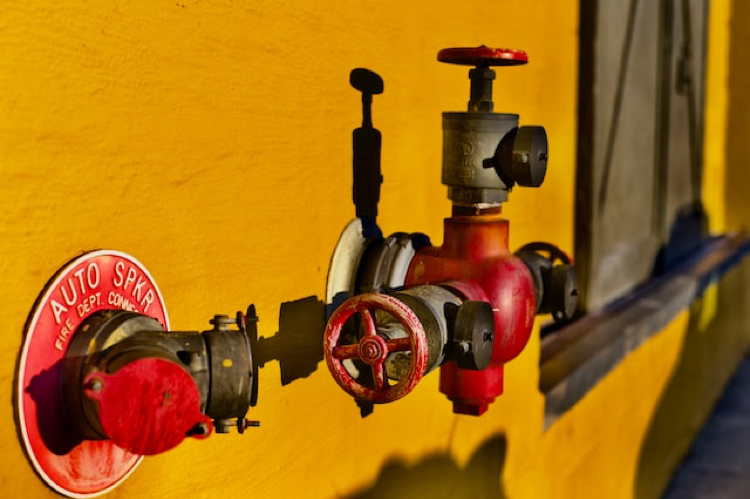
What You Need to Know About Wet Sprinkler Systems
Dry and wet sprinkler systems are made to suppress fires. However, both have different functionalities and ways of operating. In wet fire sprinkler systems, sprinkler heads are usually directly attached to pipes. These pipes contain pressurized water and release it whenever the system detects fire. Upon detection, the sprinkler heads go off automatically and put the fire down immediately.
These systems are quite practical, and most places can benefit from installing them. What’s more, wet sprinkler systems offer protection against fire, helping protect people and the property where it occurs. These systems must be tested and inspected according to the NFPA25 to ensure they can function effectively.
How are Dry Systems Different from Wet Ones?
Like wet systems, dry systems have sprinkler heads directly attached to the piping. The main difference between the two is that the pipes in dry sprinkler systems contain pressurized air or nitrogen for holding water pressure back at the primary control location.
Whenever dry sprinkler systems detect fire, the relevant head fuses, depleting air pressure from the pipe, ensuring the water pressure overrides air pressure. It helps to fill up the entire piping network with water. Once that happens, the water makes its way toward the sprinkler heads to extinguish the fire. While wet systems are suitable for most places, dry ones are best for temperatures lower than forty degrees Fahrenheit. These include:
- Warehouses and buildings that lack sufficient heat
- Parking garages
- Places with exposed exterior areas that require fire protection
What Makes Wet Fire Sprinkler Systems so Popular?
As mentioned earlier, wet sprinkler systems maintain water within the piping. Once the sprinkler detects any sign of fire nearby, it activates and releases water to extinguish the fire. Here are some reasons why these systems are so popular:
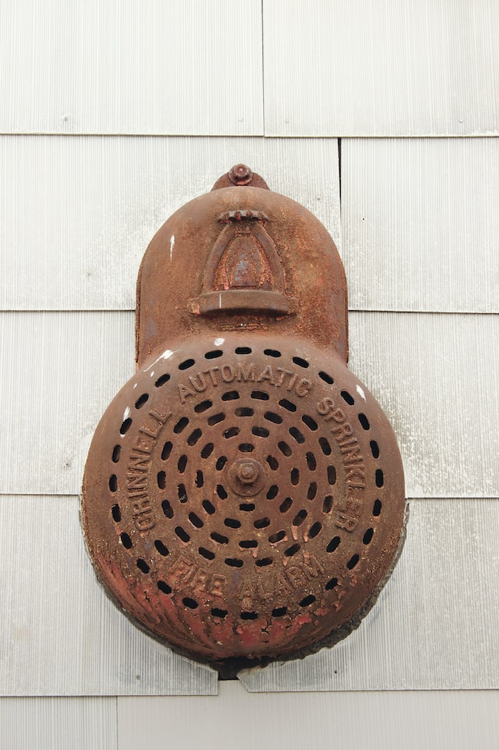
Simple and Reliable
Since wet systems only have a few components, there are few items to crash or malfunction. Things like these make this system quite reliable and suitable for most locations. The simplicity also makes wet fire systems ideal for places with low system maintenance.
They Do Not Require Much Downtime.
Unlike dry systems, wet fire sprinkler systems have an incredibly short downtime after a fire. Plus, these systems require minimal effort and time to restore. Replacing the faulty sprinklers, followed by turning on the water supply, is enough to reinstate the system.
Fire Sprinkler Wet Systems: Final Thoughts
A wet fire sprinkler system can be a lifesaver and save you from spending a massive amount on repairs following a fire. Are you looking for reliable, high quality sprinkler system design and installation? If so, contact F2M Fire & Drafting Designs Inc. for a swift and effective solution that suits your specific needs and requirements.
F2M Fire & Drafting Designs Inc.
31 South Street, Suite 3S-4
Mount Vernon, NY 10550
(718) 928-3009
info@f2mfadds.com
https://www.f2mfadds.com/contact
Fire Sprinkler Dry Systems
Dry fire sprinkler systems are quite similar to wet ones and share several features. However, there are several differences too. For instance, pressurized air is present in the pipes rather than water. It is arguably the biggest advantage dry systems have over wet ones, as water can often freeze inside the pipes in cold temperatures.
Whenever there is a fire related emergency, the air inside the pipes departs the system, allowing the water to flow freely, and extinguishing the fire. It would help if you took immediate action when your commercial or residential property is on fire. You can call the fire brigade, but they often need time to reach your location. Designing and Installing a fire sprinkler system on your property is a wise choice often required by law.
These systems release water and can kill fire without taking too much time, making them a must for almost any property. One of the best things about a dry fire sprinkler system is that it can detect fire signs long before it takes over, alerting people inside the property. Once the system detects heat, its sprinkler head starts spraying water and suppresses the fire immediately.
What is a Fire Sprinkler Dry System?
Wet sprinklers contain water inside their pipes. On the other hand, the pipes in dry fire sprinkler systems don’t have water. Instead, they contain pressurized air, which forces the water out when there is a fire.
While wet sprinkler systems are quite effective, they may not be the best for northern climates, especially during winter. That’s because there isn’t enough heat in the pipes installed in garages and attics, causing the water to freeze. The frozen water sometimes causes the pipe to break, making wet fire sprinkler systems unusable. If you live without adequate heat, installing a fire sprinkler dry system is best.
Since these systems have pressurized air instead of water, you don’t have to worry about damaged pipes. The sprinkler heads will work when there is a fire, and put it off before it spreads.
How Does a Dry Fire Sprinkler System Work?
Dry fire sprinkler systems have a clapper valve to keep water from the pipes when they are not operational. The valves work like dams that collect water from the river when needed. They keep the dry and wet pipes separate, and the pressurized air in the dry pipes holds the water back. Whenever heat caused by fire starts melting the link situated on the sprinkler, its head releases air.
Once the air is released, there isn’t anything to hold the system’s clapper, which releases water in the dry system. This mechanism converts the dry system into a wet sprinkler system, causing it to spray water and extinguish the fire.
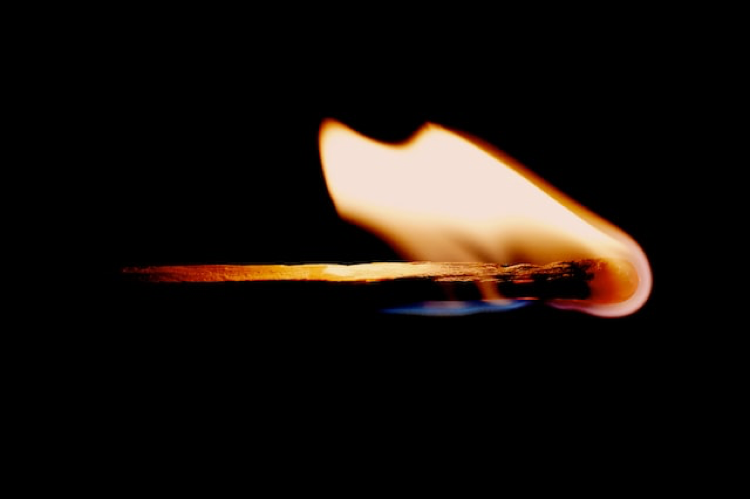
Additionally, once the heat starts melting the sprinkler head’s link, the fire alarm system of your property will sound off, calling the nearest fire department.
Fire Sprinkler Dry Systems: Final Thoughts
The right fire suppression system is vital for protecting properties and the people in them. While wet and dry fire sprinkler dry systems are quite effective, they may not be the best for certain locations. For instance, if you live somewhere cold, avoid getting a wet system and choose a dry one. Doing so will ensure that your sprinkler system is ready to go when there is a fire.
Get in touch with us at F2M Fire & Drafting Designs if you want an effective design for your dry fire sprinkler systems. Once on board, we will go above and beyond to ensure you get the right fire suppressing solution for your property.
All About Commercial Fire Protection
What is commercial fire protection and why is it necessary? All companies can face the possible risk of a fire erupting in their workplace, which is why investing in the right fire protection solutions can save lives and your property. However, you want more than any fire protection solution for your home. You want something made specifically for your property. In 2021, fires were responsible for $44 billion in damages to commercial properties.
By understanding the serious risk of not properly protecting your business, you can choose the right fire protection solution. And by learning a lot more about a commercial fire sprinkler system, you can learn how to keep your property safe.
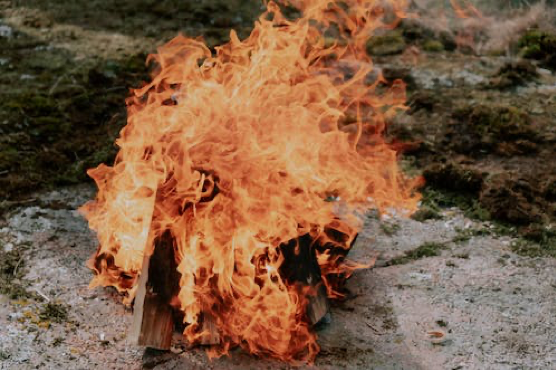
How a Commercial Fire Sprinkler System Works
You can get different fire sprinkler systems for your business, with different ones offering unique features. However, all fire sprinklers work the same way, as they try to eliminate fire in a workplace.
Detecting the Fire
The first important task of any fire protection system is to detect fire anywhere in the workplace. Depending on the system that you install, there can be several sensors in the system that allow it to detect if there is a fire.
One of the most common types of “sensors” these systems have is the solid metal cover on the head of the sprinkler. This cover will melt at about 135°F, which will start to release the water behind the valve. According to a report, these fires can be especially prominent in restaurants.
Most modern fire protection systems will usually connect to the fire alarm inside the workplace, monitoring the workplace’s temperature. A sharp temperature rise is usually enough to trigger the sprinkler system.
Suppressing the Fire
As soon as the system can detect a fire, the next step is to suppress or extinguish the fire. Once the sensors detect a fire, they will open valves to the sprinkler system when the sprinklers spray out water or any other fire suppressant.
While most workplaces will use water as a fire suppressant, it is also possible that companies dealing with sensitive chemicals will have unique chemicals to stop a fire. Furthermore, the number of sprinklers you have in your workplace will generally come down to the size of the office, which is why commercial fire protection services are often unique to specific businesses.

The Many Types of Fire Sprinkler Systems
Businesses will usually put up different fire sprinkler systems depending on the product or services they offer. The different types include:
Deluge Systems
These systems can be especially popular in businesses with flammable or toxic materials. Since the fire is likely to spread incredibly fast, a deluge system will open the valves to all the sprinkler heads to prevent the fire from spreading.
Dry Pipe System
In cities with a much colder climate, water can be a very ineffective way to blast the fire. Therefore, some companies will have a dry pipe system, which throws out certain gas from the sprinkler heads. This gas helps suppress or put out the fire.
Wet Pipe System
This system is the most common one and is especially one that most people are familiar with. This fire protection system will throw out water through a series of pipes to control the fire.
Commercial Fire Protection: Conclusion
Now that you better understand how commercial fire protection services work, you can see why it is essential to your business.
If you’re looking for a firm to design a commercial fire protection system your your property or business, allow our experts at F2M to help. With over 20 years of experience in the field, we offer code compliant and accurate sprinkler designs.
F2M Fire & Drafting Designs Inc.
31 South Street, Suite 3S-4
Mount Vernon, NY 10550
(718) 928-3009
info@f2mfadds.com
https://www.f2mfadds.com/contact
Who is Qualified to Design Fire Suppression Systems?
Who is qualified to design fire suppression systems? In the pursuit of equipping your new or even an old building with state-of-the-art fire suppression systems, make sure you don’t make the common mistakes. One of the most popular mishaps that occur in installing fire suppression systems is hiring unqualified and highly unprofessional individuals for the job. Why does that matter? First off, such individuals won’t have enough knowledge about the local building and fire protection codes and standards.
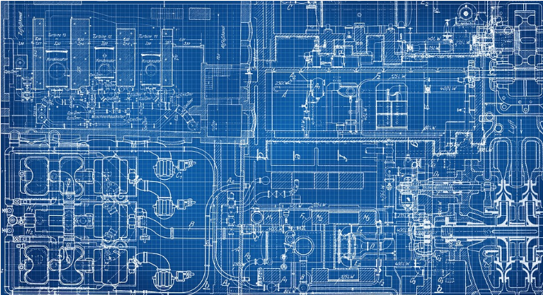
(Source)
Secondly, unprofessional or unqualified designers won’t have the technical prowess to handle sophisticated computer programs resulting in delayed designs. Thirdly, their lack of professionalism and qualification could also mean a lack of experience. That means your fire suppression system is more likely to have faults and errors. Here’s who qualifies as a fire suppression system designer perfectly.
Who’s Qualified to Design a Fire Suppression System?
The answer to that isn’t simple. However, we have made it digestible as much as possible to help you understand and grasp the concept easily. Typically, experts working at an experienced fire protection company are more than eligible to design a fire suppression system for you.
The following factors will give you a a better idea about who’s qualified enough to design a fire suppression system:
· Education
A qualified professional will have the required level of education and further specialization in the field of architecture, engineering, and so on. Such education is necessary to become a competent and thriving professional in the field of fire suppression system designing and installation. When you’re choosing an individual to help you design a fire suppression system for your residential or commercial property, check for their qualification levels.
· Experience
Sometimes, building owners and developers will take less experience in exchange for a cheaper costs. The experience level of a qualified fire suppression system designer is of paramount importance. A highly experienced fire system designer will know which factors to take into account.
Moreover, they will also know how to coordinate the installation of the fire suppression system and how to solve various issues that arise in the process. A great level of experience will also matter in installing a fire suppression system is highly complex and sophisticated commercial structures.
· Knowledge of Codes & Standards
You may already know that the majority of the states follow the same US National Fire Protection Association building codes and fire protection system standards. An individual will become even more qualified to design a fire suppression system for their building if they’re well-versed in such codes and standards.
Since the government has authorized such associations as the NFPA to create pre-defined building codes and fire protection system standards, only a qualified professional will address and use them.

(Source)
· Designing Software Prowess
Experts who are qualified to design a fire suppression systems for your building will be proficient in using most of the fire system 3D design programs and software applications such as CAD and more. They will be ever-ready to share design results and have a better response rate than any average fire suppression system designer. The primary reason behind that would be their prowess, as they will have a better understanding of the programs that help in fire protection system design.
Design Fire Suppression Systems: Conclusion
At F2M Fire & Drafting Designs Inc, we aim to make all commercial and residential structures safe against fire hazards and dangers. By using state-of-the-art design technology and installation techniques, we ensure maximum satisfaction and higher-level safety.
We take great honor in declaring that all our fire sprinkler and fire suppression system designers are knowledgeable, experienced, and highly qualified. The experience and service of our professional fire suppression system designers is unmatched in New York City.
Call us at (718) 928-3009 today!
F2M Fire & Drafting Designs Inc.
31 South Street, Suite 3S-4
Mount Vernon, NY 10550
(718) 928-3009
info@f2mfadds.com
https://www.f2mfadds.com/contact
Updating an Old Fire Sprinkler System: What to Know
Updating an old fire sprinkler system sounds like a daunting task. Do you think that your building is slowly becoming vulnerable to fire hazards and similar issues? Does it bother you that your building, home, or offices fire protection system isn’t up to par? Well, if that’s the case, this post is for you. In this post, we will discuss some important details surrounding a fire sprinkler system upgrade.
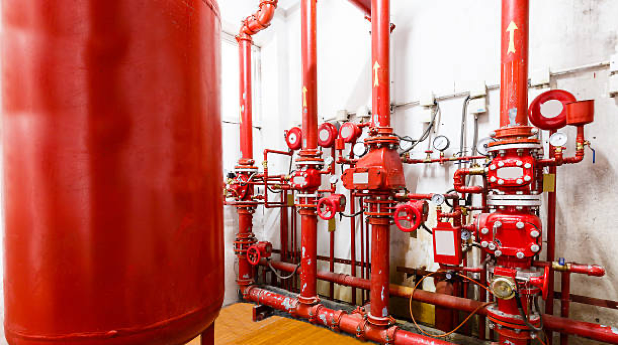
(Source)
You must know that each type of fire sprinkler system has an average lifespan, after which it becomes fully vulnerable to a range of problems and damage issues. Normally, a fire sprinkler system with a dry pipe configuration lasts 10 to 15 years, while a system with a wet pipe configuration lasts around 15 to 25 years. So, what are the main things that you must know about upgrading an old fire sprinkler system? Here’s more!
Signs Your Old Fire Sprinkler System Requires Updating
You can’t apply for a fire sprinkler system upgrade unless you know the right time for it. So, when’s the “right time” to have your fire sprinkler system? Well, there are certain signs to notice for that, including:
· Building Expansion
One of the main reasons you will require a fire sprinkler upgrade is when you expand your premises, whether it’s in the form of adding a couple more floors or increasing the square footage (i.e., securing more ground area). When you expand your building, you will have more floors, rooms, and other areas to cover in terms of fire protection. Without an adequate fire protection system in each and every area of your building, you can’t call it safe for your occupants and tenants.
· Obsolete System
Does the fire sprinkler system cause damage to other parts of the building, such as concrete walls, valve rooms, and so on? Is the damage beyond irreparable in some cases? If your fire sprinkler system has aged too much and is subject to a lot of maintenance/service routines, it’s time to go for an upgrade. A fire sprinkler system that malfunctions often and doesn’t seem to show signs of life can be very dangerous during a fire emergency.
Planning a Fire Sprinkler System Upgrade
Here are a few steps you can take to ensure that you’re approaching a fire sprinkler system upgrade in the best possible manner:
· Stay In a Budget
Whether you’re a small business, residential real estate, or a huge corporation, you will require a fixed budget to make sure the expenses of a fire sprinkler system upgrade don’t go over the limit. Staying within a fixed budget is necessary, and you must work well with a qualified company to have one.
· Fire Sprinkler System Assessment
Never skip the most crucial part of the process. If done right, you can save not even a few hundred but thousands of dollars on the upgrade. A fire sprinkler system assessment, best performed by qualified professionals from a reputable company, will highlight which areas require the most work. In rare cases, an assessment might hint at the installation of a completely new fire sprinkler system.

(Source)
· Codes and Standards Compliance
Make sure you discuss this with your chosen fire sprinkler system design and installation company before starting the upgrade process. Any and all upgrade jobs must comply with the building codes and fire protection system standards that US National Fire Protection Association highlighted.
Updating an Old Fire Sprinkler System: Conclusion
You’ll be glad to know that for your fire sprinkler system needs in NYC, whether you require a fresh installation or a quick upgrade, F2M Fire & Drafting Designs Inc. can help. As professional fire protection system designers, we help in designing and installing a flawless fire sprinkler system according to your building’s specifications.
You can contact us and schedule a meeting with one of our qualified fire sprinkler system designers. Our unparalleled service combined with an extensive level of experience highlights our prowess in the industry.
Give us a call at (718) 928-3009 today for a professional consultation.
New York Local Law: Fire Suppression Systems in Buildings
What is the New York local law regarding fire suppression systems in buildings? You will find many commercial buildings and residential real estate equipped with cutting-edge active fire protection systems. However, two of the most frequently used terms for fire safety include “fire suppression systems” and “fire sprinkler systems.” While it’s typically easy to understand what a fire sprinkler system is, most people confuse it with a “fire suppression system.” Both refer to active fire protection systems, but that doesn’t mean they can be used interchangeably.
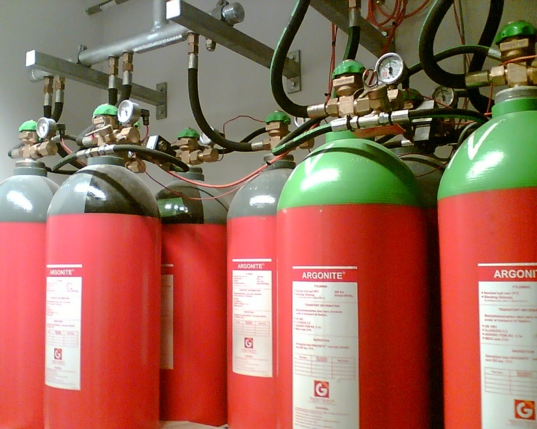
(Source)
The US National Fire Protection Association has various codes regarding fire suppression system selection, design, and installation in commercial as well as residential buildings. In this post, you will understand more about fire suppression systems, how they’re different, and New York laws that are specific to them.
How Does a Fire Suppression System work?
A fire suppression system works on detecting active smoke or flame, which means that it will trigger an alarm as soon as it detects smoke or a sharp rise in temperature. Following the alarm, a fire suppression system will use a pre-defined strategy to prevent the fire from spreading and, most likely, contain it. The fire suppression system will release chemical compounds, foams, or similar material to douse the fire.
An alarm will trigger when the fire suppression system comes in contact with smoke or see a sharp rise in temperature. It also helps in notifying the occupants and tenants of a building to take the safety exits or take cover from fire wherever possible.
Is a Fire Sprinkler System the Same as a Fire Suppression System?
In simple words, the answer is “no.” A fire sprinkler system is a type of fire suppression system. However, most fire suppression systems depend on other forms of fire-dousing agents compared to a fire sprinkler system only which depends on water.
For example, a fire extinguisher (i.e., a relatively small cylinder filled with carbon dioxide foam) is a popular component of an active fire suppression strategy. The fire extinguisher helps occupants and tenants of a building douse the fire as soon as they detect it. However, the most important things are that the fire extinguisher is filled with foam and chemical compounds rather than water.
In many locations, such as oil processing plants or chemical factories that deal with flammable material or chemicals, water will not be useful in stopping the fire. Therefore, fire suppression systems such as fire extinguishers, foam fire suppressors, and clean agent extinguishers are quite effective.
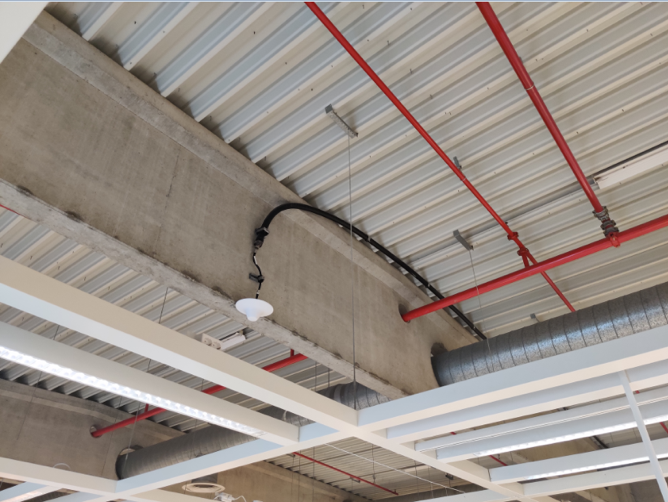
(Source)
New York Local Law for Fire Suppression Systems
You should know that a fire sprinkler system is a form of fire suppression, among many. It’s an active fire protection strategy that uses water in abundance to douse fires that spread quickly in both residential and commercial buildings.
The New York Local Law 26 states that all buildings 100 feet or taller must have an active fire sprinkler system to protect occupants and tenants. Moreover, there are other laws that require building owners and project developers to create strategic fire suppression sites inside a building to install pipe extensions, water supply extensions, and fire extinguishers.
New York Local Law: Fire Suppression Systems Conclusion
At F2M Fire & Drafting Designs Inc, you can rely on our experienced professionals who have worked with many clients, form small sized projects to very large. From huge residential schemes to some of the biggest companies in New York, our experienced partners can handle your fire sprinkler and fire suppression system design needs.
Whether you want to get a fire suppression system designed or discuss the installation of a standard fire sprinkler system, call F2M Fire & Drafting Designs Inc. at (718) 928-3009 today for an expert consultation.
Hydraulic Calculations for Fire Sprinkler Systems
According to the National Fire Protection Association (NFPA), hydraulic calculations work best for designing fire sprinkler systems. The 2016 edition of the NFPA 13 handbook states, “A sprinkler system designed using hydraulic (calculation) is preferable over those systems designed using a pipe schedule approach.”
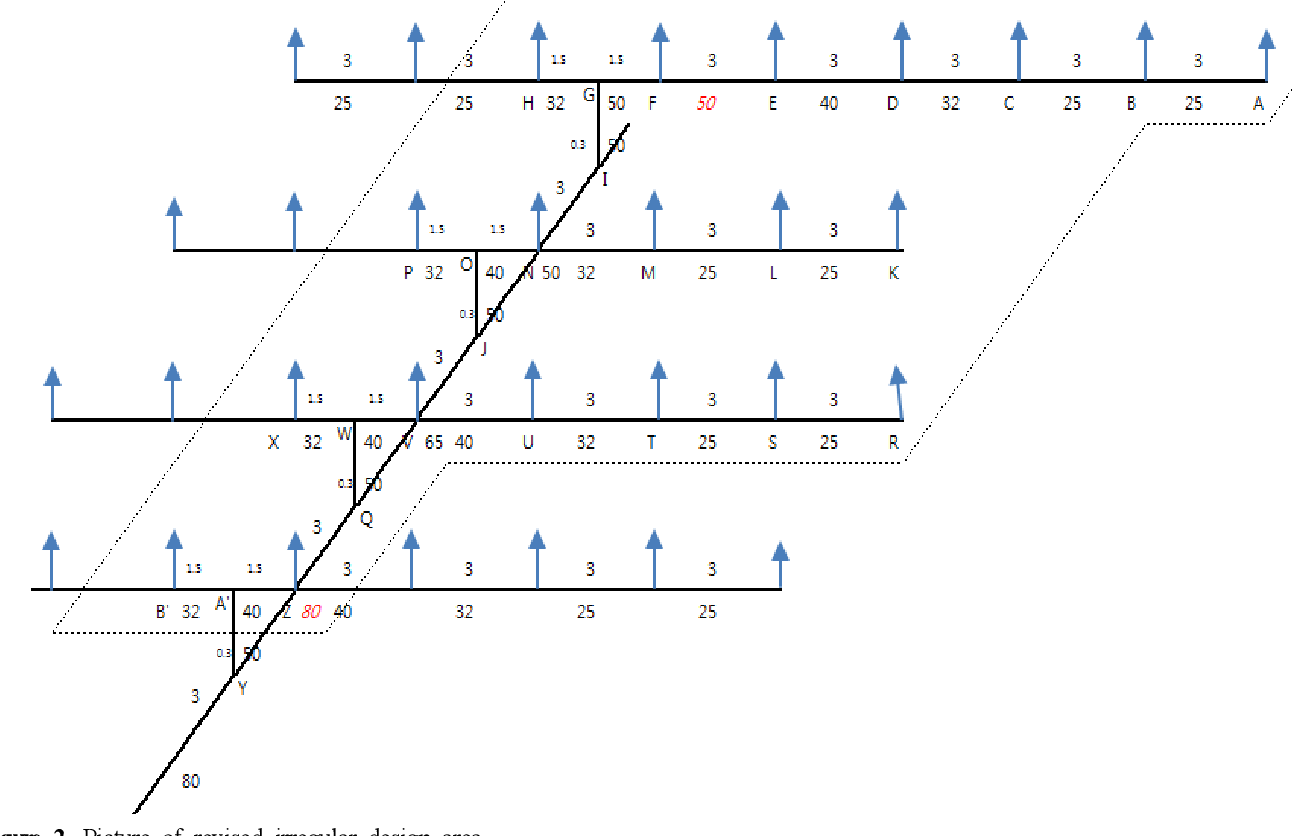
Fire protection systems such as a fire suppression system and fire sprinkler system can safeguard commercial buildings. If you are developing any sort of commercial building, make sure to contact a company like F2M Fire Drafting Designs Inc to get a fire sprinkler system design & layout.
Why are Hydraulic Calculations Important?
A reliable fire protection system is important for the safety of potential occupants and residents of a commercial or residential property.
Running hydraulic calculations ensures that the rate of flow in the pipes is sufficient for effectively controlling a fire situation. The National Fire Protection Association establishes and verifies the hydraulic calculations on the basis of three basic elements. These are:
- Available water supply
- Requirement of water delivery from the fire sprinkler system
- The piping network and issues like friction loss
Since a fire system is the first line of defense against fire, it is important to ensure that the pipes deliver enough water to extinguish the fire. This is only possible with the help of hydraulic calculations.
Water Flow Testing for Fire Protection System
You must conduct a test for water flow as part of the hydraulic calculation. Usually, the municipal water department makes this information public. However, you can also do this by measuring the flow and pressure at the particular water hydrant.
In certain cases, water from the municipal water supply is not enough to protect against fire hazards. To solve this issue, you can design the piping so that it can draw water from other open or closed sources.
Hydraulic Calculations for Fire Sprinkler Systems: Piping System
Configurations
There are three main types of piping networks for fire protection systems. This depends on the individual arrangement of pipes.
Tree
This type of pipe configuration resembles a tree’s trunk and branches. The main pipe branches into smaller pipes, which provide the individual sprinklers and other parts with water.
Loop
The grid configuration is quite similar to a ‘tree.’ However, the main pipe completes a loop at the surface as it extends and returns to the starting point.
Grid
In a grid configuration, there are rather two main pipelines running parallel to one another. Smaller segments of pipe connect the two lines together. With more routes leading to each sprinkler, there are fewer chances of friction losses.
Sprinkler Pressure Calculation
The function of a fire sprinkler involves converting pressure into kinetic energy. This makes the process of pressure calculation an incredibly complex one.
Depending on the pressure inside the pipe, the formula for calculating water flow through an outlet is:
Q (flow) = 29.83 x CD x d2 x √P
In this formula,
CD = discharge coefficient
d = diameter
p = pressure
The good news here is that fire sprinklers already have a design diameter. So, we can simplify the calculation by combining all factors except pressure into the ‘K-factor.’
So, the new formula will be:
Q = K x √P
To calculate the pressure when you already know the value of Q (flow), rearrange this formula as such:
P = (Q / K) 2
According to NFPA, your fire sprinkler should establish a minimum pressure of 7 psi. This is applicable even, especially if your calculations result in a smaller value. A minimum pressure of 7 psi ensures an appropriate spraying pattern.
Some exceptions for this include the following situations:
- Use of dry pipe sprinkler
- Use of quick-response sprinklers
- Combustible and concealed or non-sprinklered spaces
- Spaces divided into multiple compartments
- Units and corridors
Hydraulic Calculations for Fire Sprinkler Systems: Conclusion
F2M Fire & Drafting Designs Inc. is here to help with all your commercial and residential fire sprinkler system design needs. Whether you’re looking to install a new system or replace the old one, we can design a fire suppression system that fits well with your company’s specific requirements and budget.
Our many years of experience and expertise also provides the best hydraulic calculations with no errors whatsoever. Contact us today to schedule a meeting with our qualified experts to get all your answers and the best services in town.
Give us a call for an expert consultation.
F2M Fire & Drafting Designs Inc.
1231 Lafayette Ave, Fl 2
Bronx, New York, 10474
(718) 928-3009
info@f2mfadds.com
How Do You Get a Fire Sprinkler System Designed?
There are different ways you can get a fire sprinkler system designed and installed on your property. There are various configurations for a fire sprinkler system, including “wet pipe” and “dry pipe” system configurations. Understanding the complexities of a fire sprinkler system is quite difficult for someone who doesn’t have experience with a fire protection system, sophisticated engineering concepts, difficult calculations, and layout planning.

(Source)
But, you can have a fire sprinkler system designed completely hassle-free and in due time if you team up with the right company. Here, we will look at how you can have a fire safety system designed for your residential or commercial property.
How to Get a Fire Sprinkler System Designed?
If you’re inexperienced in designing and installing a fire sprinkler system before, your best bet is to opt for a professional fire protection system company. There are countless companies out there that will help you come up with great fire protection for your real estate, whether residential or commercial.
Talking to experienced and qualified professionals will help you better understand the design process. Furthermore, the expertise and technical prowess of professionals will be extremely useful because you will have the opportunity to customize the fire sprinkler system according to your needs.
Remember that such professionals will automatically meet international building and fire protection system codes and standards. Here are a few steps that professional fire sprinkler system designers will take when designing one:
Choosing a Fire Sprinkler System Type
There’s a small list of fire sprinkler systems with varying configurations. As stated earlier, there are two main types of fire sprinkler systems:
- Wet Pipe Configured Systems
- Dry Pipe Configured System
At the same time, there’s another popular type of fire sprinkler system configuration better known as the “deluge pipe fire sprinkler system.” This type of pipe configuration works best for extremely hazardous places such as oil processing rigs, chemical factories, and so on.
Identification of the NFPA Standard
The NFPA in the US has outlined various fire sprinkler system design and installation standards based on the type of structure and its purpose. So, the fire sprinkler system requirements and standards are different from that of a single-family dwelling/residential space.
For example, professionals turn to the NFPA 13 standard to install a fire sprinkler system in a commercial building. On the other hand, a professional company will either turn to NFPA 13R or 13D standards to install a fire sprinkler system in a residential space.
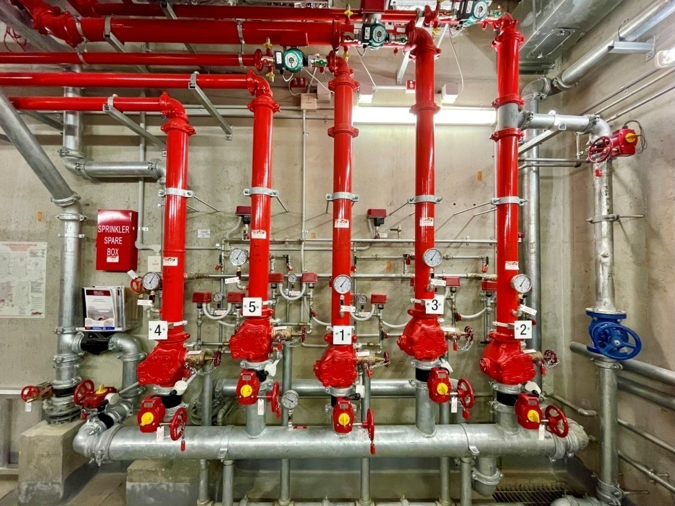
(Source)
Acknowledging Hazards and Risks during Calculations
Before designing a fire sprinkler system, you will have to calculate the hazard levels, fire risks, and so on. The hired professionals will take a look at the structure they plan to fit with a fire sprinkler system. Regardless of whether it’s a home or an office, they will assess the risks of fire and chances of similar hazards. They will then identify the needed water supply and introduce a firm idea on how to secure the whole real estate from fire using a fire sprinkler system. Hence, the designing process will begin.
Get a Fire Sprinkler System Designed: Conclusion
If you want to get a fire sprinkler designed for your commercial or residential real estate, you can contact F2M Fire & Drafting Designs Inc. We have helped countless individuals and businesses get the necessary fire protection systems to keep their belongings commercial assets, and tenants safe.
We can work with you, listen to your needs, and draft a highly personalized fire sprinkler system design. Our expert engineers and architects will incorporate the fire sprinkler system completely hassle-free and in full compliance with building codes/standards.
Give us a call today for a professional consultation.
F2M Fire & Drafting Designs Inc.
1231 Lafayette Ave, Fl 2
Bronx, New York, 10474
(718) 928-3009
info@f2mfadds.com
Hire a Professional Designer for Your Fire Sprinkler System
Do you need to hire a professional designer for your fire sprinkler system? Installing a fire sprinkler system in your building can be a daunting task. Even if you’re excited to give your occupants and tenants peace of mind from a modern fire protection system, you can’t handle such a sophisticated task by yourself. You will need the support of professional designers to make a fire sprinkler system that is right for your building. Fortunately, F2M Fire & Drafting Designs Inc is one of the best companies you will come across in NYC to get a flawlessly designed fire sprinkler system.

(Source)
That isn’t convincing enough for you? Well, we have a few reasons why you should consider opting for qualified, experienced, and professional fire sprinkler system designers in NYC. Keep reading, and you will find out more!
Reasons to Hire a Professional Designer for Your Fire Sprinkler System
Before we kick off the list of reasons why you should choose a professional fire sprinkler system designer, fire protection systems are mandatory in certain businesses. For example, a particular Local Law 26 NYC states that buildings higher than 100 feet must have an active fire sprinkler system and so on.
Plus, you need to offer peace of mind and safety assurance to your occupants and/or tenants against fire hazards. Now that we’re clear on why you need a fire sprinkler system, let us discuss why you require a professional for this task.
Highly Experienced
Without a doubt, the experience of professional designers is very valuable to building the right fire protection system. Their experience allows them to foresee upcoming issues and challenges, creating solutions to them before they become a problem.
Also, if you’re already facing a bottleneck in installing your fire sprinkler system inside your building, the chances are that the professional designer has dealt with similar issues before. So, their experience will be a huge convincing factor in helping you get their services.
Technical & Architectural Prowess
Navigating through a long list of 3D virtual programs and software applications isn’t easy. But for someone like a professionally qualified designer, it’s relatively easy. There are a bunch of software applications and programs that qualified designers to use to create 3D diagrams and virtual map prints of a building to assess the applicability of a fire sprinkler and improve it.
As an inexperienced individual or even a team, you can’t match the technical prowess that a professionally trained designer will have in using the correct software.
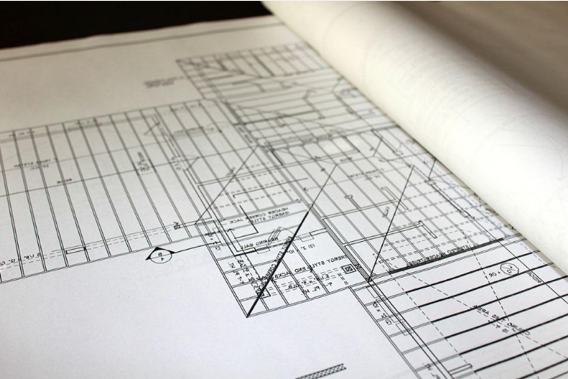
(Source)
International Building Codes & Fire Safety Standards
All buildings are subject to getting fire suppression and fire sprinkler systems in place. The US National Fire Protection Association has made it mandatory for some buildings to put active fire protection in place. The book of rules and fire protection system installation rules are quite precise.
In short, it can be difficult for an average citizen or an unaware building owner to try and comprehend all the rules and codes that apply to their fire protection status. Fortunately, a professional designer is well-versed in those codes.
Hire a Professional Designer for Your Fire Sprinkler System: Conclusion
You can hire professional designers at F2M Fire & Drafting Designs Inc for your fire sprinkler system requirements. We can help you make your building safe and secure against fire hazards and damages by installing modern day fire protection components.
From virtual and 3D diagrams to the right type of pipe configuration, you can place your trust in us. Give us a call at (718) 928-3009 today and schedule a meeting with one of our experienced designers to create the best fire sprinkler system design and layout for your building.
F2M Fire & Drafting Designs Inc.
1231 Lafayette Ave, Fl 2
Bronx, New York, 10474
(718) 928-3009
info@f2mfadds.com
Fire System Estimators
What are fire system estimators, and what should you look for when hiring one for your fire system design project? Buildings are becoming more automated with every passing year, especially with their fire suppression systems. While fire estimation is an extremely important process, it is also quite time consuming.
It is crucial for a professional fire system estimator service to map out the system according to various processes in accordance with the specs of the specific project. A reliable fire system estimator carries out the fire estimation process without wasting time.
Completing a Fire System Estimate: Step-by-Step
Here are seven steps to completing fire estimation without consuming too much time.
Step 1
Considering the project itself is the first step that goes into getting through the estimation process easily and quickly. It is important for the particular project to be a good match for a company’s experience.
In case the company does not have the required expertise and enough experience, taking the crew into the project becomes a hard task. Credible fire sprinkler system design companies make sure to examine the project and its requirements before signing a contract.
Step 2
A complete fire system estimation process also involves checking whether the specs of a project are complete. Sometimes, there may also be missing pages in the initial plan. It is important to keep an eye out for addendums and missing info.
Companies should thoroughly see the final plan and look for issues so as to fix them in a timely manner. Commonly, these issues relate to the fire material’s fire resistance that requires installation or amendment. Other times, there may also be problems in the pre-existing structure.
Step 3
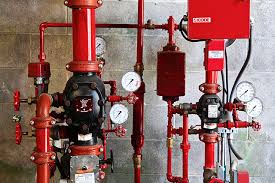 After gathering everything that is necessary, the takeoff process of fire system estimation can start. Professionals ensure no mistakes by looking at how much material is needed and tracking its usage throughout.
After gathering everything that is necessary, the takeoff process of fire system estimation can start. Professionals ensure no mistakes by looking at how much material is needed and tracking its usage throughout.
Many companies prefer using excel spreadsheets and digital plans, but it is not the best way. Switching between screens equals a greater chance of mistakes. Using colored markers and pencils on paper worksheets is the best way to avoid errors.
Step 4
Considering issues with the labor that will go into the installation of a fire sprinkler or suppression system is also extremely important. Firstly, companies should keep the costs in mind. These include expenses like scissors lift.
Most fire suppression tools require installation up high, so a scissors lift becomes essential. Besides, getting up and down from the ceiling also takes time, making it an important consideration when it comes to labor issues.
Step 5
Step 5 involves taking a break to look at the progress and check for mistakes. At this point, it is very likely that you have gone over the paper plan too many times. So, it is no surprise for things to start looking messed up. Good fire system estimation leaves time out for taking breaks and double checking figures.
Step 6
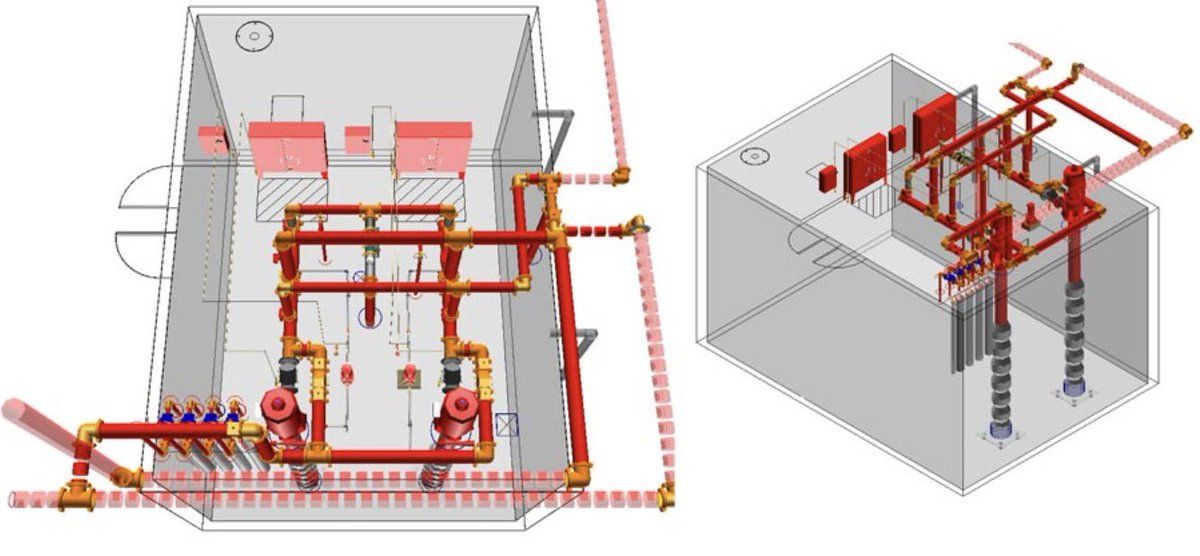 Next up, assembling all paperwork is also a crucial fire system estimation step. For large commercial and industrial projects, the paperwork can include bonds, insurance waivers, and other extensive documentation. In the case of residential homes, the paperwork can look as simple as a single estimate form.
Next up, assembling all paperwork is also a crucial fire system estimation step. For large commercial and industrial projects, the paperwork can include bonds, insurance waivers, and other extensive documentation. In the case of residential homes, the paperwork can look as simple as a single estimate form.
Step 7
Of course, missing out on a follow-up can completely break the game. For instance, you will never know when a project is close to the bid of another contractor if you don’t try to follow up. However, don’t let this step take up a lot of your time; an email or call works equally well.
Fire System Estimators: Conclusion
If you are in need of fire sprinkler system estimation services, you can contact F2M Fire & Drafting Designs Inc. We provide fire system estimation services for cost and quantities takeoff. Our services will proceed in accordance with the specs and requirements of your particular project.
At F2M Fire and Drafting Designs Inc, qualified professionals with over 20 years of experience will help you estimate the best costs within your budget. Give us a call at (718) 928-3009 to schedule an appointment with our experts today.
Fire Pump & Valve Room Layout for Fire Sprinkler Systems
How does the fire pump & valve room layout work to serve fire sprinkler systems? How does As building codes developed over time in the US, it became vital for certain buildings to include fire sprinkler systems. However, designing and installing a modern fire sprinkler system isn’t easy and usually requires the support of qualified professionals. A professional company will generally highlight two important parts of a fire sprinkler system.
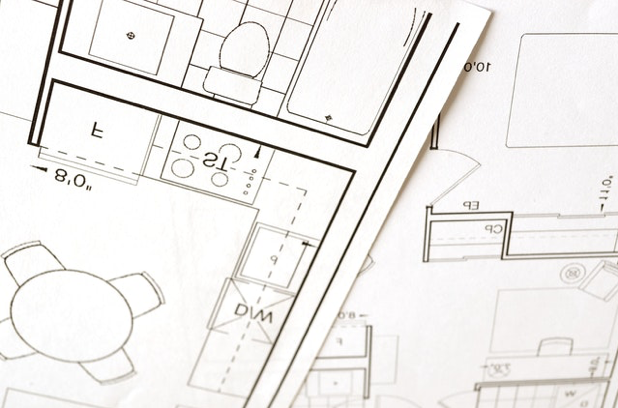
(Source)
Those two parts include the fire pump and the valve room, which has all the main controls of the fire sprinkler system. But, how does a professional fire sprinkler design company plan the layout of the room? Here are a few factors that affect the layout calculations for both components and how a professional company deals with them.
Factors Affecting Fire Pump & Valve Room Layout
The factors that affect the fire pump and valve room’s layout include:
International Building Codes and Standards
Fire sprinkler design and installation laws are governed by the international building codes and standards that also affect the residential and commercial spaces in the US. If you don’t know already, US’s primary authority on fire protection systems, National Fire Protection Association NFPA, has highlighted the rules and standards to follow for fire pump and valve room design/layout.
Location of Installation Site
One of the main factors that affect the fire pump and valve room’s layout is the location of the installation site. In simple words, the location of your residential or commercial site will significantly affect the installation of the necessary equipment.
We can take a look at this from another perspective. For instance, if you want to install a fire sprinkler system in a high-rise building, the fire pump and valve room layout calculations will primarily focus on instant access. Other factors that might influence the layout of this highly important room include:
- Climate conditions
- Topography
- Dimensions of the chosen room
- Size of the building
- Specifications of the fire sprinkler system
Maintenance Routine and Repair for the Fire Pump & Valve Room
Another great factor that influences the layout planning of the fire pump and valve room is the level of planned maintenance. For instance, your residential or commercial structure that requires a fire sprinkler system will have a maintenance routine, right? In that case, the professionals who are creating the layout to install a fire pump and choose a valve room at your site will use that information.
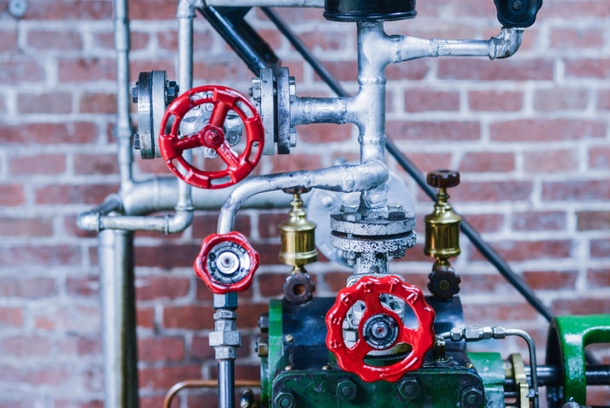
(Source)
It’s important to install the fire pump and valve room in a way that maintenance doesn’t become difficult. Since a fire sprinkler system will require routine care and maintenance to be functional throughout the year, the location of the room can have a huge impact.
In any case, you don’t have to use complex layout calculations and various software to install and design a fire pump and valve room. A professional company can handle all that for you while you sit back and relax.
Fire Pump & Valve Room Layout for Fire Sprinkler Systems: Conclusion
A good fire sprinkler system company will claim that it’s coming to design and install a specified fire protection system for your residential or commercial property. However, a great company will go further. To keep your property safe, whether it’s your home, office, or any other space, F2M Fire Drafting and Designs Inc. works tirelessly with the support of some of the most skilled experts.
We can plan the fire pump and valve room layout. Following that, we can move quickly to the installation phase, so you don’t have to wait a long time before having your property safe against fire hazards.
Call today for a consultation.
F2M Fire & Drafting Designs Inc.
1231 Lafayette Ave, Fl 2
Bronx, New York, 10474
Phone: (718) 928-3009
Email: info@f2mfadds.com
Differences between Commercial & Residential Fire Sprinkler Systems
What type of fire sprinkler system do you require? Is it a residential fire sprinkler system or a commercial fire sprinkler system? Surely, answering that question isn’t that difficult once you take a look at the premises you want the fire protection system for. However, the main question could be “what are the differences between both systems”?
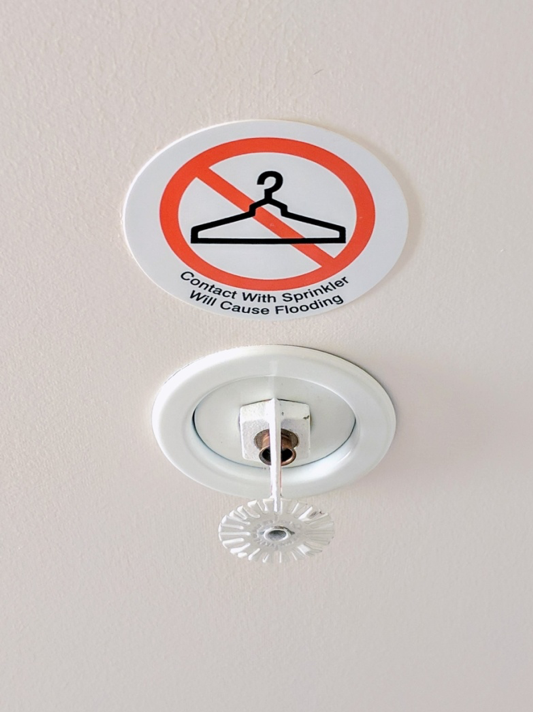
(Source)
In this post, we will try to cover some of the major differences that help professionals distinguish between a residential fire sprinkler system and a commercial fire sprinkler system. Depending on the use cases, both are highly suitable in their application. In simple words, each type of system represents the level of needs and requirements of the building it supports.
What’s a Fire Sprinkler System?
Let’s start with a basic question, what’s a fire sprinkler system? It’s a fire protection system designed to keep the occupants and tenants of a building safe in the event of a fire breakout. The ideal application of a fire sprinkler system is in large residential spaces and commercial buildings where high-value assets and a huge number of people are present. Usually, shopping malls and tall commercial structures (i.e., offices) have advanced fire safety measures in place, including fire sprinkler systems.
· Residential Fire Sprinkler System
A residential fire sprinkler system comprises a water supply, a suitable water distribution system, and an adequate water delivery mechanism. In short, it consists of sprinkler heads, pipes, and water sources.
· Commercial Fire Sprinkler System
They offer protection against fire damages and similar hazards through a complex version of residential fire sprinkler systems. Commercial fire sprinkler systems are more suitable for buildings and other spaces that are susceptible to deal with catastrophic damage in the event of a fire.
Residential Fire Sprinkler System vs. Commercial Fire Sprinkler System
Various Types of Commercial Fire Sprinkler Systems
While there aren’t different types of residential fire sprinkler systems, there are quite a few commercial fire sprinkler systems. Some of them include:
- Wet Pipe
- Dry Pipe
- Deluge
- Pre-Action
Residential Fire Sprinkler Systems Can Decrease Insurance Premiums
Most homeowners see a noticeable reduction in their home insurance when they install a residential fire sprinkler system. So, it’s quite clear that sometimes the motive behind a residential fire sprinkler system isn’t safety but rather getting a cut on the heavy insurance premiums.
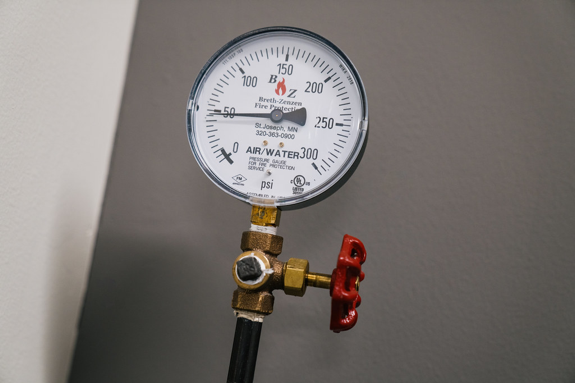
(Source)
Both Fire Sprinkler Systems have Considerable Size Differences
The residential fire sprinkler systems are generally smaller in size compared to large-scale commercial fire sprinkler systems. The primary reason behind that is residential spaces are smaller than big commercial buildings and factory floors. So, residential sprinkler systems don’t’ have to be complicated.
On the other hand, a commercial fire sprinkler system can easily secure big commercial structures such as buildings, factory floors, warehouses, and so on. They’re equipped with rather complex valve controls and fire pump features.
In a nutshell, both categories of fire sprinkler systems differ mainly due to size. Commercial fire sprinkler systems are designed to secure large structures and buildings, while the use cases of residential fire sprinkler systems are more prevalent in small residential areas.
Commercial & Residential Fire Sprinkler Systems: Conclusion
Whether you require a flawless residential fire sprinkler system or a foolproof commercial fire sprinkler system, F2M Fire & Drafting Designs Inc can be your go-to company. We have dealt with fire sprinkler systems in residential, commercial, and industrial sectors. Comprising a team of professionals who have worked with clients big and small, we take great pride in sharing our unmatched experience.
At F2M Fire & Drafting Designs Inc, we do not just ensure the safety of occupants and tenants in a building. In fact, we create a safe and fire protected environment with every fire sprinkler system that we install. Contact us today at (718) 928-3009!
Commercial Building Project: Fire Suppression System
What do you need to know to design and install a commercial fire suppression system? As a business owner or manager, it’s your responsibility to keep your employees and office safe. One of the best ways to ensure workplace safety involves fire protection systems. They’re important in certain cases based on the National Fire Protection Association’s standards in the US. Furthermore, it’s best if you don’t confuse the term “fire suppression system” with “fire sprinkler system.”
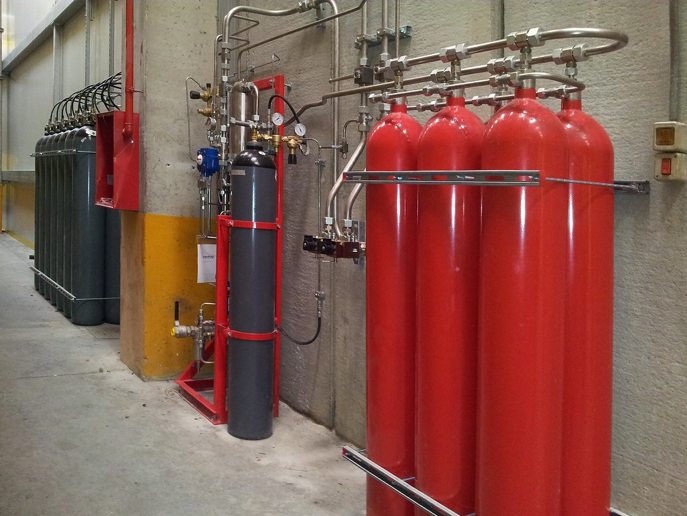
(Source)
Both fire suppression and fire sprinkler systems are different branches of one tree and achieve the same final goal. Fire suppression systems are different from fire sprinkler systems. To help you better understand the difference between the two, we will take a comprehensive look at what commercial building fire suppression systems refer to and how they’re important.
What’s a Fire Suppression System?
Similar to a fire sprinkler system, a fire suppression system is a safety tool in the event of a fire inside a commercial or residential building. It’s a collective term (i.e., fire suppression) for various methods utilized in suppressing and controlling the fire in any given space. For instance, a popular DIY fire suppression approach to prevent or control the spread of fire involves throwing buckets filled with water at the fire source.
Other forms of fire suppression systems include the use of water, chemical compounds, foam, and so on. You will find a range of fire suppression strategies for commercial buildings that apply to your office or real estate structure. However, the goal is the same, i.e., to offer peace of mind to tenants and occupants of a commercial building.
How Does a Fire Suppression System Work?
The main characteristic of a fire suppression system primarily manufactured for use in commercial buildings will be early fire detection. A system like that will detect fire ASAP, and in the presence of smoke/flames, it will instantly ring the alarm. The alarm will be a call to occupants and tenants to take cover or get safety.
The alarm will initiate the appropriate fire suppression strategy, such as releasing chemical compounds, water, or foam to prevent the fire from spreading. You will usually hear qualified professionals referring to a fire suppression system as an “active” fire protection method due to its early detection capabilities and active components.
Fire Suppression System vs. Fire Sprinkler System: What to Know?
Both types of fire protections are vital for a commercial structure, especially with occupants, tenants, or expensive assets. However, the working mechanism of a fire suppression system is relatively different from a commercial fire sprinkler system. Both systems feature early detection and active countermeasures to keep the fire from spreading.
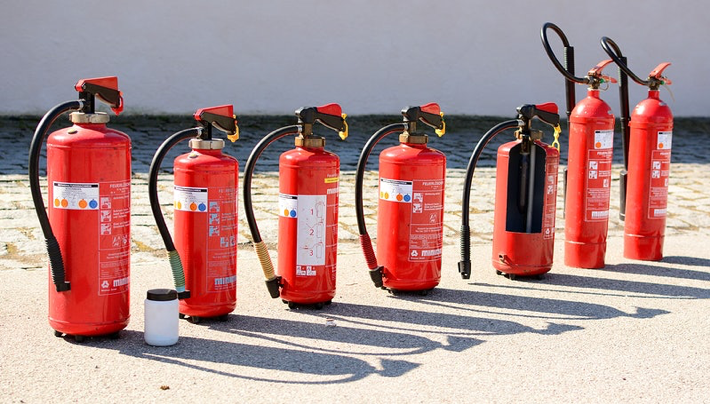
(Source)
In the case of active fire suppression systems, using water isn’t the only method to prevent fire spread and contain it. Unlike a fire sprinkler system, a fire suppression system inside a commercial building usually includes different foaming agents and chemical compounds.
Commercial Fire Suppression System: Conclusion
If you want to get a fire suppression system designed and installed for your commercial building, you can contact F2M Fire Drafting Designs Inc. We can work with your commercial real estate developer, study the whole architecture, and come up with a fire suppression system that would work best for it.
At F2M Fire & Drafting Designs Inc, the qualified professionals have worked with a diverse range of clients in New York. We can take care of your fire protection needs and suppression system design or installation. Don’t hesitate and give us a call at (718) 928-3009 to schedule an appointment with our experts.
Best Programs to Design Fire Sprinkler Systems
What are the best programs to design fire sprinkler systems? In the field of designing and installing fire sprinkler systems, you will encounter a wide array of special programs and software applications that help with the process. The software applications and programs that we’re talking about are specifically designed for qualified individuals who can design and work on fire sprinkler system concepts. They have the necessary training, education, and technical proficiency in handling such programs.
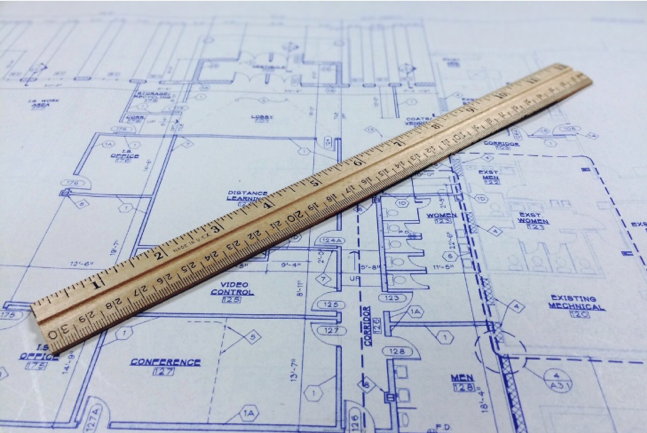
(Source)
But, what are those programs, and which ones are best in the market currently? Well, that’s what this post is all about. You will learn about the top-rated programs that have assisted professional designers in creating the most successful fire sprinkler systems. Let’s begin!
Best Programs to Design Fire Sprinkler Systems
Of course, after learning the names of the top-rated fire sprinkler system designing programs, you can give them a try. However, it takes an extensive level of skill, knowledge, and technical prowess to use those programs efficiently.
1. McCormick
It’s a fire sprinkler system designing program that has helped countless professional designers around the world. Along with helping professional designers create the best 3D diagrams and maps to build fire sprinkler systems, it also estimates the cost of building and installing the system accurately. It has an endless tool variety, including workflow method variations, pricing features, and labor calculation tools.
You can derive cost estimates for installing a modern fire sprinkler system even faster with the help of multiple impression generation. It’s an Arizona-based company’s product that came into existence in 1979. The company that developed the McCormick program (i.e., McCormick Systems) also offers a dedicated learning center for new professional designers to study the program.
2. FireAcad
FireAcad comes from a company that formed in 1985 and has since helped a huge number of professional designers in building feasible fire sprinkler systems. It has helped professionals design fire sprinkler systems on Revit® MEP, AutoCAD®, and so on.
It’s packed with a ton of features, and therefore, it’s one of the best in the market. Another major reason why this program was a huge hit involves the fact that it was designed by professional fire protection engineers. In a nutshell, this product lets you take a peek into a fire sprinkler system from the inside out.
3. AutoSprink
With the help of AutoSprink, the professional fire protection system designers dropped the 2D designing programs. They came to the 3D diagrams and features offered by the AutoSprink. You can draw a fire sprinkler system from scratch using this program, thanks to its unparalleled variety of tools and sophisticated design features.
You can run calculations while designing a fire sprinkler system model. Plus, the calculations take seconds or a few minutes but not hours. The program is already equipped with a ton of resources and concepts to assist in the designing process.
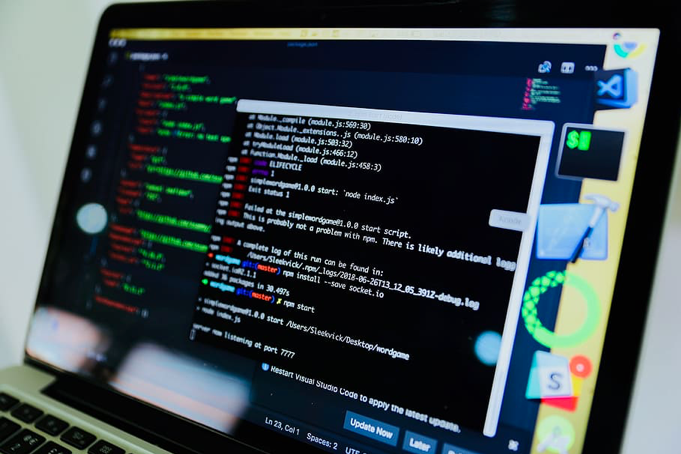
(Source)
Best Programs to Design Fire Sprinkler Systems: Conclusion
Whether it’s using FireAcad or McCormick, F2M Fire & Drafting Designs Inc. can help you design a seamlessly functioning fire sprinkler system for your building. As a building owner, it’s your responsibility to hire the best company in NYC to install a fire sprinkler system. It will not only help you get reductions on building insurance premiums but also offer great peace of mind to the occupants and tenants of the building.
With the help of F2M Fire & Drafting Designs Inc, you won’t have to invest any time learning about the complex fire sprinkler designing software programs and applications. Instead, our qualified experts will handle that for you. Contact us today at (718) 928-3009 and get a meeting with one of our experts!
All About F2M Fire Drafting & Designs Inc.
Why is F2M Fire Drafting & Designs Inc. known in NYC and the 5 boroughs as one of the best fire sprinkler system design companies? Fire hazards can lead to loss of life and property. Furthermore, a fire situation can also cause serious injuries and irreversible economic loss. This is why it is important to install a fire system in residential and commercial buildings.
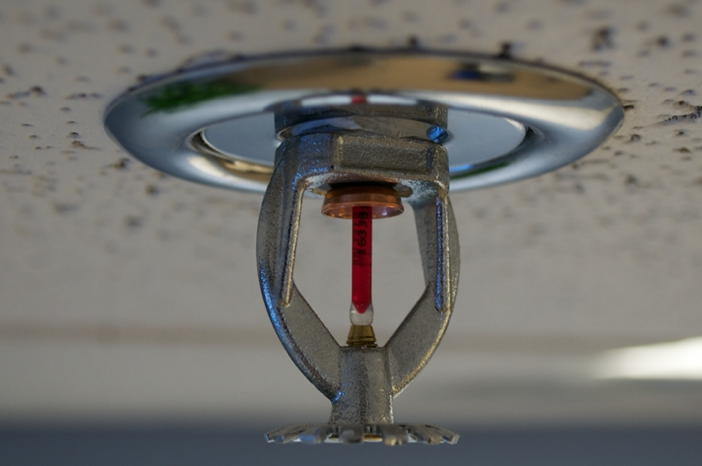
Fire suppression systems and fire sprinkler systems can safeguard residents and occupants in a property in case a fire hazard arises. These systems can effectively extinguish the fire and protect against damage and loss to both humans and buildings.
However, a fire system is only fully effective when it is installed correctly, as a lot goes into it. This is when F2M Fire Drafting & Designs Inc enters the picture. We are a fire protection providing company that can help you design a system within budget and in accordance with the project’s specific requirements.
What are Our Specialties & Services?
F2M is at your service if you’re looking for a credible fire protection services provider. Whether you’re looking for a fire suppression system or a fire sprinkler design, we have got you covered.
Our experts conduct a thorough examination of the project before taking off with the assigned job. You can rest assured that our professionals will provide you with services that fit your building’s specifications.
Our innovative, code-compliant services include:
Fire Sprinkler Design
F2M Fire Drafting and Design provides you with fire sprinkler designs on the basis of your
- Location
- Use
- Size of the building
- Local AHJ requirements
- Classification of fire hazards
Hydraulic Calculations
Conducting correct hydraulic calculations is important to ensure that the fire sprinkler system effectively controls a fire emergency. Incorrect calculations can mean the inability to extinguish a fire in the building. We, at F2M, provide you with correct hydraulic calculations according to the NFPA standards and local codes.
Standpipe Layout
Professionals at F2M Fire Drafting & Designs Inc have 20 years’ worth of experience with fire sprinkler systems. We can also provide you with impressive standpipe layouts within your budget.
Standpipe Calculations
Standpipe calculations are important for measuring the water flow, pressure, and duration in case of an emergency. We can provide you with calculations to eliminate any issues beforehand.
Fire Sprinkler Seismic Design
We at F2M can also provide you with a fire sprinkler seismic design that delivers high protection levels even during and after an earthquake.
Fire Sprinkler Seismic Calculations & Analysis
Our professionals are also specialized in calculating the seismic load that a fire sprinkler system is likely to experience during an earthquake.
Fire Pump/ Valve Room Layout
Factors like the size and structure of your room play a huge role in deciding the valve/pump room. Experts at F2M can provide you with the best layout to make the task easier for you.
2D Sprinkler Models and BIM Coordination
The 2D fire sprinkler design is a standard within the fire protection industry, and we are experts in just that. On the other hand, we can also deliver 3D building information modeling for efficient designing and planning.
Fire Sprinkler Piping Material Listing
F2M focuses on making fire system installation incredibly easy. This is why we also provide our customers with material listings so that they don’t miss out on anything.
Cost Estimation and Quantities Take Off
If you’re a fire sprinkler contractor, we can also provide you with cost estimation and quantities take-off services. This way, you can stay within your budget during the installation of a fire sprinkler system.
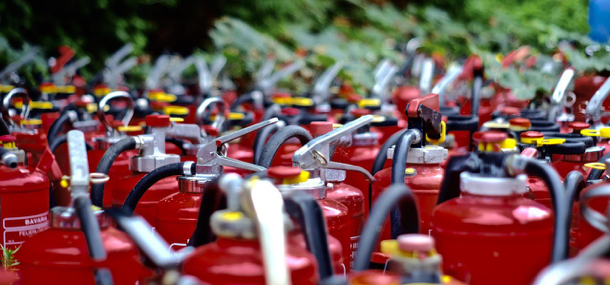
Why Should You Choose F2M Fire Drafting and Designs Inc?
At F2M Fire Drafting & Designs Inc, all professionals have a combined 20- years of experience in installing and upgrading fire protection systems. We can work within your budget, according to your building’s specifications, and also provide accurate, code-compliant designs.
Make sure to book an appointment with our professionals today for all your fire protection needs. Don’t hesitate to give us a call at (718) 928-3009.
What Makes the Best Fire Sprinkler Designer?
How do you determine if you’re choosing the best fire sprinkler designer? You must have certain qualities to do your job better once you enter a specific field or occupation. However, with fire sprinkler designing, there’s more than that. Fire sprinkler designing is a job that pertains to the safety of different types of structures from fire and what’s within (people, assets, pets, and more). In this article, we will focus on what qualities make great fire sprinkler system designers.
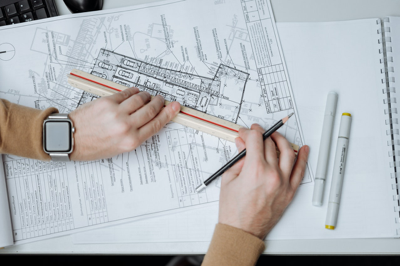
(Source)
What you should know is that many qualities will make a sprinkler system designer exceptional. However, at times of critical installation and designing, the most useful skills include problem solving and thoughtful communication. Here’s what you should know regarding the best fire sprinkler designer to make the right selection for your fire protection needs.
What’s the Role of a Fire Sprinkler Designer?
Fire sprinkler designers do not merely arrive at the commercial building or residential space with pre-made fire sprinkler designs and other fire protection system details. In fact, it is their job to learn about the specific requirements of their clients in light of modern fire protection safety rules and standards and system guidelines.
They aim to establish a rapport with their client that helps them deliver feedback and engage with utmost confidence. This is where the use of communication skills comes into play. They produce drafts, designs, and develop ideas that help prevent fire accidents in commercial, residential, or industrial spaces. While meeting the legal and industry rules and standards, it is the job of a fire sprinkler designer to develop a system that complies with the structure of the space. It also helps in keeping the place fire safe. The system should possess maximum efficiency in contrast with its location and type of deployment.
Furthermore, the designers perform research and relevant analysis. This is because they have to assess the practicality of the projects and system designs that they produce. Gathering client feedback is necessary, and it compels fire sprinkler designers to make sure that their system meets the needs of their clients.
Samples and prototypes are another sub specialty of a fire sprinkler system designer’s job. They also have to coordinate with engineers, technicians, and other important workers during the designing and installation phase of a fire protection system. When there are certain complications, it is the job of a fire sprinkler designer to restate their idea and plan with any necessary changes. Additionally, they are proficient in reading blueprints, assessing 3D AutoCAD diagrams, and offering field support if necessary.
Overall, there are many calculations, planning, and layouts that are the duties of a fire sprinkler designer. How well they fulfill their tasks and duties depends on their skills. The best fire sprinkler system designer is able to complete all the tasks timely and accurately while employing their skills to the maximum.
Skills of the Best Fire Sprinkler System Designers
Now, let’s discuss what skills make the best fire sprinkler designers. Firstly, they possesses communication skills. They should be able to listen to their clients and comprehend what their ideas and suggestions mean practically.
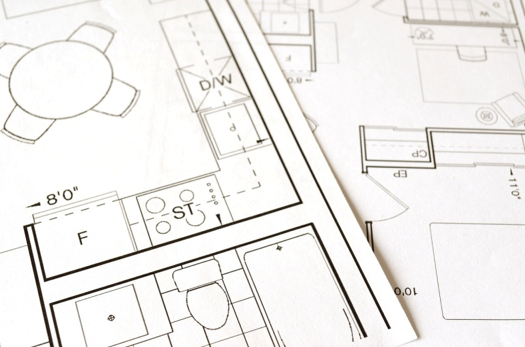
(Source)
By learning what their clients mean, they can use the information to draft the right fire protection system designs. These designs based on accurate communication and information comprehending skills fit the needs of the clients and thus result in greater satisfaction. Moreover, the skill set of the best fire sprinkler designer incorporates the ability to comply with all the legal standards and industry-set codes.
In addition, they possess observational skills, which allow them to see the potential flaws before anyone else. This means that they can deal with faults and errors in the installation and development phase. Problem-solving ensures that they can take prompt actions against any hiccups in the installation or development phase. Sometimes, critical fire protection components can cause major losses and difficulties if not dealt with rightly. However, these skills can make the job much easier for fire sprinkler designers.
What Makes the Best Fire Sprinkler Designer? Conclusion
If you require a fire sprinkler and protection system for your residential or commercial space, you should only choose the best fire sprinkler designers around you. To ensure that you receive the best fire protection designs and related services according to your needs, F2M Fire & Drafting Designs Inc. employs only the best designers.
So, if you want swift fire protection system upgrades or a completely new design, contact F2M at (718) 928-3009. Visit our official website for more information regarding our services. We have experience dealing in the fire protection industry of over 20 years. This puts us ahead of our competitors and the first choice of our customers.
Reference Links:
https://www.ziprecruiter.com/Career/Fire-Sprinkler-Designer/What-Is-How-to-Become
https://www.zippia.com/fire-sprinkler-designer-jobs/skills/
https://www.zippia.com/fire-sprinkler-designer-jobs/what-does-a-fire-sprinkler-designer-do/
Residential Fire Sprinkler Design
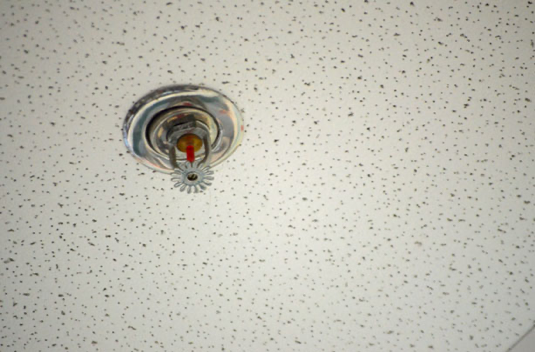
Residential fire sprinkler system design is usually not the same for any two buildings. This means there are many factors that fire sprinkler designers take into account. Whether it is a small humble abode or a high-end penthouse for which you want a fire sprinkler system, there will be certain design processes that will take place.
While the whole fire sprinkler design process comes under the specialty sprinkler designers and engineers, you can learn the basics by reading this article. From ceiling-mounted sprinkler headlines to wall-mounted smoke detectors, there are many things in the design process.
Residential Fire Sprinkler Design Process
Fire sprinkler and protection designing and installation companies take commercial fire safety as a critical job. Hence, they invest maximum time and effort to take effective measures that serve the purpose entirely. Let’s look at some of the basics, leaving the many complicated terms, terminologies, processes, and sequences.
Water Supplies
The NFPA standards are the foundation that set the processes, including planning, designing, construction, and installation of fire sprinkler systems for commercial buildings. Water supply is the major factor without which there can’t be a fire sprinkler system or an active fire protection system.
The NFPA 13D standard states that the flow of water supply for an active fire sprinkler should be 13 gallons per minute along with a pressure of 7 psi. Learning what kind of water supply is available for the fire sprinkler system makes planning easier. For instance, with large underground supply lines, it will be easier and cost-effective to build smaller and a few sprinkler lines.
What components does water supply planning involve?
- Water Meters help in determining the flow, pressure, and usage of water through the supply lines and in the sprinkler pipes
- Pressure-Reducing Valves help in keeping the pressure at a minimum according to the fixture ratings
- Elevation of the water supply pipelines and sprinkler pipelines can reduce the pressure significantly
- Meter Setters are not advisable to use since they restrict the overall water flow
Fire sprinkler design professionals can make the proper assessments; hence their involvement is of paramount importance.
Builder and Design Techniques
There are many ways to determine whether there are too many or few sprinklers in residential space. Builders possess the right set of skills and techniques that help ensure that a residence has the right amount of sprinkler heads in place. The NFPA 13D codes allow for sprinkler head omissions in certain home areas.
Moreover, the design process involves keeping the pressure requirements stable with the available budget. Hence, the number of sprinklers and pipes remains pre-determined. Besides that, there are material costs for the types of pipes, fittings, and sprinklers your designer chooses for your residence.
Piping Configuration
Piping configurations are extremely important in determining the efficiency and effectiveness of an active fire sprinkler system. Since without a proper pipeline and system planning, there can’t be sufficient water supply through the sprinkler heads, your fire system designer will pay close attention to it. Two common types of configurations include:
- Tree Configuration
- Looping Configuration
System Type
There are commonly two main types of fire sprinkler systems in use for residential and commercial buildings alike.
- Multipurpose System
This connection works well with the loop configuration as it involves a small number of connections and fittings. A multipurpose fire sprinkler system can integrate into residential plumbing. This way, it doesn’t involve any hassles, and sprinklers appear to be additional fixtures.
- Standalone System
The standalone system usually features a tree configuration. It involves multiple test and drain connections, along with a backflow prevention device.
Fire Department Codes and Requirements
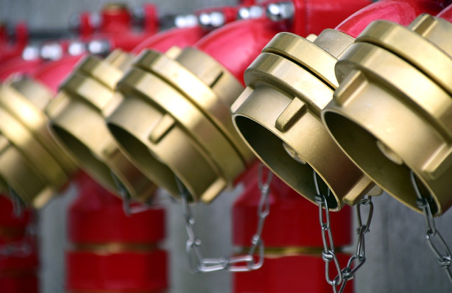
Codes and requirements are important to follow at every stage and phase of the fire sprinkler designing process. Strict guidelines and codes from the mandatory federal authorities make it imperative to comply. This ensures that all fire protection systems are up to date and above minimum security standards.
Finalization of the Design Process
Once all the complicated processes and design phases finish, a final concept in the form of a drawing appears. This drawing concept will involve using some of the most common engineering, 3D print, and diagram software. AutoCAD is common software that designers use to put the set plan into visuals. In the end, when the practical assessments are complete over the AutoCAD finish, the installation may take place.
Residential Fire Sprinkler Design: Conclusion
Do you want your residential fire sprinkler system to be extremely effective and foolproof? Surely, you cannot rely on an inexperienced fire designing and installation company. At F2M Fire & Drafting Designs Inc., we ensure that our expert builders, designers, and installation personnel conform to the industry standards and meet your requirements and needs.
Fire protection is critical to the safety of the residents. Therefore, you should only choose the best business in the industry. Our experience, skills, competence, and reliability in delivering fire sprinkler system design services are unmatched. Visit our official website for more information and contact us at (718) 928-3009.
F2M Fire & Drafting Designs Inc.
1231 Lafayette Ave, Fl 2
Bronx, New York, 10474
✆ (718) 928-3009
Email: info@f2mfadds.com
Reference Links:
https://www.awwa.org/Portals/0/AWWA/ETS/Resources/ResidentialFireSprinklerSystems.pdf
https://www.pmengineer.com/articles/94816-the-requirements-and-challenges-of-residential-fire-sprinkler-systems-and-water-meters
https://www.fresnocountyfire.org/wp-content/uploads/2017/04/residential_fire_sprinkler_systems_handout.pdf
https://www.stwater.co.uk/content/dam/stw/stw_buildinganddeveloping/domestic-and-residential-fire-sprinklers-design-policy-and-guidance-final-v5.pdf
The Science of Fire
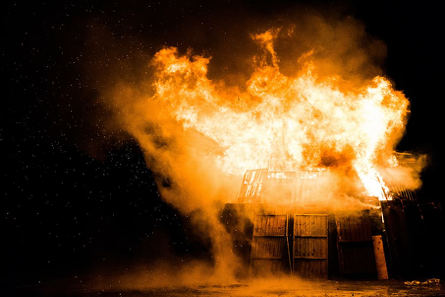
The science related to fire is a very interesting subject. Fire can occur nearly anywhere and anytime under the presence of the right conditions. It will depend on the environmental variable to depict the kind of fire incidents that occur. Is there an abundance of fuel and other factors that give rise to fire? Fire causes the loss of human life, business resources, and structural integrity. Here in this article, we will talk about fire scientifically and discuss the need for fire sprinkler systems for commercial buildings, offices, and other business spaces.
What we call “fire” is a chemical reaction known as combustion. It is a common chemical reaction that takes place around us every day. It requires fuel and other factors, including oxygen in the air, material to burn, and heat to begin the reaction. Once the heat on a material goes up to a certain temperature, combustion takes place. Let’s dive deeper into the process of learning how a small chemical reaction can be detrimental to businesses and the lives of humans who fall victim to fire accidents.
Understanding the Science of Fire
When some form of fuel interacts with the oxygen in the air, the combustion reaction takes place. However, not all oils such as gasoline or wood catch fire when they come in contact with oxygen under any condition. For combustion to begin, the material has to be above a certain threshold of temperature. This will form the right conditions for ignition, and oxygen-aided fire will catch onto the material.
To understand better, here’s the fire triangle that experts and professionals explain:
- Oxygen – present in the air
- Fuel – any material that burns, such as wood, paper, law, etc.
- Heat – enough exhaustion and heat energy transfer to ignite the material
The trio of these elements forms the Fire Triangle that is necessary for teaching fire prevention and control. Why is that necessary? You should always remain prepared for unusual circumstances but more than that, learning what causes what will ensure that you know the right precautions. Removing any of the elements from the equation of the Fire Triangle, such as fuel, heat, or oxygen, will suppress the fire. For example, covering the fire with a blanket can remove the supply of air to it and thus put out the fire.
Learn the Chemical Reaction of Combustion
The most prominent causes of fires in buildings include paper burns, faulty wires, stove accidents, and more. This growing number of causes of fire accidents is demanding more and better forms of fire protection and safety systems. While fuel can be in any state (solid, liquid, or gas), once it reaches a high enough temperature to expel gases (if not gas already), combustion begins. The gas molecules break apart and join with oxygen to form water and carbon dioxide molecules.
Fire keeps erupting if the heat is consistent. Consequently, the heat relies on the burning fuel to maintain a consistent temperature. Altogether, with the presence of enough fuel and heat, the reaction will not come to an end quickly. Hence, the fire spreads once the gases from the reaction start to disperse.
Why Do Businesses Require Fire Sprinkler and Protection Systems?
Reports from National Fire Protection Association show how fires cause so much damage. According to a report of 2017, the property damage from fire accidents totaled $10.7 billion. Be it residential, commercial, or industrial fire, a place with fire hazards is prone to fire accidents. That’s why there are strict codes and standards that fire-hazardous places have to follow.

(Source)
There are many different forms of damages that structures and buildings have to endure due to fire incidents. Fire is a naturally destructive element when viewed on a grand scale. Since minute fires are easily controllable, there are no major causes of concern. Here are the forms of damages that can take place and affect commercial buildings, offices, and other spaces.
- Aesthetics damage
- Smokes pollution
- Soot buildup and smells
- Structural damage
- Fire protection equipment and system losses
- Business resource losses
- Health injuries
- Loss of human lives
- Loss of assets and expensive business resources
The Science of Fire: Conclusion
Do you think that you require a better fire protection system? Do you think your current fire sprinkler or other fire-safety system is capable of keeping our and your environment safe? If the answer is not a “yes,” you should consider reaching out to F2M Fire & Drafting Designs Inc. for help.
We offer the best resources at our disposal, including efficient fire sprinkler designers, using our experience of over 20 years in keeping buildings safe from fire damage. You can rely on us when it comes to keeping your space fire-safe. Call us at to schedule a meeting with an expert today.
F2M Fire & Drafting Designs Inc.
1231 Lafayette Ave, Fl 2
Bronx, New York, 10474
Learn more at our official website.
Reference Links:
https://www2.illinois.gov/dnr/education/Documents/ScienceFire.pdf
https://www.techniquest.org/blog/the-science-of-fire/
https://www.sciencelearn.org.nz/resources/747-what-is-fire
https://hallmark-mc.com/blog/effects-of-fire-damage-to-businesses/
Types of Building Fire Sprinkler Systems
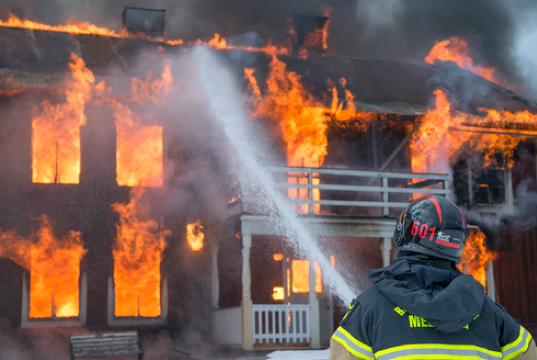
What are the different types of building fire sprinkler systems? Sprinkler systems are essential components of a property’s fire safety plan. Besides taking other fire protection safety measures, you should install a state-of-the-art fire sprinkler system. This system suppresses the flames and smoke, preventing the fire from spreading.
Consequently, you will notice a reduction in fire-related damages. Furthermore, it gives people enough time to escape from the building and stay in a safe area until fire services reach the location. There are four major commercial sprinkler systems to consider, each of which offers different features and response rates. These options come at different prices, depending on the features. So, if you want one that offers high levels of protection and a good response time, you should weigh your options carefully.
Types of Fire Sprinkler Systems
Generally, there are four major fire sprinkler systems. These include dry pipe, wet pipe, pre-action, and deluge. All these options are effective to prevent the spread of flames and reducing fire damage. After installing these systems in your property, you don’t have to worry about severe damages in case of fire-related emergencies. While deciding between these options, you should consider their applications and activation process.
1. Wet Pipe System
Wet pipe sprinkler systems are common in commercial and residential buildings. In New York City, you will find these systems in every other home and office. This system starts working when the heat activates the sprinkler head. This triggers the system, and water stored in the pipes releases with pressure. Each sprinkler head has sensors that work independently. This means the heat will trigger sprinkler systems in the affected area. In the case of a false alarm, you bear limited water wastage and related expenses. Wet pipe systems are a low-maintenance option, inexpensive, and are highly recommended for schools, offices, and commercial properties.
2. Dry Pipe System
A dry sprinkler system is different from a wet system because it doesn’t store water in the pipes. Instead, it contains pressurized nitrogen or air that is released when the system detects a fire. The sprinkler head has sensors that identify a fire to activate the valves. After the release of gases, the water fills in the pipe and eliminates the remaining flames or smoke. This system is more complicated and expensive than a wet pipe system. However, it is suitable for regions with cold climates due to frozen pipes. If you use a wet pipe system in cold climates, the water will freeze, blocking the response in an emergency.
3. Pre-Action System
Pre-action systems are similar to dry pipe sprinklers. The only difference is the activation system. Pre-action systems include two-step activation. When the system detects smoke or a fire, it opens the valves allowing water to flow into the pipes. Then, the sprinkler heads release water over the fire after detecting the affected area. This reduces the risks of damage during a false alarm. What happens is, the system verifies the fire twice, effectively protecting your assets from water damage. Pre-action systems are helpful in locations where accidental discharge can result in irreparable damages. For instance, in data centers, libraries, and museums, the management uses pre-action fire sprinkler systems to protect precious items.
4. Deluge System
The deluge sprinkler system is another advanced version of the dry pipe system. But, this system is in contrast to the pre-action system. In this system, the sprinkler heads are always active. This system doesn’t include a heat-sensing device in the head. But, you need to include an external heat or smoke sensor with this system to turn on the valve. When the sensors detect heat, it fills the water in the pipes and releases it from all the active sprinkler heads. This creates a flooding effect in the entire location. Many industries utilize deluge sprinkler systems to protect their highly expensive and high-precision machinery. Many industries also use flammable liquids along with this system for rapid recovery.
Choosing the Best Fire Sprinkler System
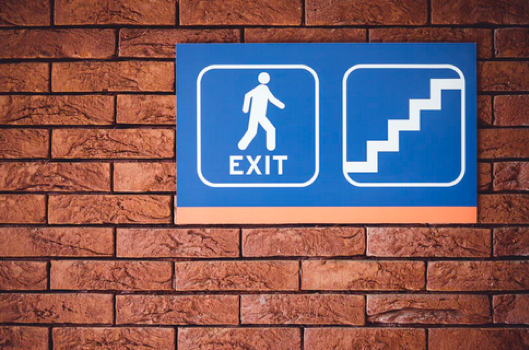 Every sprinkler system that we just mentioned contains special features and unique benefits. Therefore, doing your research before installing a system is highly important. Consider evaluating the options by comparing their pros and cons. The choice of a sprinkler system depends on the specific environment. Also, you can use different systems strategically and secure an entire building. For a fire sprinkler installation plan, you will need a professional who can inspect the area and identify the best locations for installation. Contact F2M Fire and Drafting Designs Inc. and consult with a professional team. They will guide you about how you can enhance the security of your commercial and residential property.
Every sprinkler system that we just mentioned contains special features and unique benefits. Therefore, doing your research before installing a system is highly important. Consider evaluating the options by comparing their pros and cons. The choice of a sprinkler system depends on the specific environment. Also, you can use different systems strategically and secure an entire building. For a fire sprinkler installation plan, you will need a professional who can inspect the area and identify the best locations for installation. Contact F2M Fire and Drafting Designs Inc. and consult with a professional team. They will guide you about how you can enhance the security of your commercial and residential property.
Installing a Sprinkler System
While creating a fire safety protection plan, you cannot exclude fire sprinkler systems. These systems offer a rapid response after detecting a fire and smoke in the facility. But before choosing a fire sprinkler system, it is essential to evaluate the options, maintenance, installation, and design of the different systems. A professionally trained and experienced technician will guide you about factors to consider before choosing a system. Furthermore, they will install the system to ensure maximum security and utmost safety for your assets and employees.
Types of Building Fire Sprinkler Systems: Conclusion
Do you want to install fire sprinkler systems in your facility? If so, you can consult a professional at F2M Fire and Drafting Designs Inc., and they can install a high precision system at your home and office.
Give us a call at 718-928-3009 right now and talk with our experts.
Fire Sprinkler Requirements for Commercial Buildings in New York
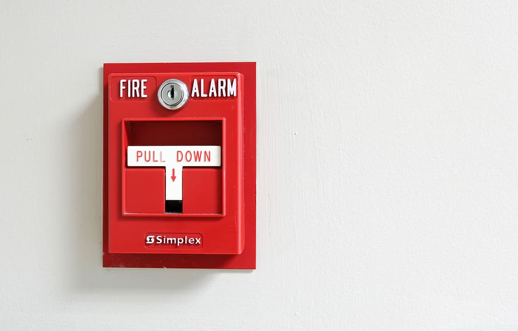
City rules and codes that state fire sprinkler requirements for commercial buildings must be strictly followed. Commercial buildings possess a wide range of assets, resources, and, most of all, human resources, which means that safety is a priority. By ensuring that your commercial office, floor, shop, or any other space has the right security and safety measures, you can provide peace of mind for yourself and your workers. Since fire accidents are a major concern, commercial building owners and occupants should pay close attention to the fire safety methods that they employ.
Whether it is a high-rise commercial building or a compact commercial office, fire accidents are possible almost anywhere and anytime if fire hazards are present. However, it is not really easy to address all the factors and install a fire sprinkler system into a commercial building due to codes and standards. That is why our prime focus in this article will be on the fire sprinkler requirements for commercial buildings.
New York’s Commercial Fire Sprinkler Requirements
There are many requirements that a fire sprinkler system for a commercial building in New York should meet. In this case, the federal authorities like NFPA, along with many regional and local authorities, aim to establish certain standards and codes that every fire sprinkler designer has to follow. By conforming to the industry-set rules and codes, you can ensure that the fire protection system of your commercial building is accurate and meets the required safety standards.
While there aren’t any New York-specific codes and requirements for installing a fire sprinkler system, there is a whole range of standards and requirements that generally exist for the installation of a fire protection system. The overall aim is to make the city and its commercial buildings safer, fire-resistant, and the people more cautious.
What are the Requirements for Commercial Fire Sprinklers?
When it comes to commercial buildings and the installation of sprinkler systems, it is best to consider the rules set forth by the National Fire Protection Association. The code set NFPA 13D offers details and clear instructions on the conditions, procedures, and methods of installing fire sprinkler systems in a commercial building. It entails that you have to meet the standards and requirements to ensure the maximum safety of everyone inside a commercial building.
By following this code, it becomes easier to assess whether the fire safety level of a commercial building is below or above par. Hence, it is easier to take prompt actions to make sure no human lives and business resources are at risk. There are many code standards and set regulations that deal with the application of fire sprinkler systems. Without following the codes and complying with the requirements, it is impossible to meet the level of fire resistance that the federal authorities ask every building to maintain.
Fire Code and Building Code of New York
If you are looking for specific NYC commercial buildings rules regarding the use of fire sprinkler systems, it is best to know that every building should comply with Chapter 9 of the Building Code and Fire Code’s Chapter 9. A section of the same Building Code mentions whether the fire sprinkler systems are optional or mandatory.
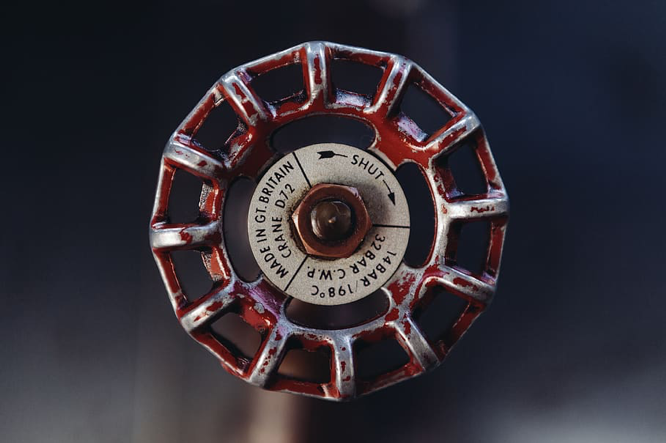 The section takes into account the occupancy classification and automatic sprinkler system requirements. Although the NFPA codes and requirements reference the proper design and installation, the NYC Building Code gives strict and clearly stated instructions regarding specific applications and occupant groups.
The section takes into account the occupancy classification and automatic sprinkler system requirements. Although the NFPA codes and requirements reference the proper design and installation, the NYC Building Code gives strict and clearly stated instructions regarding specific applications and occupant groups.
Aside from the fire sprinkler system application and set standards, another section deals with the use of fire-extinguishing system applications. The main discussion under this NYC Building Code section is whether water-based fire suppression is appropriate. It takes into account all the major systems such as halon, carbon dioxide, foam, dry-chemical, wet-chemical, and clean-agent systems. Furthermore, the instructions don’t end there.
It also emphasizes the proper maintenance of the automatic fire sprinkler systems. Importantly, the maintenance and operation instructions also apply to other fire-safety measures and methods. According to Chapter 9 of the Building Code for NYC commercial buildings, there is a set requirement for labeling out-of-service fire sprinkler systems and other fire safety measures.
Fire Sprinkler Requirements for Commercial Buildings: Conclusion
Is your commercial space located in New York? Well, in order to receive the best fire protection system design, you should contact a fire protection business that operates to the highest standards.
More importantly, you must seek the help and guidance of a fire sprinkler design company that offers maximum federal code compliance. Do you think that your building requires an update or a completely new fire sprinkler system? Call Fire & Drafting Designs Inc. at (718) 928-3009 for information.
We cater to a wide range of customers and business clients looking to adopt the latest fire protection measures and systems in their commercial buildings in New York.
F2M Fire & Drafting Designs Inc.
1231 Lafayette Ave, Fl 2
Bronx, New York, 10474
✆ (718) 928-3009
info@f2mfadds.com
Reference Links:
https://up.codes/viewer/new_york_city/nyc-building-code-2014/chapter/9/fire-protection-systems#9
https://www1.nyc.gov/site/buildings/industry/project-requirements-design-professional-sprinkler.page
https://www1.nyc.gov/site/fdny/about/resources/code-and-rules/nyc-fire-code.page
https://nycadmincode.readthedocs.io/t27/c01/sch17/art04/
Standpipe System Design
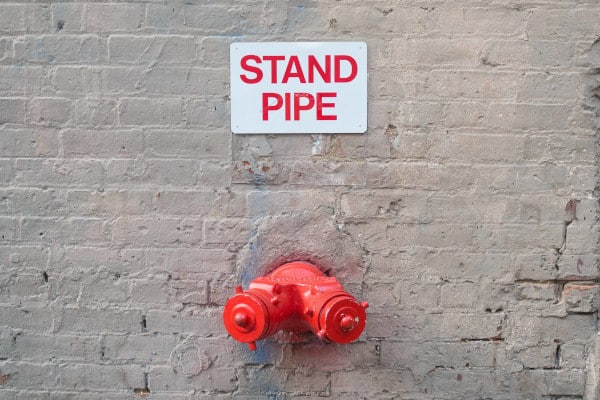 Are you in need of standpipe system design for your commercial, industrial, or residential project? At the time of construction of a building, the contractor manages the design and building of the standpipe system. You should however hire a professional company to design building fire suppression systems. Many building owners are unaware of the nuances in standpipe system design and often end up compromising on its efficiency and cost. Therefore, in advance of beginning your fire sprinkler system design and layout for your building project, you should learn what a perfect standpipe system design contains. Here are some questions that you need to ask yourself while understanding the system design:
Are you in need of standpipe system design for your commercial, industrial, or residential project? At the time of construction of a building, the contractor manages the design and building of the standpipe system. You should however hire a professional company to design building fire suppression systems. Many building owners are unaware of the nuances in standpipe system design and often end up compromising on its efficiency and cost. Therefore, in advance of beginning your fire sprinkler system design and layout for your building project, you should learn what a perfect standpipe system design contains. Here are some questions that you need to ask yourself while understanding the system design:
- Which type of standpipes is perfect for your home?
- What is the installation process?
- What standpipe system should you install?
- When do you need a standpipe system?
- Where should you install the hose outlets?
- What pressure does a hose outlet have?
- What is the appropriate flow rate?
What is a Standpipe?
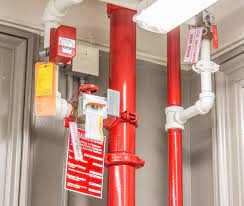 National Fire Protection Association suggests that standpipes include a network of piping, valves, hose connections, and other components that safeguard your home from a fire. You should place these outlets in such a way that the water flows through the hoses and nozzles in streams or spray patterns. The complex structure of the standpipes will help put out a fire throughout the building. Other than inside of the house, the standpipe system should also protect the building structure. A standpipe system includes a vertical hose that generates high water pressure from the pump. Most standpipe systems connect with a sprinkler system. Using this system, firefighters can strategically manage the fire. Therefore, it is important to place the outlets strategically throughout the building. At F2M Fire and Drafting Designs Inc., we help homeowners place standpipes in a way that makes it easier for firefighters to access the system and put out the fire in time.
National Fire Protection Association suggests that standpipes include a network of piping, valves, hose connections, and other components that safeguard your home from a fire. You should place these outlets in such a way that the water flows through the hoses and nozzles in streams or spray patterns. The complex structure of the standpipes will help put out a fire throughout the building. Other than inside of the house, the standpipe system should also protect the building structure. A standpipe system includes a vertical hose that generates high water pressure from the pump. Most standpipe systems connect with a sprinkler system. Using this system, firefighters can strategically manage the fire. Therefore, it is important to place the outlets strategically throughout the building. At F2M Fire and Drafting Designs Inc., we help homeowners place standpipes in a way that makes it easier for firefighters to access the system and put out the fire in time.
What is Standpipe Design?
A standpipe design contains a network of pipes connected with a water supply and hose. These pipes help extinguish fires in a building. Firefighters can access these outlets and use them to control the fire. Every building in NYC should contain a standpipe system. The systems’ design should align with the building’s architecture. You don’t have to worry about this design if your building doesn’t meet the International Building Code. Technicians in our facility have been installing, designing, and maintaining systems for a long time. Besides the building design, our experienced team members can configure the standpipe design to save time and effort. If the building structure doesn’t meet the local building authority’s requirements, regulatory authorities will give you a hard time. Our engineers can help you navigate the building approval process successfully.
Combine Standpipe System with Sprinklers
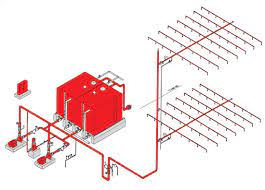 Many building authorities connect the standpipe system with the sprinkler system. Because of the system’s high pressure and versatility, you can connect it with a water sprinkler system to efficiently extinguish flames. Sprinkler systems are remarkable when it comes to controlling fires in residential and commercial buildings. For installation, designs, and maintenance of the sprinkler system, you can contact our team. Standpipe systems and sprinkler systems optimize firefighting strategies.
Many building authorities connect the standpipe system with the sprinkler system. Because of the system’s high pressure and versatility, you can connect it with a water sprinkler system to efficiently extinguish flames. Sprinkler systems are remarkable when it comes to controlling fires in residential and commercial buildings. For installation, designs, and maintenance of the sprinkler system, you can contact our team. Standpipe systems and sprinkler systems optimize firefighting strategies.
Classes of Standpipe Systems
There are two categories of standpipes according to the person who manages the water outlet during a fire. Different standpipes are helpful in different conditions. Therefore, it is essential to choose wisely. Below, we’ll explain all three types of standpipe systems:
1. Class 1
This standpipe class contains a two-and-a-half-inch connection. Only professionals use this type of standpipes. Installation without proper knowledge can be dangerous. Because the water pressure is high, you should consult a professional to handle this task. This class doesn’t contain a hose. In case of an emergency, firefighters must bring a hose and connect it with the outlets.
2. Class 2
This class of standpipes includes 1.5 inches of hose and is placed in the hallways. Anyone can use this standpipe in case of an emergency. That’s why you should place these standpipes in the hallways. Even so, the operator should have some knowledge about using this standpipe. Using this hose can be dangerous for an unskilled person, so to avoid any mishaps, these options have become obsolete. Even in older buildings, professionals install new systems.
3. Class 3
You can use class 3 standpipes in any condition. It contains the features of both standpipes. Because of the heavy water streams, experts recommend against a layperson operating this system. Therefore, at the time of emergency, it is important to contact fire stations and trained building occupants.
Standpipe System Design: Conclusion
Want to learn more about standpipe system design? Give us a call and speak with our seasoned experts about your standpipe system design project for your building. Our experienced engineers and contractors will custom design the best priced and most efficient system for your commercial project.
F2M Fire & Drafting Designs Inc.
1231 Lafayette Ave, Fl 2
Bronx, New York, 10474
✆ (718) 928-3009
info@f2mfadds.com
What Does a Fire Sprinkler System Estimator Do?
What services does a fire sprinkler system estimator provide? Whether you want to install a fire sprinkler system in your residential building or factory, you need to consult with an estimator for design and cost estimation. People also refer to estimators as cost planners because they inspect the location, plan the fire sprinkler system design, and estimate the cost for the complete project. The estimators help the installation team from the early stages of the project. They help reduce the cost of the project by choosing affordable products without compromising on quality. Estimators determine the cost of the project through specifications and drawings. Besides cost reduction, a fire sprinkler system estimator also saves time by streamlining the tedious process. In this article, we will discuss why an estimator is important for installing a fire sprinkler system.
Who is a Fire Sprinkler System Estimator?
A fire sprinkler system estimator creates an overall estimate for the installation process. The estimation includes various components and items required to ensure high-level fire security in the facility. They calculate fees, general conditions, and overheads for the installation companies. An estimator has extensive knowledge in different fields as they closely work with clients, vendors, architects, and engineers while constructing an estimate.
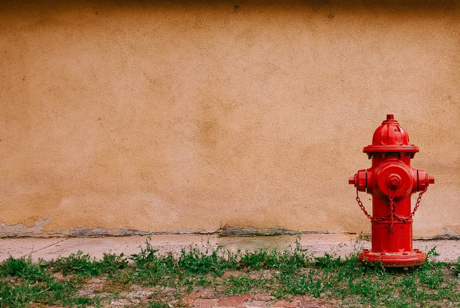
An estimator should have accurate information and details about the project. They must know how to keep track of resources and materials and avoid inaccuracy in the estimation process. A good estimator knows the ins and outs of engineering and architecture. They utilize their knowledge, education, and experience to come up with a system design. They evaluate the project from multiple angles and create an accurate estimation in favor of the client and installation company. Therefore, estimators are essential in planning a fire sprinkler system for a residential and commercial facility.
Estimators also have strong mathematical and analytical skills. They have solid communication skills and have the ability to work with specialists in the field. They work with installation teams to review the project plans. A sprinkler installation company covers technical aspects of the project, while an estimator analyzes the design and makes sure that every little detail is perfect.
What does a Fire Sprinkler System Estimator Do?
Here are some tasks that a fire sprinkler estimator performs:
- An estimator knows NFPA standards and can analyze hazards.
- They identify the fire sprinkler system design and create a preliminary plan.
- A fire sprinkler system estimator identifies suitable materials and creates a budget based on the estimate.
- An estimator has a thorough understanding of hydraulic calculations.
- They can assist sales teams with design estimations and help them with bids and quotations.
- Besides material, an estimator will identify the equipment required for the project.
- They also handle price-related items and create detailed cost estimates.
- Estimators create bid packages and present them in front of customers.
- They create proposals according to projects.
- Ensures installation and design accuracy by consistently performing on-site surveys.
- They can coordinate with local authorities and project managers to ensure complete documentation and approvals.
- Estimators have complete knowledge about a sprinkler system. Also, they are aware of piping and other environmental elements.
- Their goal is to satisfy clients and sprinkler installation companies with estimates, designs, and accurate details.
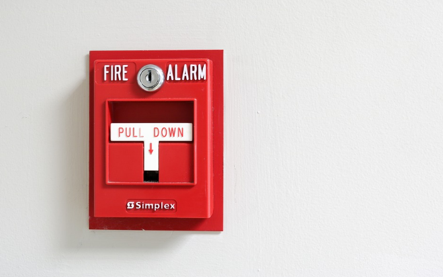
Tools Construction Estimators Use
Estimators use different tools and techniques to perform accurate tasks. They use spreadsheets, software applications, or simulation tools.
1. Estimating Software Tools
The software brings automation to the cost estimating process. Estimating software tools perform numerous functions and help estimators with the bidding process. With estimation software, estimators can evaluate the cost accurately, putting forward the best bids. The experts at F2M Fire & Drafting Design Inc. use McCormick estimating systems, used worldwide by most professionals.
2. Spreadsheets
For the longest time, estimators have been using spreadsheets for cost estimation. They use complex formulas in an Excel spreadsheet for estimation. Here are some benefits of using a spreadsheet for estimation:
- Easy and flexible to use
- Include customization templates
- It gives solid mathematical control
- Amazing for data visualization with charts and built-in graphs
3. Simulation Tools
Simulation tools help to identify the accuracy of the cost estimation. These tools identify errors in the estimation process and bring accuracy.
Fire Sprinkler System Estimator: Conclusion
An estimator is essential for every fire suppression system installation process. They offer next-level evaluation and perform initial estimation for successful and cost efficient sprinkler installation. If you are looking for a cost estimator for commercial, residential or industrial fire sprinkler system design, give us a call. Our experts here at F2M Fire & Drafting Designs Inc. can offer the best solutions while keeping your needs in mind.
Contact us at 718-928-3009, and we will send a professional to your doorstep for instant inspection.
The Need for Fire Protection Systems in Commercial Buildings
Let’s discuss why there is an important need for fire protection systems in commercial buildings. Fire is a common hazard that affects thousands of businesses every year. Fire incidents not only cause major structural damages and threats to human lives but also involve a disruption in the operational process. Moreover, when fire incidents take place in commercial buildings, they can cause injuries to the workers and damage expensive assets, etc. For that reason, the need for fire protection systems in commercial buildings is of paramount importance. In this article, we will discuss the importance and requirements of commercial fire protection systems.
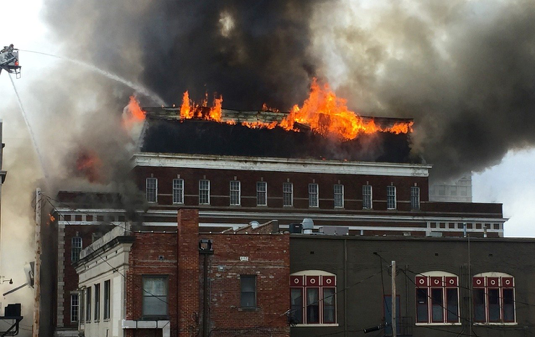
(Source)
Specific Requirements for Commercial Fire Protection Systems
There are multiple sets of codes, requirements, and standards for building, designing, and installing commercial-level sprinkler systems. The most common standards sets are from the National Fire Protection Association (NFPA). NFPA 13 states proper safety standard requirements by outlining the required conditions and procedures in the installations of commercial fire sprinkler systems installation.
In reality, commercial fire sprinkler system designers and managers of building projects need to pay attention to the local fire safety guidelines as well. Overall, it is imperative to meet all the local and federal guidelines in installing commercial fire sprinkler systems.
Here are some specific fire sprinkler system requirements for commercial buildings:
- Buildings with a height over 55 feet require an automatic fire sprinkler system installed throughout the structure
- Automatic fire sprinkler system installation should take place in all newly built commercial buildings with a fire area of over 5,000 square feet. Moreover, the automatic fire sprinkler system installation is compulsory when a remodeling, renovation, or any other form of expansion increases the fire area beyond 5,000 square feet or 12,000 square feet. The main thing to note should be that the coverage has to be maximum and throughout the commercial structure.
- You should have fire pumps installed in addition to the fire sprinkler system. This is important when the municipal water supply doesn’t carry the required pressure to deliver water effectively through the sprinklers. Moreover, in case the water supply involves the use of a non-pressurized water tank, fire pumps are mandatory. Besides that, the fire pumps have to be in a separate building from the fire sprinkler system. If they are in the same building, there has to be an exterior entrance to the fire pump room.
- Water control valves have to be of utmost convenience and usable when required. Their access is of paramount importance to prevent water damage and control the spread of rapidly growing fire. It should be easy to find and use the water supply control valves with clear identification throughout the commercial structure. Valves have to carry the information regarding the areas they cover.
- When it comes to self-storage facilities, there has to be an active and working fire sprinkler system in place at all times. This is not mandatory if the facility is one-story with no indoor doorways or corridors in addition to a one-hour fire barrier.
These are a few commercial fire protection and sprinkler standards and compliance materials, as the NFPA states. You should only learn a few basics of the commercial fire protection standards if you cannot grasp the technical concepts. By only learning why they are necessary, you may be able to procure the right fire protection services provider to help you keep your commercial space fire-safe.
Importance of Certain Fire Protection System Components
Fire Sprinkler/Standpipe Systems
Sprinkler systems turn on when they detect a certain level of heat or smoke. They are the prompt reaction against any spreading fire, which keeps the fire from spreading and getting massive enough to cost health injuries, structural damage, and more. Standpipe systems and sprinklers are most commonly present in various commercial buildings for the safety of the occupants and workers.
Moreover, it is imperative to carry out regular inspections and tests to ensure that every fire protection system component is up to par and efficient.
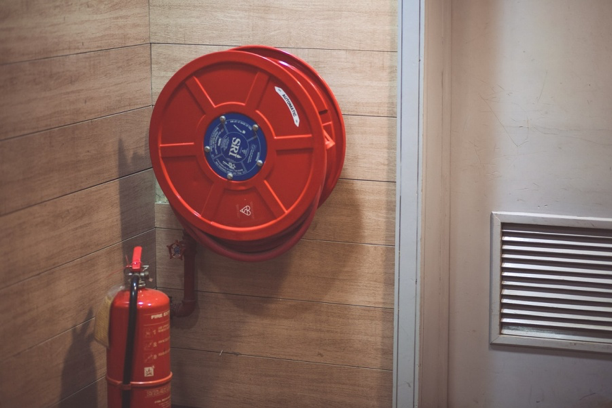
(Source)
Fire Extinguishers
Fire extinguishers are manual forms of fire protection that you can use in case of a fire accident. They are usually wall-mounted and present in nearly all buildings, whether commercial, industrial, or residential. All workers and occupants should possess the right set of knowledge regarding the use of fire extinguishers. Furthermore, it is necessary to maintain the condition, quality, and function of fire extinguishers for the safety of occupants of the commercial buildings.
Fire Alarms and Emergency Signs
Fire alarms should be the first line of defense against any fire-related issues. Without proper alert and notification, it is difficult to take accurate and timely actions. A fire alarm is a major component of a commercial building for fire protection. Moreover, there should be a clear exit and emergency signs to assist people through the smoke and flames during a fire accident in a commercial building.
Fire Protection Systems in Commercial Buildings: Conclusion
Suppose you want reliable and the best fire protection services for your commercial building. In that case, you should get in touch with F2M Fire & Drafting Designs Inc. We possess the knowledge of all the mandatory fire protection standards, regulations, requirements, and more. You can achieve peace of mind regarding the fire safety of your building with our help.
Visit our official website and learn more. Contact us and schedule a consultation with an expert from F2M Fire & Drafting Designs Inc. today.
F2M Fire & Drafting Designs Inc.
1231 Lafayette Ave, Fl 2
Bronx, New York, 10474
✆ (718) 928-3009
info@f2mfadds.com
Reference Links:
https://www.nfpa.org/codes-and-standards/all-codes-and-standards/list-of-codes-and-standards
https://www.qrfs.com/blog/313-icc-and-nfpa-codes-and-standards-a-basic-guide/
https://www.safetyfirst.co.nz/news/fire-protection-compliance
McCormick Estimating Tools & Fire Sprinkler Systems
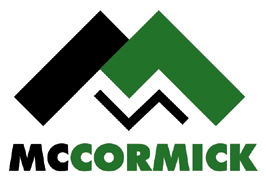
McCormick Systems offer fire sprinkler system design tools that are highly accurate in estimating the costs to build out and install a new fire sprinkler system. There are numerous levels of these tools, including labor, pricing, and different installation workflow methods. Professionals can estimate different floors separately with multiple takeoffs. This increases the flexibility and speed of deriving an estimate. The tool helps with the audit trail and allows view takeoff by generating customized bids and breakout.
McCormick Systems is a Chandler, Arizona-based company founded in 1979. The company’s main office is divided into different divisions offering various solutions such as accounting, shipping, support, construction, marketing, and development. Also, they offer a dedicated learning center that helps beginners understand the tool.
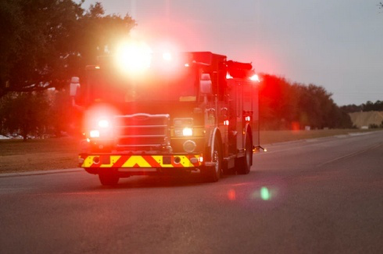
Benefits of McCormick Estimating Systems Software
Here are some benefits of McCormick Estimating Systems software for fire sprinkler systems:
1. Four Levels of Solutions
The company offers a Windows-based estimating system suitable for industrial, residential, and commercial estimation. Their software contains four different levels of application. These include WIN 1000, WIN 3000, WIN 4000, and WIN 6000. Every set is suitable for different task levels. They have an individual level for small and large fire sprinkler installation companies.
2. Array of Features
McCormick estimating software includes details about the different necessary components of a fire sprinkler system. Contractors and installation companies can utilize this tool for accurate service estimation. This tool can import prices from different manufacturing companies. Experts can search through the database and find the best prices for items. The tool also offers other features, such as time management, material billing, change order tracking, digital takeoff, and design-build estimating.
3. Smooth Integrations
Integrating McCormick Systems with popular tools is pretty easy. Fire sprinkler installation companies can include QuickBooks, AutoDesk, Sage Timberline, and Excel with this estimation system. Furthermore, they can contact the vendor to resolve integration problems. For efficient use, the company provides video tutorials. This tool directly communicates with other project management applications. That way, companies can enhance their collaboration and handle accounting.
In addition, they can manage and align every fire sprinkle design task.
4. Quick Material Cost Comparison
This tool is incredible for cost estimation, and it helps with the quality arrangement of equipment and materials for different projects. Fire security system installation companies can also import prices from different suppliers and compare. They can calculate the total cost of the entire project and instantly begin the installation process. Estimation software gives access to costs faster than any other tool. Check different websites and choose the best materials and equipment for fire sprinkler installation.
If you want to consult with an expert fire sprinkler system estimator, you can contact F2M Fire & Drafting Designs Inc.
5. Accurate Recalculations
After collecting prices and quantities, technicians can use them for the bidding process. As a result, they can create accurate bids. Also, they can perform grueling manual calculation processes and estimate accurate expenses without a hitch. Furthermore, the software enables them to immediately recalculate the estimates after altering price and quantities. The software automatically calculates costs after modifications. This tool has numerous benefits for fire sprinkler system design. Furthermore, experts can anticipate errors in the system for accurate cost estimation. Using this tool, a fire sprinkler installation team reduces the risk of mistakes.
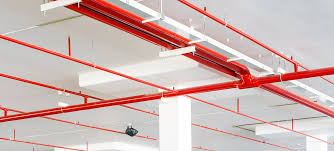
6. Central Storage and Tracking of Information
Another reason to use this tool for estimation is centralization. The installation team can edit, store, and track all information through a central database. The formulas, prices, and productivity factors that can be misplaced are secure in a single data repository. Technicians don’t have to store information in different spreadsheets. Tracking history and changes in cost data is a tough job when a professional works in disparate flat files.
7. Efficient Monitoring of Construction Costs
Estimation software helps calculate takeoff quantities and prices. Furthermore, it helps prepare bids, but it offers more benefits than cost estimation. Technicians use this tool for documentation and track changes in fire sprinkler system design. Fire sprinkler installation teams can visualize every problem with the estimation process when they are equipped with McCormick Estimating Systems Software.
McCormick Estimating Tool & Fire Sprinkler System Design: Conclusion
At F2M Fire and Drafting Designs Inc., we create fire sprinkler system designs after estimating costs using the McCormick software system estimating tools. That’s how we offer our clients highly accurate costs and solutions. Using this high-precision tool allows us to plan a smooth installation process without any surprises. Because of this efficient automated application, we reduce the chances of errors as well.
Call our experts today for a free consultation about your fire sprinkler system design project.
F2M Fire & Drafting Designs Inc.
1231 Lafayette Ave, Fl 2
Bronx, New York, 10474
✆ (718) 928-3009
info@f2mfadds.com
Fire Sprinkler Design Estimating
What is fire sprinkler design estimating and what things should you look for when choosing an estimator? If you want to install new or improve your home or office’s fire security system, you should start by installing a fire sprinkler system. A functional and high-quality fire sprinkler system offers 24-hour protection against fires and prevents property damage.
Fire sprinkler systems come with numerous benefits. To reduce damage and loss of life, you need to make sure that the fire sprinkler system design is functional and placed strategically. Perhaps, you want to install a fire sprinkler system in your home but the installation cost is preventing you from making a decision. According to National Fire Protection Association, the estimated average cost of a fire sprinkler system is $1.35 per square foot.
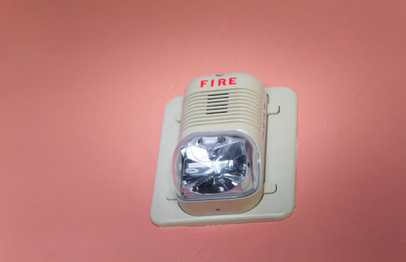
(Source)
Factors Affecting Fire Sprinkler Design Estimate
Now that you know the average cost of a fire sprinkler system, it is essential to estimate the complete cost of the design. But, before that, you need to understand which factors influence a fire sprinkler design estimate. Here are some factors to consider:
1. Building Type
- New Construction
The initial construction phase is the best time to install the fire sprinklers. During this condition, the estimation falls between $1 and $2 per square foot. The estimated cost includes installation and equipment expenses.
- Retrofits
Installing sprinklers in an existing building increases the cost to an estimate of $2 to $7 per square foot. The cost of a retrofitted high-rise would be $2 to $4 per square foot.
- Historic Building
Installing a sprinkler system in a historic place can be costly. Because of the strict design standards, sprinklers will cost you more than $10 per square foot.
Pipe Material
- Plastic
Plastic is the most affordable material for sprinkler systems. If you want to keep the fire sprinklers design estimate at a minimum, you should install plastic pipes.
- Metal
Attics, garages, and unfinished basements require expensive metal piping. For instance, copper is one of the most expensive materials for a fire sprinkler system.
2. System Features
- Water Storage Tank and Booster Pump
Many sprinklered businesses and properties use municipal water supply. However, if you use any other water source, you must use a booster and tank pump to build pressure. Installing a booster pump will increase the average cost of fire sprinkler installation by 22%
- Backflow Preventer
A backflow preventer device prevents contamination in the municipal water supply. Many jurisdictions don’t require this sprinkler system. But, if your system contains an antifreeze solution, you need a backflow preventer. If you have a typical residential fire sprinkler, the backflow preventer will cost up to $750 to $350. For larger commercial systems, you can expect the cost to go higher.
3. Piping Design
- Standalone
Standalone systems are common in New York City. These systems come with pipes that supply water to sprinkler heads.
- Multipurpose
This type of sprinkler system helps with a sprinkler water supply. Installing this type of piping system will cost less.
4. Levels in Building
While installing the fire sprinkler system, you need to determine the facility’s hazard levels. By determining the level, you can identify the type of fire sprinkler you need. Here are five major categories of hazard levels:
- Extra hazard group 1
- Extra hazard group 2
- Ordinary hazard group 1
- Ordinary hazard group 2
- Light hazard
To determine the hazard level, you need to consider various factors, such as construction material, number of people, and amount of materials stored in the building. Furthermore, you can determine things such as the number of floors and rooms, ease of egress, and ceiling heights.
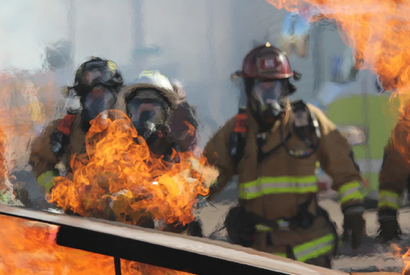
(Source)
5. Design Area and Density
After identifying the building’s hazard level, you need to figure out the design area. This is where fire can possibly break out and cause the most damage. Determine the risk on this level and apply the same level to the entire building. Now determine the amount of water required in the design area to put out the fire. Use this information to find a suitable sprinkler head. While purchasing, check the amount of pressure it can handle.
6. Type of Fire Sprinklers
It is highly important to choose a fire sprinkle design that delivers a sufficient amount of water. Remember: the goal is to extinguish the fire. Now, as you know the hazard level and area of the building, you can expect how big of a fire can attack it and how much water you’ll need to put it out. At F2M Fire and Drafting Inc., we offer one of the best fire sprinkler design estimators that carefully estimate the amount. This estimator takes into account the initial water pressure as well as momentum, friction, and elevation changes.
Fire Sprinkler Design Estimating: Conclusion
It is highly essential to understand the actual cost of a fire sprinkler system, but hiring a highly experienced professional for an accurate estimate would be the best idea.
If you want to consult with a fire protection system specialist, call us at 718-928-3009. At F2M Fire and Drafting Inc., we offer the best solutions for your fire protection needs and to secure your property from damages.
F2M Fire & Drafting Designs Inc.
1231 Lafayette Ave, Fl 2
Bronx, New York, 10474
Commercial Fire Sprinkler System Design
What is the process of commercial fire sprinkler system design? There are many things that you will take into account when designing a commercial building fire safety system.

(Source)
One essential thing for adding fire protection to any commercial space, whether a retail shop, center, warehouse, office, educational institute, office or an entire building, are fire sprinkler systems. These are the most important equipment for fire safety guidelines that ensure protection in the case of a fire that’s starting to spread. The automatic water discharge from the sprinkler heads (automatic heads) can extinguish the fire before it actually spreads.
Designing a Commercial Fire Sprinkler System
Most of the fire protection plans incorporate a fire sprinkler system as it is a major commercial application to ensure fire resistance. Choosing the right fire sprinkler system is not an easy task. On top of that, if you lack the experience and don’t know about the fire safety standards of the industry, here’s some basic knowledge for you. Although it doesn’t cover overly complex and technical information, you’ll swiftly get an idea of what is necessary during a commercial fire sprinkler design process.
Fire can cause loss of human lives, permanent health injuries, resource loss, asset damage, building, and structural damage, along with many penalties based on poor fire protection measures. Therefore, fire protection remains a top priority of all commercial building owners for their safety.
For employees of a business, it can be difficult to work with peace of mind when there is a risk of fire hazards. Moreover, you can adopt a swift approach and hire the best professionals to design a fire sprinkler system for your commercial space to make them feel safe. Here’s what the design process takes into account.
Fire Systems & Code Compliance
Code compliance is a prerequisite that no professional fire sprinkler designer can ignore. The only thing that differentiates the most effective and functional fire sprinkler systems from the poorly maintained and running ones is code compliance. The NFPA, in addition to the local fire safety rules around your region, will provide the main criteria, instructions, standards, and codes for installing a new fire sprinkler system.
It is the objective of every trustworthy, efficient, and reliable fire sprinkler designer to make sure that their designs and installation suggestions comply with the NFPA and local authority-set rules and standards. By keeping the codes and standards of fire safety in mind, you will maintain a higher fire resistance for your commercial space. According to the codes, regular inspections after proper installations are essential.
Water Supply for the Commercial Fire Sprinkler System
The main concern regarding the application of a fire sprinkler system is water which is necessary to surpass the fire. The sprinkler heads discharge water through the nozzles upon detecting smoke or heat on a certain level. However, it is intermittent to leave the water supply out of the equation. If you plan to adopt a fire sprinkler system, you will have to make sure that you acquire the right water sources. Is it an underground tank that will require pressure pumps for additional water flow consistency? Do you plan to use the nearest municipal water supply? Well, in any case, the water supply will go through the water flow test to make sure that all necessary measures are in place to maintain the pressure during water discharge. In compliance with NFPA 13, a sprinkler system should comprise an automatic water supply.
Choosing the Type of Fire Sprinkler System
Following the adoption of water supply and proper measures, the next step is to determine what kind of fire sprinkler system does the commercial space need? Is the space in a cold area where a dry pipe sprinkler system may prevent water or gas freezing in the pipes? Or is it in an arid or hot urban area where a wet-pipe sprinkler system will ensure effective and quick fire suppression? Your fire sprinkler designer will be able to make the best choice according to your needs.
Determining the Hazard Level & Water Capacity Needed
The team of professional fire sprinkler designers determines how much water will be necessary to control the spread of a fire. This involves the use of conceptual tools, including density/area curves, occupancy hazard, and design area.
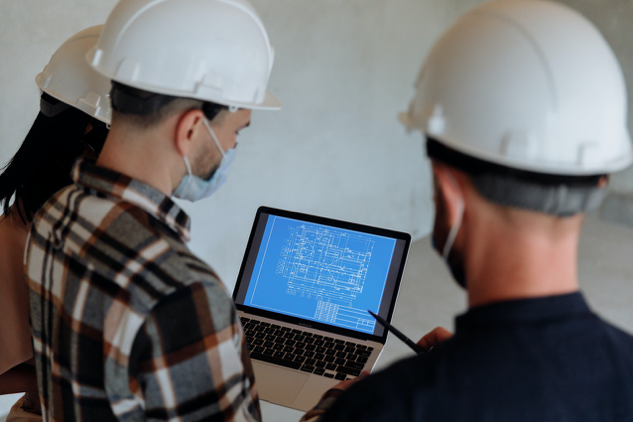
(Source)
Layout and Coverage of Fire Sprinkler Heads
Since the design process of sprinkler systems is iterative, there are other calculations involved than those above. The sprinkler coverage and flow rate play a critical role in fire suppression. How much time it takes for a specific amount of water to discharge out of the sprinkler heads will determine how quickly the system can suppress a fire. The professional designers will consider the overall spread of sprinklers over a certain area to ensure maximum efficiency.
Commercial Fire Sprinkler System Design : Conclusion
Fire & Drafting Designs Inc. employs the best resources at its disposal to make sure that every client and their space receive maximum fire safety. In fact, we have the best technicians, engineers, and other helpful workers to deliver the best fire-resistant system for a building or space.
Do you want to ensure that your fire sprinkler system complies with the industry standards and local laws & codes? Well, we aim to make sure that all the fire safety practices are in compliance with the NFPA standards and other necessary regulations.
Call us at (718) 928-3009 to meet with an expert from Fire & Drafting Designs Inc. You can visit our official website and go through the list of fire protection design & drafting services that we offer.
F2M Fire & Drafting Designs Inc.
1231 Lafayette Ave, Fl 2
Bronx, New York, 10474
Reference Links:
https://www.wbdg.org/design-objectives/secure-safe/fire-protection
https://www.qrfs.com/blog/374-the-elements-of-fire-sprinkler-system-design/
https://www.kmbdg.com/news/fire-protection-engineering-2/
https://www.buildings.com/articles/35584/fire-protection-system-design
Brief History of Building Fire Protection in NYC
Want to know a quick history of building fire protection in NYC? Some of the most common imagery we associate with New York City is yellow taxis, subways, and skyscrapers. Not to mention, the fire escape is also a common sight in New York City. When you are moving around in NYC, you will notice fire escapes on almost every building. Fire escapes provide a safe route to exit in case of a fire. Having enough of these escapes means that New York has seen enough fire emergencies in the past.
In the 1800s, European immigrants settled in New York City in search of opportunities. Many of those immigrants started low-paying jobs in the numerous factories that occupied early New York. They started living in notoriously cramped tenements and crowded apartment buildings. Because of overly crowded areas, fire emergencies were a common occurrence.
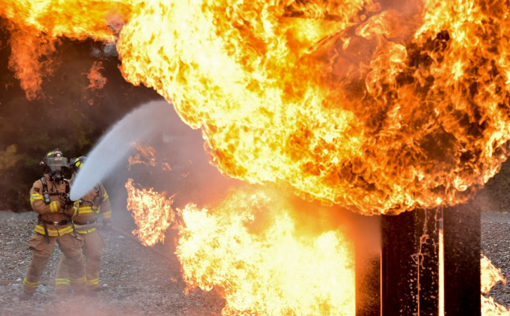
(Source)
Deadly Fires and Fire Protection
Due to the rise in fire emergencies in New York City, authorities passed a law in 1860 regarding fire protection. The law was passed soon after an incident that took place in a street-level bakery and killed 20 people. According to the law, building construction companies were responsible to build fireproof exits in a building with eight or more families. However, there were numerous challenges in installing a fireproof staircase inside the building. Major challenges included the cost of building interior staircases. Furthermore, it also reduced rental space. Soon authorities released new building codes that allowed landlords to install exterior staircases made with wood or iron.
However, after new regulations, building management didn’t follow the fire safety code and the poor fire safety went on for 50 years. The authorities made building safety precautions mandatory after the death of 146 garment workers at the Triangle Shirtwaist Company. That day, about six hundred workers were locked in a building. The factory only had two exits, but one of those exits was locked by the management to avoid theft. When the fire broke, people weren’t able to escape the building easily.
After this tragic incident, more than 80,000 people protested at Manhattan’s Fifth Avenue. The government passed Sullivan-Hoey Fire Prevention Law in October 1911. This law enforced the installation of fire sprinkler systems through factories and buildings in New York City. The New York City Fire Prevention Bureau was founded after this new law.
In 1927, the government introduced Building Exits Code that made it obligatory for newly constructed buildings to build fireproof interior stairs. The developers started making fire escapes in every building until 1968. After that, factories and residential buildings started installing sprinkler systems as it is one of the most efficient ways to prevent fire damage and save lives.
Top Fire Protection for Residential Buildings in NYC
Here are some safety measures that every residential building in NYC should take:
1. Emergency Evacuation Routes
Every building should have open spaces as it helps take appropriate safety measures. According to Occupational Safety and Health Administration and National Fire Protection Association, it is important to keep windows, doors, and other access clear for entering and leaving the building. This enables residents to easily escape the building, while the fire department can enter inside. Buildings should also include unobstructed fire doors, pathways, windows, stairways, and have other fire hydrant paths.
2. Fire Alarms and Sprinkler System
Fire alarms and sprinkler systems are also important in case of fire emergencies. Fire alarms warn the residents to evacuate the building. On the other hand, a fire sprinkler system controls the fire while the fire department is on the way. Fire alarms and sprinklers contain sensors that immediately sense a fire and protect the building from life-threatening and property-damaging hazards. Furthermore, it is essential to keep these systems 100% functional. Are you looking for a company to design a fire sparkler system? You can get in touch with F2M Fire & Drafting Designs Inc. for the best fire protection system design services in NYC.
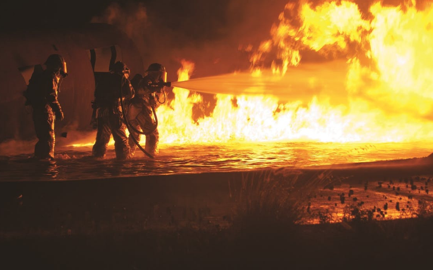
(Source)
3. Prevention and Maintenance
It is important for building management to take care of their occupants. They need to inspect the building and take preventive fire measures. They should check fire alarms and sprinkler systems along with improving faulty systems. If you don’t take preventive measures, you have to pay hefty fines for not abiding by the NFPA 72 inspection standards.
4. Fire Protection Companies
This may sound unusual, but you can hire fire protection companies with 24/7 emergency services. These services also fix water supply and fire equipment systems after a leak or malfunction.
History of Building Fire Protection in NYC: Conclusion
At F2M Fire and Drafting Designs Inc., we have professionals and trained technicians with extensive experience. They inspect commercial buildings and create fire sprinkler system designs for platinum level, to code, fire protection.
Call us to discuss your fire protection design project today at (718) 928-3009.
Fire Sprinkler System: Seismic Calculations & Analysis
How do seismic calculations and analysis factor into a fire sprinkler system design? Fire sprinklers can be life saving installations in case there is a fire outbreak. Conventionally, technicians tend to design the fire sprinkler system in correspondence to the building’s design. However, there are many other things that they have to consider when installing the piping system. Each facility carries its personal fire hazards. Thus, the fire sprinkler system design includes variables including fire risks, building material, size, scale, and environmental threats such as earthquakes.
Fire Sprinkler System Seismic Design
Some buildings or facilities are in locations that possess earthquake threats. The construction of such places requires a seismic design for most of their infrastructure. It must ensure to withstand the seismic tremors of an earthquake, preventing the building from collapsing in case of an earthquake.
In areas vulnerable to earthquakes, constructors also have to make sure that non structural elements are also earthquake proof. These elements include all the mechanical workings in a building, including plumbing systems, electrical wiring, and, most importantly, fire sprinkler systems.
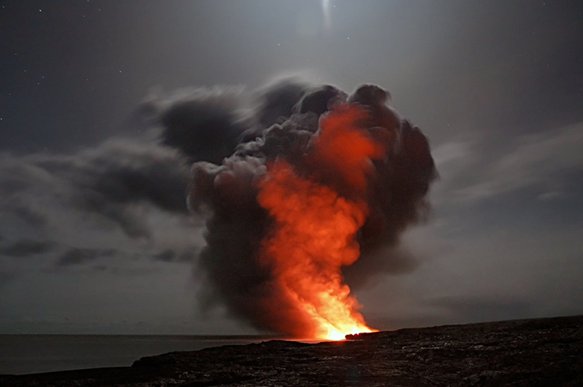
Importance of Seismic Design of Fire Sprinklers
During an earthquake, the likelihood of a fire outbreak increases. Thus, if a fire sprinkler system fails to work in that instance, this could potentially lead to many deaths. The serious life threatening risk of earthquake-induced fires makes seismic resistance of a fire prevention system crucial. Looking back at the history of natural disasters, it is quite evident that earthquakes pose a great fire threat.
Fire outbreaks do not only put hundreds of lives at risk but also cause financial damage to property owners. Even the slightest of tremors will cause fire sprinkler systems to leak if their design is not compatible and durable to withstand earthquakes. Ultimately, not having a seismic-proof fire sprinkler system will cost you more in damage expenses and rebuilding costs than the initial installation costs. The costly labor and equipment requirements to rebuild a fire sprinkler system may also convince an owner to abandon the facility altogether.
Fires become a likely occurrence during and after an earthquake because of many reasons. The most common one involves the damage to wirings and gas pipes. Even the smallest of electrical sparks can burst into a flame under a gas leak. Other times the earthquake tremors cause fuel spills that increase the probability of fires. In these circumstances, functioning fire sprinklers prove to be pivotal.
Seismic Fire Sprinkler Design
Fire sprinkler systems built to withstand earthquakes require a different design and planning in terms of installation. Technicians implement certain techniques to the water pipes so that they have flexibility and clearance. This allows them to stay intact and function during earthquake tremors.
The foundation of the building, along with beams and columns, tends to shake in different dimensions and speeds. This differential movement phenomenon can damage a conventional fire sprinkler pipe, causing breakage and leakage. Since the fire sprinkler systems run across the ceilings and sidewalls of the building, any horizontal and vertical displacement results in the slamming of walls against the pipes.
To prevent this from happening, technicians install flexible pipe couplings to the sprinkler pipes. This non structural element can bend in correspondence with the structure walls. Hence, you can reduce significant damage in the occurrence of an earthquake by installing these pipes. Moreover, the couplings help mitigate the pressure on the pipes due to differential movement.
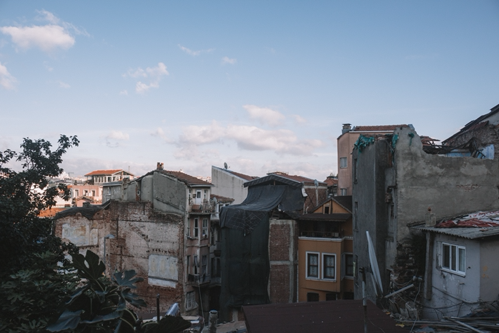
The addition of flexible couplings is just one of the seismic design measures, along with others. Another method of pipe protection takes shape in the form of seismic bracing. This includes the installation of cable sway braces.
Cable Sway Braces
You can also refer to these Sway braces as transverse sway braces. The design specifications for these sway cables require technical analysis of a facility’s design. Hence, technicians need to be wary of the seismic load calculation for the proper installation of the sway cables.
The seismic wave intensity and directional pathways vary greatly according to the location of the facility. They need to consider whether the seismic waves will take the form of “S” waves or “p” waves. This helps them with the placement of the sway cables. To accomplish a successful installation, you will have to consult a qualified engineer who understands the complexity of the seismic load.
Ultimately, sway cables help reduce the stress on the fire sprinkler system during a seismic episode. To ensure that they perform this function, the technician calculates the seismic measure of force using mathematical formulas. Calculation and analysis for seismic damage prevention is a technical burden for only the best fire sprinkler services.
Fire Sprinkler system Seismic Design: Conclusion
Fire sprinkler systems must include seismic design & calculations to protect against natural disasters such as earthquakes. Only certified professionals with years of fire protection system design experience can create these detailed plans that include these calculations.
With over 20 years in the fire protection system business, F2M Fire & Drafting Designs Inc. designs efficient and lasting fire sprinkler systems. Along with estimating services, F2M’s owner is one of the most experienced technicians in the industry.
For a free professional consultation online or in person, contact us at (718) 928-3009, or visit our website for more information.
Does My Fire Sprinkler System Designer Need to be NICET Certified?
What is NICET and what does it mean to be NICET Certified? The National Institute for Certification in Engineering Technologies (NICET) is an essential and highly valued institute that provides certification for technical industries. These include engineering industries, such as construction, geotechnical, transportation, and others. Companies have to complete certain certification programs to achieve a NICET certification. These programs define the entire structure of an industry.
NICET for Water-Based Systems
A NICET accredited system for fire prevention holds a much higher value in the eyes of the state. For sprinkler designers, a NICET certificate is the gold standard of all certificates in the world. Achieving this certification is a step up for any water based fire prevention company. As time progresses, it is becoming a common requirement in the marketplace. Most of the job specifications include fire prevention services that hold NICET certification.
Moreover, even government contractors ask for a NICET certification before they invest in water based installation services. Hence, achieving one makes a fire sprinkler designer eligible for providing services to the federal government.
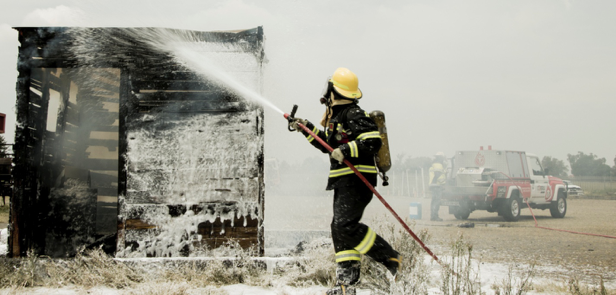
Why is the Certification so Valuable?
Industry experts have carefully designed the certification process of NICET so that it demonstrates excellent proficiency in engineering services. It sets the framework for fire prevention services to follow. Furthermore, it has certification levels for both entry level duties to management procedures. This makes it entirely valuable to clients, employers, the federal government, and service providers.
More importantly, it ensures that a fire sprinkler installation meets the national level standard. As a result, it improves the quality of the fire prevention services across the USA, and makes them eligible for government jobs. The community of the NICET experts recognizes all certificate holders as one of the best in the nation. This community consists of professional engineers that have legitimate experience in the industry.
NICET ensures that all technical and engineering companies have experienced workers and provide high quality services. Apart from that, it also manages to maintain the quality of the workforce and makes sure that facilities hire competent labor. This maximizes safety and protection for the public.
NICET is Worth the Effort
To achieve a NICET certificate, you have to pass a challenging test. This test takes long hours of preparation and planning. However, passing this test will provide you with incredible benefits. Some training programs involve the knowledge of basic principles and attendance, while other programs focus on duty information.
Benefits of Becoming NICET Certified
NICET’s certification covers various areas regarding the job and evaluates a technician’s work experience at the career level. These aspects of the certification process help signify the career of a technical professional. However, an individual is open to a lot more benefits than this, such as the following.
Advancement in Career
NICET certification helps determine a worker’s capabilities as one that can meet the highest standards. Moreover, it helps make their service recognizable by a committee of experts. By doing so, many opportunities open up for a person, helping them advance in their career. It reassures the investor’s trust in you as a contractor.
Furthermore, it also helps increase a water based technician’s worth. By eliminating unaccredited services from the job market, it helps employers make the right decision when hiring workers. Thus, workers have to make extra efforts to prove their quality of work and get better positions.
Understanding of the Codes
When going through the certification process, professionals become aware of the codes and standards of fire safety. This is a benefit in itself since it increases a worker’s ability to plan and execute a thorough and functional water sprinkler system.
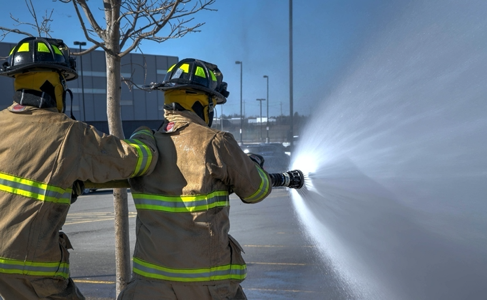
Risk Management
NICET certification provides a technician with an in-depth understanding of the security codes and requirements. This comprehensive understanding allows them to make better decisions and plan a sprinkler system that provides one hundred percent, risk free performance.
Any violation of the codes can cause serious problems in case of a fire. Therefore, it is better to have a certified professional who understands the implications of the codes and the risks of avoiding them.
Boasts the Industry as a Whole
When all individuals become NICET certified, it will inevitably have a positive impact on the US fire prevention industry. The increase in quality and standard of the industry will ultimately attract other countries as well. It will put the industry on the global stage and produce more jobs for professional technicians.
Does My Fire Sprinkler System Designer Need to be NICET Certified? Conclusion
F2M Fire & Drafting Designs Inc. is the top NICET certified company in New York offering fire sprinkler design services. We have 20 years of experience in estimating & designing, fire protection systems that meet the highest standards nationwide.
Visit our website and call us at (718) 928-3009 for a free consultation and quote for your fire sprinkler system design project.
What is Building Information Modeling (BIM)?
Building Information Modeling (BIM) is a revolutionary advancement in the engineering, construction, and architecture fields. With prospects of future enhancement in the said fields, BIM is bound to see success. Before we get into the complex details, let’s understand what BIM is.
What is Building Information Modeling BIM?
BIM uses tools from different software, such as Revit or CAD. Using these tools of said software, BIM enables 3D presentations of graphic constructions and design models. This entails several essential benefits. Yet, BIM requires certain efforts for adequate implementation in practical business ideas.
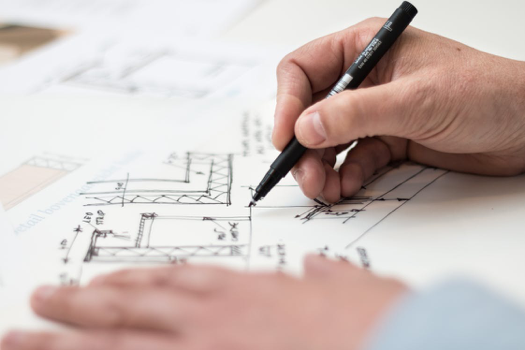
(Source)
However, BIM isn’t limited to presenting a 3D visual of a building model. It highlights different areas of concern, such as the material, pivotal points, and even the screws/ bolts at various fixtures during construction. Furthermore, BMI further offers suggestions on the durability and retention of a business model. All the information that BMI presents is based on the data that the user of the process enters into it.
A digital representation of the business model before actual construction and work can also depict wear and tear based on data regarding the future climate, material, and of course, the building’s purpose. Hence, you can profit by pre-planning your business project via BIM.
Various Applications of BIM
- 3D Renderings minor efforts on the in-house softwares of BIM enable you to render images and graphs in no time.
- Forensic Analysis is an amazing feature to aid your construction planning. For example, you can assess evacuation plans, potential leakages, and faults inside the business model. This is all a depiction of what could go wrong!
- Conflicts and Collisions let you deal with future construction model problems beforehand. This is through the illustration of any potentially damaging-intersections. Another example is the detrimental impact that may occur between two walls, according to your current construction outlook.
- Cost Evaluation Software provides expenditure details in compliance with the material used for the construction. Moreover, if you make any changes in the business project’s plan, BIM instantly adapts to new values.
Users of BIM
BIM has a wide variety of users belonging to the above-mentioned fields. These fields are sometimes individual, but more than often, they work in coordination.
The main people responsible for building, such as engineers, architects, industrial designers, and fire protection system designers rely on BIM. They learn about any potential conflicts, cost estimates, and sequence the steps of construction and building.
Advantages of BIM
- One of the foremost benefits is that BIM is easily accessible to appropriate users. Architects, engineers, business owners, electricians, and even plumbers can make use of the BIM data to assess their tasks and objectives.
- 3D modeling offers a vast array of benefits. Due to the 2D printing of model sheets, access and re-adjustment of the plan were difficult. In fact, with a 3D presentation on digital media, it is easy to adjust the plan according to potential failure, collisions, conflicts, and interferences. You can do it all before starting operations.
- Simulations and digital visualizations allow designers and architects to try out different effects. Along with that, the sharing of BIM data is relatively easier than that of traditional planning sheets.
- BIM saves time in terms of early planning. Cost-savings are a plus, which means a lower probability of overspending or finding faults later on.
Scope of Building Information Modeling BIM
Industries incorporating BIM in the construction process can monitor performance, check for conflicts, make adjustments according to the building plan, and even work out cost simulations before the building process begins.
3D rendering allows the detection of failures and potential setbacks in the building process. Thanks to the incorporation of cloud computing in the use of BIM, data is easily accessible to everyone involved in the building process or management.
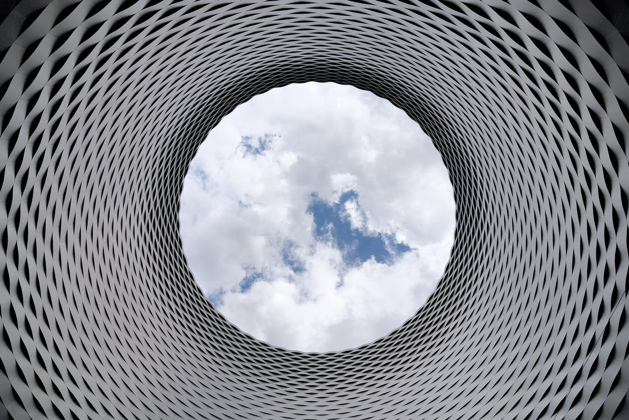
(Source)
Some engineers, architects, and fire sprinkler system designers consider BIM as the future of building modeling. Never forget the “I” in the BIM – it stands for information. Having adequate information before the initiation of any process allows for successful execution.
Building Information Modeling BIM: Conclusion
At F2M Fire & Drafting Designs INC., our team of professionals and experts will help you develop the best strategies and plans for the building processes related to fire protection system design.
So go ahead and contact us at (718) 928-3009 to inquire about our building information modeling services. Visit our main website to find out more.
References & Related Links:
- https://www.thebalancesmb.com/building-information-modeling-bim-benefits-845045
- https://learn.g2.com/bim
- https://www.hindawi.com/journals/ace/2019/1392684/
- https://ascelibrary.org/doi/full/10.1061/(ASCE)LM.1943-5630.0000127#:~:text=Architects%20were%20the%20heaviest%20users,more%20than%2060%25%20of%20projects.
- https://www.theb1m.com/BIM-For-Beginners
- https://www.sciencedirect.com/topics/engineering/building-information-modeling
- https://esub.com/blog/building-information-modeling-bim/
- https://www.lodplanner.com/what-is-bim/
- https://en.wikipedia.org/wiki/Building_information_modeling
- https://medium.com/studiotmd/what-is-bim-and-why-do-you-need-it-c4445eed7941
- https://damassets.autodesk.net/content/dam/autodesk/www/solutions/bim/docs/adsk-bim-excellence-ebook.pdf
- https://constructible.trimble.com/construction-industry/what-is-bim-building-information-modeling
Who Designs Fire Sprinkler Systems?
Do you have a commercial or residential project and need to know who designs fire sprinkler systems? Fire sprinkler systems were invented about 120 years ago. The first one was not as modern and sophisticated as today’s conventional, modern system. Since their existence, sprinkler heads have remained a crucial element of a building’s infrastructure. They not only prevent thousands of deaths but also save businesses from financial collapse. In the unwanted occurrence of a fire outbreak, they are the first line of defense inside buildings.
Pioneers of the Fire Sprinkler System
In 1885, John Wormald of the UK wrote the world’s first-ever rules for the installation and design of automatic fire sprinklers. Thus, the British standards of sprinklers seem to differ from the Americans’. American fire prevention rules for sprinkler systems are according to the National Fire Protection Association, or (NFPA). This official organization sets the standards for sprinkler systems across the USA.
Sprinkler installation professionals need to abide by these standards and be watchful of each building’s design. They need to specifically configure each fire sprinkler system so that it complies with the facility’s design to ensure that it is high functioning and saves lives.
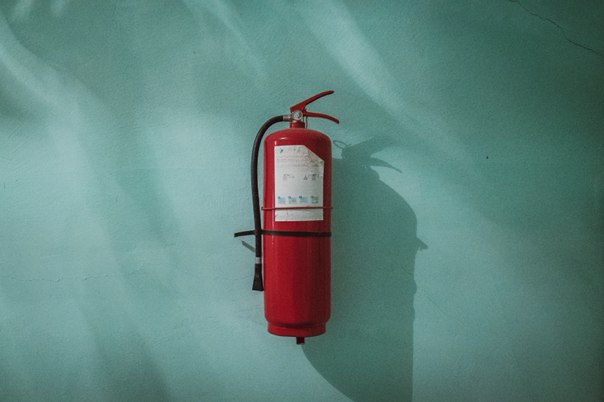
Water is an Essential Source
Water remains one of the most effective fire fighting tools available, and sprinklers allow you to splash water right into the center of a huge fire during its early stages of emergence. The water gushes out of the sprinkler head that attaches to the sprinkler pipes, which run across every ceiling inside the building.
Sprinkler heads have the unique ability to detect fire automatically, discharge water, and operate an alarm. Furthermore, they operate another alarm signal that goes directly to the fire brigade center, indicating a fire outbreak.
Sprinkler Heads
A typical sprinkler head has a body that connects to the valve seal that holds the water back. A glass bulb holds the valve seal in place. Inside the glass seal, a liquid expands in response to increasing temperatures.
As the expansion increases in correlation to the rising fire, the bulb becomes unable to withstand the outward pressure of the expansion, causing it to burst, and the valve seal opens as a result. This allows the water to flow into the water distribution deflector. The overwhelming outcome is a gush of water spreading over the fire in a predetermined pattern.
You can find a wide variety of sprinkler heads that operate at different temperature resistance. Each resistance is identifiable by the color of the bulb. The varying designs of sprinkler heads allow you to cope with different types of fire risks, temperatures, and operational requirements.
You can mount the conventional sprinklers in either the upright or the pendent position. Each sprinkler design accounts for an array of different sprinkler placements. Some systems also include the sidewall sprinklers, mostly because of aesthetic reasons. They help keep the ceilings free of extending pipes.
Each sprinkler head can cover about 17 meters of water distribution in hazardous fire risks and nine square meters for ordinary fire risks. However, you can also install additional coverage to sprinkler heads and make them cover up to 21 square meters.
Protection from Smoke
In a fire outbreak, very few deaths are a result of direct flame contact. The biggest threat comes from the inhalation of smoke. During combustion, fire victims have no option but to inhale harmful gasses such as carbon monoxide, hydrogen chloride, hydrogen cyanide, and much more. Combine these toxic gases with the associated heat, and it makes for a deadly environment.
A quick response sprinkler system can minimize the life-threatening intensity of harmful gasses. They stop the smoke from developing and keep it at bay, offering valuable time to evacuate the building.
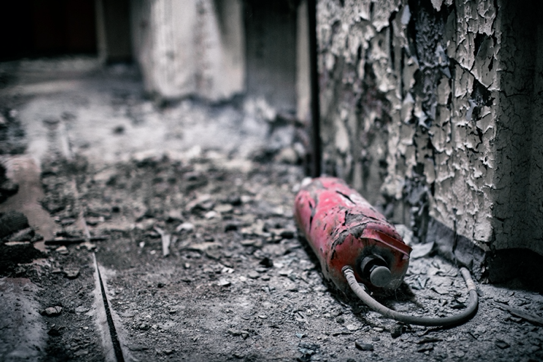
Overview of a Sprinkler System
Sprinkler system installation requires a precise and accurate design of the pipes. Professional and certified technicians need to ensure that the right pressure and flow of water distribute across each sprinkler head. The water source can come from the town’s main supply or even a private water reservoir. Supply source depends on the risks of potential fire threats of a facility.
Additionally, a control and alarm valve allows for the automatic flow of water to the sprinkler heads. Generally, there are five sprinkler system types, each requiring a different valve arrangement. Having static water in the pipes is undesirable, which is why technicians use a dry system. This fills the pipes with compressed air until there is a fire emergency.
Who Designs Fire Sprinkler Systems: Conclusion
F2M offers the best and most modern fire sprinkler system design services in New York and across the USA. We provide you with services that are backed by 20 years of experience in the fire protection and design industry.
By retaining our services, you will not only have access to the best fire protection layout and design, but also access to expert consultants who will personalize your system according to your requirements.
Contact us at (718) 928-3009, or visit our website for more information.
How Does a Fire Sprinkler System Work?
How does a fire sprinkler system actually work? Fire Sprinklers are an essential apparatus for protection against fire damage, be it property or people. Fire sprinkler systems are usually present in commercial, industrial, and residential spaces. The probability of a fire starting in such places is always high due to several reasons, such as electrical wiring and heating appliances.
Other major reasons for fires in households are accidents, such as leaving the stove unattended. Overall, a fire sprinkler system ensures safety from fire hazards. By protecting workers from severe injuries, it helps companies avoid lawsuits. Moreover, it protects your family or tenants from injury while preventing damage to their possessions.
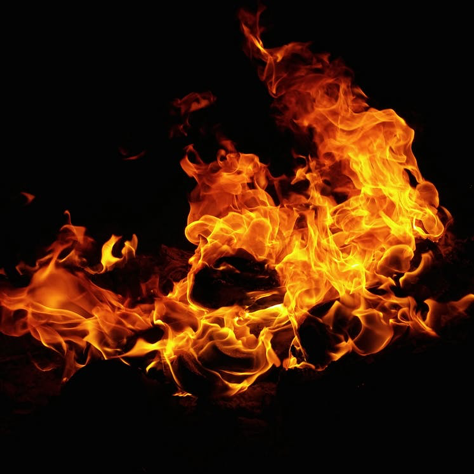
(Source)
Despite various benefits, a few misconceptions reduce people’s trust in sprinkler systems. These minute yet, misleading misconceptions are as below.
Fire System Misconceptions
- Smoking a cigarette will trigger fire sprinklers
- Smoke detectors trigger fire sprinklers
- Immense water damage is the consequence of using a fire sprinkler system
- All the fire sprinkler heads activate when one triggers the alarm
- Automatic shutdown of fire sprinkler system occurs after extinguishing the fire
It’s time to address these misconceptions. Read on to learn how a fire sprinkler system works in real life.
How does a Fire Sprinkler System Work?
Heat-Detection and Activation
Contrary to popular belief, smoke is not what causes a room’s temperature to rise, and trigger the fire sprinkler system. Hence, preparing toast in the kitchen or smoking in the living room won’t trigger the fire sprinkler system.
Sprinkler heads normally contain a glass bulb with a glycerin-based solution. This solution expands and bursts on exposure to certain ranges of temperature. When a fire ignites and is not controlled or extinguished, the fire starts to spread. The blaze heats up the air, and as the hot air rises above, it comes in contact with the ceiling, where it continues to spread.
This contact with heat bursts the glass bulb, triggering the fire sprinkler(s). The head of the fire sprinkler, which detects heat, douses the fire. A pipe, leading to the water source, releases a pressurized discharge as the trigger of the fire system opens the valve attached to the pipes.
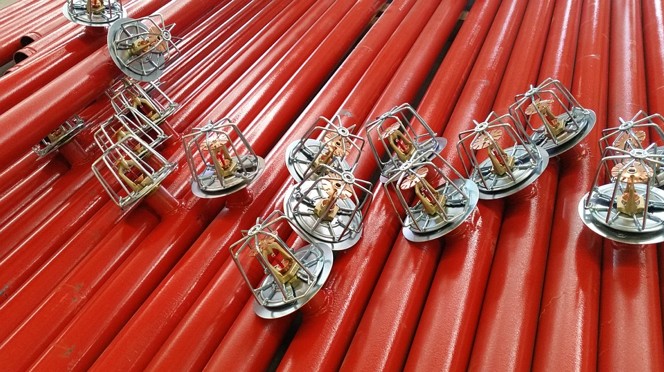
(Source)
Fire sprinkler systems may connect with pipes that already contain water or have a connection to the main water supply. Similarly, an electronic device may control the valve or there may be a manual switch to turn the fire sprinklers on and off.
With pressure in the water flow, water dispersion is wide. Hence, sprinklers utilize a greater range to douse the fire.
After Dousing Fire
You can control fire sprinkler systems via fire alarms, switches, and the valves. Contrary to popular belief, you have to manually shutdown the fire sprinkler system after the fire is completely out. Thus, another misconception cleared. Similarly, these gadgets also allow you to stop fire sprinklers before your property faces excessive water damage.
A generic misconception among people regarding fire sprinkler systems is that all sprinkler heads start discharging water, even if only one head triggers the fire alarm. This is definitely not the case if you have the latest fire sprinkler system. That is, unless you opt for the “deluge” fire sprinkler system, which releases water through all the sprinkler heads when a single fire alarm goes off.
Maintenance, Repair, and Testing of Fire Sprinkler Systems
Regular inspections are a vital part of the fire safety system. Inspections of the gauges, gadgets (manual switches), pipes, bracings, valves, and electronic devices take place on quarterly and even monthly basis.
Repairing any faults or errors in the fire sprinkler system can compensate for any potential losses in the future. Therefore, inspections and maintenance are necessary to employ a fire safety system to its full extent.
How Does a Fire Sprinkler System Work? Conclusion
F2M Fire & Drafting Designs Inc. offers an impressive variety of fire sprinkler system design services. F2M designs gold standard fire sprinkler systems for office buildings, personal residences, rental properties, or any other commercial, residential or industrial building. We work with you every step of the way, customizing the system per your requirements and budget.
Give us a call at (718) 928-3009 to inquire about our services, current projects, and to consult about your fire sprinkler design project. Email us at info@f2mfadds.com.
Fore more information, visit our main website at: https://www.f2mfadds.com/
References & Related Links:
- https://www.explainthatstuff.com/firesprinklers.html
- https://home.howstuffworks.com/home-improvement/household-safety/fire-sprinker-system.htm
- https://www.gausman.com/Our-Company/News/entryid/263/how-do-fire-sprinklers-work-in-commercial-buildings
- https://blog.koorsen.com/how-do-fire-sprinklers-work
- https://www.keystonefire.com/blog/how-it-works-fire-sprinkler-systems/
- https://fireprotectionblog.com/how-do-fire-sprinklers-work/
What are the Differences in Commercial & Residential Fire Sprinkler Systems?
Commercial & Residential fire sprinkler systems have a few key differences which we will discuss in this article. The primary use of fire sprinkler systems is to extinguish and restrict the spread of fires in a commercial, industrial, or residential space. Inexperienced building owners, either commercial or residential, make the mistake of assuming that all fire sprinkler systems are the same. They also presume that the application of every fire sprinkler system is the same for any type of building.
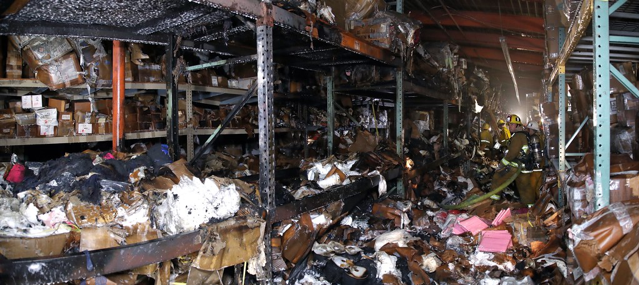
(Source)
This misconception leads building owners to choose the wrong types of fire sprinklers and suppression systems. Often, this leads to major losses and damage. Let’s go over the differences between them, starting with commercial fire sprinkler systems.
Commercial Fire Sprinkler System
In the event that a fire spreads through the property, commercial fire sprinkler systems prevent extensive fire damages in offices and public spaces. These systems restrict the spread of fire and reduce the smoke, allowing workers to exit the space safely until the fire department services arrive. Some of the types of commercial fire systems are below.
4 Types of Commercial Fire Sprinkler System
- Dry Pipe
This type of fire sprinkler and suppression system includes pipes containing pressurized nitrogen or air. When the fire sprinkler head activates, it releases air. This triggers the discharge of water from the sprinkler heads, which suppresses the fire and restricts the spread.
These are costly and need consistent maintenance, but they are suitable for cold climates as well. Because the pipes in this system contain pressurized air, the chances of water freezing are low.
- Wet Pipe
Cheap and low-maintenance wet pipe fire sprinklers systems are traditional. These pipes contain water, and when the alarm rings, they release pressurized water through each sprinkler head independently.
- Pre-Action
When a smoke or heat detector sends the signal, the pre-action valve opens, allowing water to flow into fire sprinkler pipes. Then, each sprinkler head discharges water. This is a good option when it comes to false alarms. They offer protection from unnecessary water damage.
- Deluge
All sprinkler heads are open in this fire sprinkler system. Upon external heat detection, the water flows through all the sprinkler heads. Applications for this type includes commercial places that involve highly combustible and flammable material and practices in daily operations.
Benefits of Fire Sprinkler Systems in Commercial Buildings
Commercial fire sprinkler systems are a requirement in some states. Therefore, it is necessary for building owners to install and maintain fire sprinkler systems in offices and workplaces. They offer numerous benefits to commercial buildings.
- Assets and corporate property safety
- less long-term corporate expenses
- safe and confident work staff and employees
- control on the spread of fires in emergencies
Residential Fire Sprinkler Systems
Residential fire sprinkler systems have the same purpose as the ones in commercial buildings. The fire sprinkler systems may even be the same in some aspects. Nevertheless, there are relative differences in commercial and residential fire sprinkler systems.
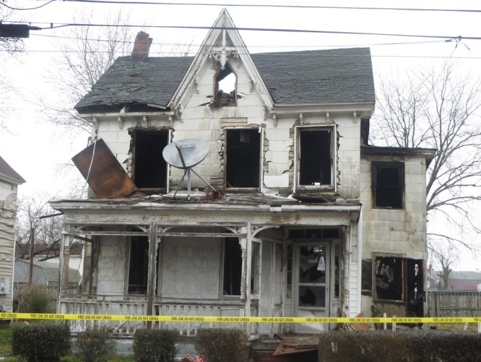
(Source)
Sometimes, homeowners install and maintain fire sprinkler systems to benefits home insurance premiums. This is because the house becomes less susceptible to damage or accidents. Thus, insurance coverage allows low premiums. These are “insurance discounts,” and commercial building owners receive them as well.
Sometimes, fire sprinkler installation takes place during construction. But if a house requires fire sprinkler systems post-construction, the concept of “retrofitting” emerges. Everyone living in the house or apartment feels safe. This also makes you a responsible homeowner or landlord to your tenants or family.
Major Differences in Commercial & Residential Fire Sprinkler Systems
In the US, NFPA Codes and Regulations vary for commercial and residential buildings. Therefore, fire sprinkler systems comply with specific rules and codes in both types of buildings. The design of commercial and residential-level fire safety systems varies as well.
A commercial fire sprinkler system will have the design and installation to prevent fire damage and risks according to space. For example, restaurants, offices, warehouses, shops will have risk assessments for fire emergencies. This usually allows the proper employment of resources to control fire in such commercial spaces.
Nevertheless, residential fire sprinkler systems are similar to each other. Contrary to the large commercial spaces, small households have smaller fire sprinkler systems.
The costs of fire sprinkler systems in commercial and residential spaces also significantly varies.
Differences in Commercial & Residential Fire Sprinkler Systems: Conclusion
When designing a fire sprinkler system for your new project, the differences between residential and commercial fire sprinkler systems will play a major role. F2M Fire & Drafting Designs creates custom fire suppression system designs using state of the art technology and the most modern techniques. All designs are gold standard code compliant, and they licensed across the USA in many states.
Give us a call at (718) 928-3009 to inquire further or email us at info@f2mfadds.com.
Visit our main website for more information: https://www.f2mfadds.com/
References & Related Links:
Standpipe Layout And Calculations For Fire Sprinkler Systems
What are standpipe layout and calculations and work in fire sprinkler systems design? Standpipes are another safety measure to protect buildings and spaces from fire damage. The arrangement of hoses, valves, pipes, and water supply connections comprise the way standpipes work. In simple terms, it is a method to extinguish fires using a hose and pipe connection through different water outlets in a single building or space.
Standpipes should always be in compliance with the rules and codes of NFPA25. The rules and regulations allow proper and adequate layout modeling and use of standpipe systems. Mentioned below are a few types of standpipes:
Types of Standpipe
- Class I: Provides a twenty-one-and-half inches hose connection. It is suitable for fire department personnel or trained people.
- Class II: A standpipe station that has a hundred-inch hose pipe with it. It has an eleven and half-inch connection. In case of emergency, fire department personnel with adequate training use this. Normally, these stay in cabinets.
- Class III: With reducers of varying sizes is the type of standpipe with 11/2 and 21/2-inch hose connections. These provide both large and small volumes of water supply for a fire emergency.
Standpipe Layout
According to the NFPA14 code, a few conditions are necessary to design and install standpipe layouts in a building. Standpipes are important in tall and occupant buildings such as assembly areas, airport terminals, and piers. Buildings with an automatic sprinkler system at the top need a standpipe station on the stories above three grades. Buildings without an automatic sprinkler system should have a standpipe station on stories above two grades. In high-rise buildings, lengths vary between 6 and 15 meters above grade.
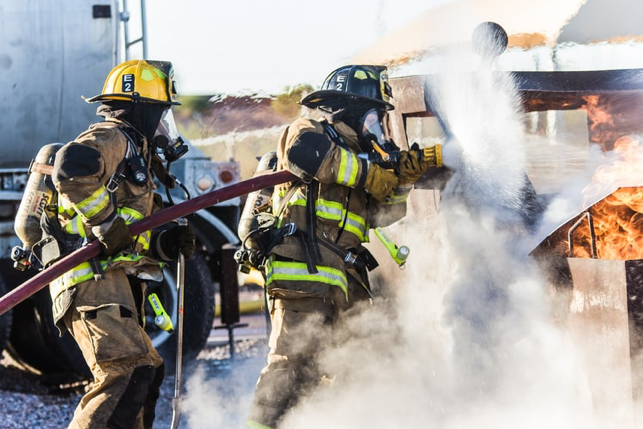
(Source)
Maintaining Standpipes
Inspections, maintenance, and testing are part of standpipe operations against fire emergencies. Quarterly inspections for pipes, valves, and water supply allow for a fully operational standpipe. Standpipe stations usually fall within the use of fire department personnel. They opt for them in case of fire emergencies. However, trained personnel who are occupants or workers can also rely on them in case of fires.
Regular checkups leave no room for error when trying to extinguish fires. Therefore, before designing and installing, the layout has to be very transparent in terms of accessibility. This makes it easier to prevent fire hazards.
Fire Sprinkler Systems
A flow test of the water supply is necessary before performing hydraulics calculations for the fire sprinkler system. This information can be public, and you can get it from the municipal water department. However, if there is a lack of sufficient water supply from a municipal fire hydrant, alternatives are available.
These alternatives may include ponds, lakes, gravity tanks, water tanks, and many others. Nonetheless, to generate a water flow from static sources, there must be more than usual pressure. This ensures a complete and pressurized water flow for the sprinkler heads through pipes.
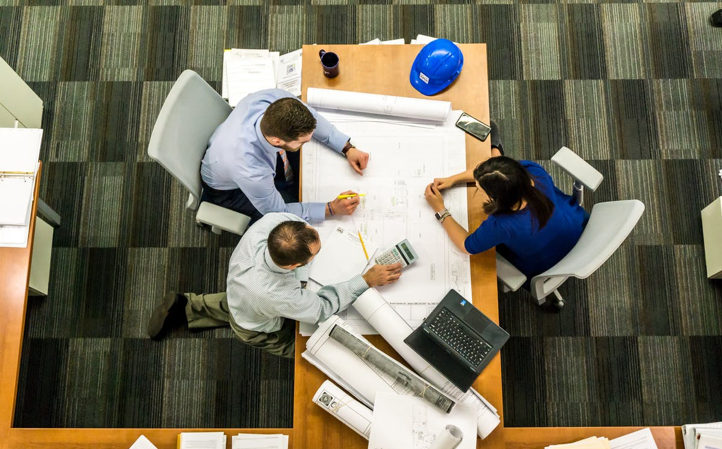
(Source)
Hydraulics Calculations
There are a few important calculations for fire sprinkler systems:
- Water Flow Test: This information is usually available if you are using an open source such as municipal fire hydrants. However, if there is a closed water supply source, such as water tanks, gravity tanks, or underground water tanks, there is extra pressure, which allows a consistent flow of water through the sprinkler heads. This suggests the vitality of water flow in hydraulics calculations.
- Friction Loss: Refers to the loss of pressure that occurs due to the contact of water with the duct or pipe’s surface. This is significant because it affects the speed of the water. In emergencies, this is as vital as an entire sprinkler system.
- Sprinkler density: Refers to the sprinkler heads spread over an area. It implies that the occupancy hazard calculation is accurate, as underestimating the fire potential in a space may lead to having fewer sprinkler heads to extinguish the fire.
- Sprinkler Flow: this is a specification of the sprinkler head itself.
- Sprinkler Pressure: This entails the spray pattern and pressure of the sprinkler head. It is an important calculation because it uses the flow of the sprinkler head and its area coverage.
Standpipe Layout & Calculations for Fire Sprinkler System: Conclusion
At F2M Fire & Drafting Designs Inc., you can find professional designers for standpipes and fire sprinkler systems. You can utilize their skills to create a fire safety system for your space and thus, curtail the risks of suffering from fire relating injuries or loss of possessions.
Visit our website for more info, or email us at info@f2mfadds.com for further inquiries.
F2M Fire & Drafting Designs Inc.
1231 Lafayette Ave, Fl 2
Bronx, New York, 10474
(718) 928-3009
info@f2mfadds.com
References:
- https://firetech.com/manual-standpipes-and-acceptance-testing-methods/
- https://www.nfpa.org/news-and-research/publications-and-media/blogs-landing-page/nfpa-today/blog-posts/2019/05/10/nfpa-1-where-are-standpipes-required-firecodefridays
- https://www.qrfs.com/blog/91-standpipe-systems-part-2-standpipe-system-components-and-how-to-maintain-them/
- https://www.fireengineering.com/fire-prevention-protection/standpipes-101-part-1/#gref
Fire Pumps And Valve Rooms: What Are They For?
Fire Pumps and valve rooms are an integral part of a fire sprinkler system. Once you acknowledge how a fire sprinkler system works through sprinkler heads, it’s time to know how water flows through the system. Fire pumps operate on diesel, electricity, or even steam. They provide the necessary pressure for the release of water through sprinkler heads during a fire emergency. They are a critical part and, therefore, require attention in different aspects.
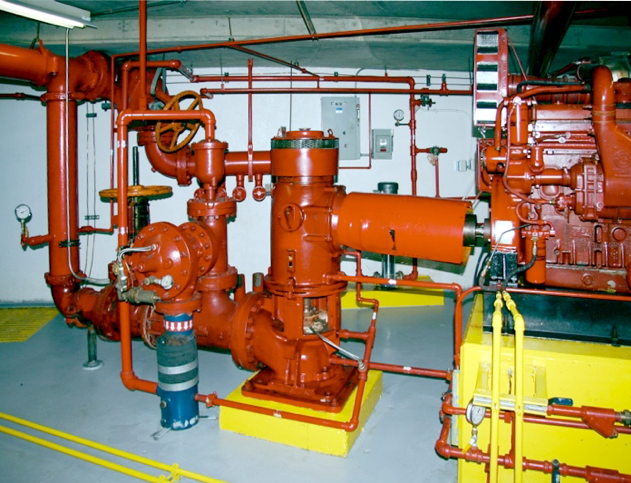
(Source)
Importance of Fire Pumps
Fire pumps attach to municipal water supply sources. Or, they can also have a connection to a static source of water, such as ponds, lakes, rivers, reservoirs, gravity and water tanks, water towers, or even underground water tanks. They are necessary because as soon as water flows through the sprinkler heads, pressure starts to break.
The fire pumps, working on fuel, ensure standard pressure and, therefore, allow a consistent pressure in the flow of water. This enables pressurized water flow, which is necessary to douse the fires and prevent further spread.
How Do Fire Pumps Work?
Fire pumps have different types that contribute to fire safety services. These different types are:
- Vertical Split Case
- Horizontal Split Case
- Vertical Inline
- End Suction
- Vertical turbine
They work in connection with a jockey pump. A jockey pump maintains an artificial water pressure in the fire sprinkler system pipes. A jockey pump also prevents damage to fire pumps due to a sudden influx of water in the pipes and the sudden provision of pressure.
This implies that fire pumps do not have to keep running. A motor powers the fire pump. The fire pump creates pressure up to a significant level when more of the fire sprinklers are active, or other outlets of water supply are in use for fire emergencies.
The power of the motor operating the fire pump comes from the same municipal electricity supply that the building uses. However, as a contingency, the use of “transfer switch” has a high demand. This switch transfers the power supply of a fire pump to the emergency generator(s) in a building to keep the fire pump running throughout a fire emergency.
Valve Rooms: What are They?
Automatic fire sprinkler systems in commercial or even large residential spaces have the “control valve and drain.” They are generally in a “valve room.” However, the crucial role that they play in fire safety is worth knowing.
The valves control the different fire sprinkler systems in a building. They can isolate one system while running the others. It’s possible to use a control valve and shut down the sprinkler system when there is either a false alarm or the fire is out.
Maintaining these control valves and drains ensures safety from fires. At the same time, it prevents water damage because of an automatic fire sprinkler system.
Maintenance and Testing (NFPA)
The National Fire Protection Association (NFPA) of the US has some rules and codes to run a proper and reliable fire sprinkler system within the buildings. They ensure proper safety and the level of operation that is successful in protecting against fire hazards.
Valve rooms undergo different tests and repairs during their operations. Or, they might have early tests to ensure seamless performance.
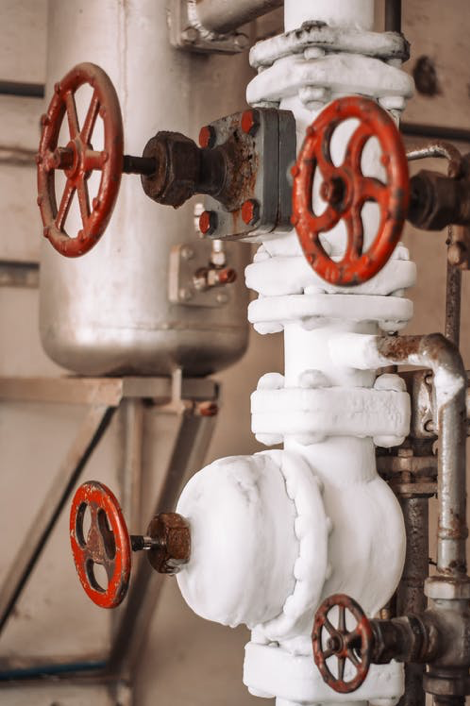
(Source)
The main reasons why fire sprinkler systems in a building fail are due to the failure of the control valves and drains in the valve rooms. Therefore, it is necessary to perform proper tests for a “foolproof” fire safety system.
Two Types of Valves in a Valve Room
- Indicating Valves
These valves are visible to anyone and suggest some things about the fire sprinkler systems. They tell if a valve is shut or open. If a valve is closed, then the water flow is restricted beyond that part of the valve. Hence, water discharge may not occur through those pipes during a fire emergency. And spotting these valves and then turning them on becomes easy.
- Non-indicating valve
They are in a valve assembly that sticks with the water supply shafts underground.
Fire Pumps And Valve Rooms: Conclusion
New York’s F2M Fire & Drafting Designs Inc. design fire sprinkler and fire suppression systems. The experts at F2M will create a custom fire protection system for any building, and deliver up to code blueprints and schematics. they work in all 50 states in the USA.
Give them a call at (718) 928-3009 or email at info@f2mfadds.com.
All About Building Fire Safety
Learn here all about building fire safety. When you study most of the fire incidents, you find they mostly occur in homes. Therefore, a properly designed fire protection system can significantly decrease financial and human loss. It not only prevents the overall death count but also minimizes the efforts of the fire department to put out a fire. Furthermore, taking proper fire safety measures for a building will also prevent smoke. As a result, it keeps both the residents and fire department officials away from harm.
Basic Principles of Fire Safety
The basic values of fire safety include detection, alarm, and suppression. These are the cardinal rules to abide by when preparing a building for fire security. If a building’s design does not adhere to these principles, then it is vulnerable to collateral damage by fire.
Thus, building fire safety is one of the essential aspects of interior and exterior design. Any discrepancies in fire safety can ultimately cost the lives of hundreds. Moreover, it can also be a huge blow to investors, causing them to lose thousands of dollars.
Building Codes
Leading authorities on fire safety invented building codes to help prevent deaths from fire. Their main aim was to make buildings withstand fires long enough for residents to exit safely. The main code is the Life safety code; it dictates the minimum level of requirements for fire safety in buildings and structures. It includes means of egress, fire alarm system, and type and location of fire smoke detection equipment.
The Role of Interior Designers
Interior designers often use the building codes as a reference when fulfilling fire safety requirements. Interior designers have to rely very heavily on building code requirements. They keep the codes in mind at all times. Whether they are selecting the fabric for a commercial building or even checking the floor for the number of emergency exits, building codes are crucial.
Interior designers have to respect the fire safety codes, as any violation of the code can lead them to trouble. Before they can carry out a project, they need to ensure that the design meets all the applicable codes. Compliance with the codes helps keep the construction and building process smooth and free of accidents.
Common Fire Safety Objectives
The most common fire safety objectives are to protect life, property, and the continuity of operation. When it comes to the protection of the structure, the materials of the building matter the most. They affect how long the structure remains erect under fire. The columns of the building are the most vital elements of a property. Then come the girders, beams, and floor slabs.
You will note that most builders construct large buildings with reinforced concrete or protection steel. Even though steel does not burn, it is vulnerable to losing its structural strength under high temperatures. Hence, it is likely to sag and lose its shape under certain extreme temperatures. In terms of fire resistance, concrete structures stand out as the best amongst all.
Building Features that Offer Fire Protection
Certain structural components and installations help enhance the fire security in a building. These involve fire barriers, firewalls, areas of refuge, horizontal exits, fire extinguishers, sprinklers, and more.
Fire Barriers
To prevent the quick spread of fire, constructors can divide the areas of a building into compartments, which can then include the enveloping of a fire barrier. Building makers create them for occupancy separations between different building functions. They help create a barrier to places in a building that are most vulnerable to a fire outbreak.
Firewalls
You can also refer to firewalls as occupancy separations. Every space or room in a specific structure needs to have dividing firewalls. They offer continuous protection from the foundation of the building to the roof, including each exterior wall.
Additionally, they have structural properties that allow one side of the wall to stay upright even if the opposite side fails. Good firewalls need to withstand fires for about three to five hours. However, the presence of fire sprinklers can help reduce the amount of time the wall needs to be rated for.
Areas of Refuge
Areas of refuge are incredibly helpful in high towering buildings in which the people find it difficult to evacuate. They allow distressed people to wait in a safe space until rescue arrives. Their usual location is near a stairway, and these spaces remain free and clear of smoke and fire. Apart from fire, excessive smoke can also be fatal for an individual.
Fire Sprinklers
Fire sprinklers are crucial installations for fire-prevention. They can single-handedly extinguish a fire outbreak in just a matter of minutes. Sprinklers are essential tools that contribute greatly to fire suppression, which means that they keep the fire from getting out of control. A complete fire extinguisher system consists of a network of pipes at the ceiling level. As soon as they detect smoke or certain temperatures, they become highly active and begin to sprinkle water.
Building Fire Safety: To Conclude
If you require design & consultation services for a fire sprinkler system, look no further. At F2M we provide you with over 20 years of fire sprinkler system design services.
Visit our website for more information, or call us at (718) 928-3009.
Types of Fire Protection for Commercial Buildings
There are many types of different fire protection systems for commercial buildings. For starters, fire protection systems for commercial buildings differ from that of residential buildings. The primary reason for installing a fire protection system in a commercial building is to secure human lives and reduce the potential risks of damage to property in case of fire emergencies.
When commercial buildings have a reliable fire protection system, the owner and occupants/ workers feel confident and safe. This implies a responsible and secure workplace for conducting business and other commercial activities.
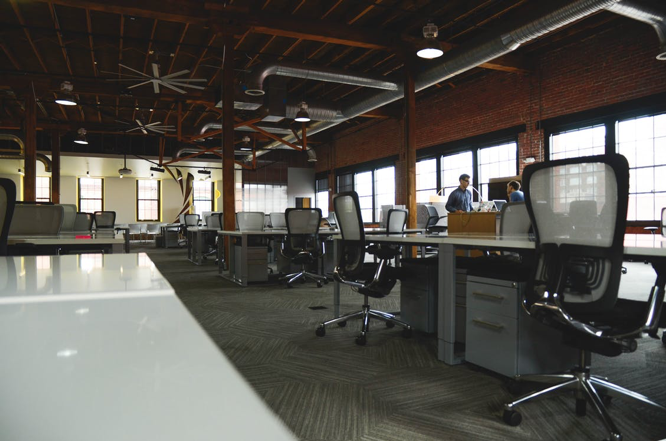
(Source)
But what are the “various” fire protection options for commercial buildings? Below, we will discuss some active and passive types of fire protection systems.
Different Types of Active-Fire Protection for Commercial Buildings
Fire Sprinkler Systems
Fire Sprinkler Systems consist of numerous sprinkler heads connecting to a series of pipes. The pipes in fire sprinkler systems have either electronic (automatic) or manual valve control. A pressurized water discharge through the sprinkler head(s) occurs after the activation of the fire alarm.
Every sprinkler head can discharge the water from the pipe simultaneously. A single sprinkler head may also act independently, regardless of all the sprinkler heads releasing water at once. Three different types of fire sprinkler pipe systems:
- Wet pipe; this fire sprinkler system is capable of holding water in the pipes at all times. This type of fire sprinkler system is highly suitable for warm places that are not under the influence of icy weather.
- Dry pipe; unlike a wet pipe system, this fire sprinkler system contains compression in the pipes at all times in the form of pressurized air or nitrogen. This is because, in cold and icy places, water freezes in the pipes, which causes a delay in extinguishing fires. Hence, normally when the fire alarm rings upon detecting a fire, pipes release the air, and the sprinkler heads discharge water.
- Deluge System; this fire sprinkler system is extensively adequate for places that comprise highly combustible and flammable materials. The spontaneous fire damage and the risk of losing human lives (workers or staff at the highly fire-hazardous places) are relatively low due to this fire sprinkler system. All of the sprinkler heads discharge water at once when the fire alarm rings. Hence, an instant fire safety measure.
These systems of fire protection are highly popular and are common in a large number of commercial buildings. However, there may be instances when water sprinkler systems might cause more damage than security. In some cases, they may cause significant water damage. Of course, with proper training and installation of manual alarms and switches, irreversible water damage is avoidable.
Foam Water Sprinkler System
Sometimes, a fire sprinkler system may contain water mixed with a concentrate of foam. This instantly douses fumes and smokes resulting from the combustion of materials such as flammable gases or alcohol. These materials combust after exposure to a few minor sparks. Nevertheless, foam water suppresses flammable solvents, reducing the chances of a re-flash.
Fire Extinguishers and Blankets
Extinguishers and fire blankets are an essential part of an active fire protection system in a commercial building. Moreover, certain offices and workplaces demand proper training and practice of their employees and staff against fire hazards.
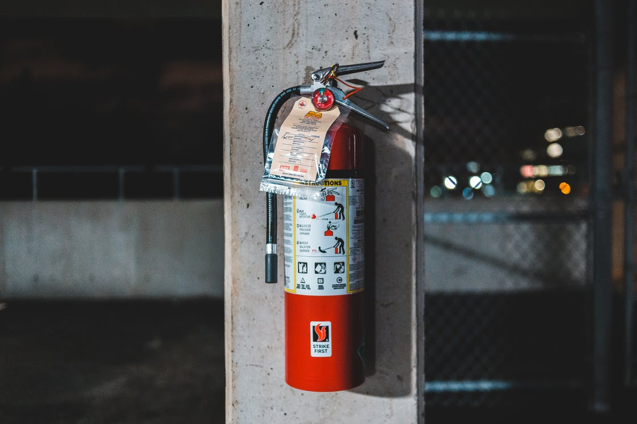
(Source)
The use of a fire extinguisher at the origin of the fire restricts the spread. Fire blankets cover the area of the fire, which restricts air and keeps it from blazing.
Passive Fire Protection Systems for Commercial Buildings
Fire Resistant Walls, Glass, Doors, Windows
Fire-resistant doors are aluminum coated. They have standard smoke-stopping hardware and can withstand heat for up to 60 minutes. Similarly, a few glass-windows or glass-doors are fire-resistant. They are able to withstand heat and fire emergency features for up to two hours.
Conclusion: Consult With A Professional Fire Protection Company
The task of creating, designing, and installing fire protection systems falls on the engineers and architects respectively in the industries. Moreover, their expertise and knowledge can also help you make excellent decisions for the fire safety of your commercial building.
At F2M Fire & Drafting Designs Inc., our team of trained professionals have extensive knowledge about fire protection systems. Our engineers and technicians will help you design a custom fire sprinkler system for your commercial building right here in New York City, the Tri State area, or in another state in the US.
For a free consultation, call us at (718) 928-3009 or email us at info@f2mfadds.com.
References
- https://united-fire.com/a-guide-to-the-different-types-of-commercial-fire-protection-systems-available-today/
- https://www.slideshare.net/snehacoutinho/fire-fighting-in-commercial-buildings-services
- https://www.netatmo.com/en-us/guides/security/fire/faq/fire-protection
- https://en.wikipedia.org/wiki/Active_fire_protection
Fire Sprinkler System Design in New York: Things You Need to Know
Do you need a fire sprinkler system design in New York? The best protection against fire hazards comes from getting a suitable fire protection system according to your building or space. Fire sprinkler systems are among the most popular fire protection methods. Due to automation in advanced fire sprinkler systems, it is easy to douse and restrict the flames. It keeps the fire from spreading, which saves lives and prevents excessive fire damage to properties.
Potential fire risks keep increasing daily because of the persistent rise in the use of technology. Faulty wiring, excessive heat generation in computing machines, or even flammable products in an office or industry – all these pose a viable fire hazard. Therefore, they require the implementation of strict safety measures.
Below, we will discuss how fire sprinkler systems work.
How a Fire Sprinkler System Works
With an adequate distribution of sprinkler heads over the area, when heat or smoke sensors trigger the alarm, the fire sprinkler system activates. The glass bulb in a sprinkler head bursts due to heat exposure and water flows from the sprinkler heads.
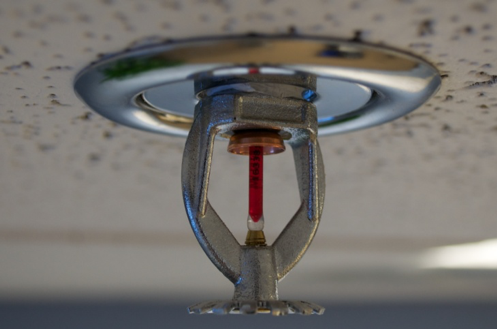
(Source)
Water comes from a series of pipes that are fixed into the building. These pipes connect to a fire pump that maintains a standard pressure of water as sprinkler heads release water to douse the fires.
Further, control valves and drain systems provide a wider control over the fire sprinkler system. It becomes easy to detect if a valve is open or shut, which then leads to the rectification. These control valves and drains are in a “valve room” that is always under maintenance and thoroughly ready for fire emergencies.
Fire Sprinkler System Design in New York: Things to Remember
There are a few vital key points that will help you start designing a fire sprinkler system in New York or any other place in the US.
Purpose of Water Supply
Automatic fire sprinkler systems heavily rely on a consistent supply of water. The source of water supply for the sprinkler system is, therefore, of paramount importance. A municipal water supply is a feasible option to connect your fire sprinkler pipes too, for example, fire hydrants.
Other than the municipal water supply, you can rely on a few other sources to supply water to your fire sprinkler system. These other sources can be:
- Gravity Tanks
- Water Towers
- Underground Water Tanks
- Ponds, lakes, rivers, or even reservoirs
These static sources of water supply will require more pressure for water extraction (underground water tank). Therefore, they consume more power.
Rules and Regulations
The National Fire Protection Association (NFPA) of the US imposes certain rules and regulations. They affect various aspects of a fire sprinkler system. An example of the codes and rules of the NFPA is the NFPA13 rule. Under this rule, fire sprinkler system installation in a residential space must comply with specific guidelines. You can find a list of other standards and codes here.
Types of Fire Sprinkler Systems: Environment of the Building
The type of fire sprinkler system you choose for your building is essential as well. For example, if your building is in a warm climate or a heated place, the wet pipe system is the best. This system has water in the pipes all the time. Once the alarm rings, they release water to douse the fires.
For unheated buildings in colder regions, a dry pipe system is best. These pipes contain air or nitrogen in them. When the fire alarm rings, air releases from the pipe, and water begins flowing through the sprinkler heads. Since the pipes contain air, you don’t face problems with water freezing in the pipes.
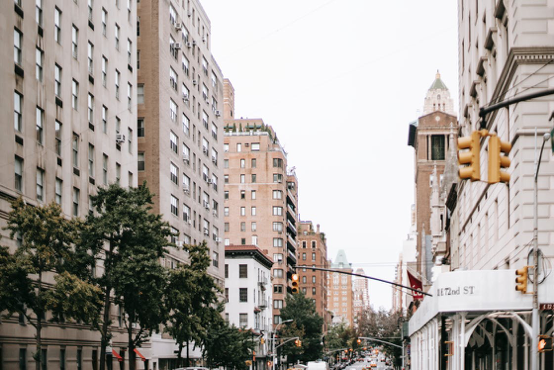
(Source)
In places holding highly combustible materials, an effective fire sprinkler system is necessary. This system turns on all the sprinkler heads when a fire emergency occurs. This way, all the sprinkler heads release water, dousing the fire as quickly as possible to prevent excessive fire damage. It is essential for places with flammable material and processes.
Calculations
Before designing a fire sprinkler system, certain calculations are necessary. These calculations determine the water flow rate, the discharge rate, the coverage area of every sprinkler head, etc. It allows for an effective design of the fire sprinkler system in a building, enabling an operational fire safety system.
Fire Sprinkler System Design in New York: Consult A Design Professional
It is critical to get in touch with qualified engineers and architects of fire sprinkler systems if you are designing one for your building in New York. At F2M Fire & Drafting Designs Inc., we are certified professionals who can guide your fire sprinkler system design process from start to finish.
Call us at (718) 928-3009 for a free consultation & quote. You can also email us at info@f2mfadds.com.
Sources:
- https://sprinklerage.com/fire-sprinkler-design/
- https://www.qrfs.com/blog/374-the-elements-of-fire-sprinkler-system-design/#water
- https://www.nfpa.org/Codes-and-Standards/All-Codes-and-Standards/List-of-Codes-and-Standards
- https://www.nfpa.org/Public-Education
- https://www.designingbuildings.co.uk/wiki/Overview_of_automatic_sprinkler_system_design_and_operation
- https://blog.societyinsurance.com/7-tips-ensure-building-sprinkler-system-will-protect/
Fire Sprinkler System Design
Fire sprinkler systems serve a great purpose of preventing fire damage in commercial buildings and households. Different types of fire sprinkler system design are available, each of which has varying working techniques. Choosing the best fire sprinkler system means designing a system of fire suppression that suits your needs and covers every angle of safety in terms of fire hazards and building code.
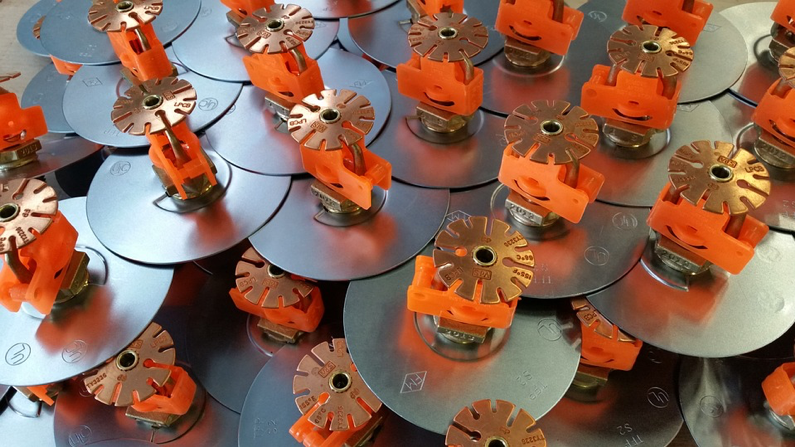
(Source)
The potential benefits of installing and maintaining a fire sprinkler design are various; some are below.
- Safety from physical injuries
- Corporate security
- Security of property from fire damages
- Confident workers in fire hazardous places
- A good reputation in terms of responsibilities as a landlord and industrial or commercial building owner
However, designing a fire sprinkler system might not be easy. Therefore, you can contact F2M Fire & Drafting Designs INC. through our website to benefit from quality services of fire system designs. Here are a few things to keep in mind when designing a fire sprinkler system.
Main Types of Fire Sprinkler Systems
Dry Pipe
This type of fire system operates slowly and needs thorough maintenance. For spaces such as warehouses, garages, and any other unheated places or spaces, “dry pipe” fire systems are the best. They have compressed air inside the pipes. Using numerous supply systems such as nitrogen bottles, electronic air compressors, this system lets out the air upon activation. This leads to a pressurized release of water, which extinguishes the fire.
Wet Pipe
Easy to install and maintain, this system of fire sprinklers contains water in the pipes at all times. Contrary to popular belief, water release can be simultaneous. This is the most common type of fire system in heated spaces.
Deluge
This type of fire sprinkler system has applications like places containing highly combustible and flammable components. These spaces may serve storage or operational purposes. With all sprinkler heads open at all times, a signal from an individual device such as a heat sensor or a smoke sensor triggers the release of water.
Fire Sprinkler System Design: Water Supply
Fire sprinkler systems heavily rely on the quality and quantity of water supply. Water is the main component for extinguishing and restricting the spread of fire. NFPA requires you to have an automatic water supply in the fire sprinkler system.
This ensures an uninterrupted supply of water and with no human interference. The need for professional engineers and designers is paramount. The sources for water supply can vary and include reservoirs, pools, water towers, ponds, or gravity tanks. Each type of water supply requires proper calculations pertaining to the capacity and the flow. These calculations determine how much water can flow from the source and the pressure it can generate.
Thus, it helps to accurately select and place pipes to ensure a safe and operable fire sprinkler system design. Calculations relate to flow test, for which the formula is as such:
Q=29.83 x C x d2 x
The foundation of fire sprinkler design lies in the water supply. Thus, a careful analysis of this factor is a must.
Buildings that Require Fire Sprinkler Systems
The next step in designing a fire sprinkler system is to know the building type. Whether it is a commercial, industrial, or residential building will help to determine the best fire sprinkler design.
The designers of the fire sprinkler system will cooperate alongside engineers and architects to draft out a fire sprinkler design. The final blueprint will be in accordance with NFPA rules and codes. The most common type of NFPA standard in use for designing a fire sprinkler system is the NFPA13.
Other Factors
Occupancy hazard is another factor. This helps measure the level of hazards that potentially exist. The amount of energy capable of releasing in the case of fires determines how much water is needed. This makes it easier to design the fire system. The products and components present in the building are subject to the term “occupancy hazard.”

(Source)
Further, the area of design also matters. The level and positioning of the building can make it difficult to supply water to all sprinkler heads at once. Therefore, considering the worst-case scenario helps in identifying any potential hindrances that can occur in the operation of the fire sprinkler system.
Call F2M For Your Fire Sprinkler System Design
At F2M Fire & Drafting Designs Inc., we are expert fire sprinkler system designers with over 20 years of experience in the NYC and tri-state area. Visit our website to learn more about our services and see some of our past projects.
F2M Fire & Drafting Designs Inc.
1231 Lafayette Ave, Fl 2
Bronx, New York, 10474
(718) 928-3009
Sources
About F2M Fire & Drafting Designs Inc.
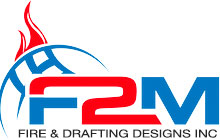 From new construction projects to full-scale retrofitting and renovations, F2M Fire & Drafting Designs Inc. brings 20 years of excellence to all phases of fire sprinkler system design. Owner, Fernandez McKenley, is a highly experienced fire sprinkler & fire protection system designer with over 20 years in the fire sprinkler industry, focusing on design, drafting, and layouts. After years of estimating, designing sprinkler systems and managing projects in the industry, Fernandez became a freelance fire sprinkler system designer.
From new construction projects to full-scale retrofitting and renovations, F2M Fire & Drafting Designs Inc. brings 20 years of excellence to all phases of fire sprinkler system design. Owner, Fernandez McKenley, is a highly experienced fire sprinkler & fire protection system designer with over 20 years in the fire sprinkler industry, focusing on design, drafting, and layouts. After years of estimating, designing sprinkler systems and managing projects in the industry, Fernandez became a freelance fire sprinkler system designer.
Shortly after, he launched F2M Fire & Drafting Designs. He loves customizing his techniques as though he is a part of your in-house team. From new construction projects to full-scale retrofitting and renovations, F2M brings 20 years of excellence to all phases of fire sprinkler system design.
Accurate, Code-Compliant Fire Sprinkler System Designs
It is hard to find a trained, highly-qualified, fire sprinkler system designer. Especially one who can work with budgets of various sizes. F2M will work with you to create the very best designs for your project.
Over 20 Years of Fire Sprinkler System Design Experience
You will hire not only a drafter and designer working with F2M but a consultant who can guide you through the fire sprinkler design process.
A Trusted NYC and NYS MBE-Certified Firm
As one of the few MBE-Certified firms in New York State and nationally, specializing in fire sprinkler designs, you will be able to meet your MBE utilization goal choosing us.
Our Core Values
F2M believes in helping fire protection contractors and engineers achieve their goals with ease.
Quality
Quick, high-quality fire sprinkler designs that meet NFPA standards and regulations.
Efficiency
Accurate and detailed fire sprinkler system designs, keeping your project on schedule and on budget.
Dependability
A professional, dependable partner dedicated to making your job easier and cost-effective from materials to labor.
Why Choose F2M Fire & Drafting Designs?
We’ll take care of your most challenging fire sprinkler system and protection needs.
- Insured MWBE Certified Firm
- Over 20 Years of Experience
- Free Estimates
- NICET Certified
- Expedited Service
- Remote work in the US and within NYS
Our Services
Our drafts and design are based on:
- Hazard classification
- Building size
- Location and use
- Local AHJ requirements
With F2M Fire & Drafting Designs, you’ll receive competitively priced designs, whether for dry, wet, deluge or pre-action fire protection systems.
Hydraulic Calculations
Getting the hydraulic calculations right is critical. The last thing you want is incorrect flows and pressures.
With a working knowledge of the current NFPA standards, codes, and specialty sprinklers (i.e., CMSA and ESFR applications), we will make sure to design your sprinkler system for you to make fast and easy installations.
Standpipe Layout
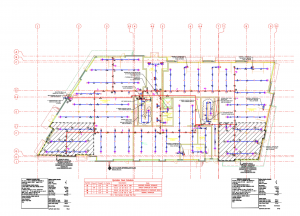
When your fire protection project requires standpipes for firefighting purposes, we can provide you with standpipe layouts that will supply water to fire sprinkler systems and the standpipe systems.
Standpipe Calculations
When a fire occurs, firefighters need access to standpipes with a sufficient flow of water at a particular pressure for an extended time.
Your F2M standpipe calculations will make your contractor joyous knowing their standpipes have the water flow, pressure, and duration needed to handle the job.
Fire Sprinkler Seismic Design
You want to tell your contractor that, in the event of an earthquake, the fire sprinkler system you’ve installed has been designed according to the latest fire codes for the highest level of fire protection during and after an earthquake.
Fire Sprinkler Seismic Calculations and Analysis
F2M will calculate the seismic load a fire sprinkler system will experience during an earthquake. Fire sprinkler designs account for the force your fire sprinkler system may experience shaking back and forth during an earthquake. With our calculations, your fire protection system will be fully equipped for extreme events.
Fire Pump/Valve Room Layout
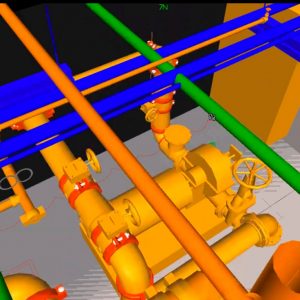 Dedicated to making your life easier, we will create coordinated drawings of the valve/pump room based upon the room structure, size, and other trades. We will resolve conflicts with other MEP trades before, during, and after installation.
Dedicated to making your life easier, we will create coordinated drawings of the valve/pump room based upon the room structure, size, and other trades. We will resolve conflicts with other MEP trades before, during, and after installation.
2D Fire Sprinkler Models
We are experts in 2D fire sprinkler design, a standard within the fire sprinkler design industry.
Building Information Modeling (BIM) Coordination
With BIM, you will receive intelligent 3D modeling that will help you more efficiently plan, design, install, or retrofit buildings for your contractor.
Fire Sprinkler Piping Material Listing
In ensuring you have everything you need for your fire protection project, we provide:
- A list of materials
- Pre-fabrication listing sheets
- And installation drawings with mains and branch line tags
Consult F2M Fire System Design for Your Building Project Today
F2M will be the partner you need while providing you with code-compliant, gold-standard fire sprinkler designs. Contact us today for a free estimate.
